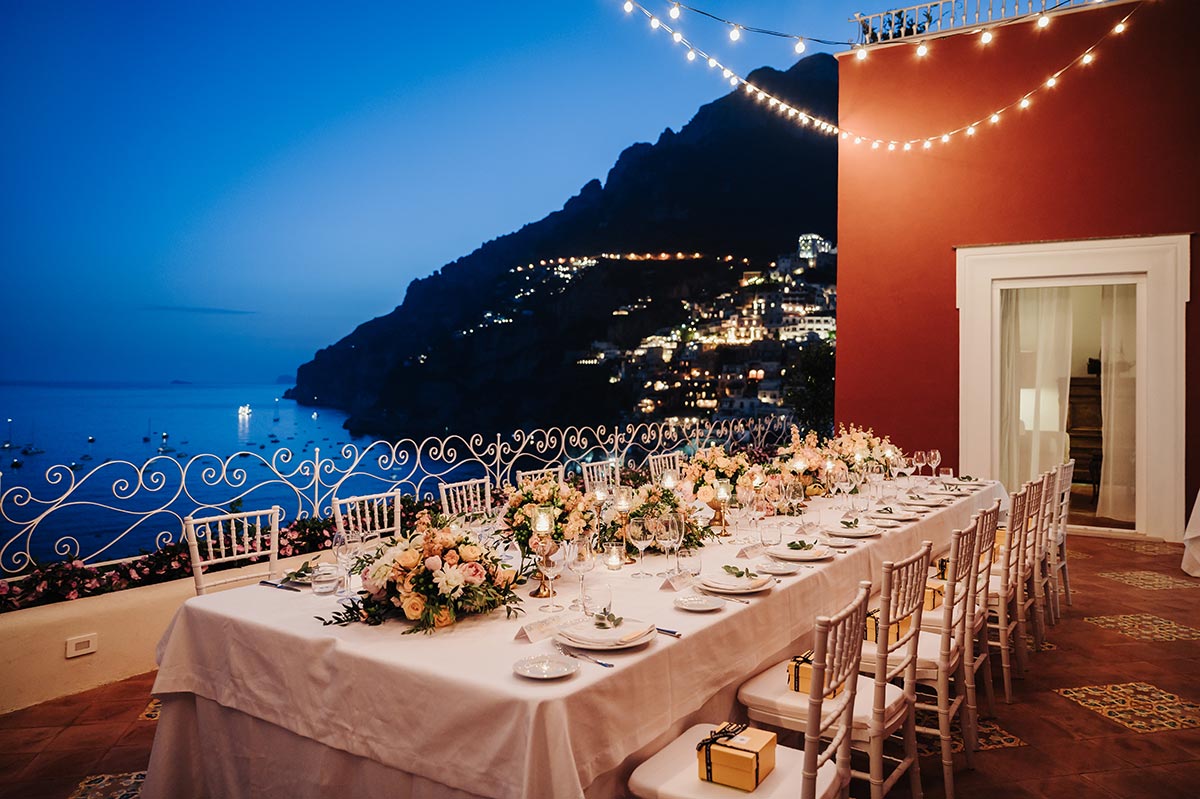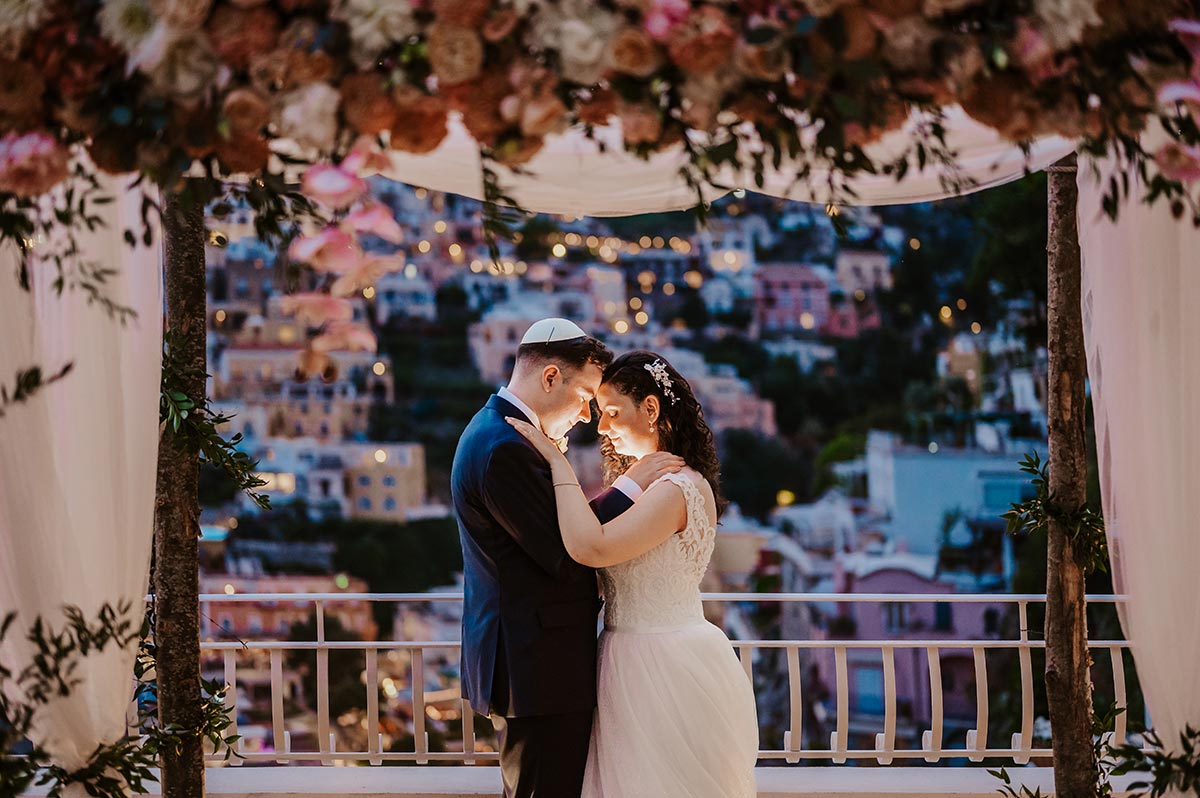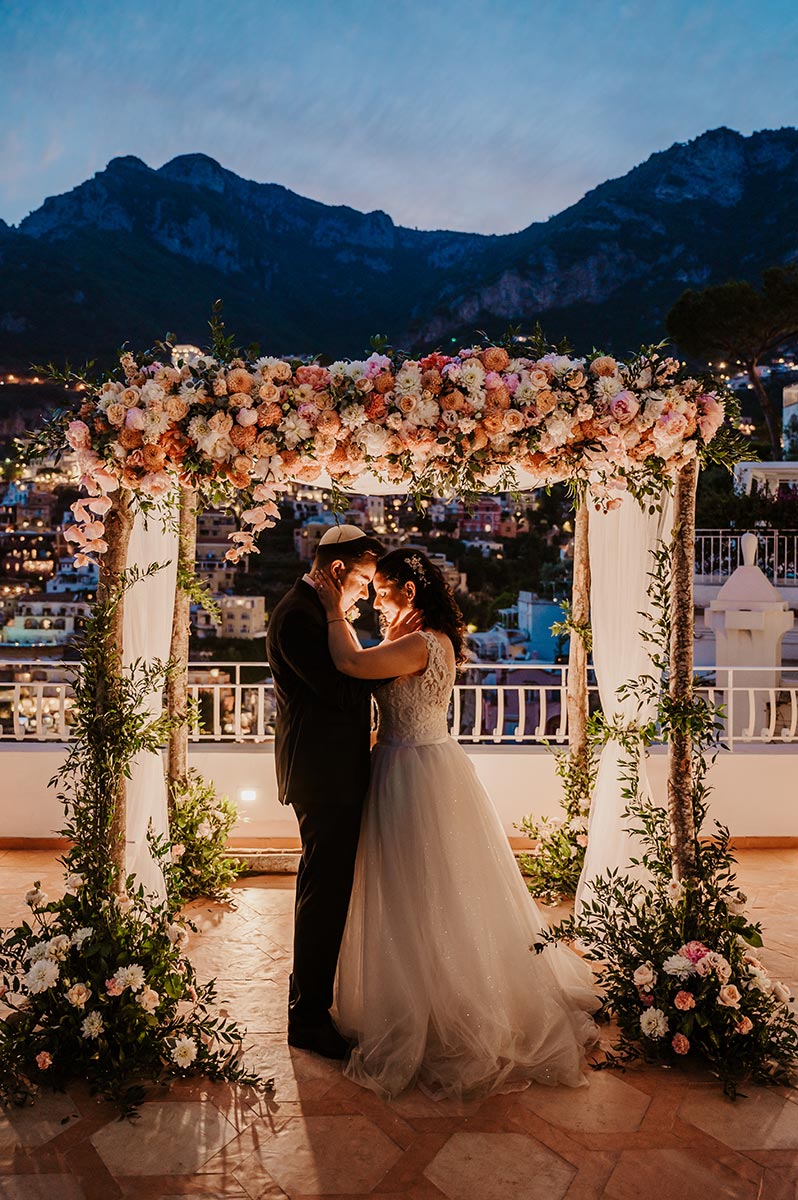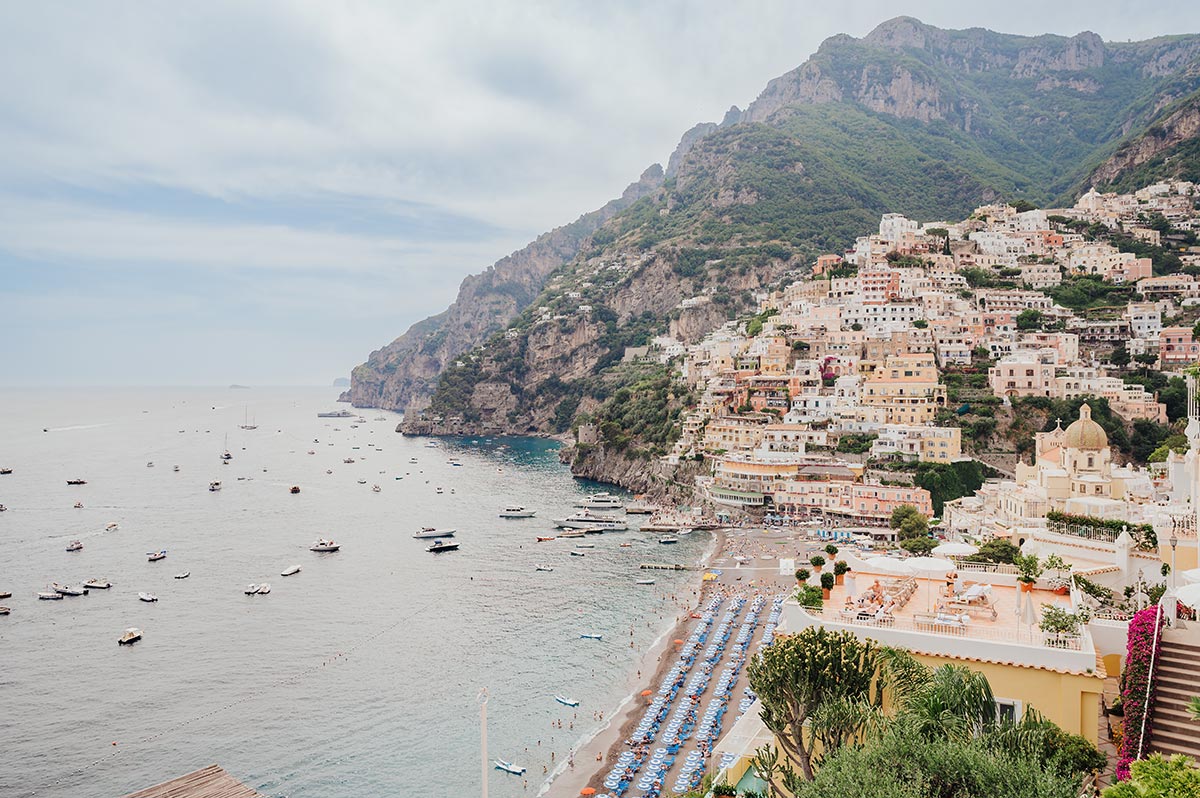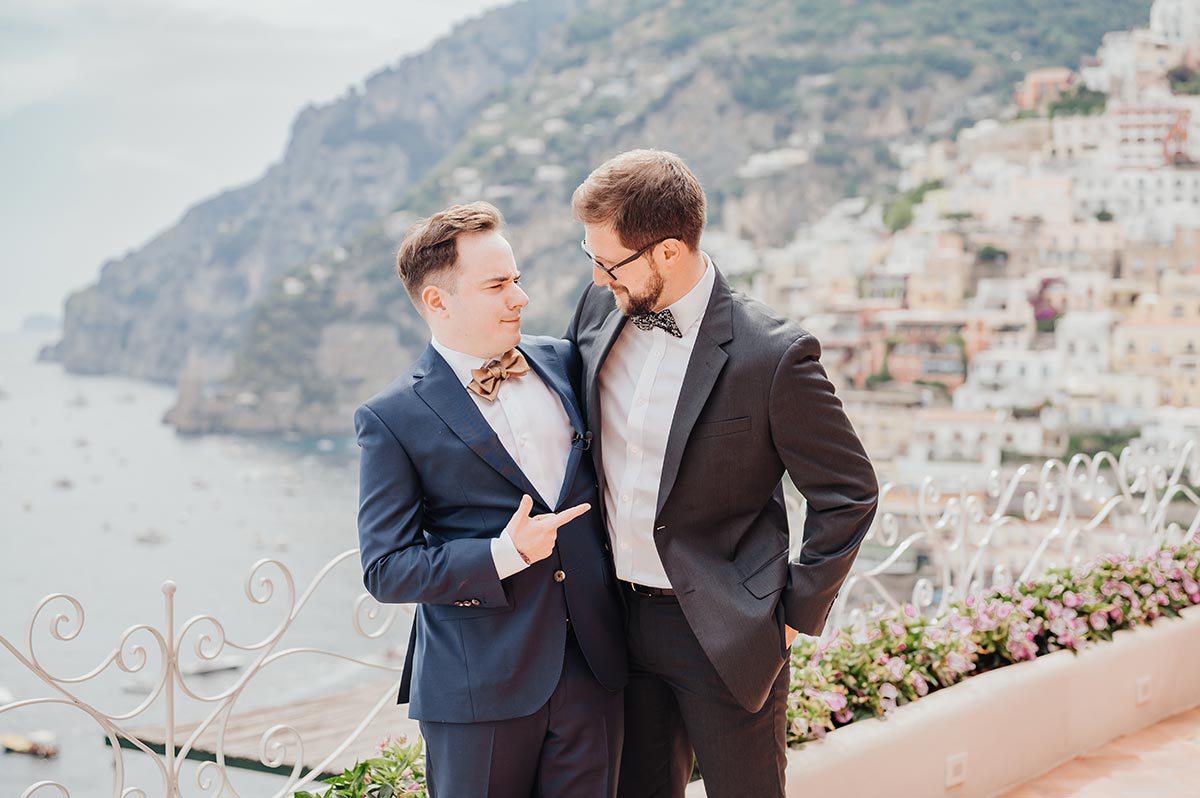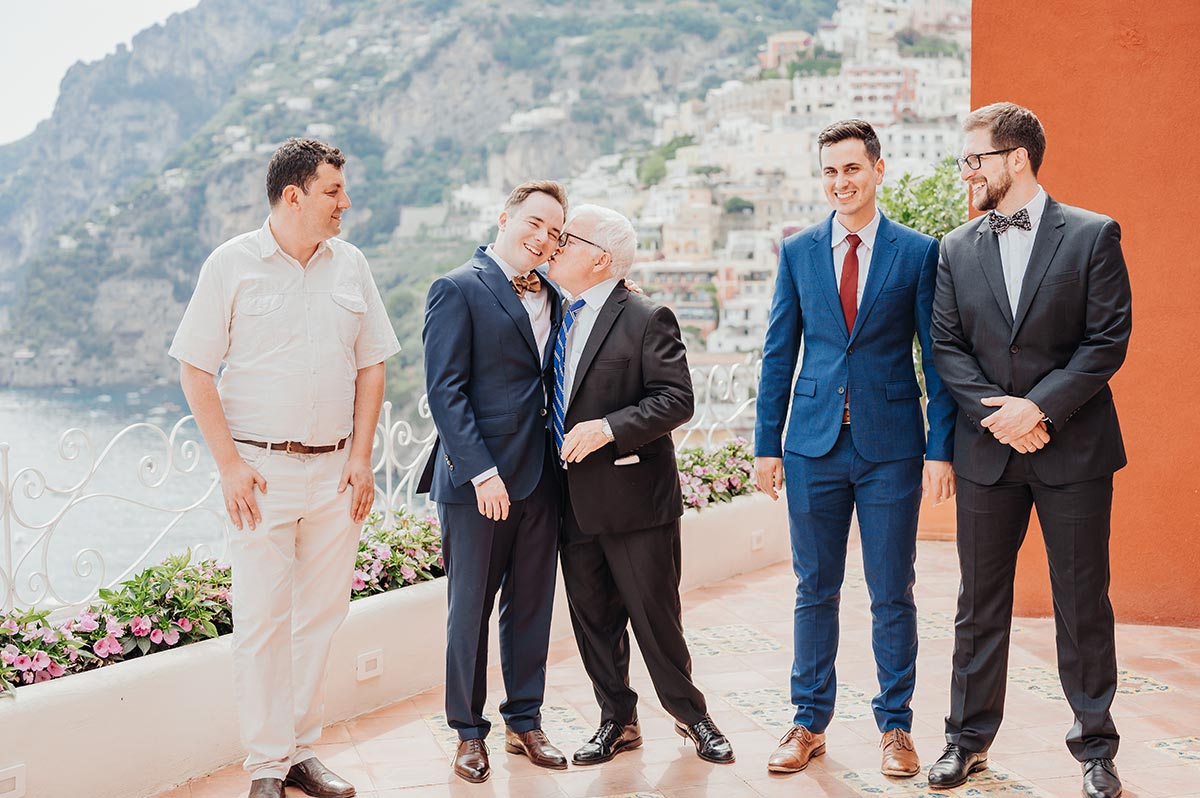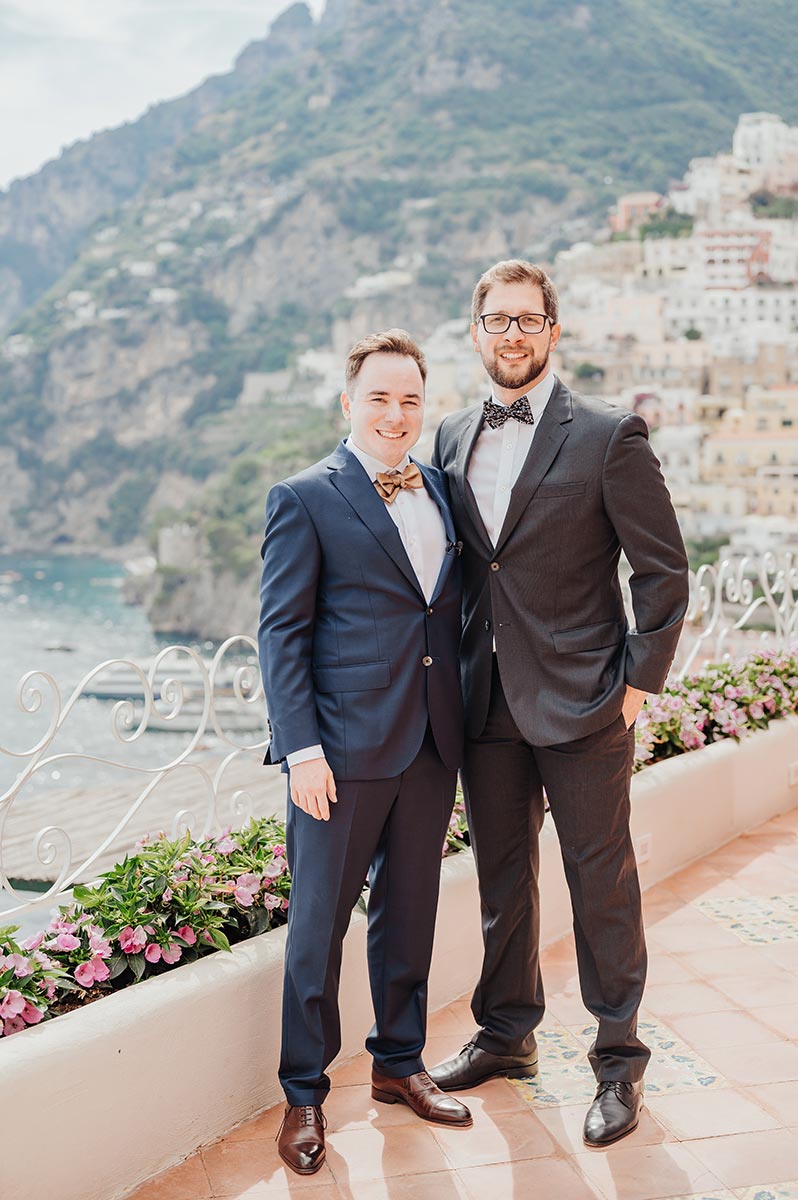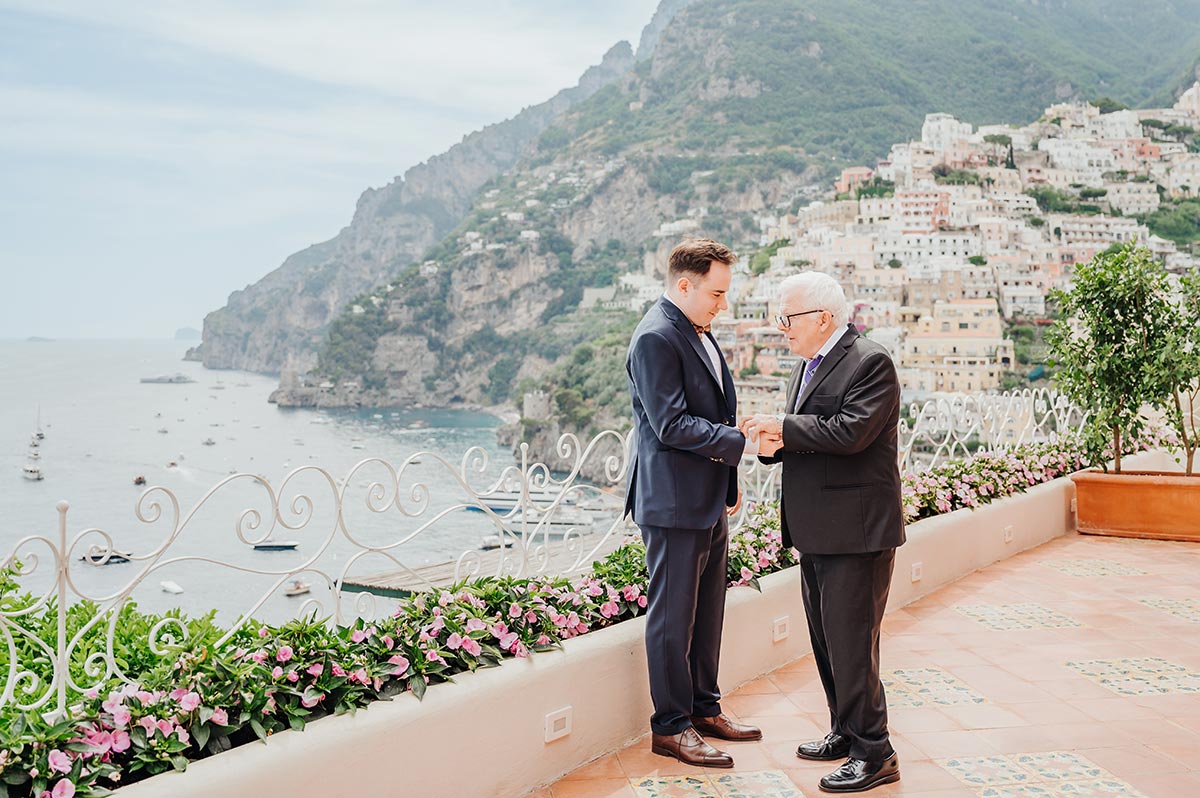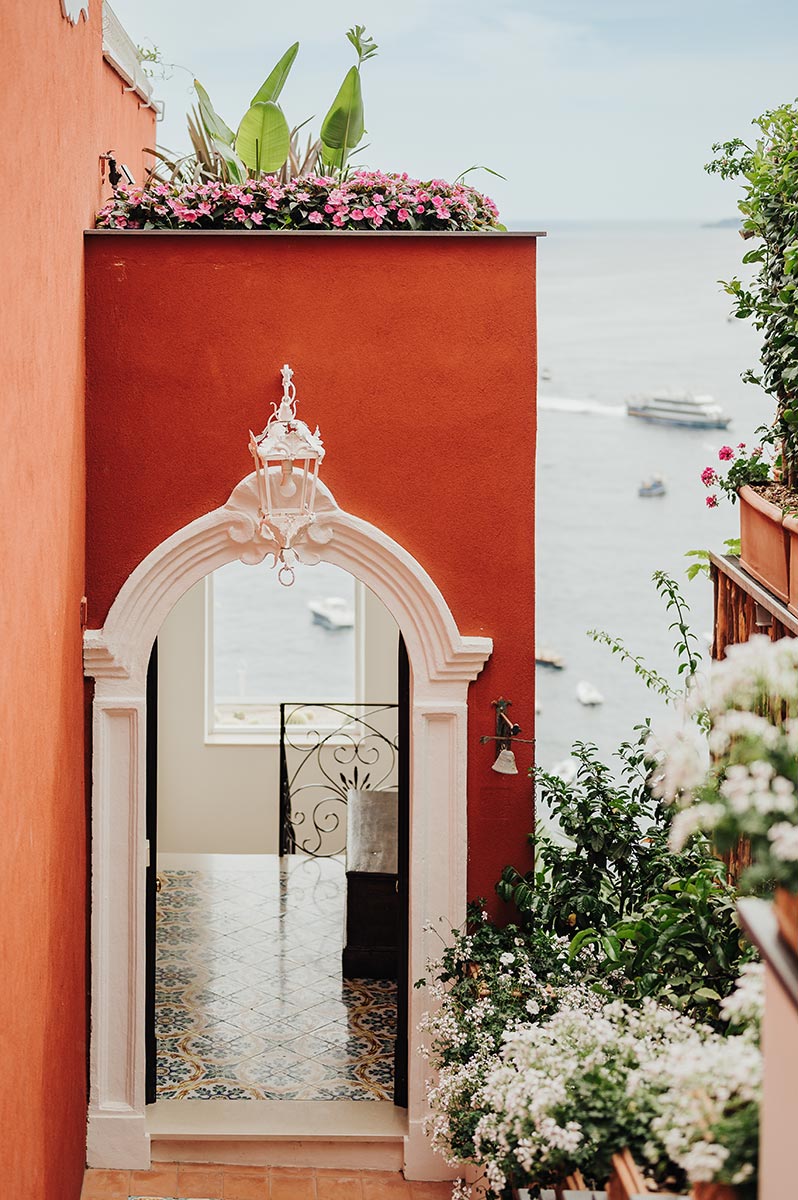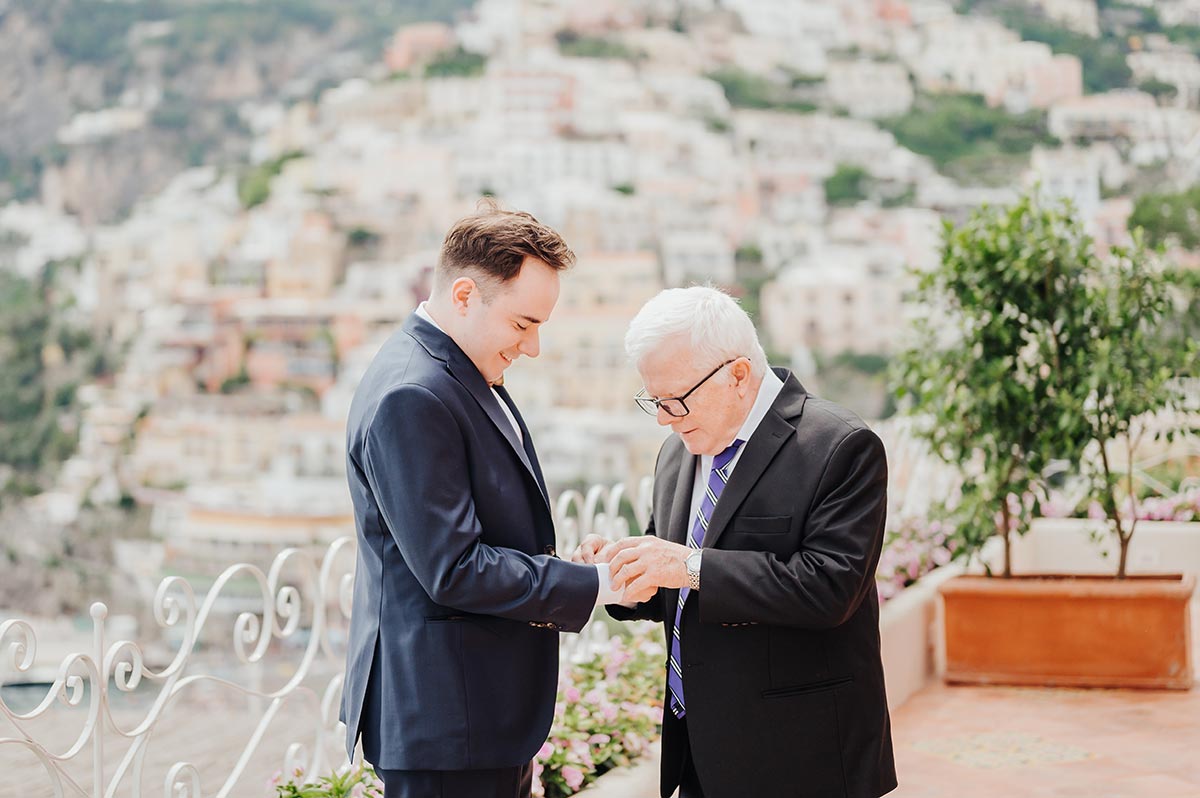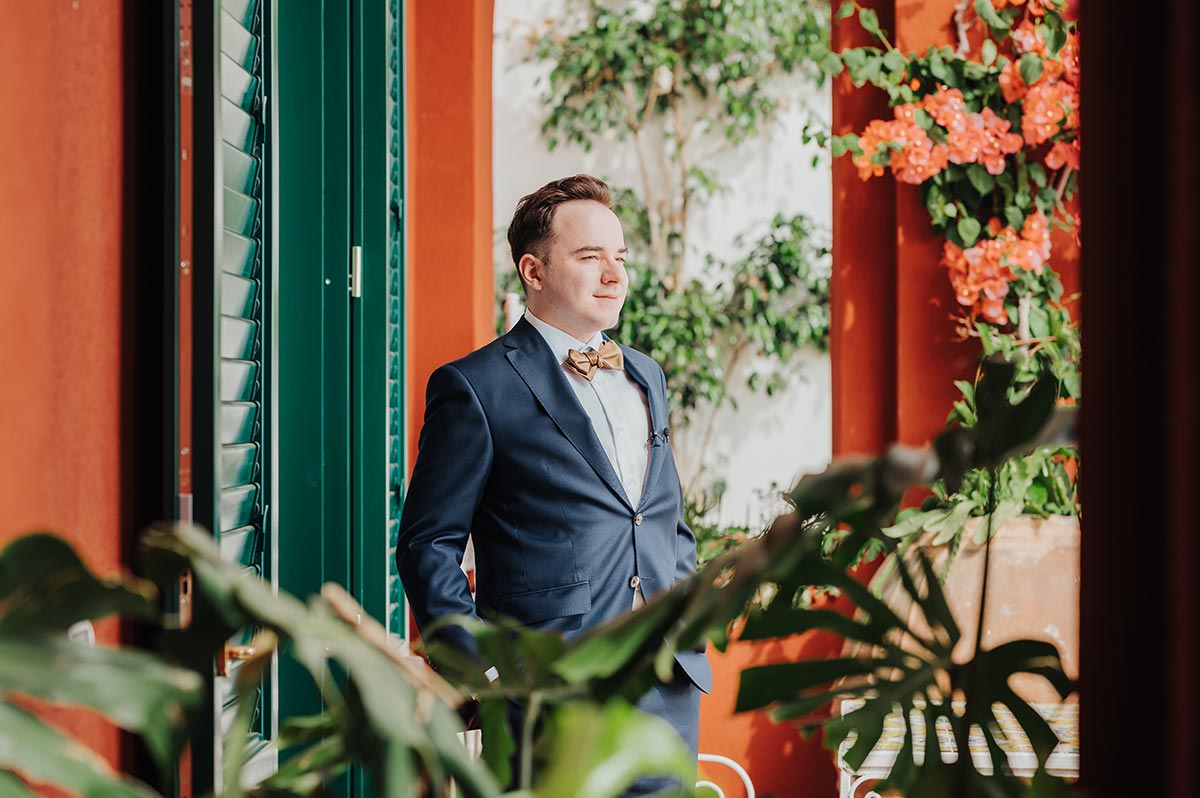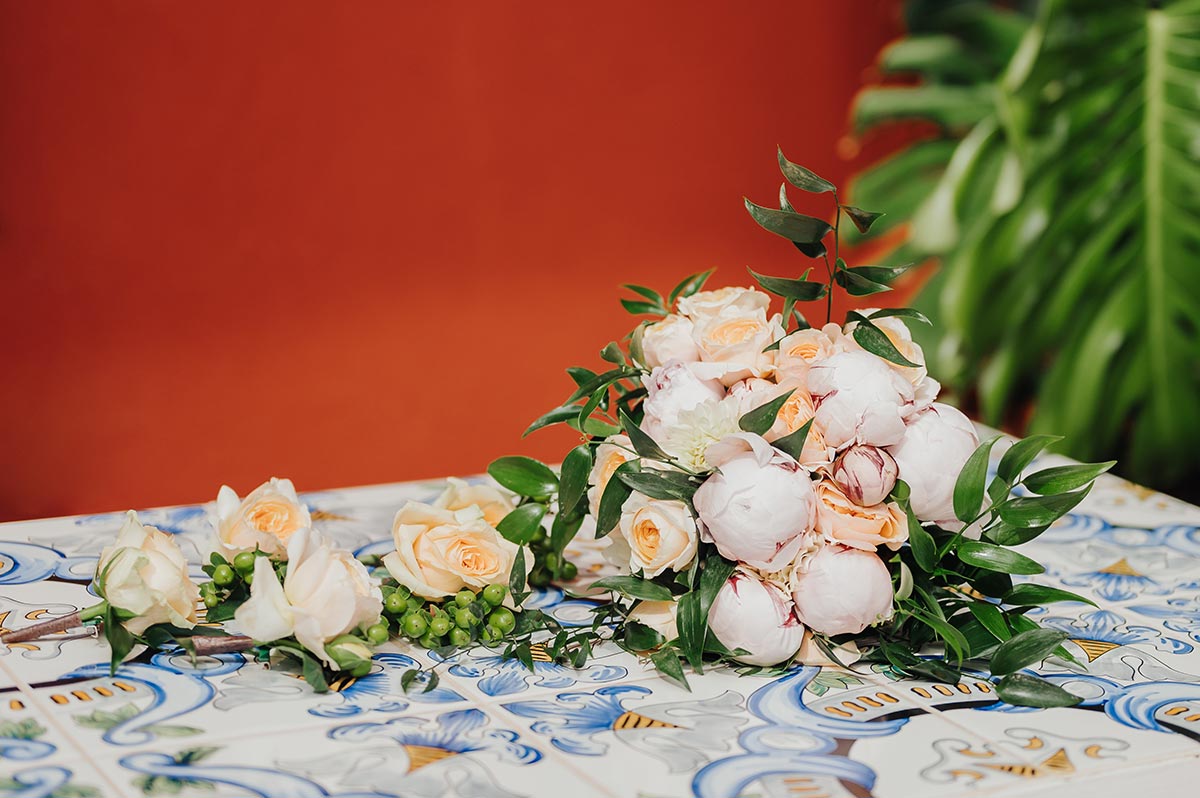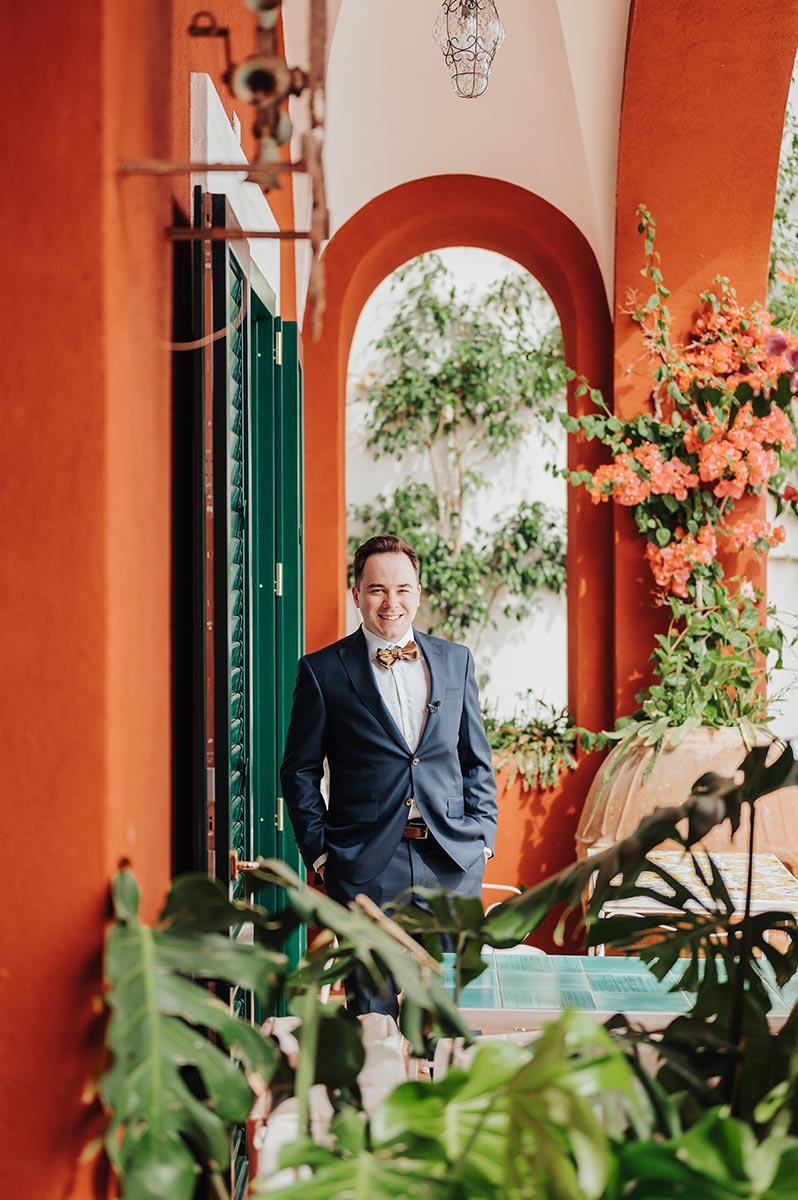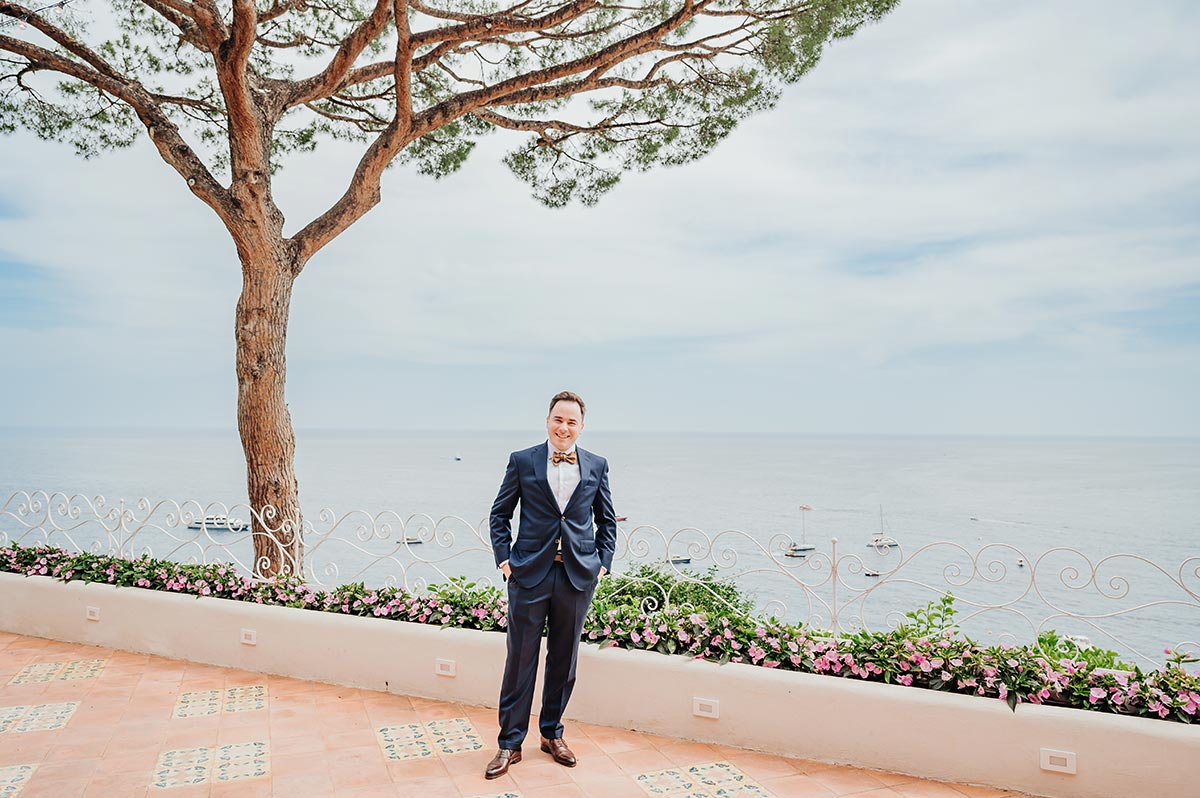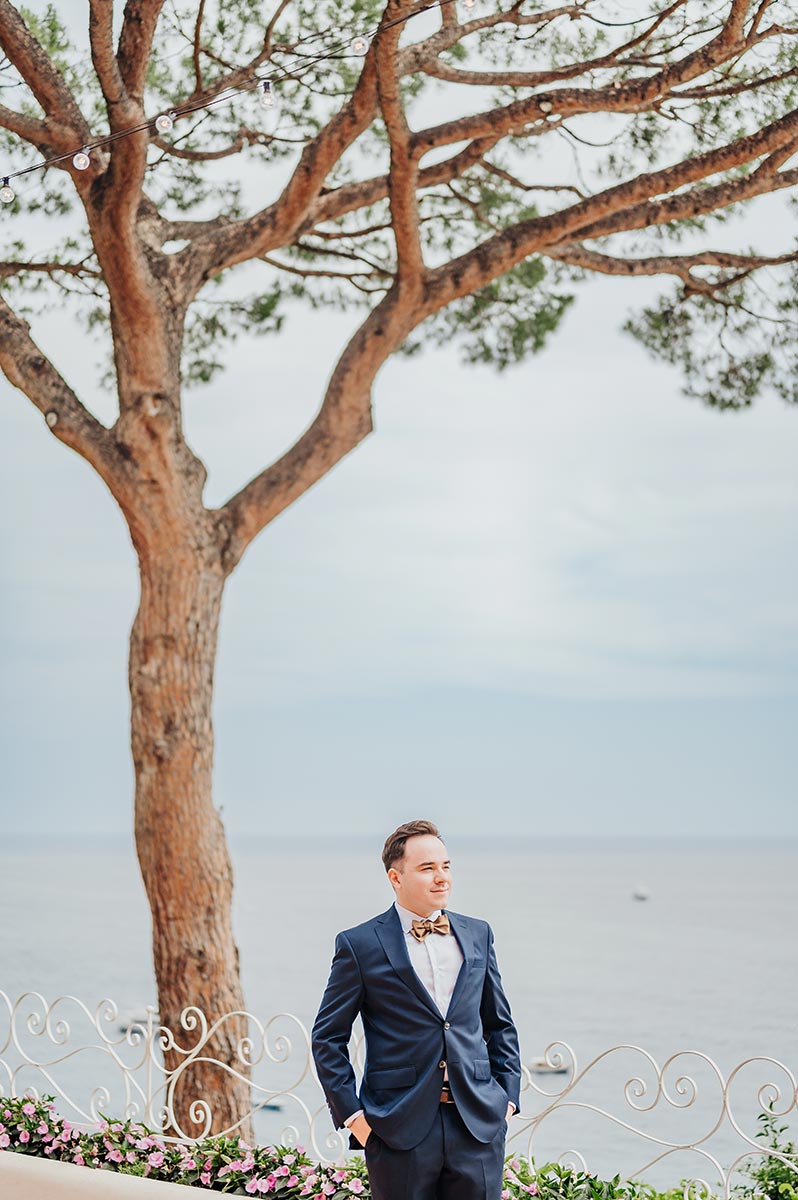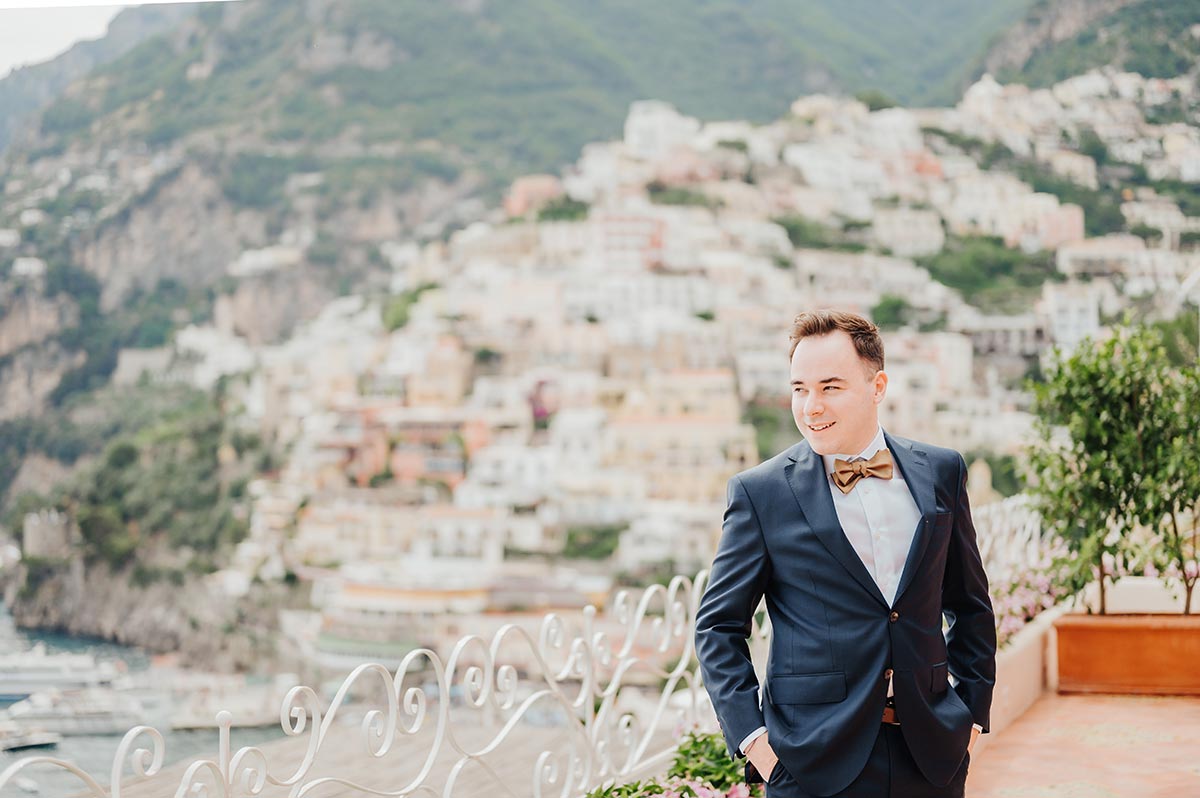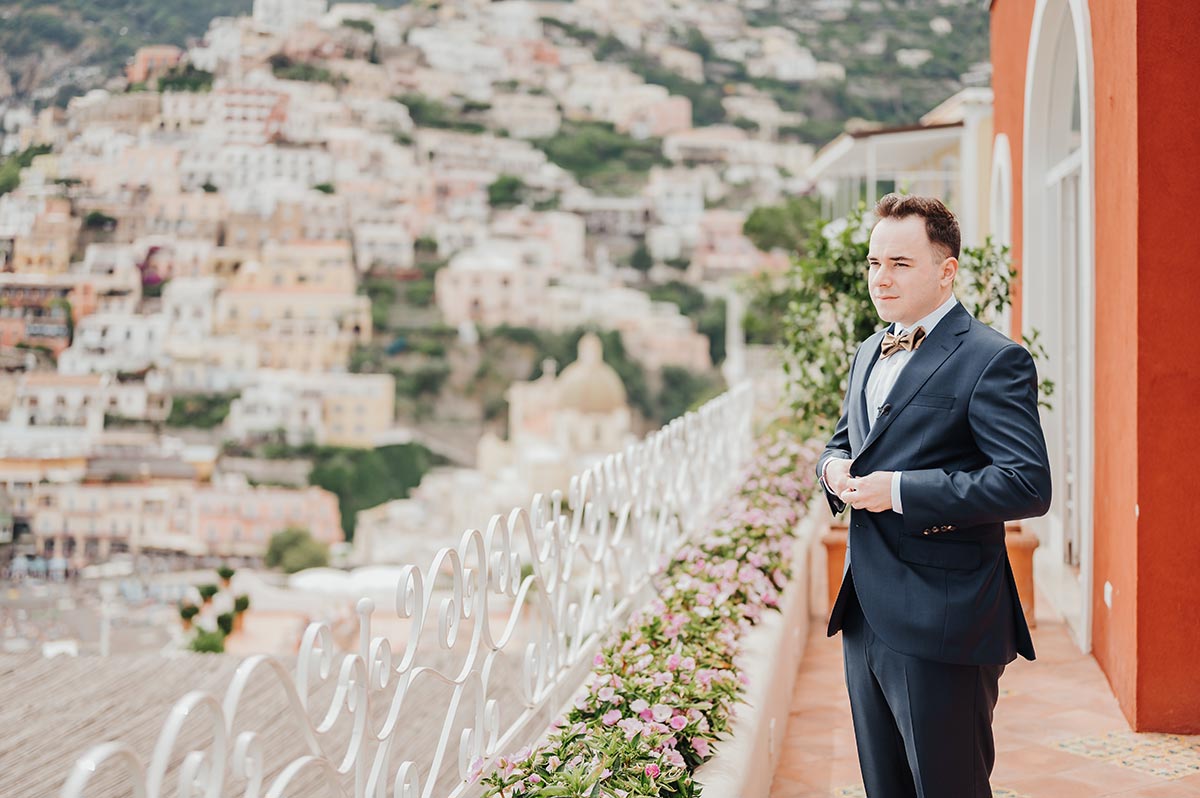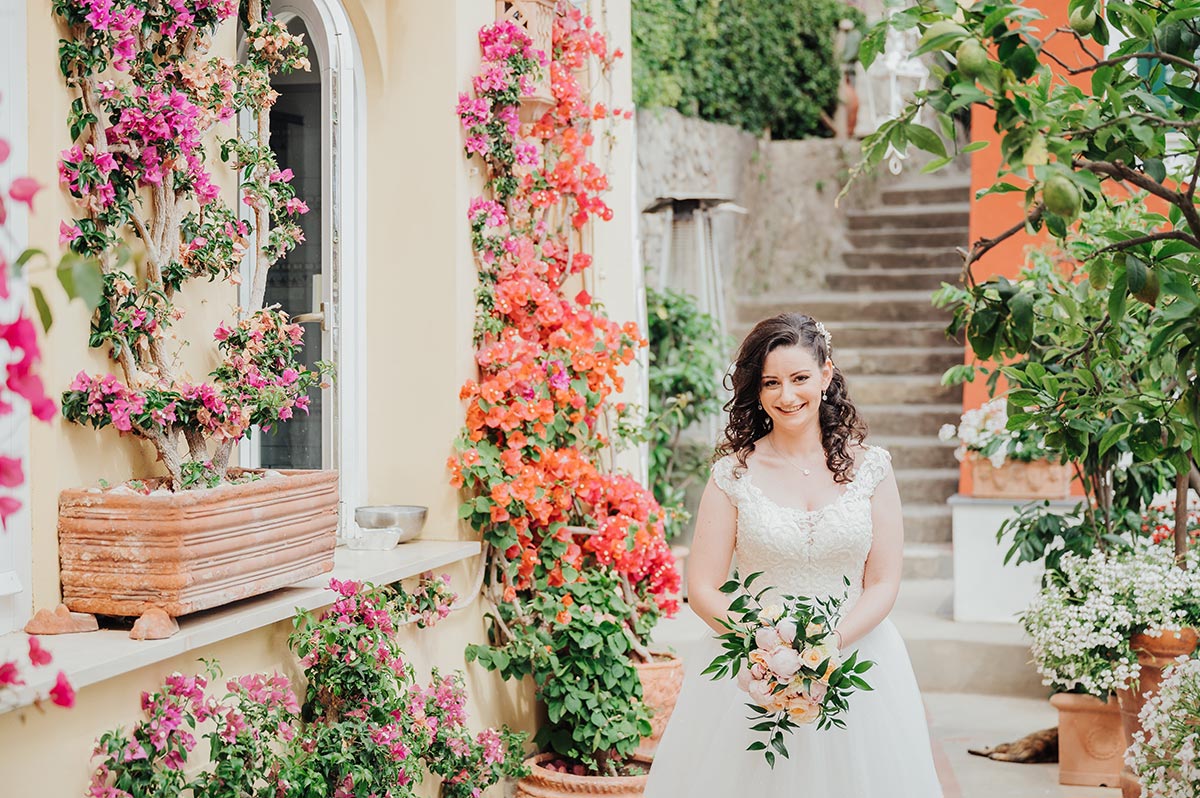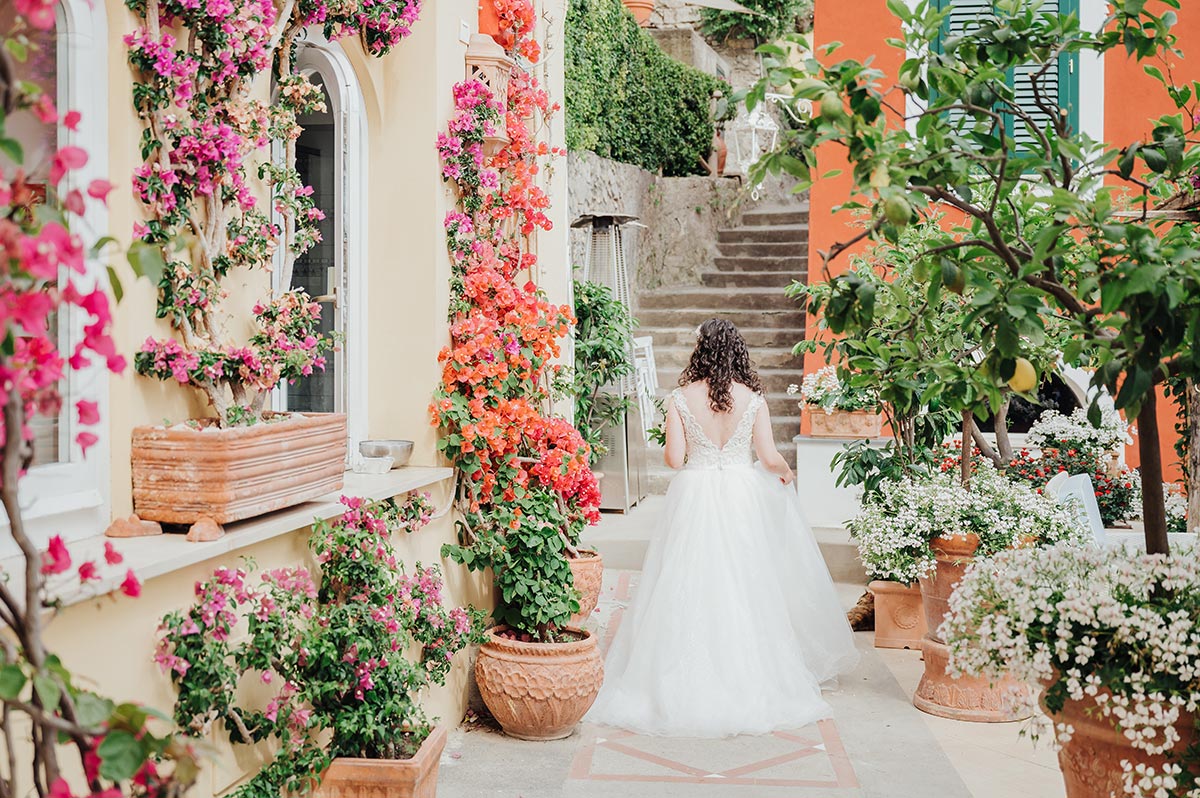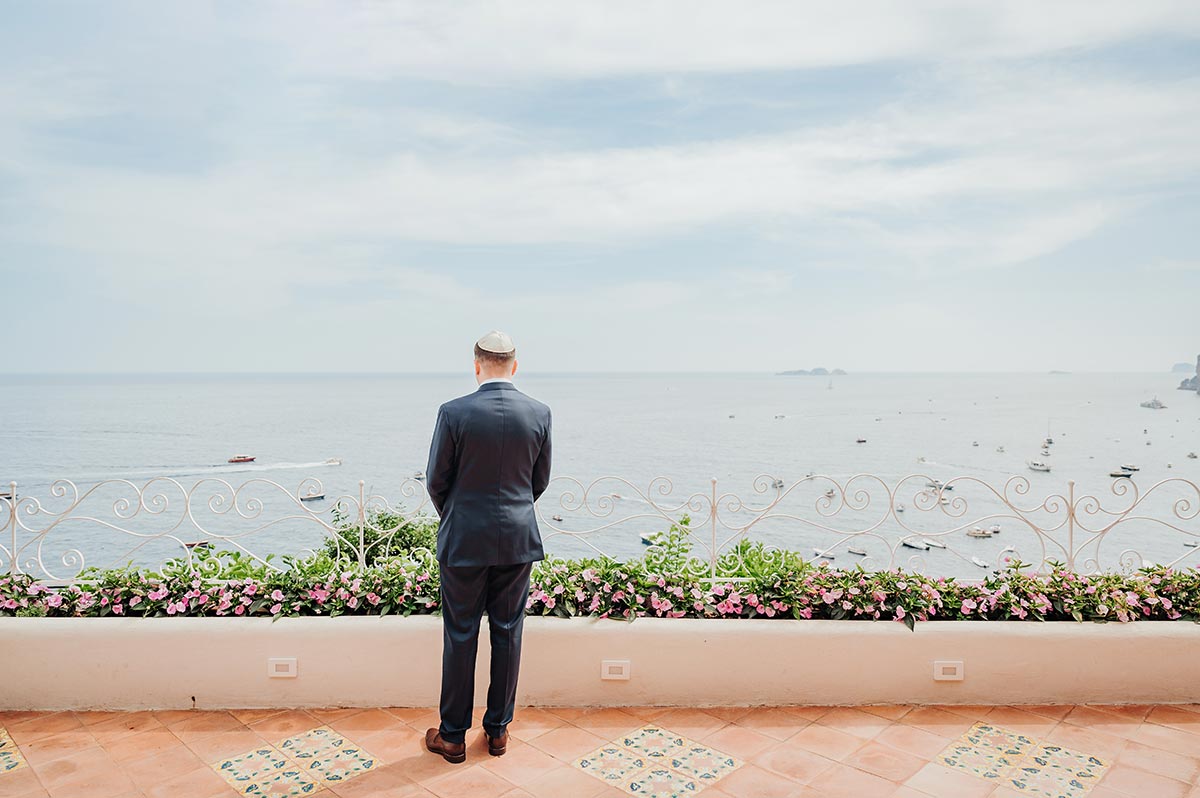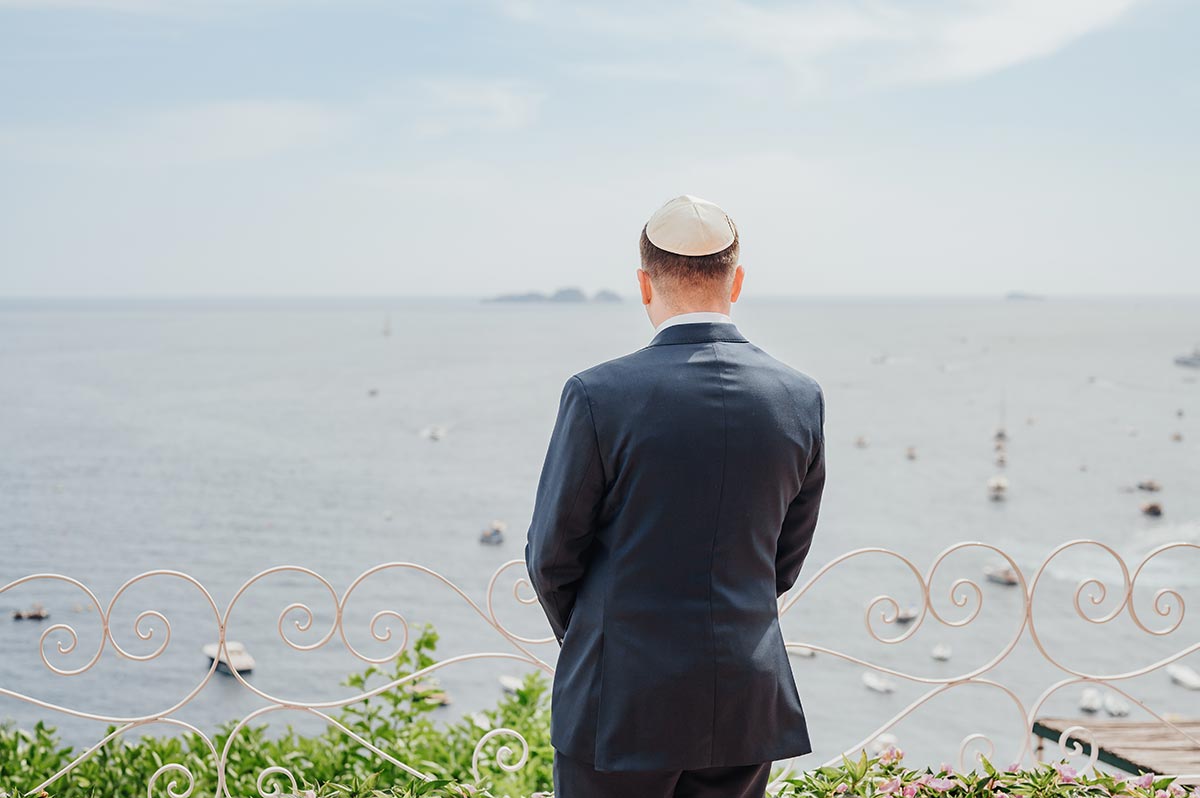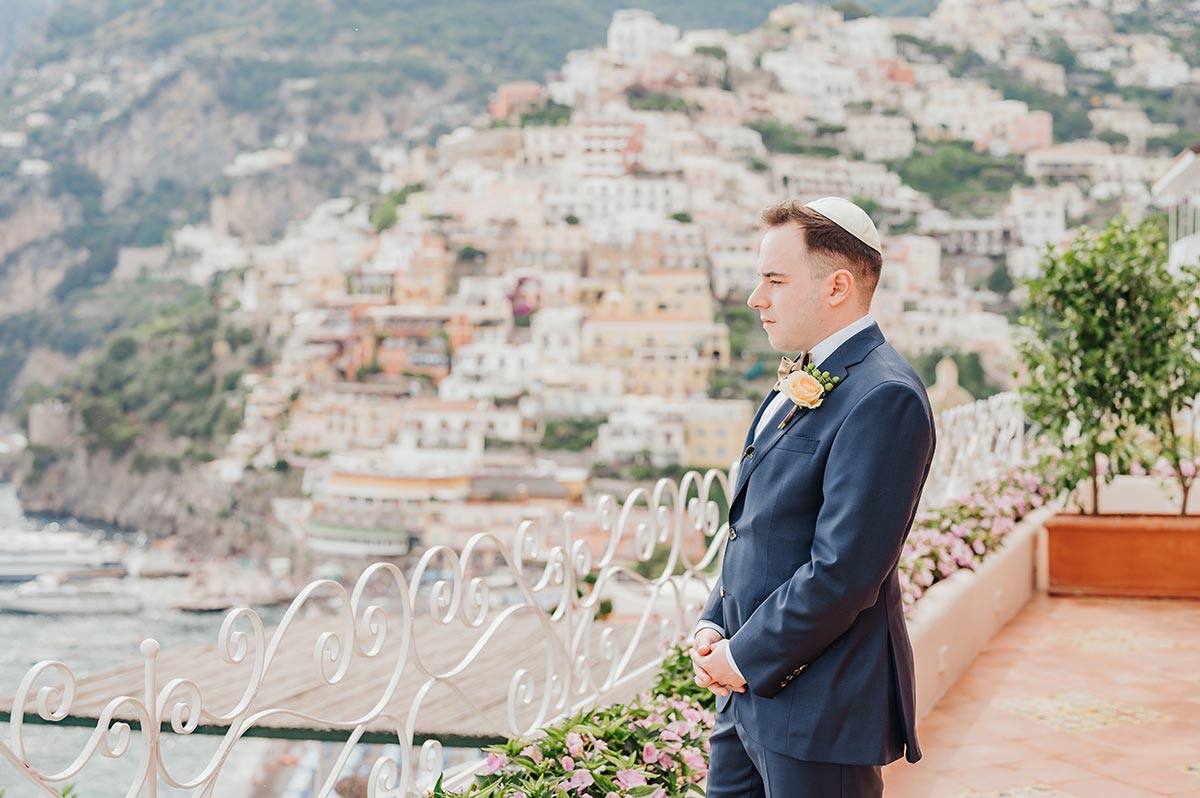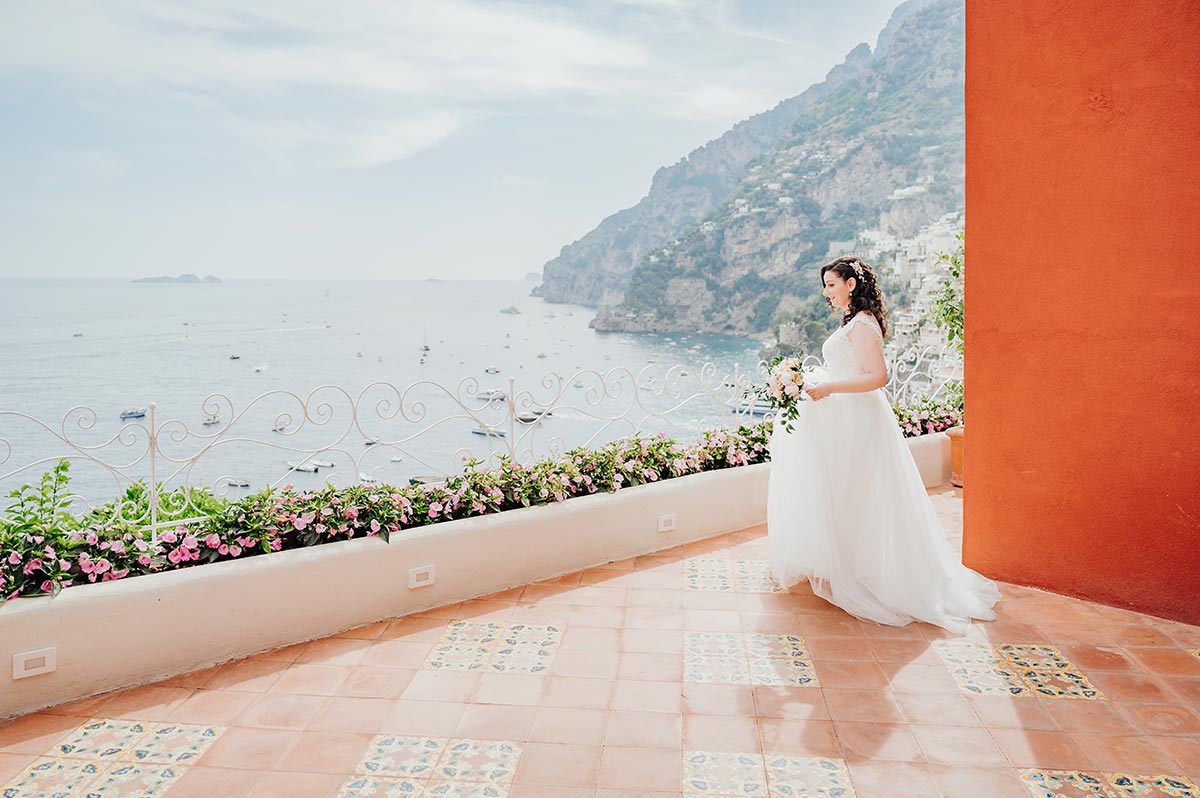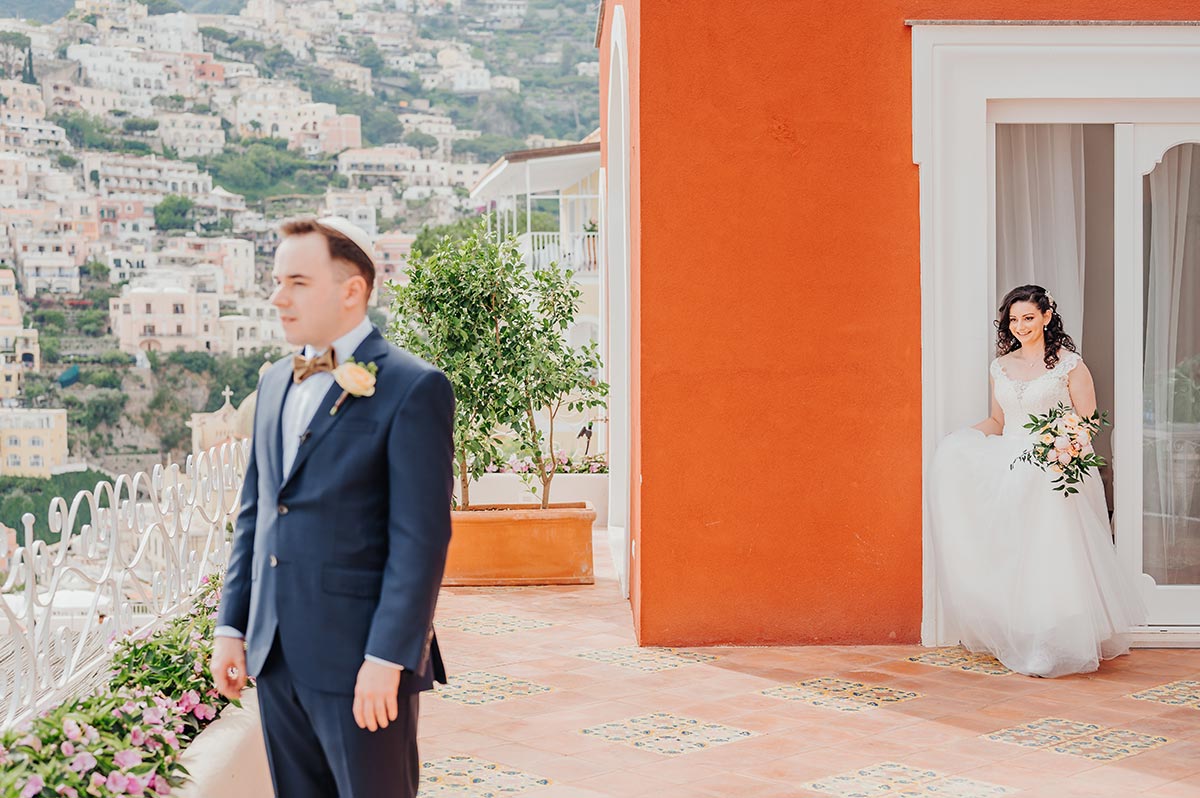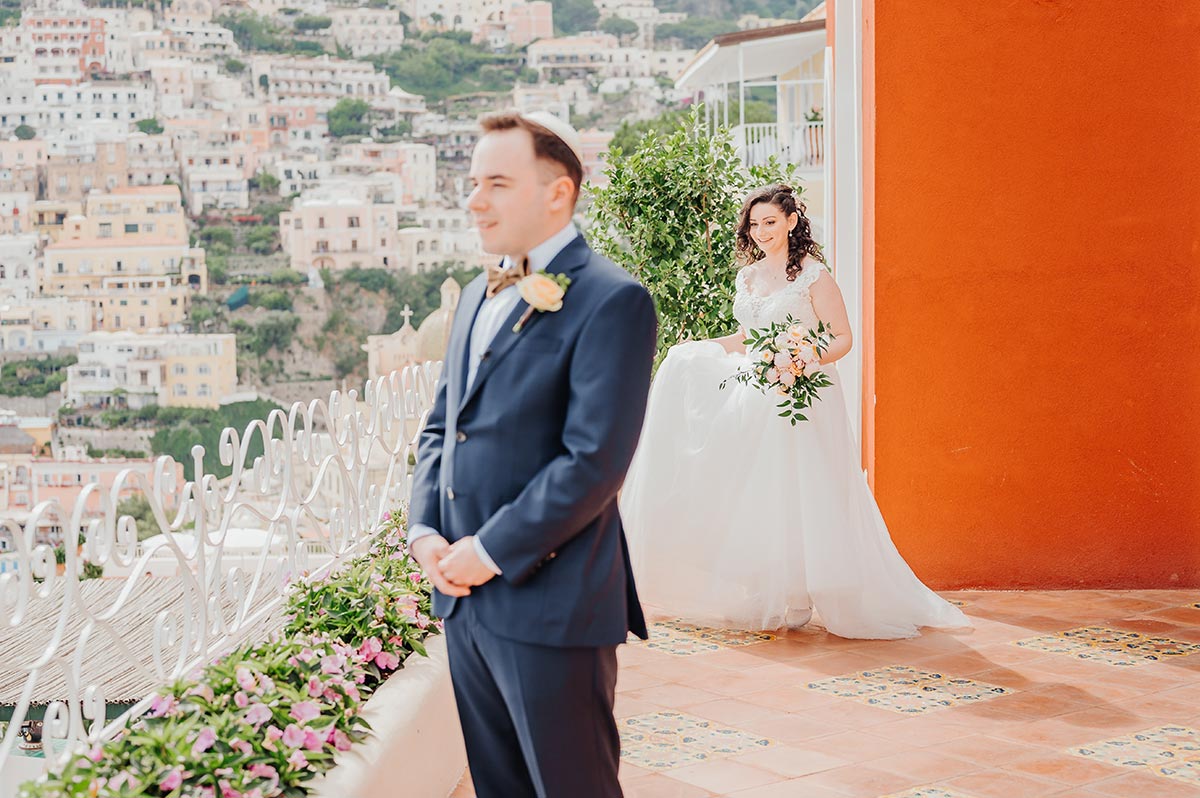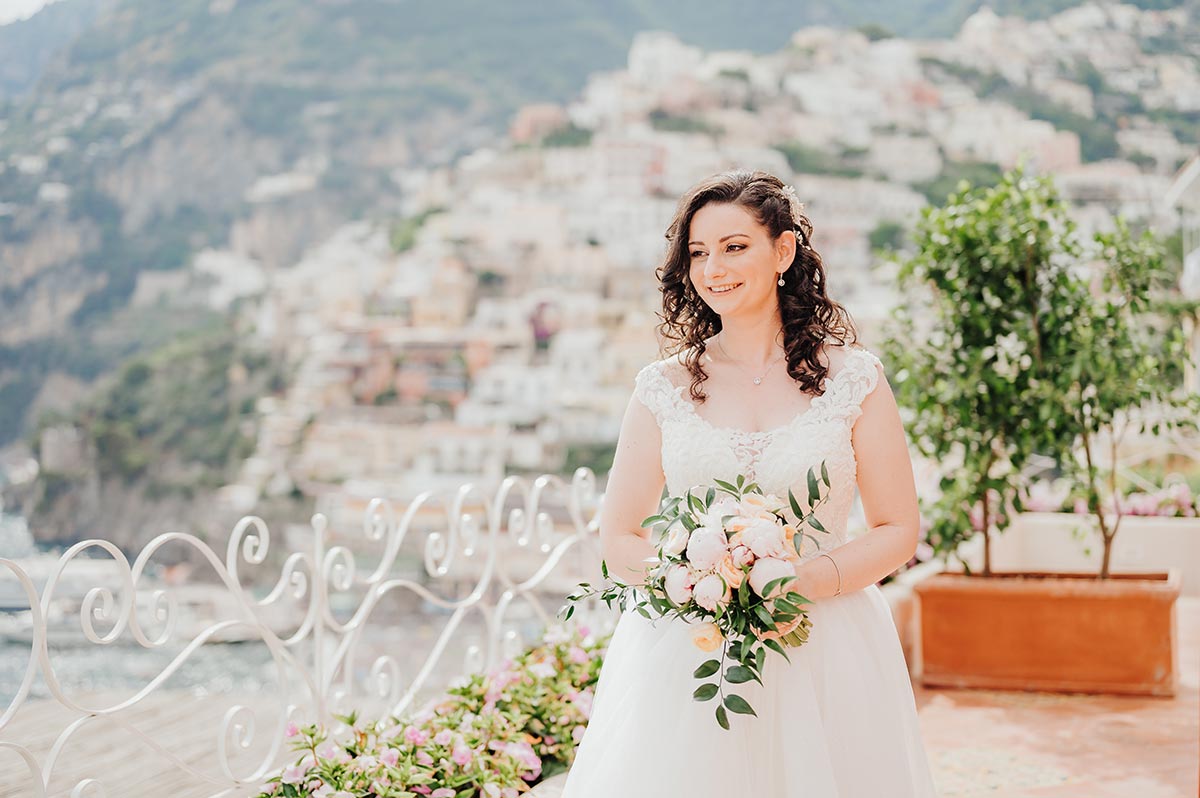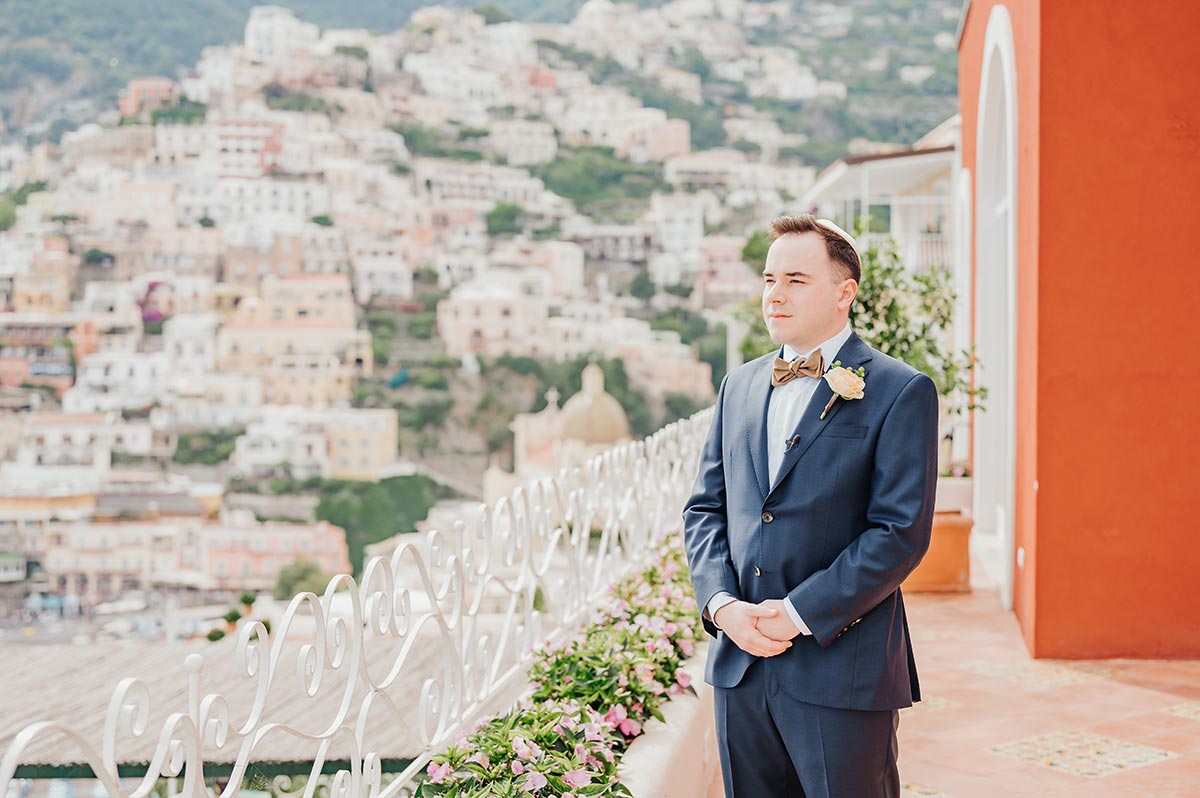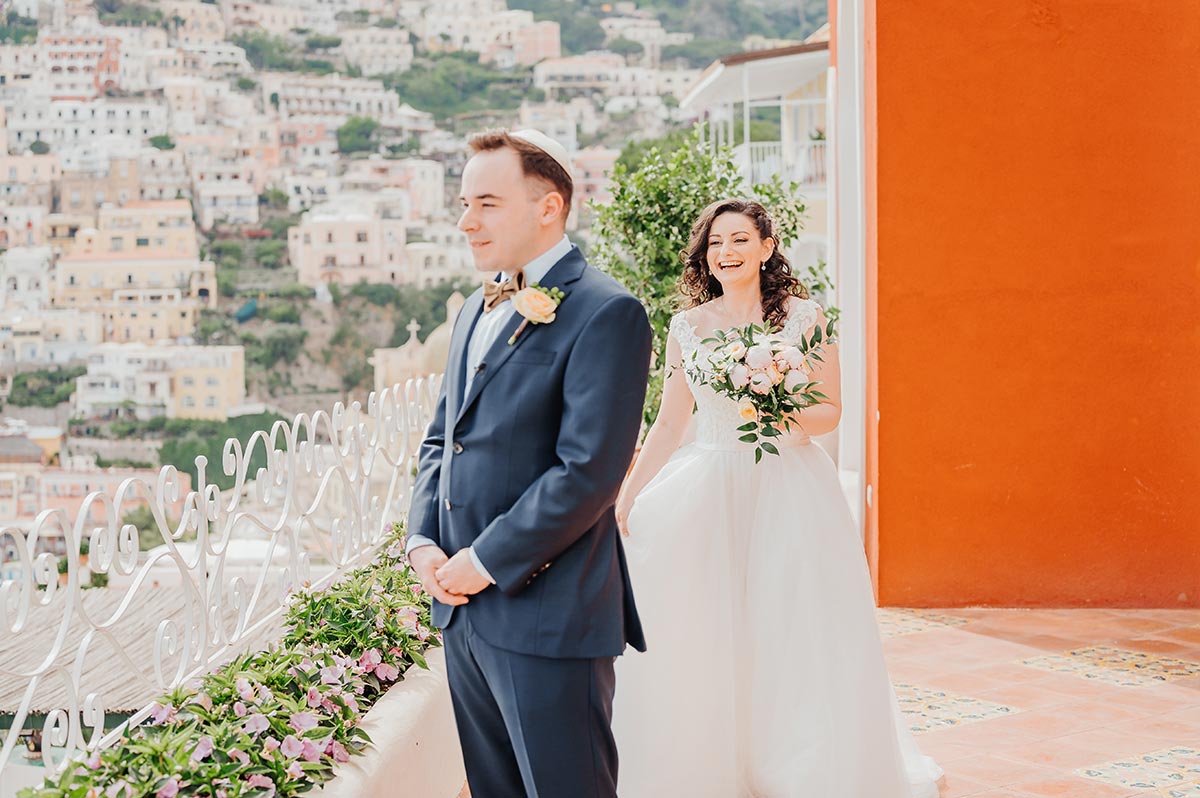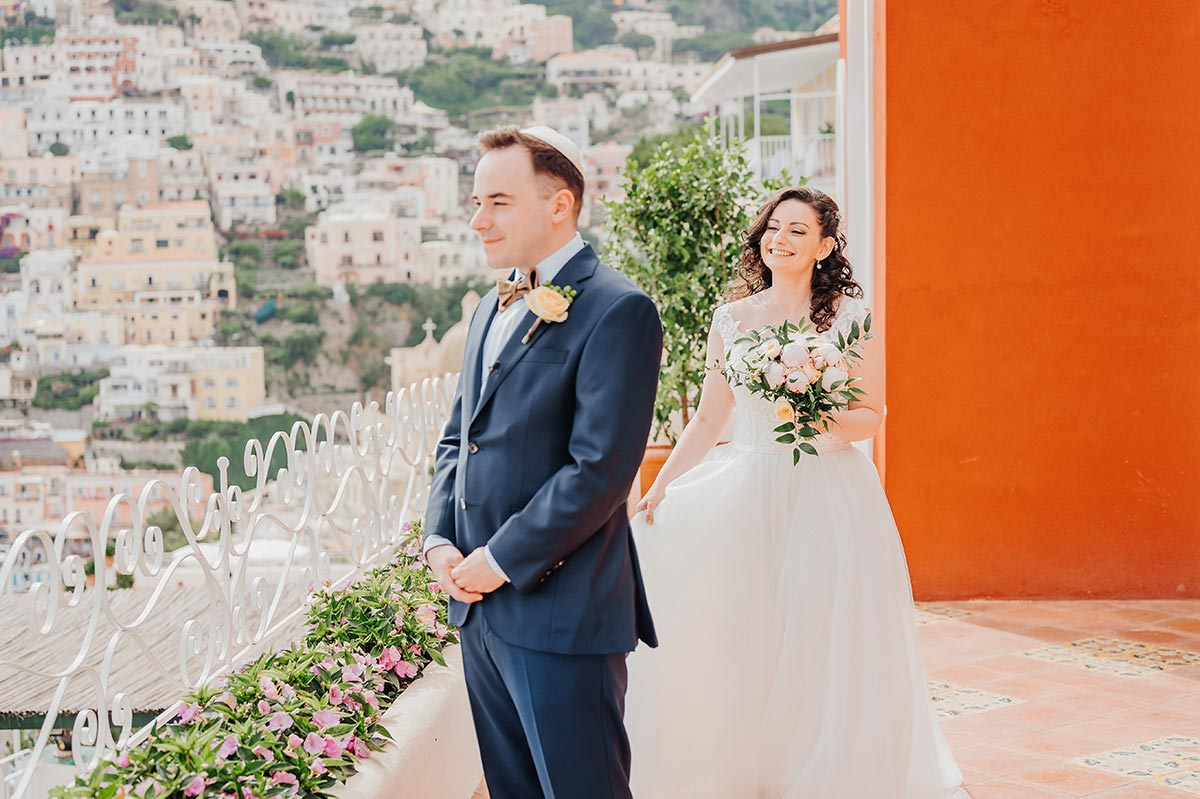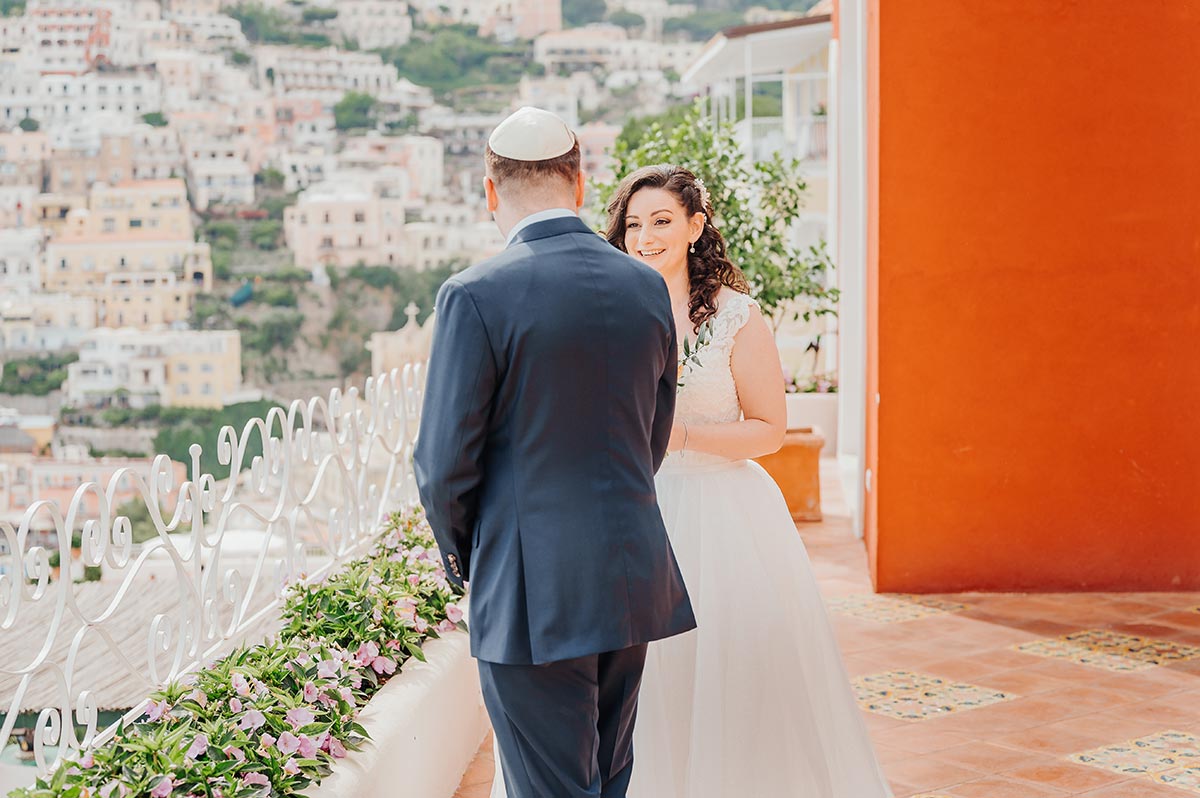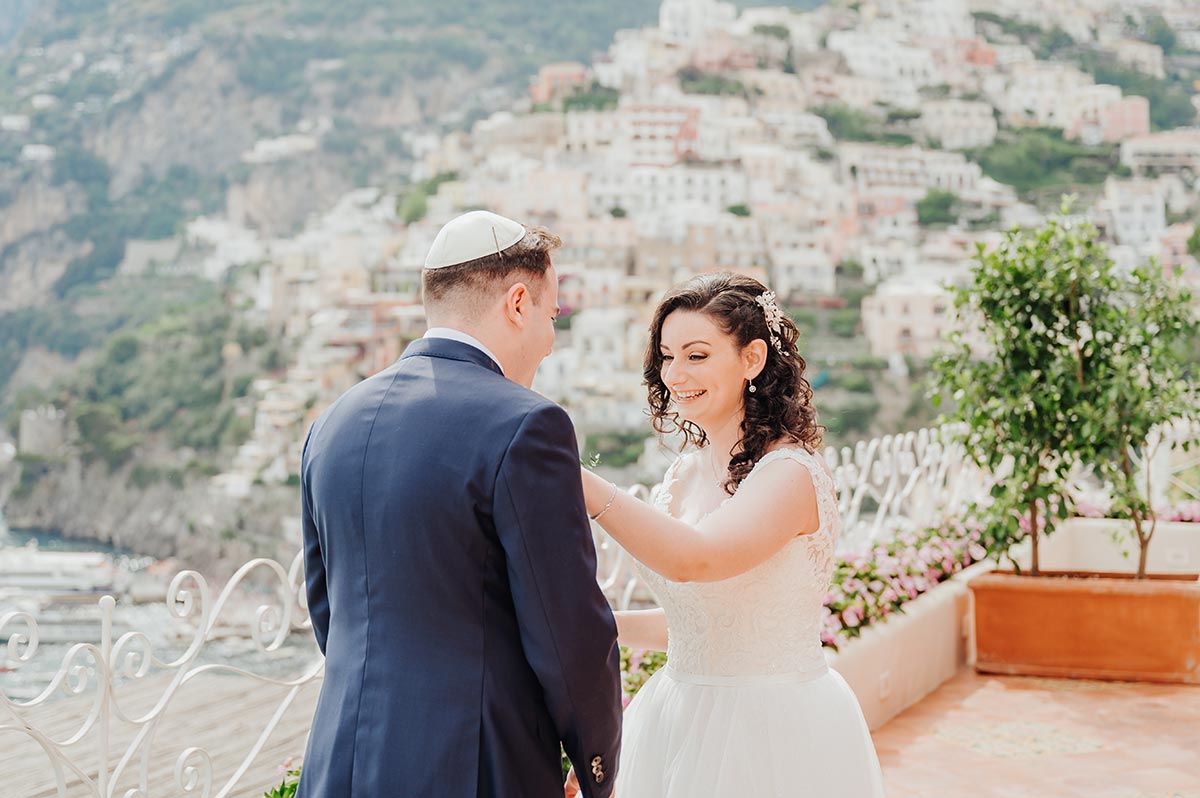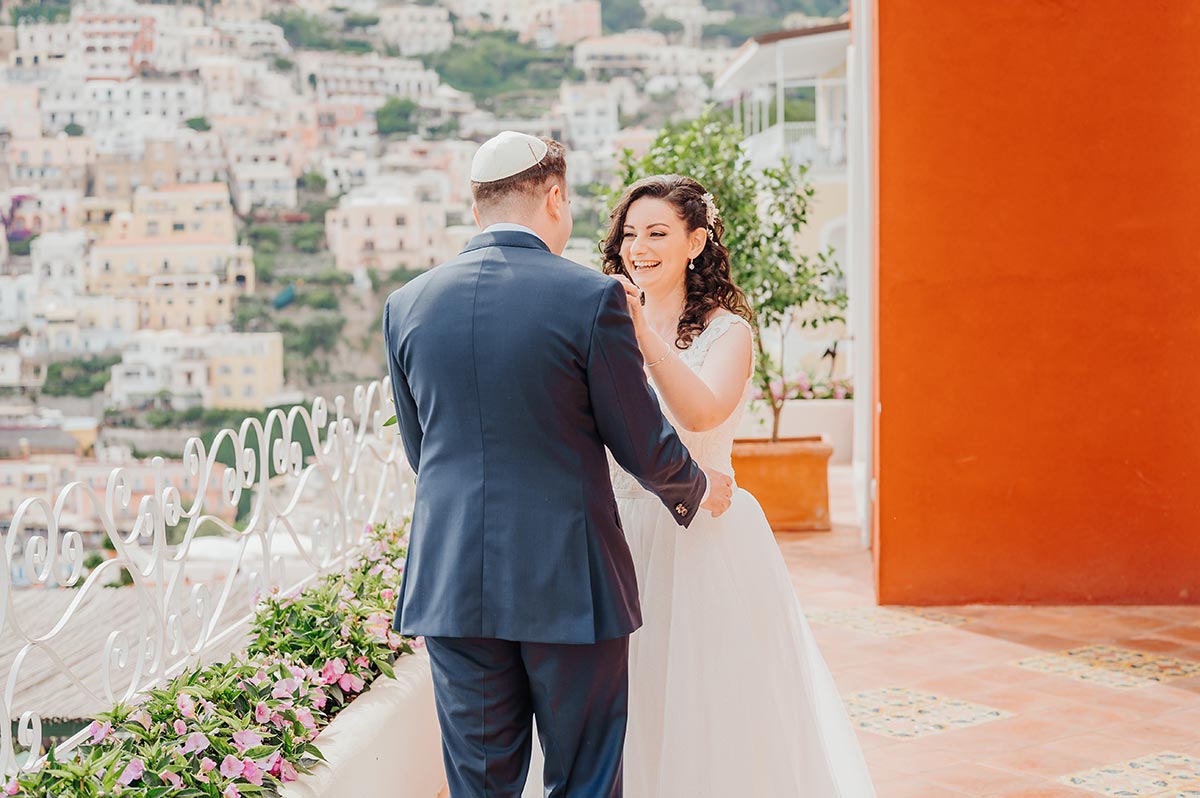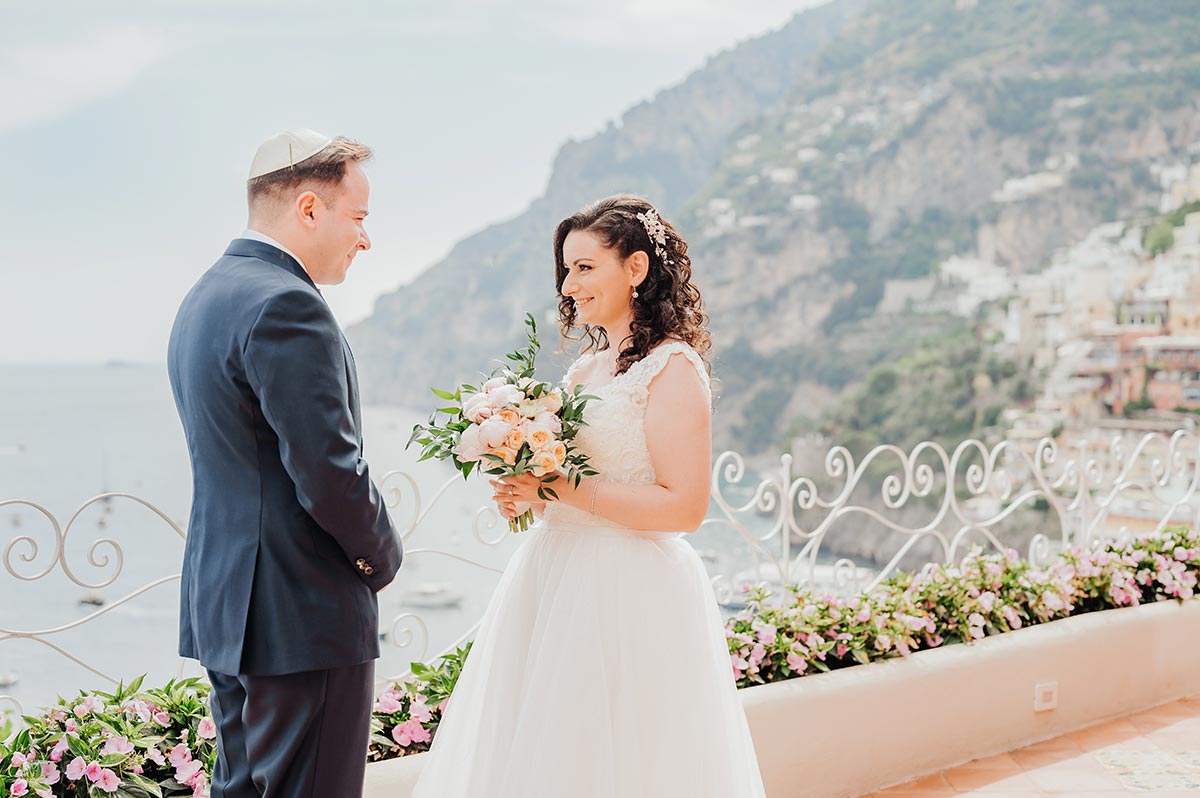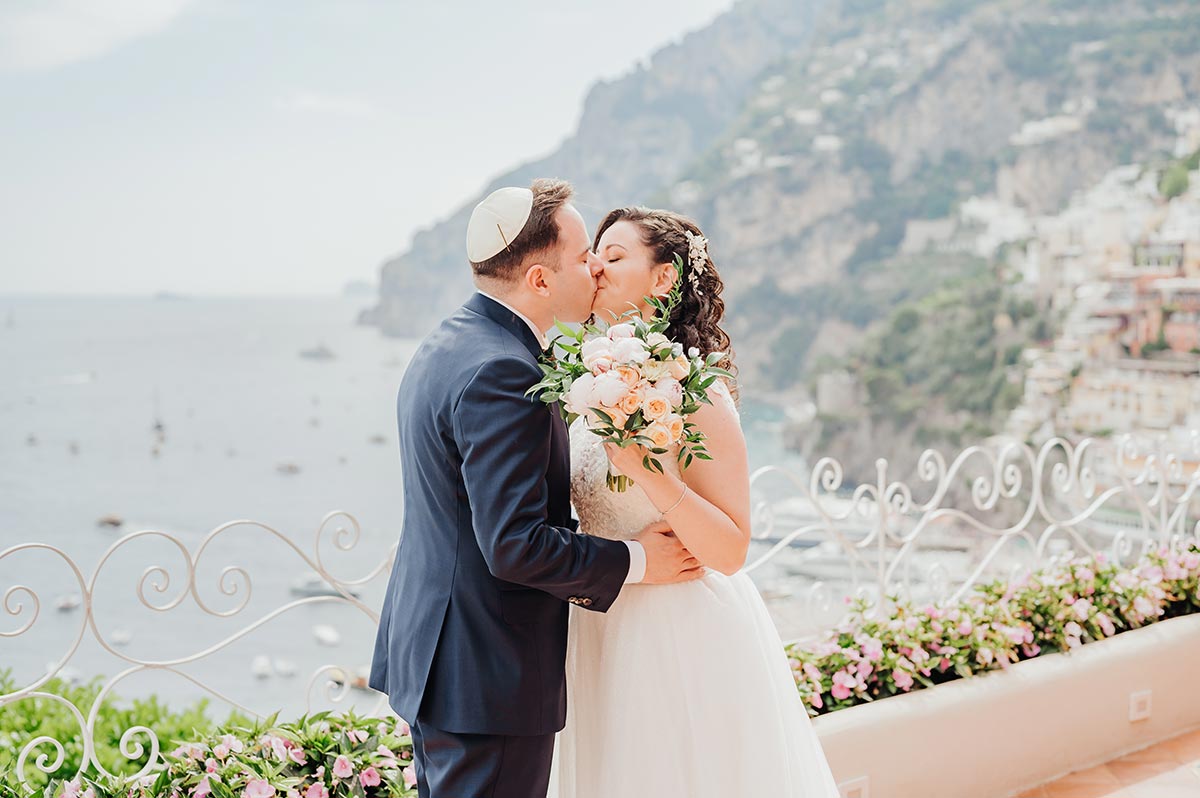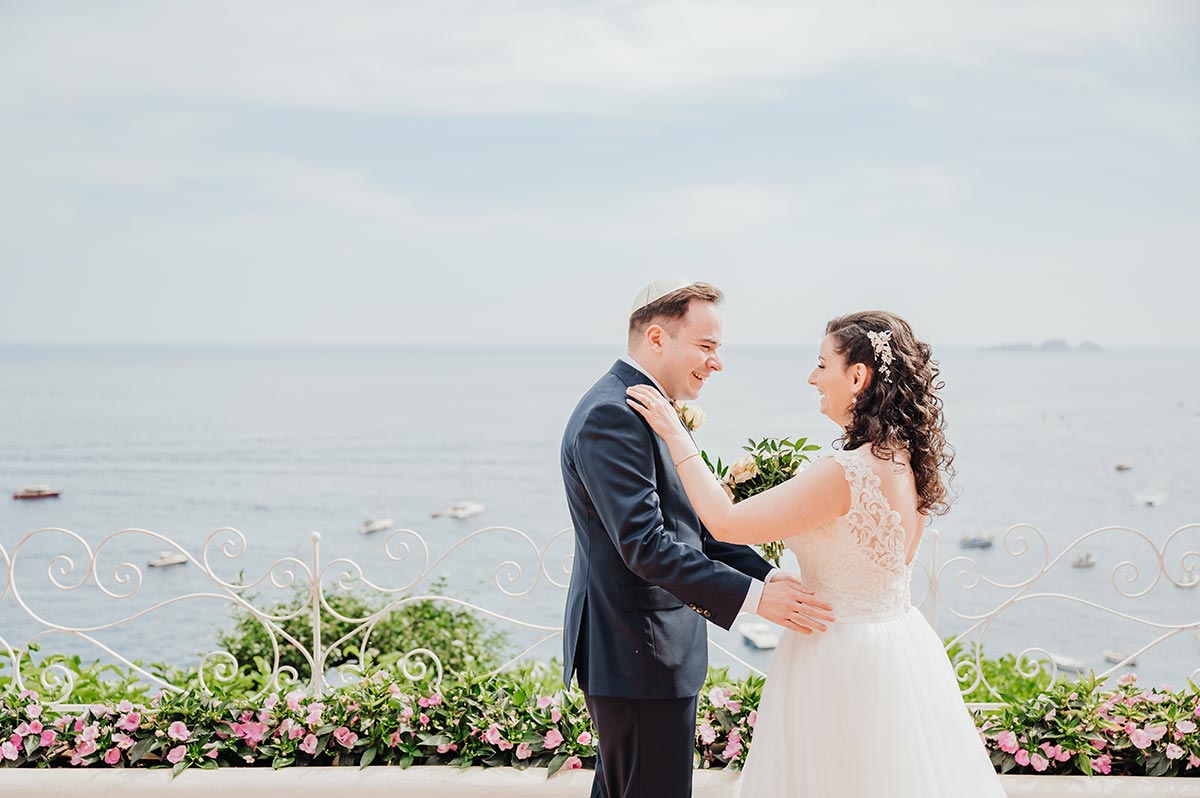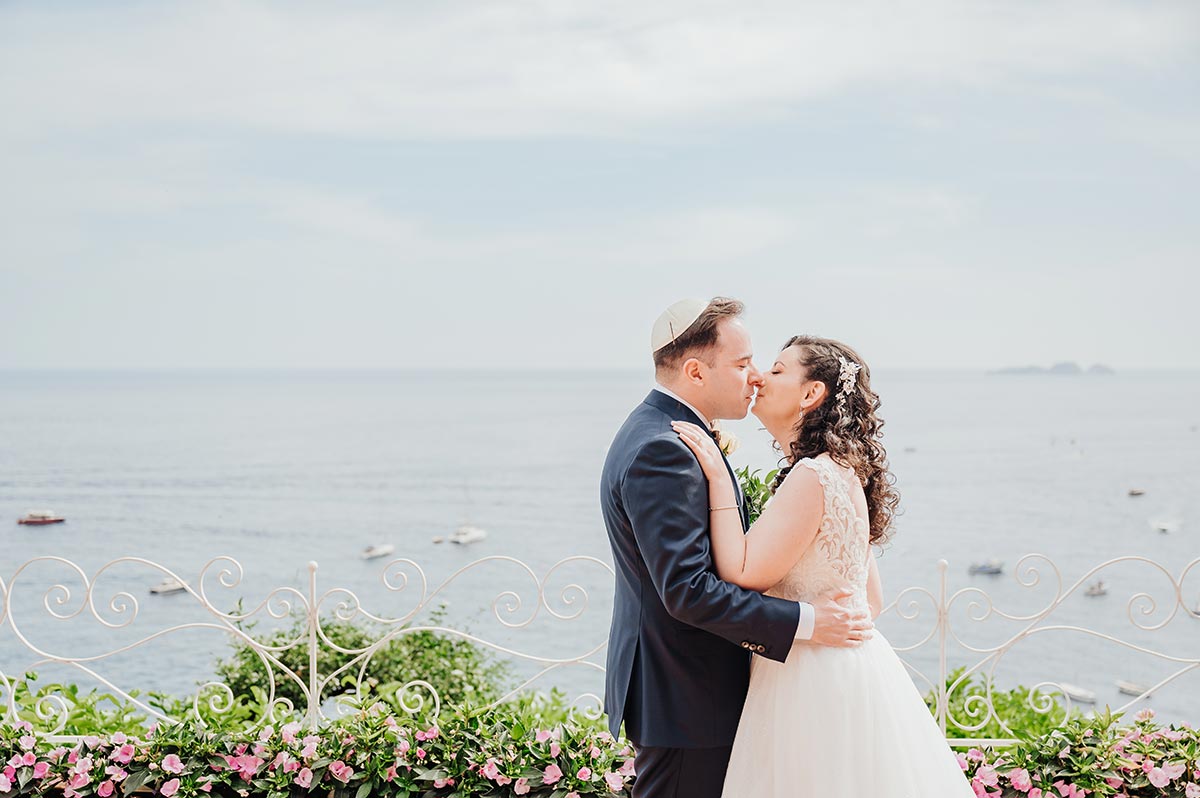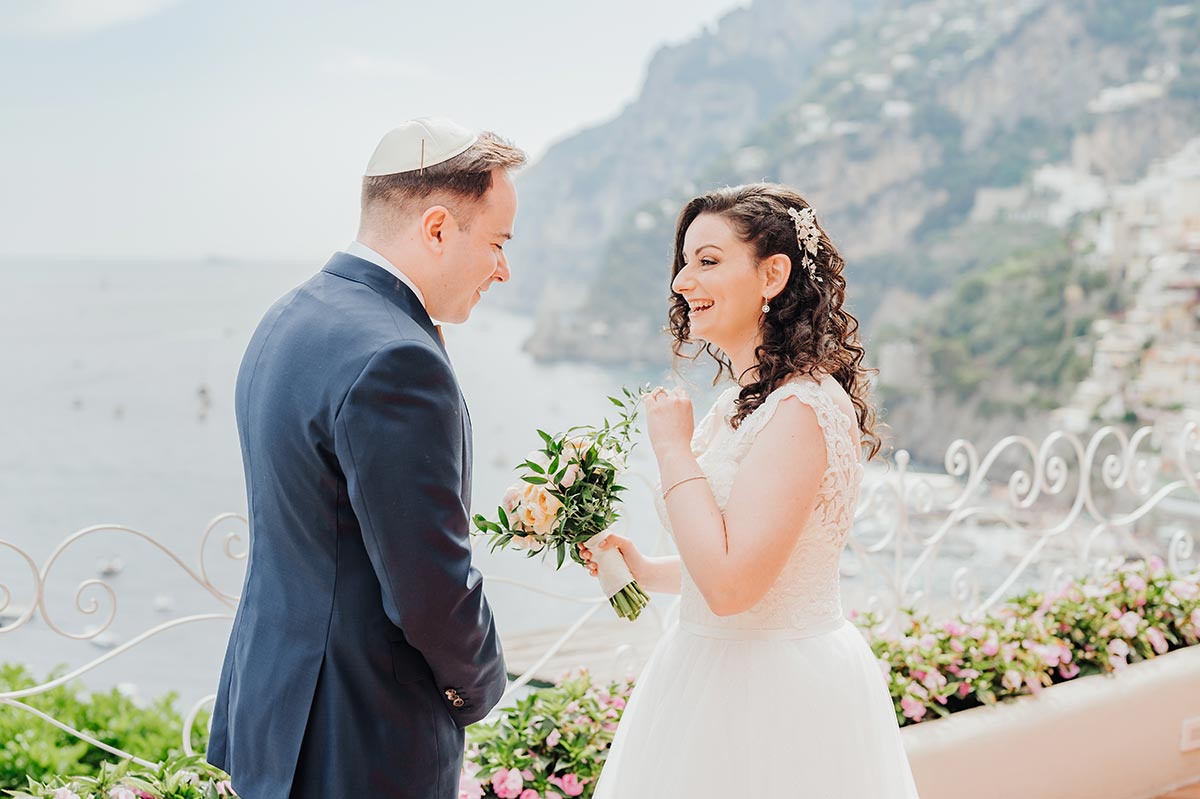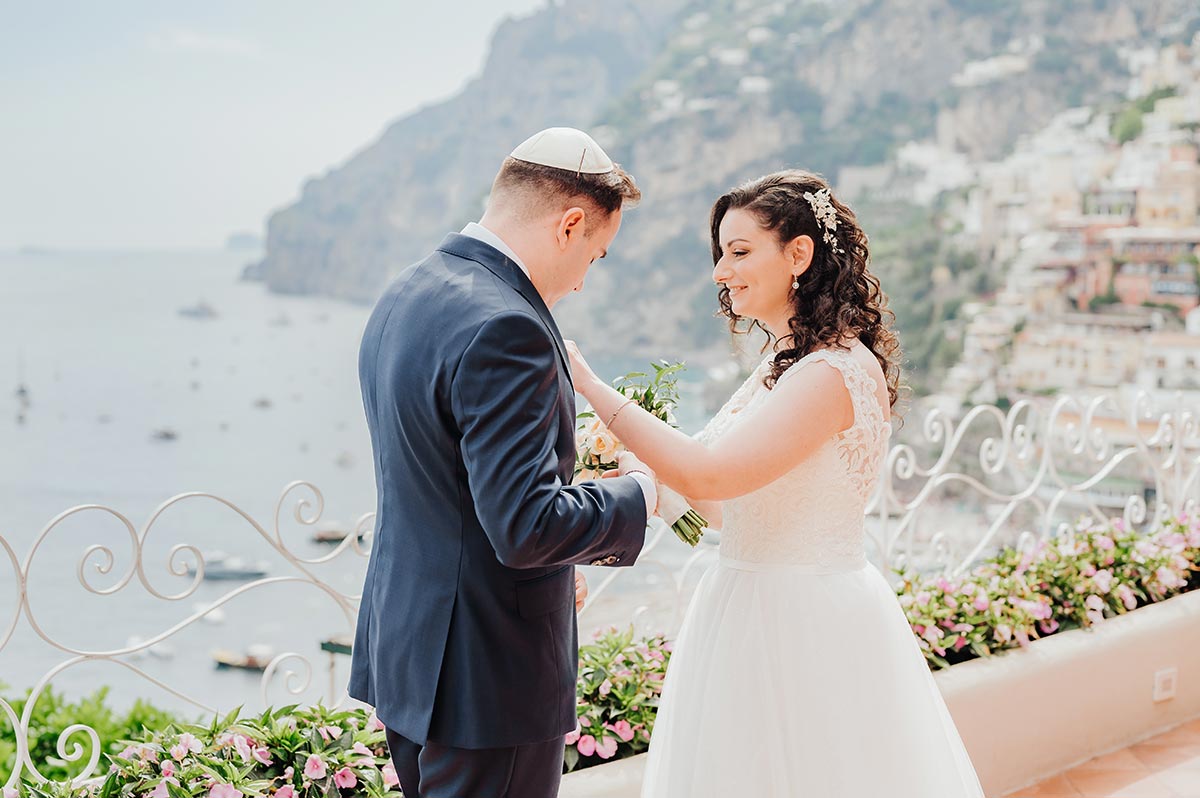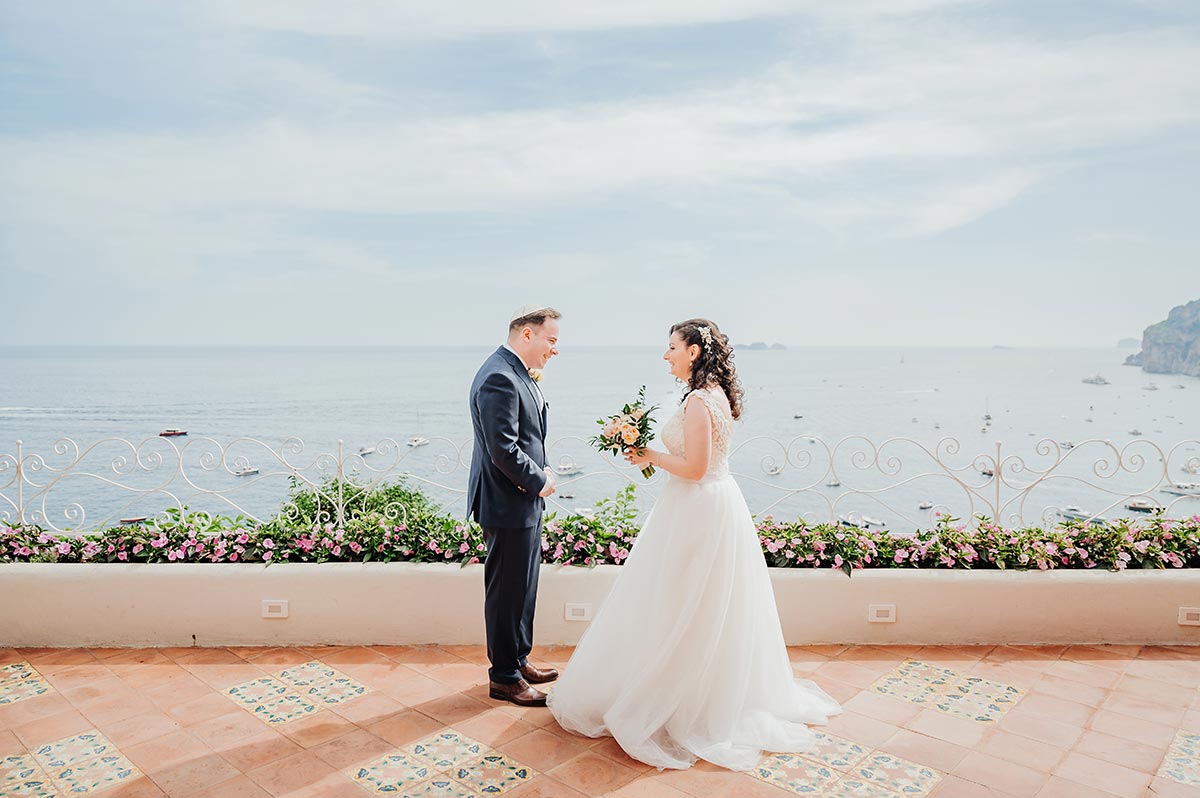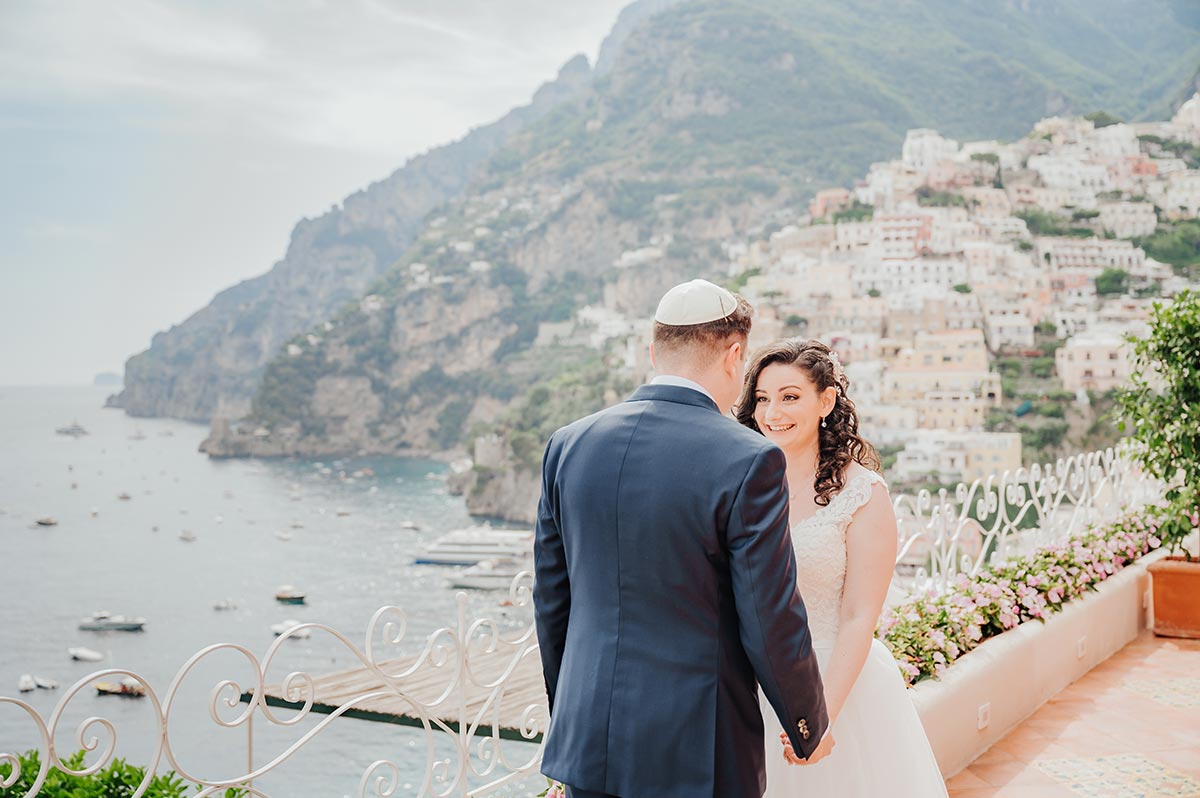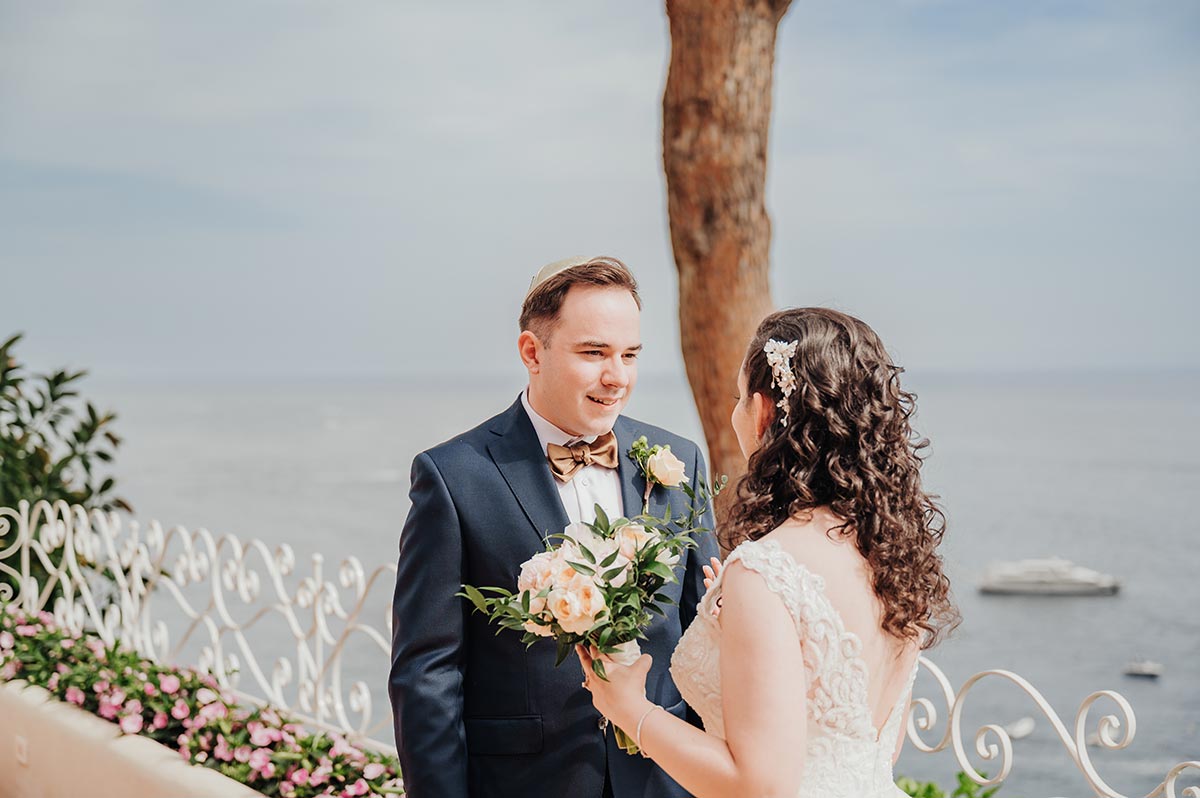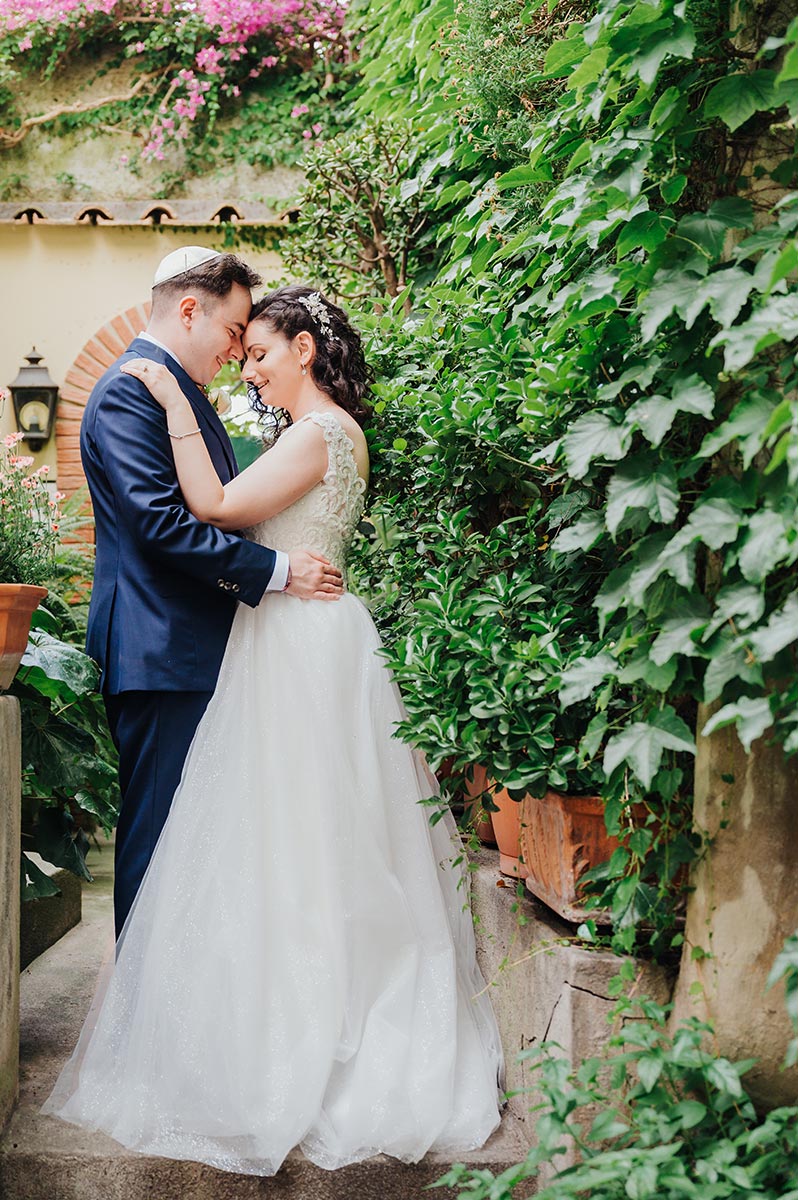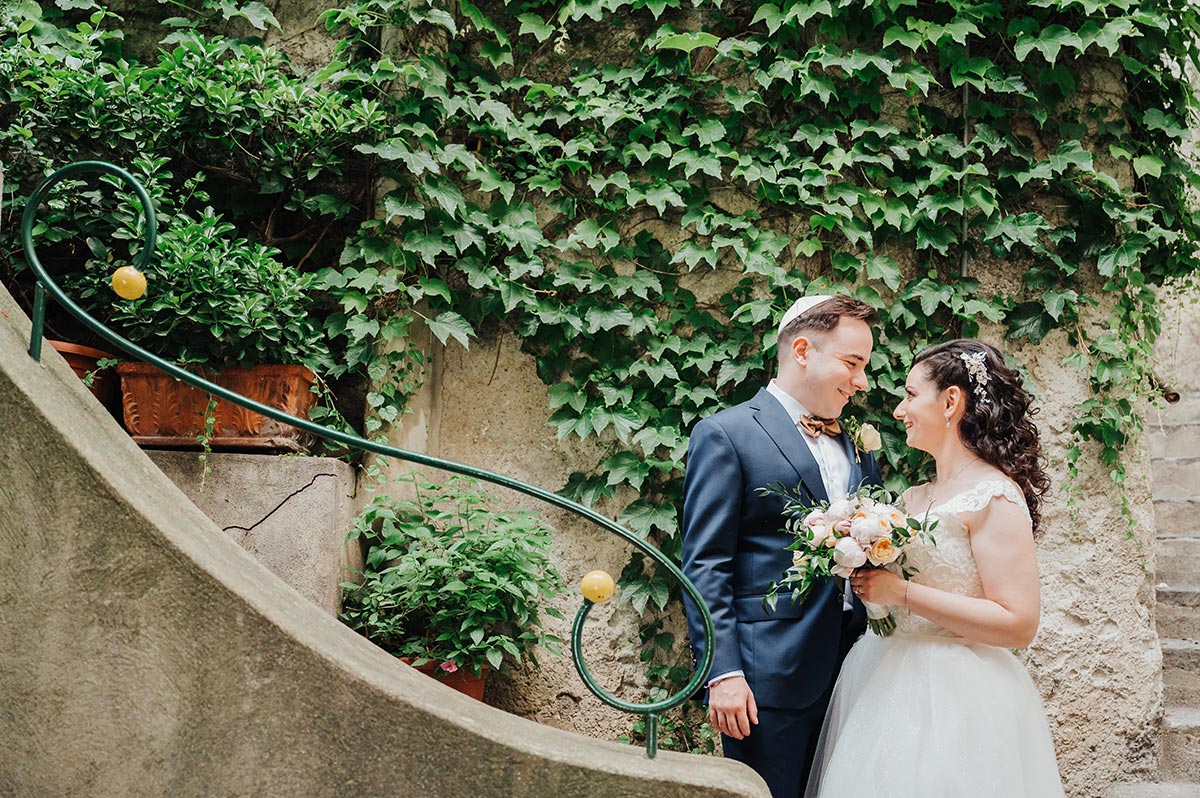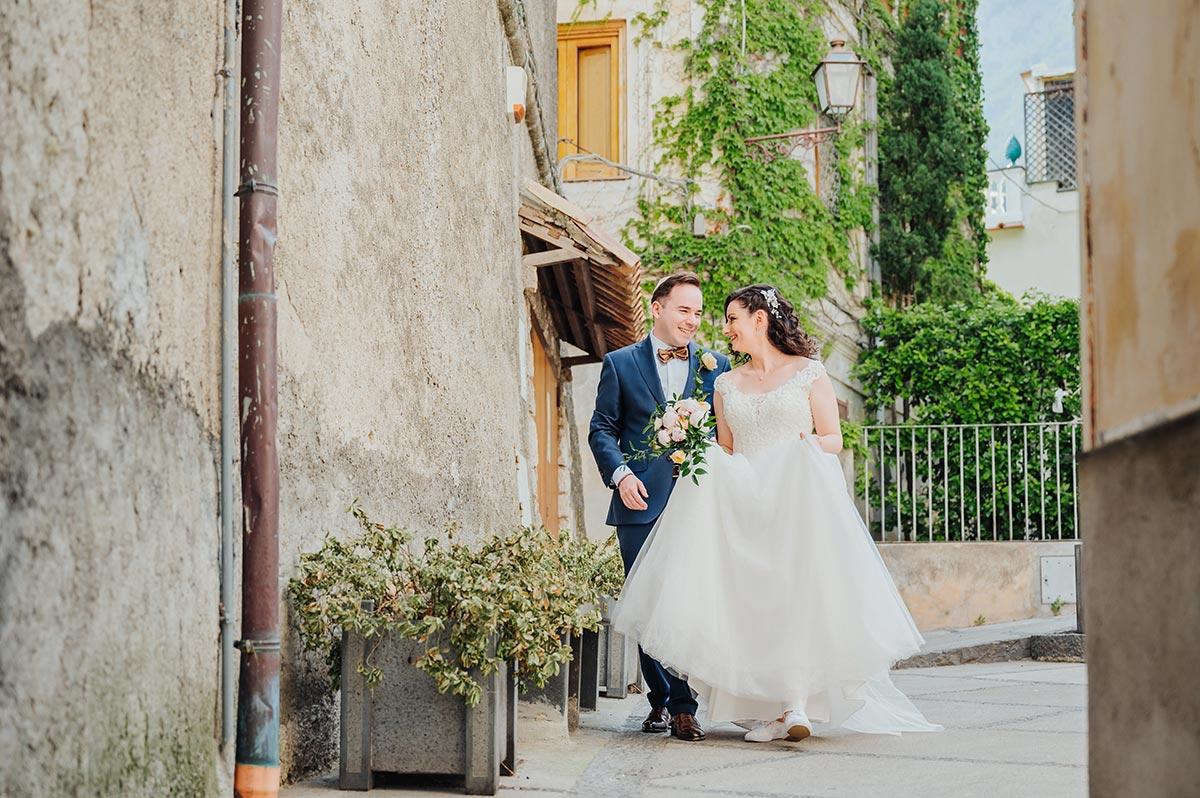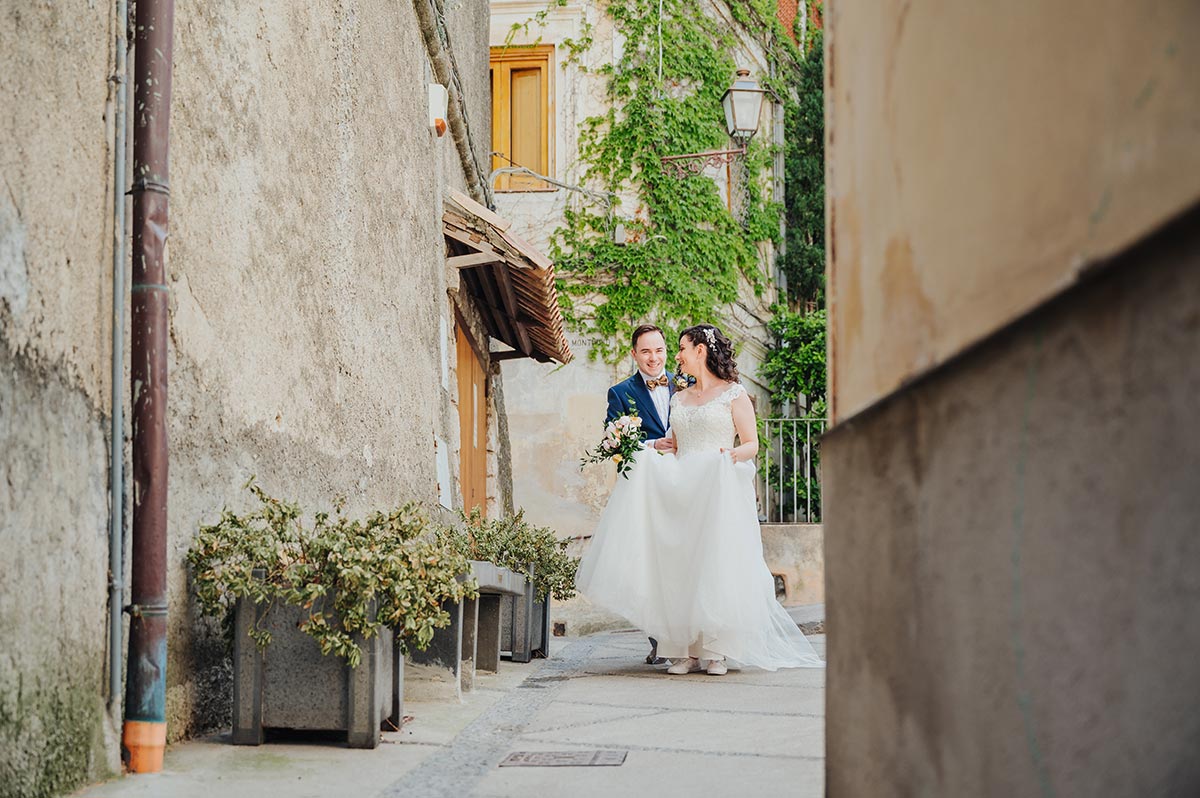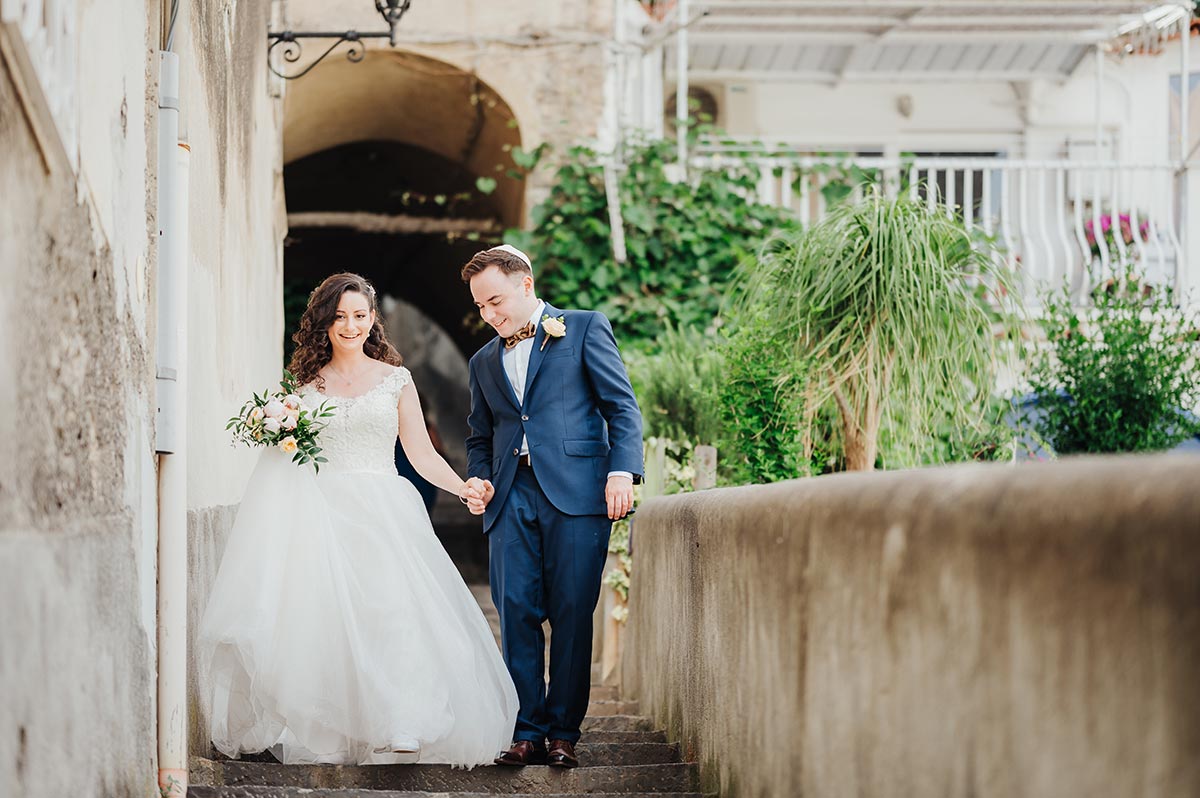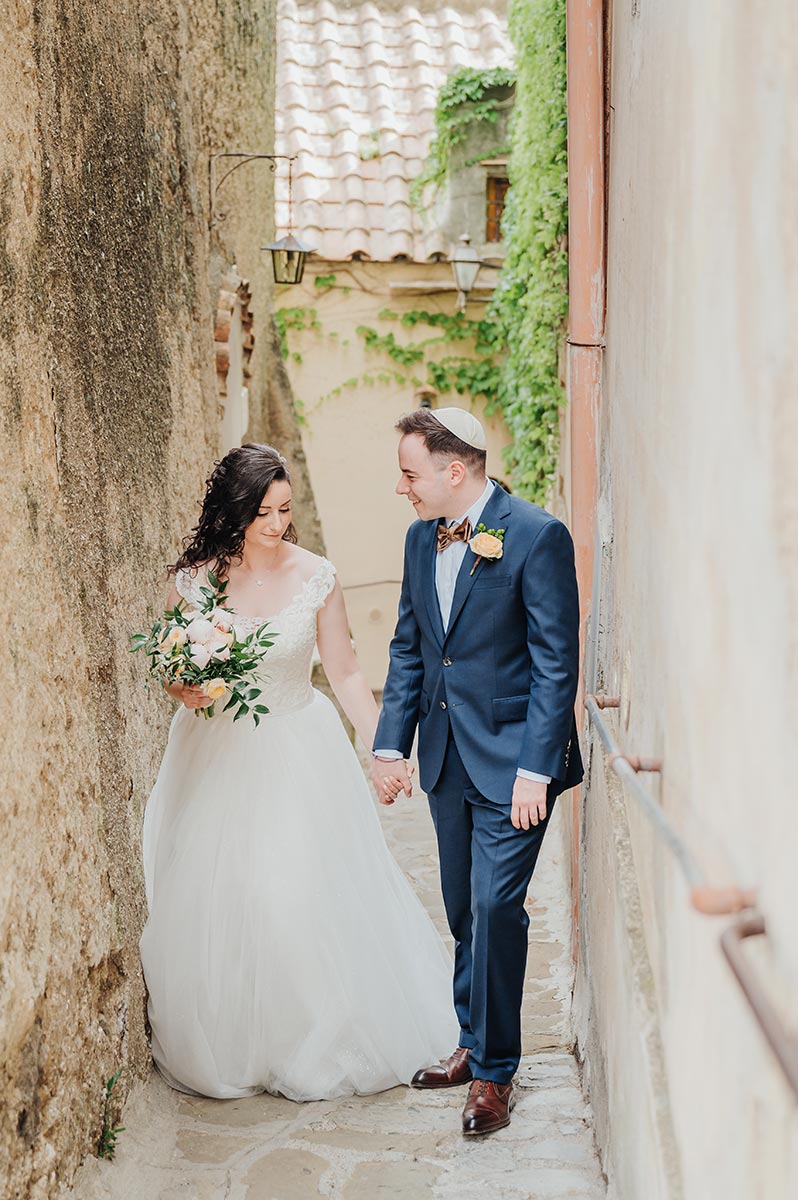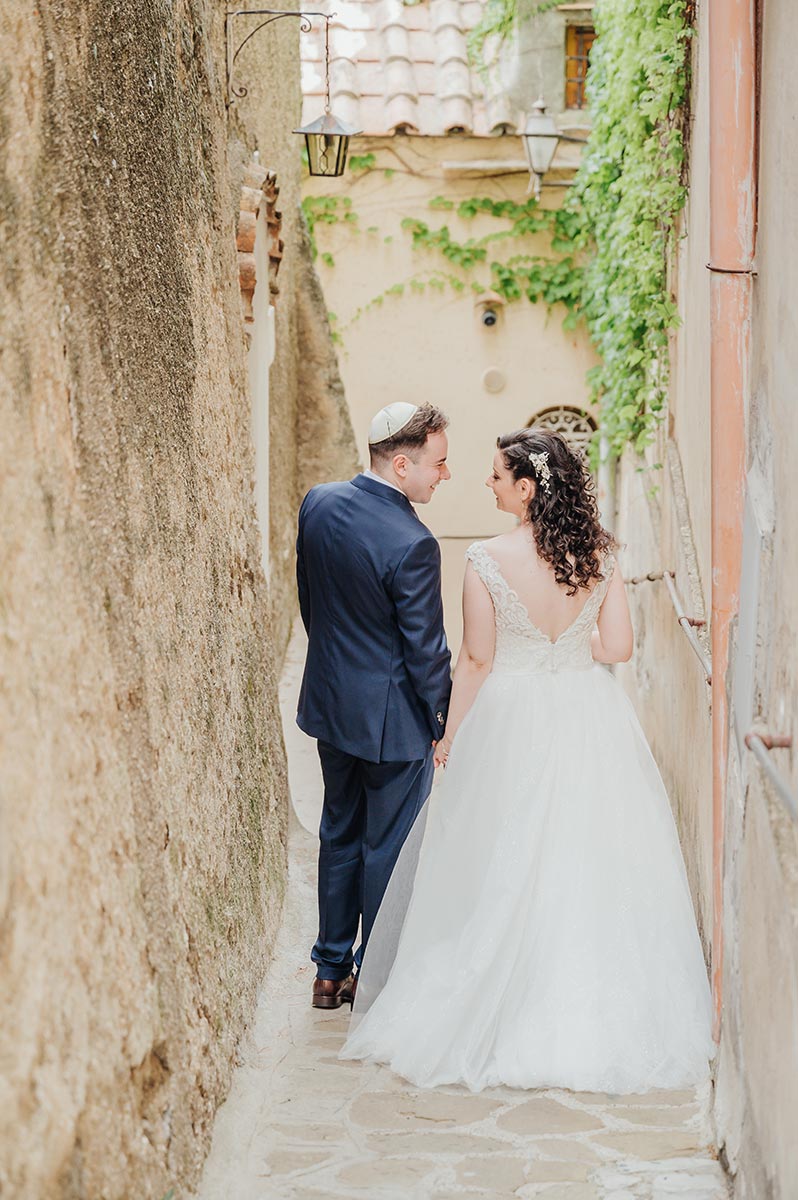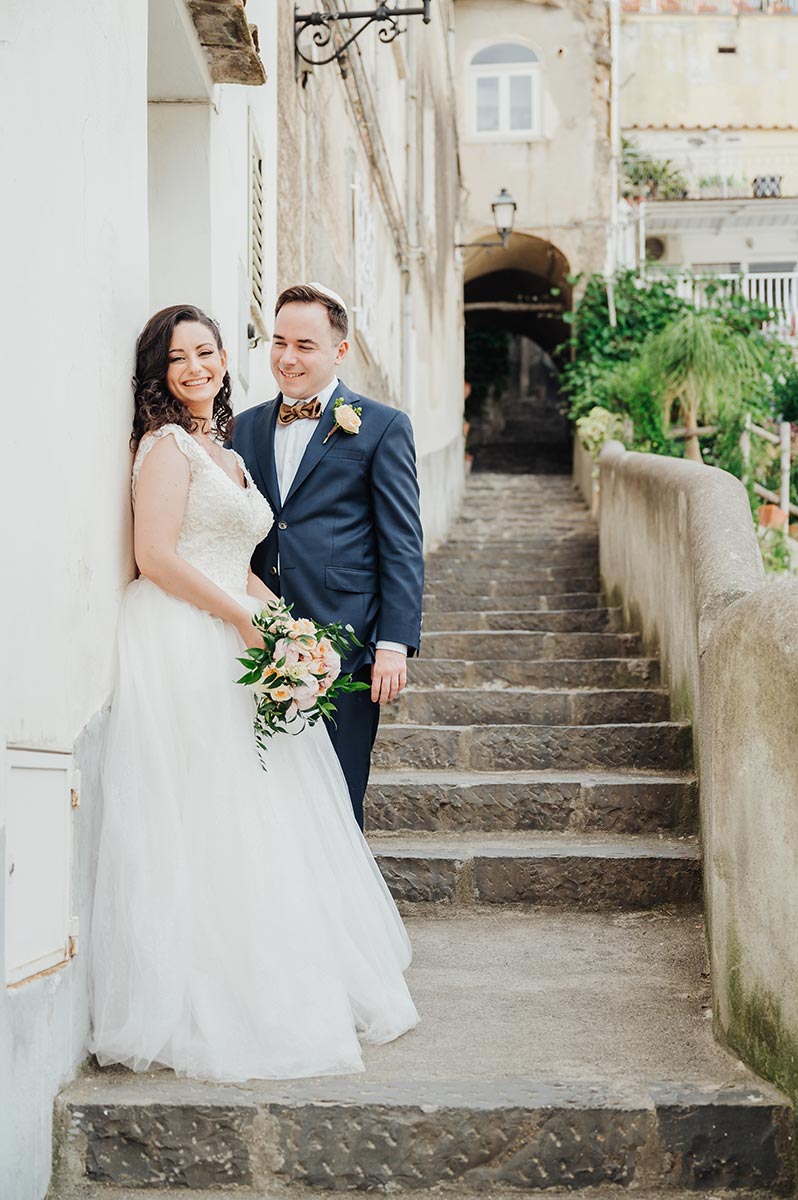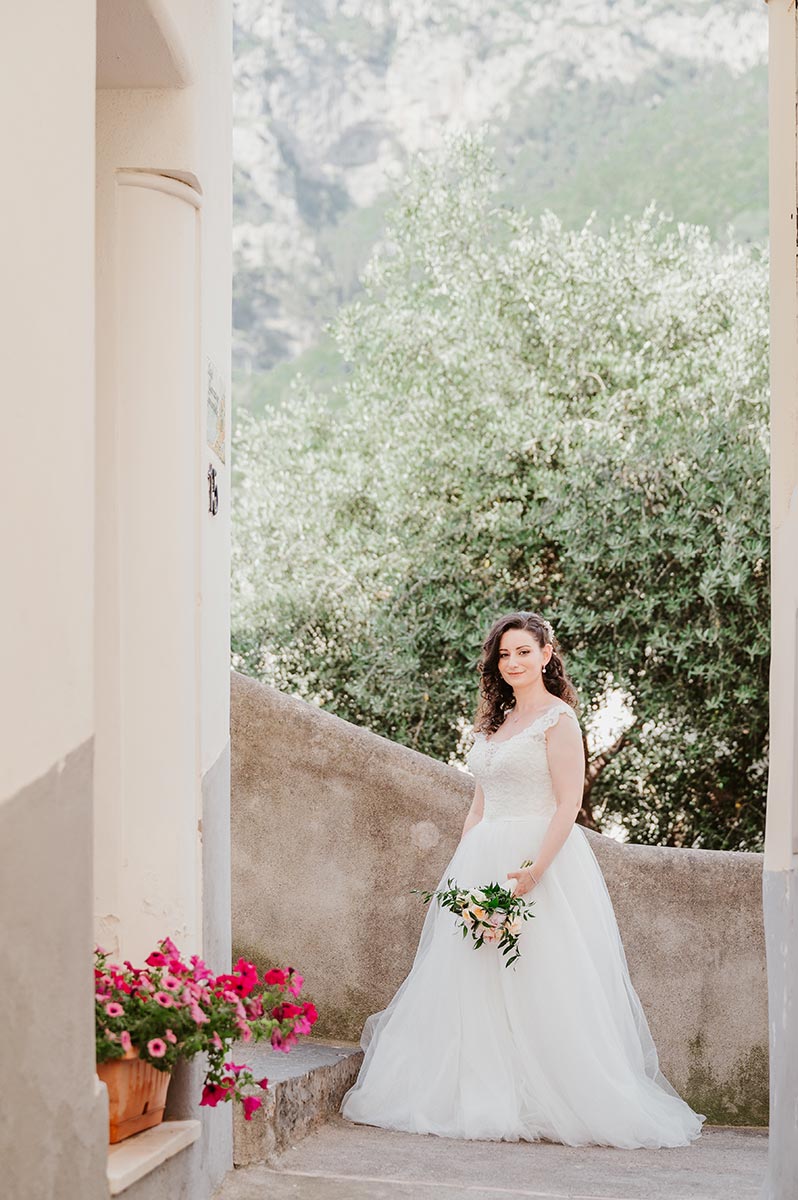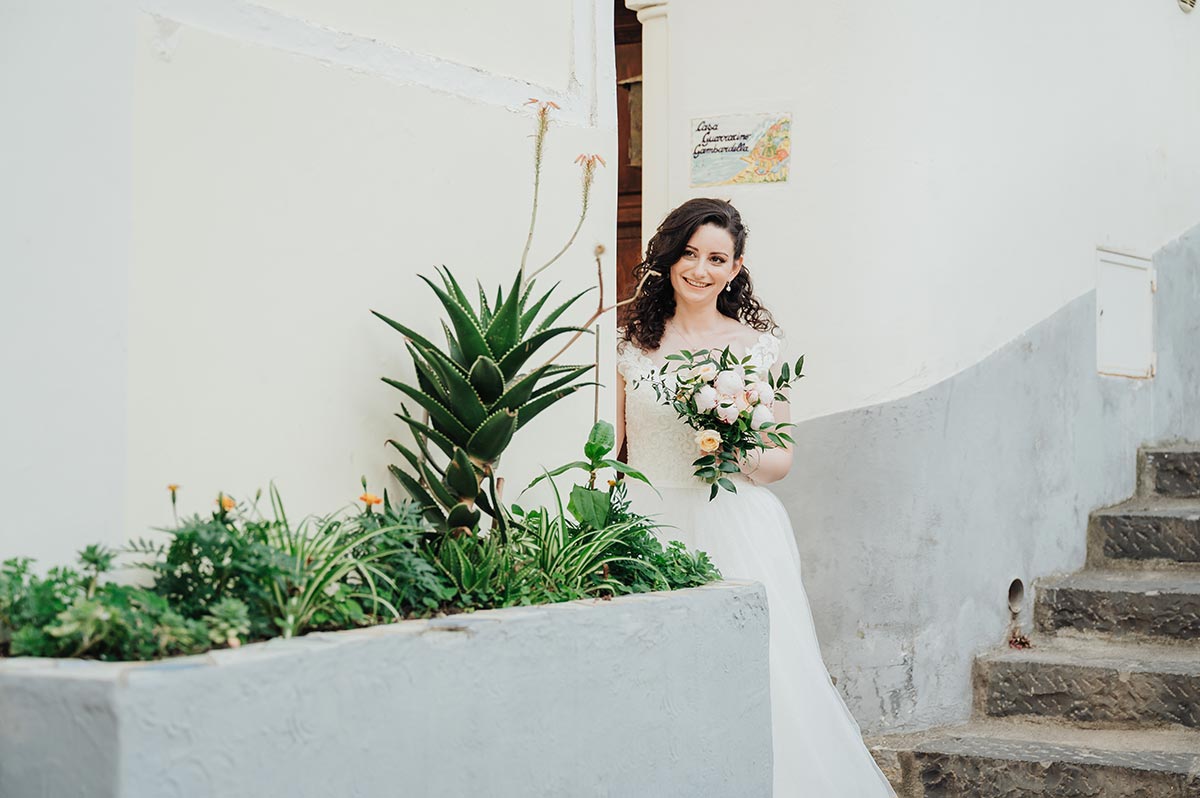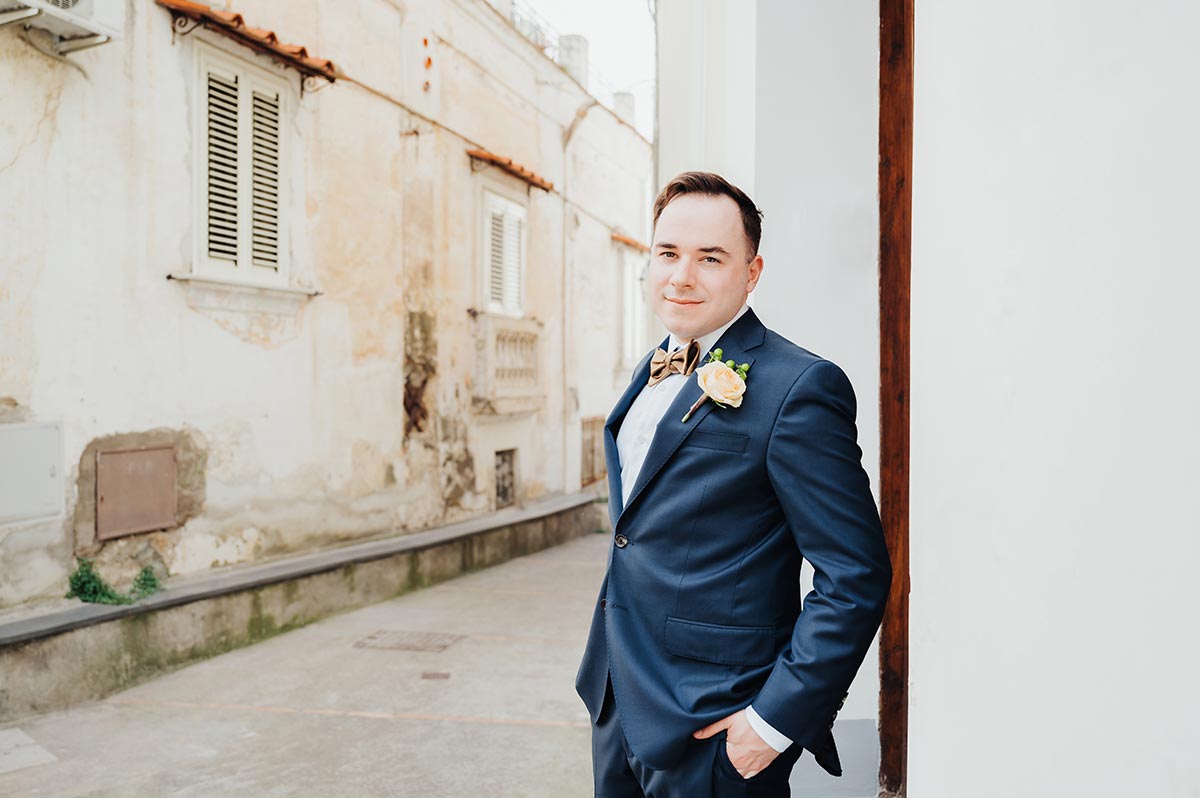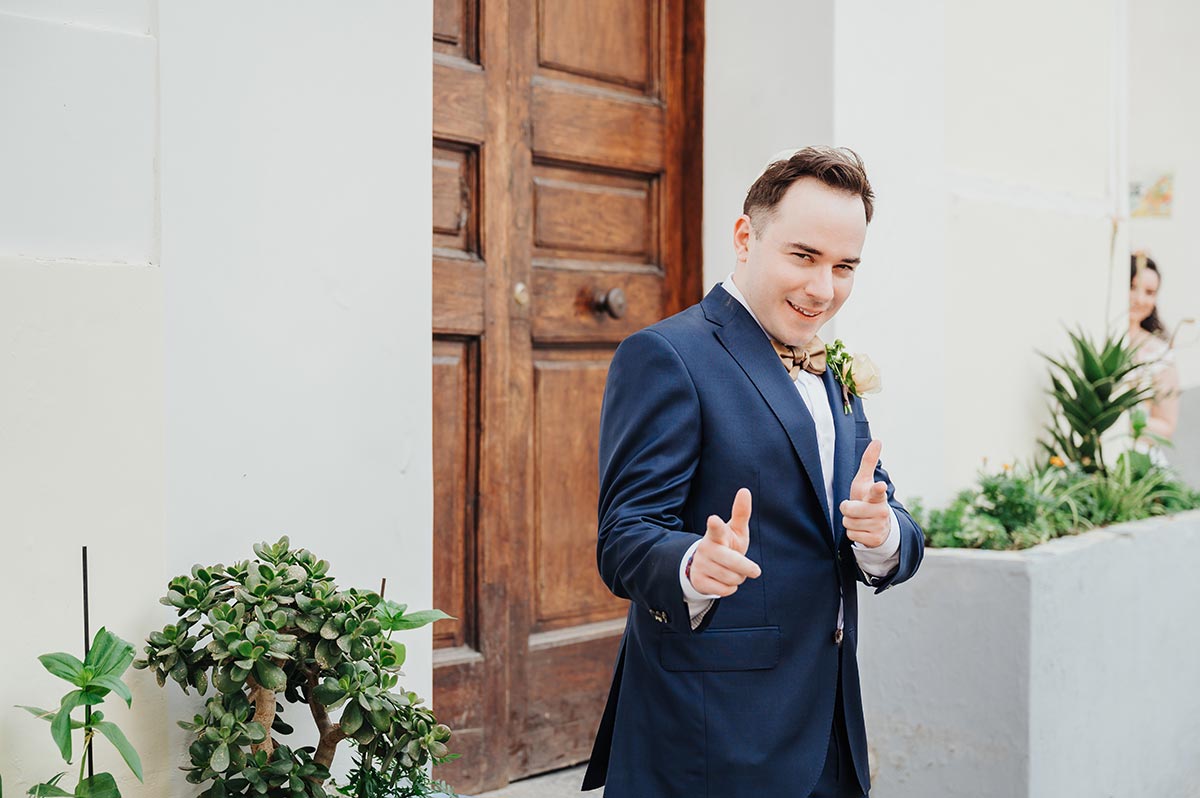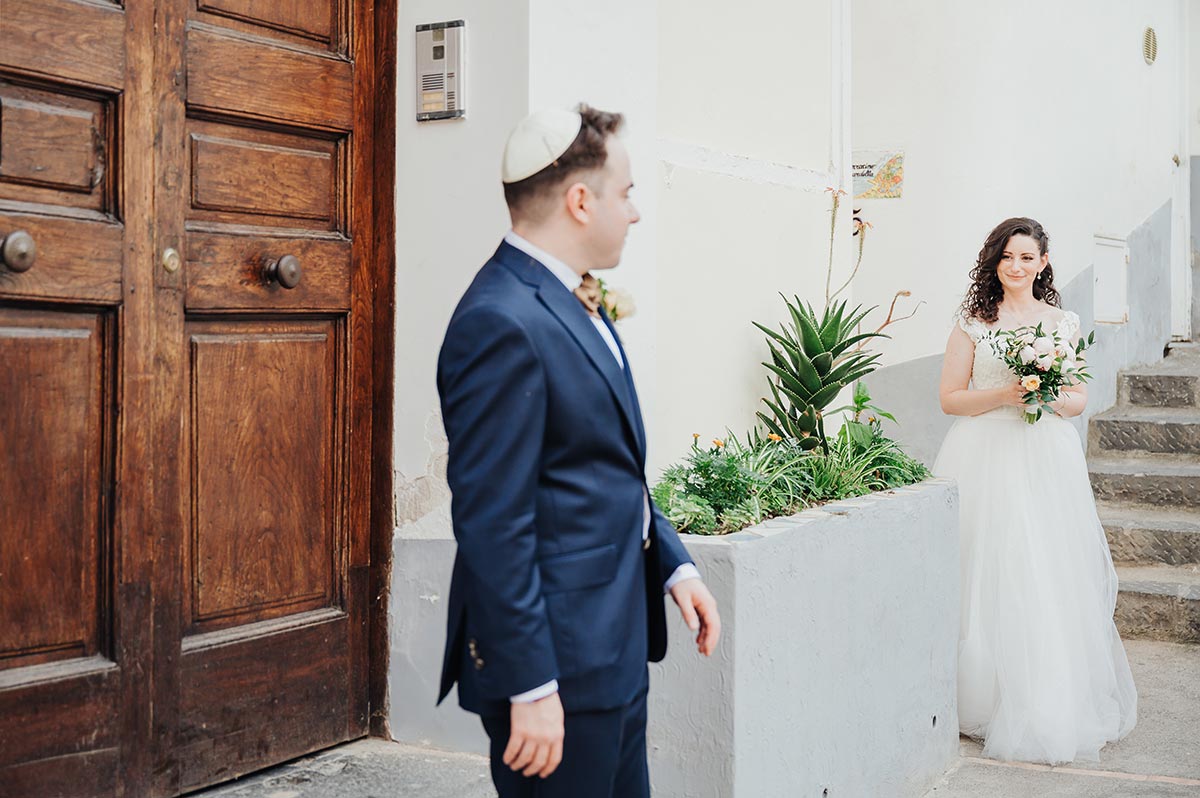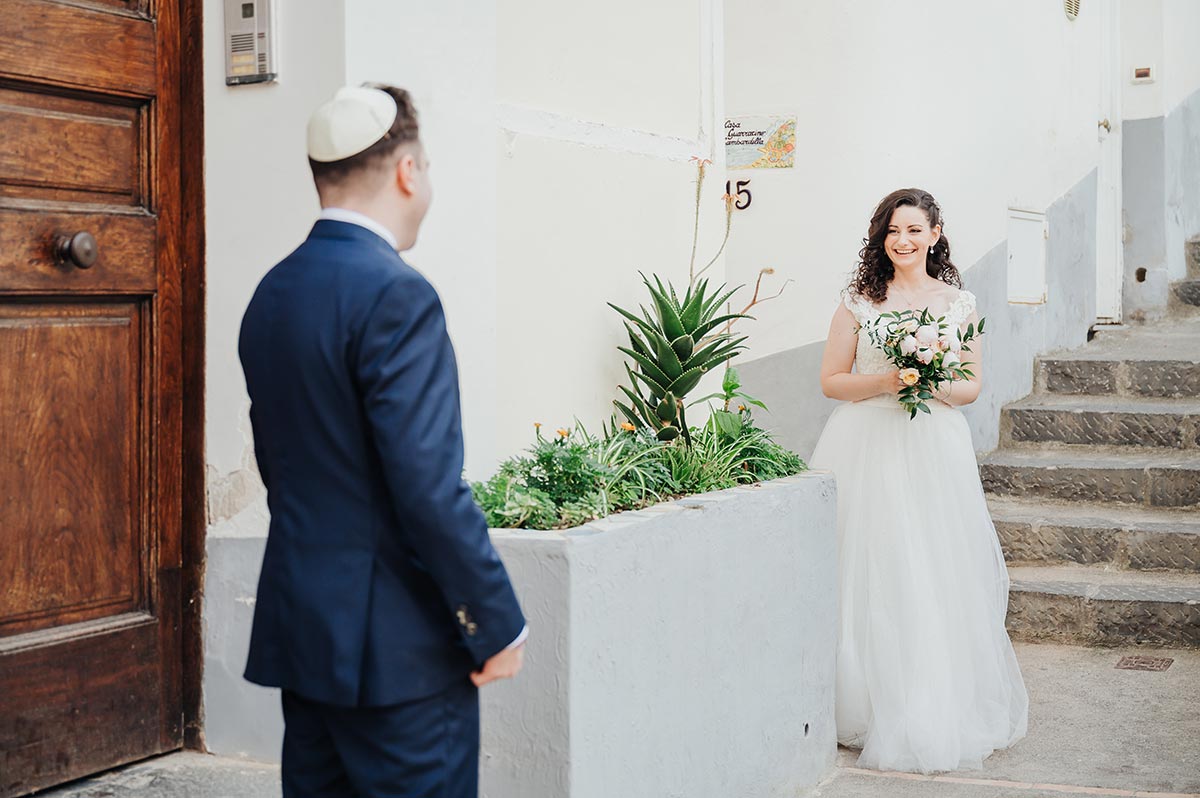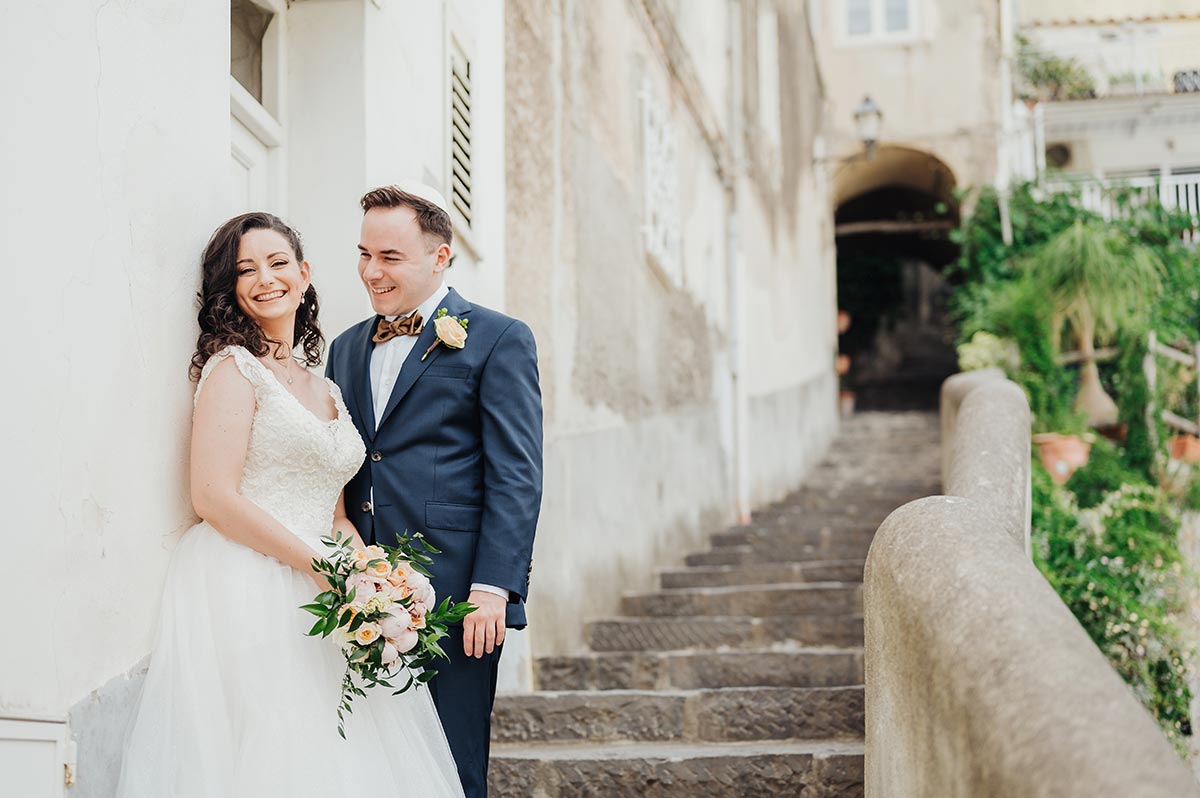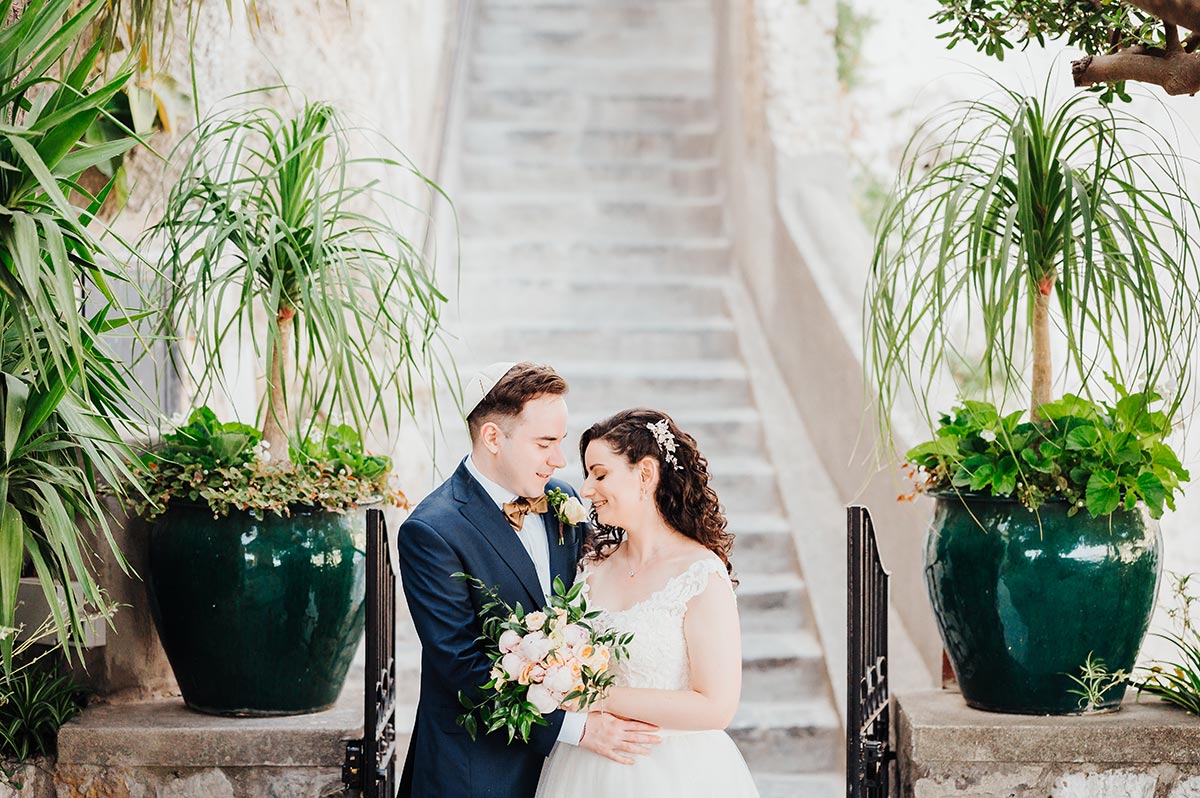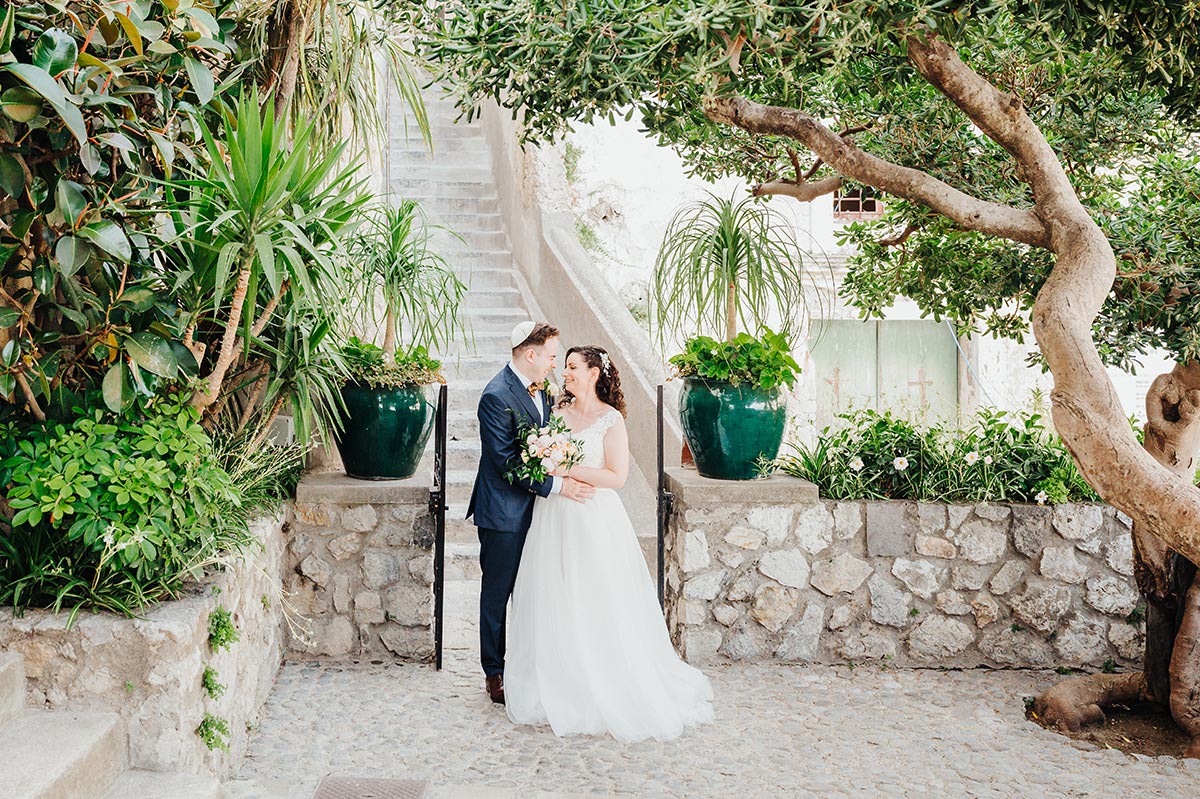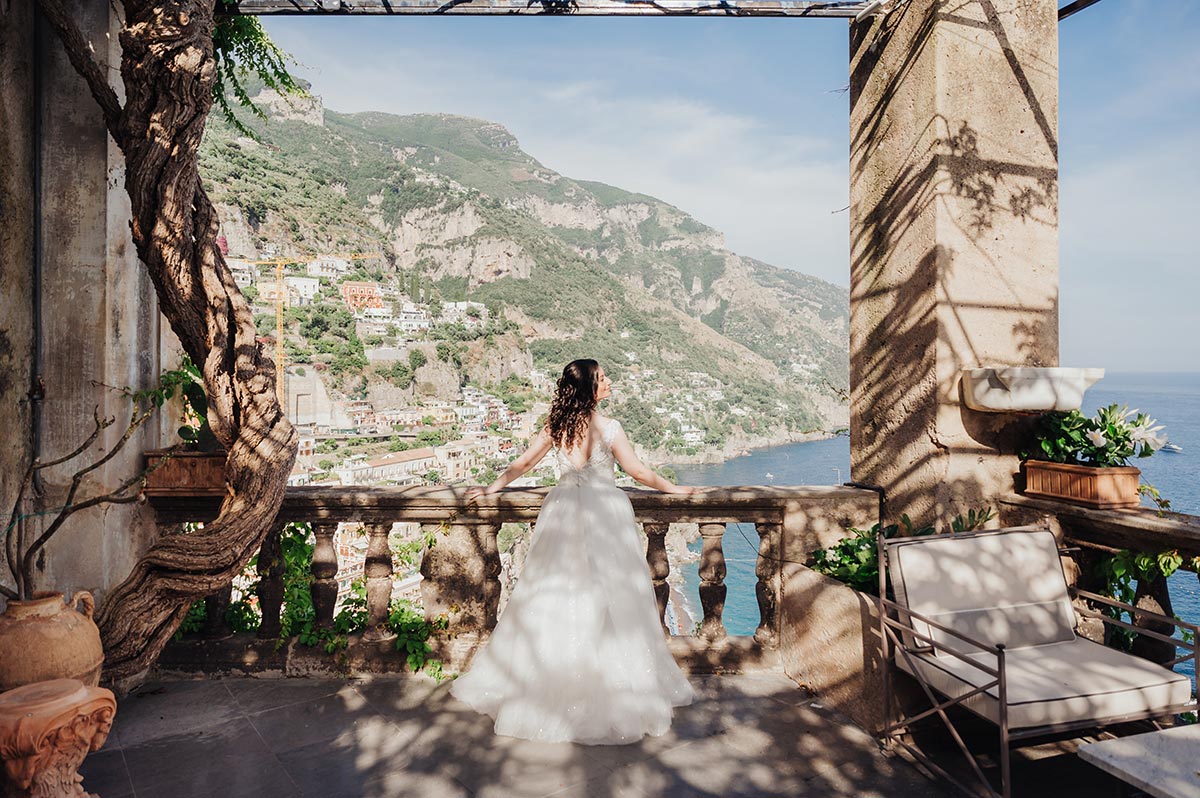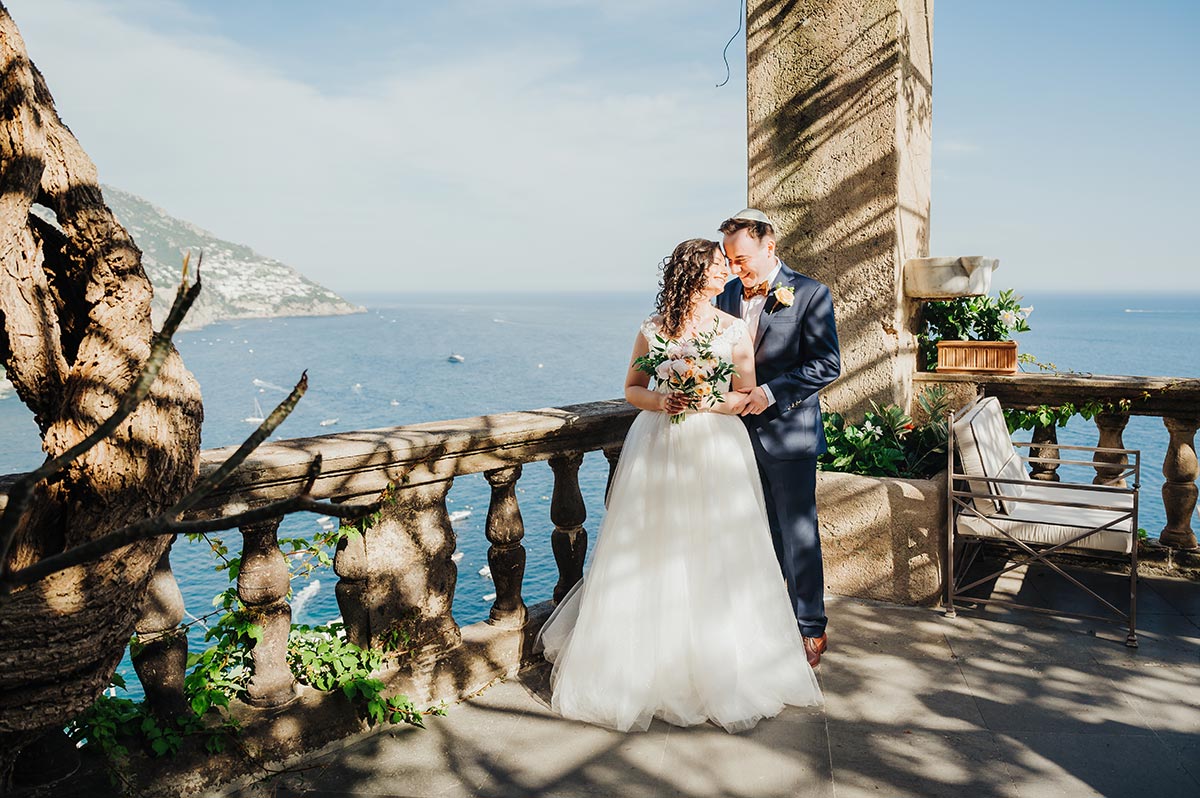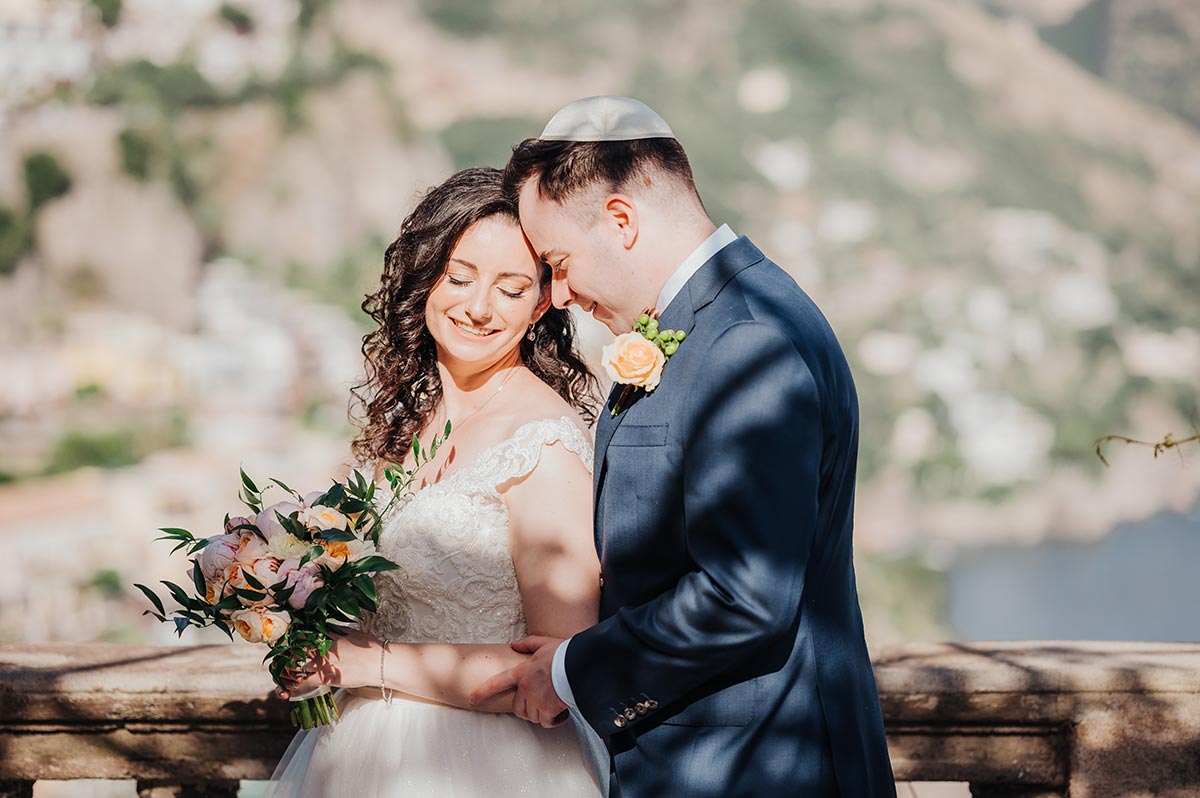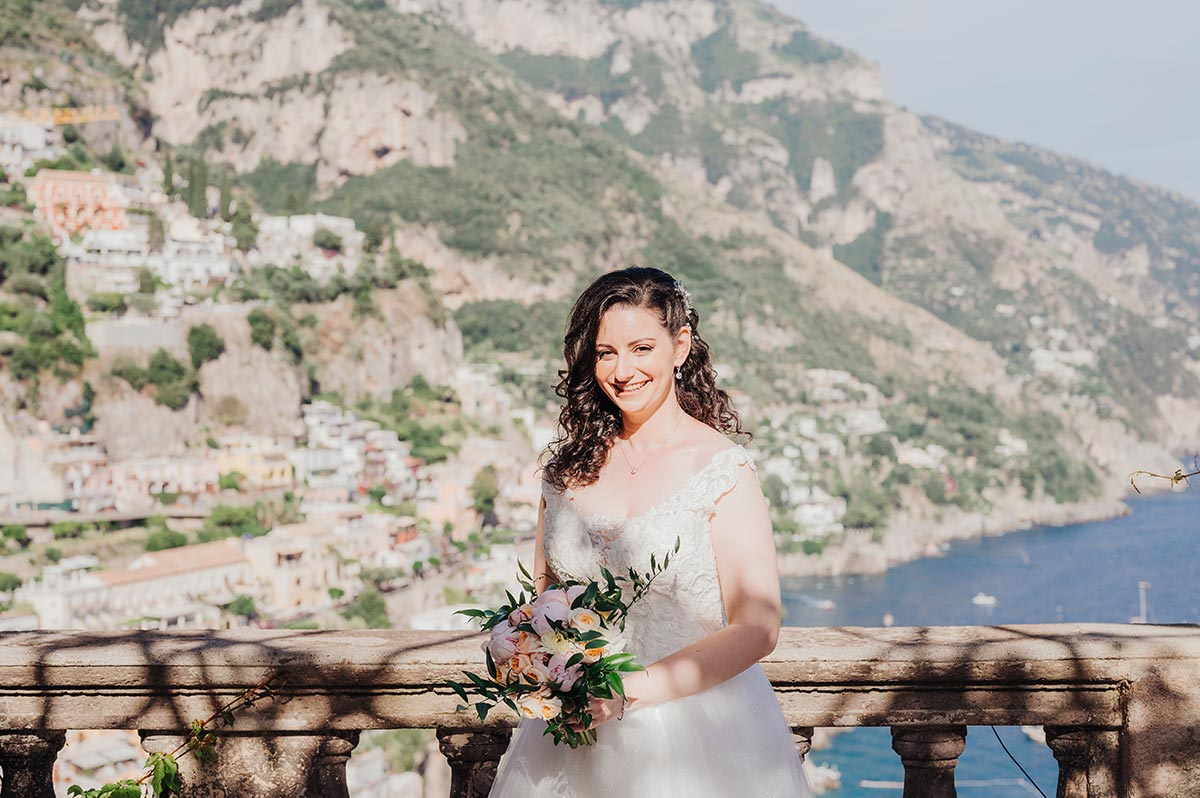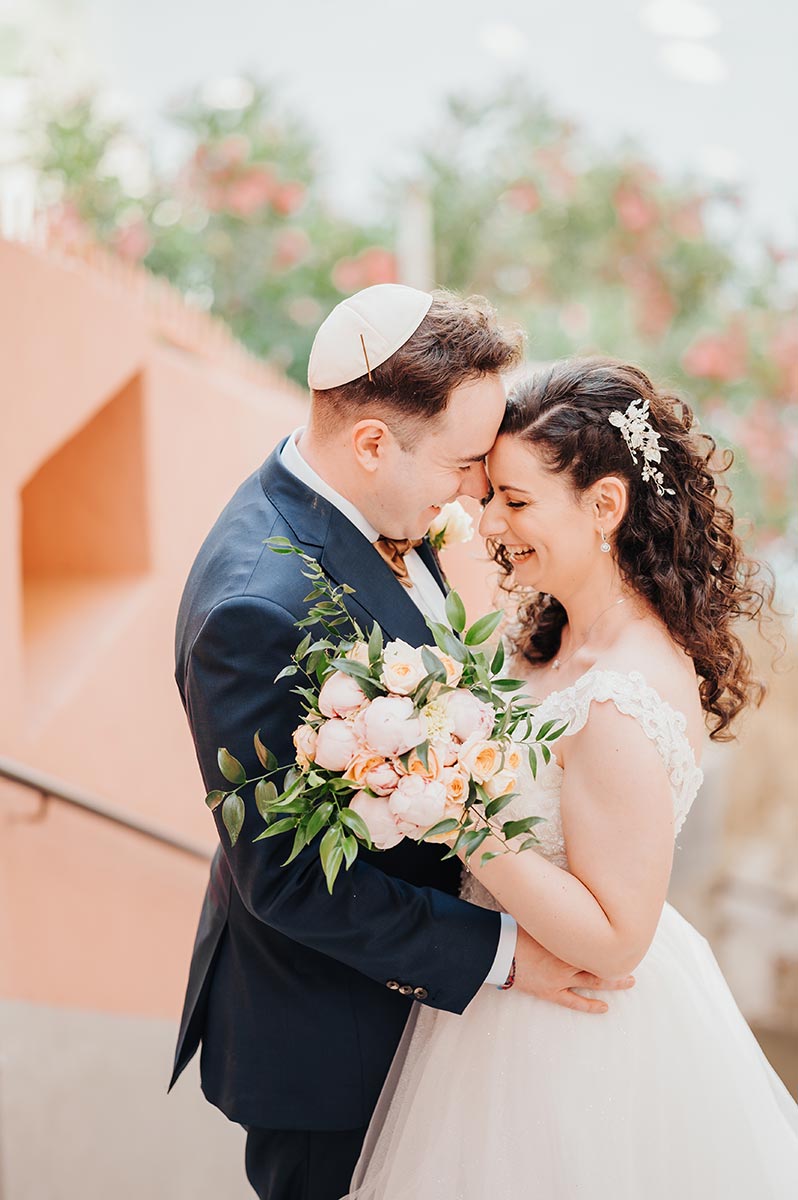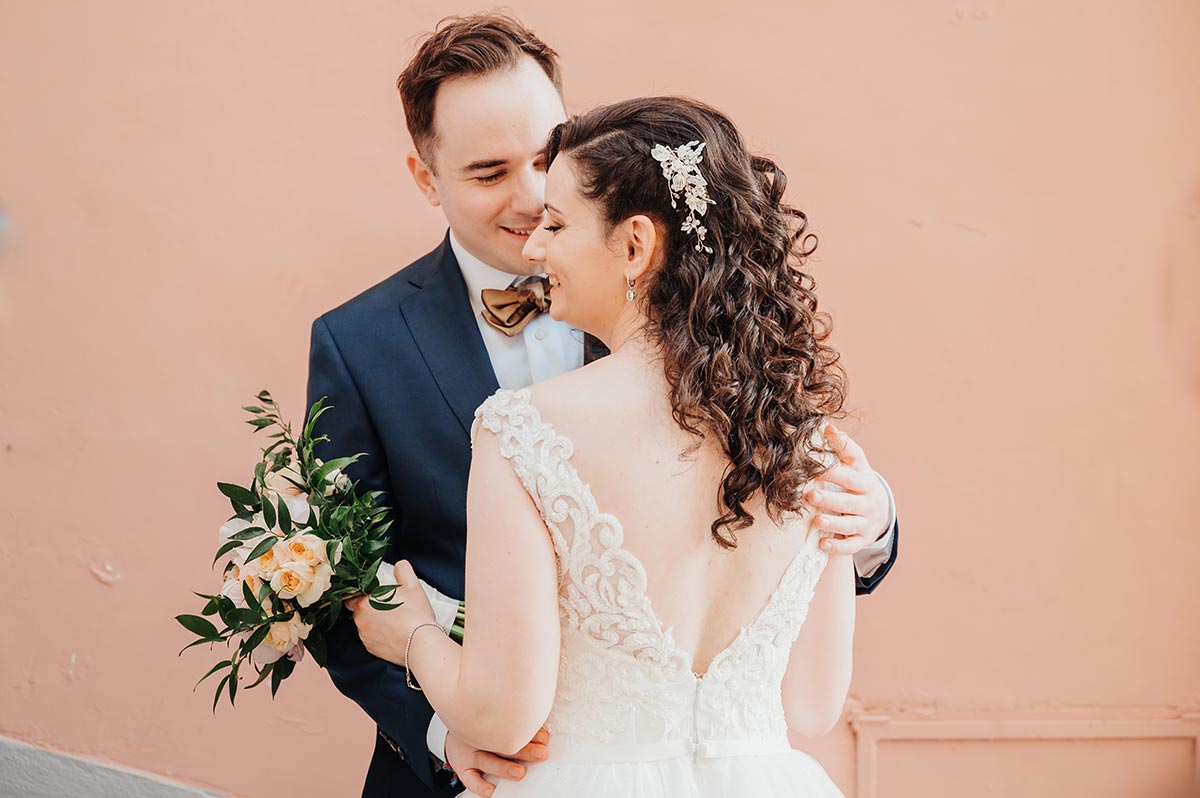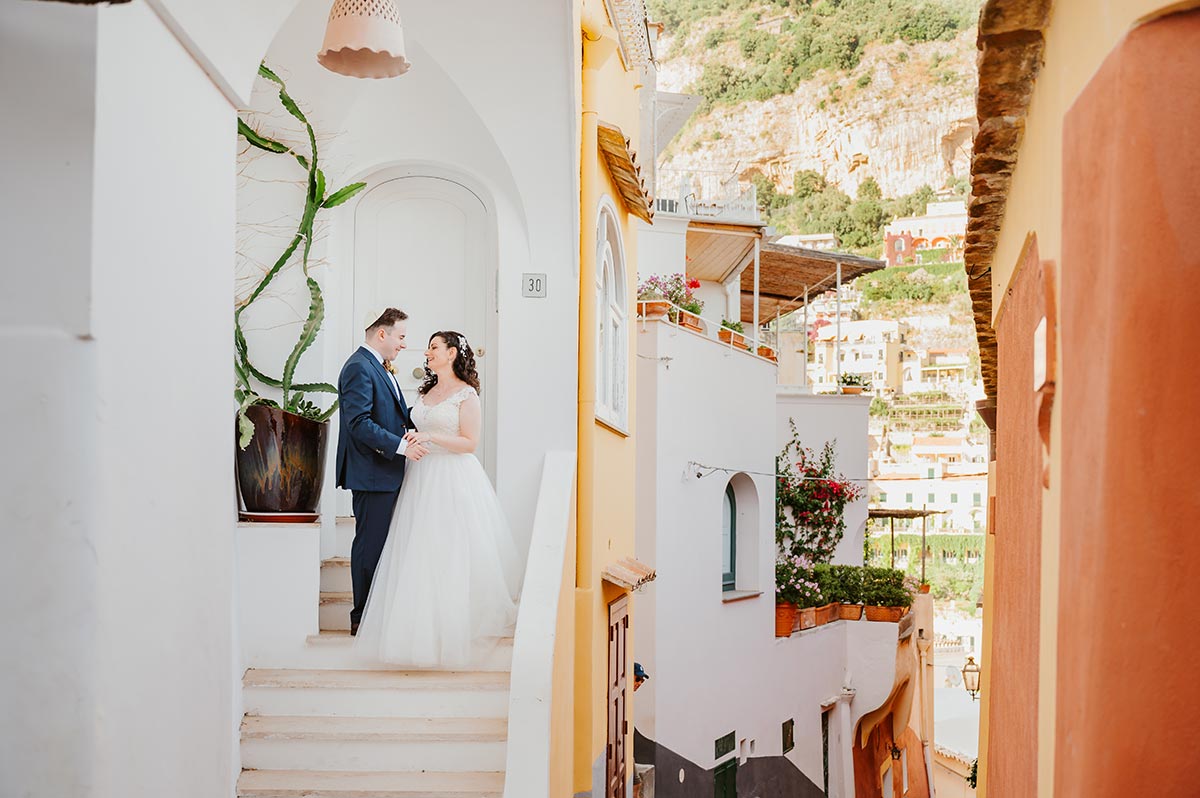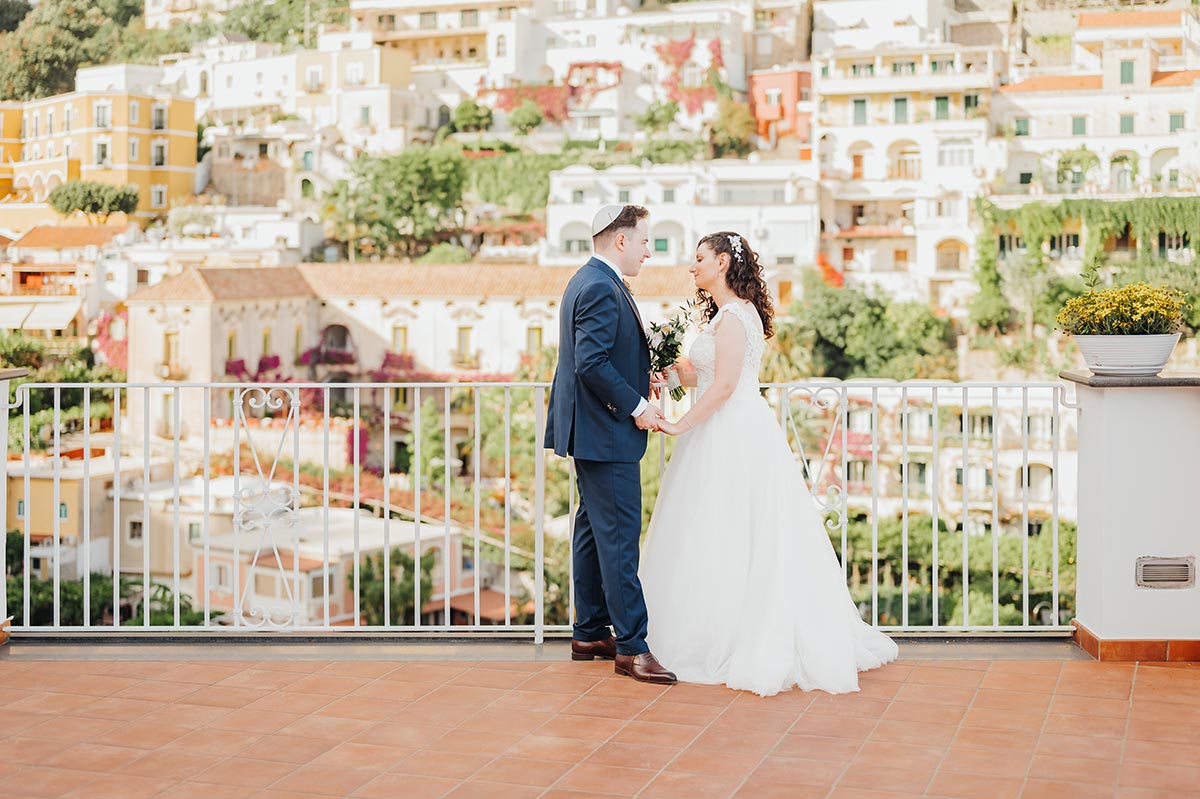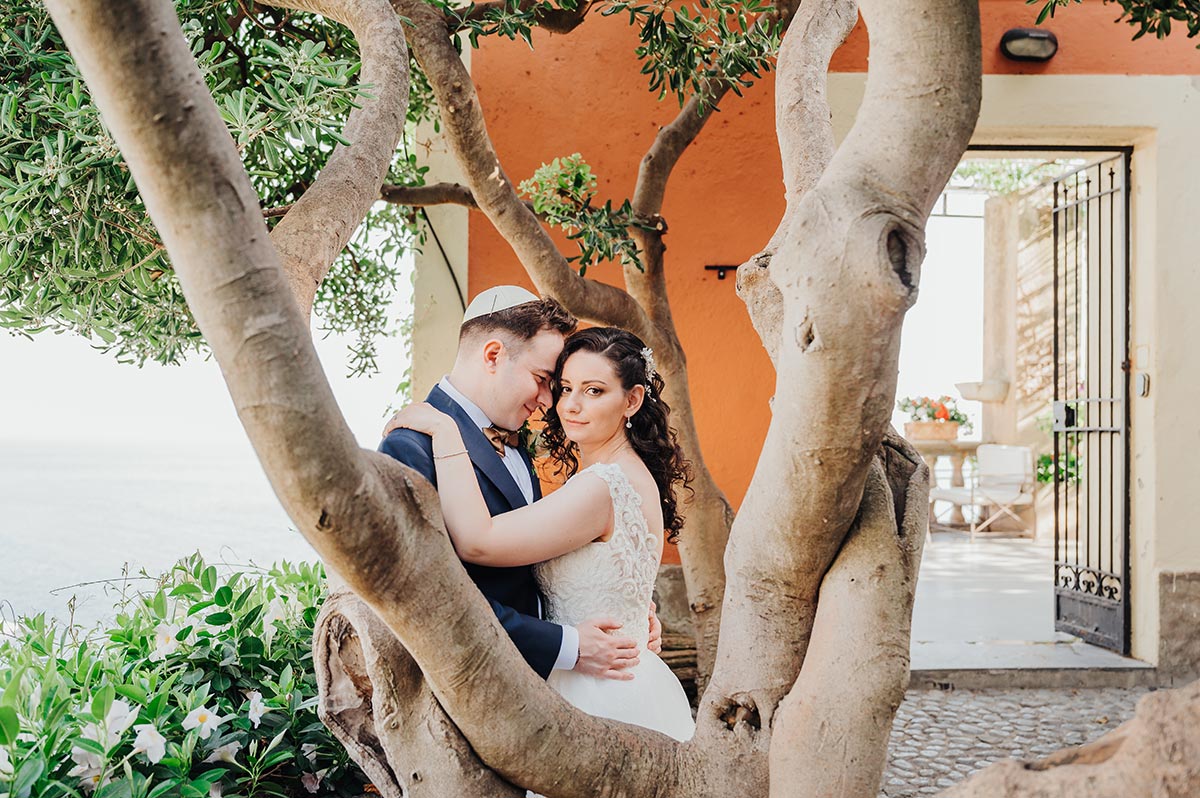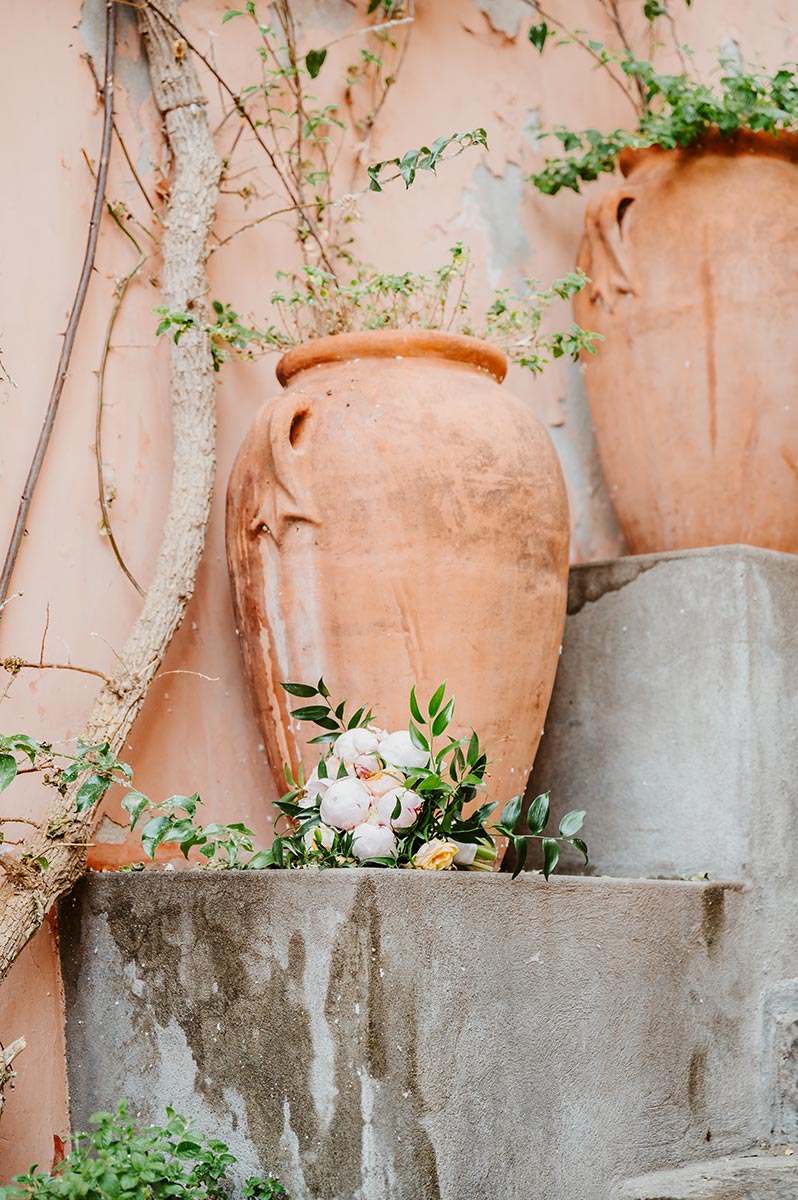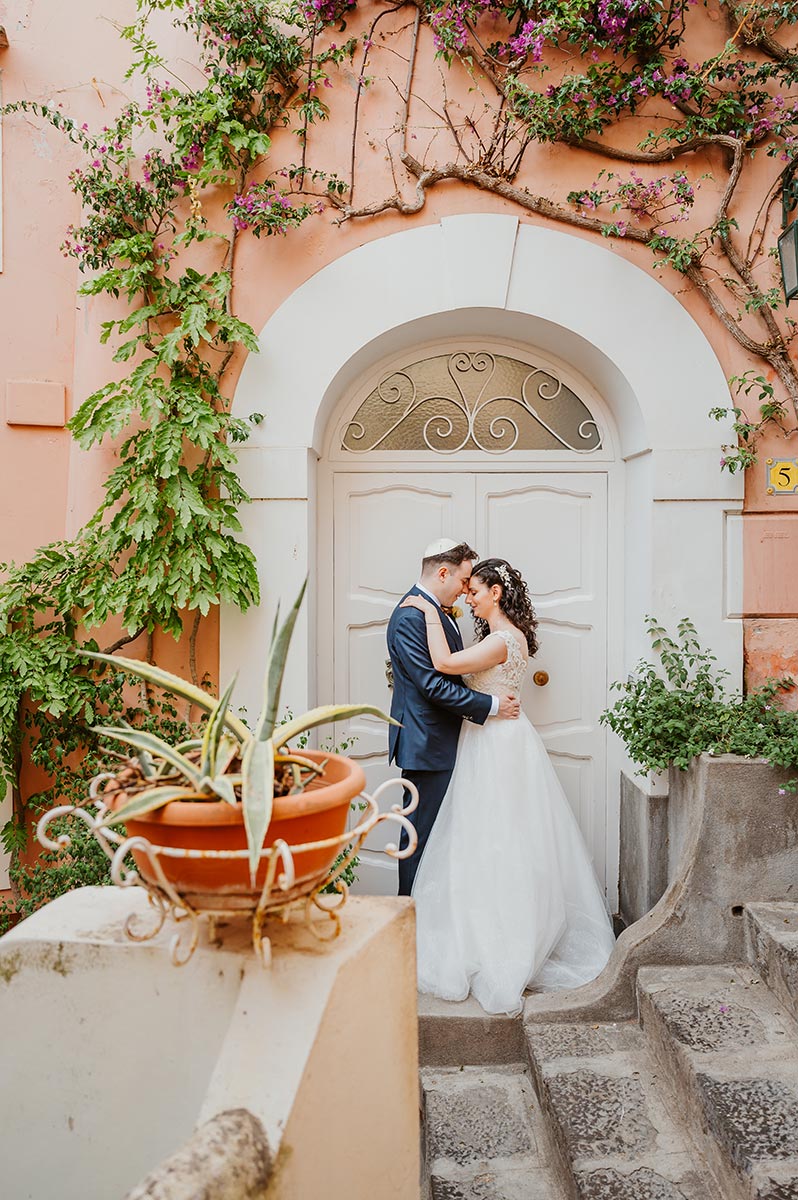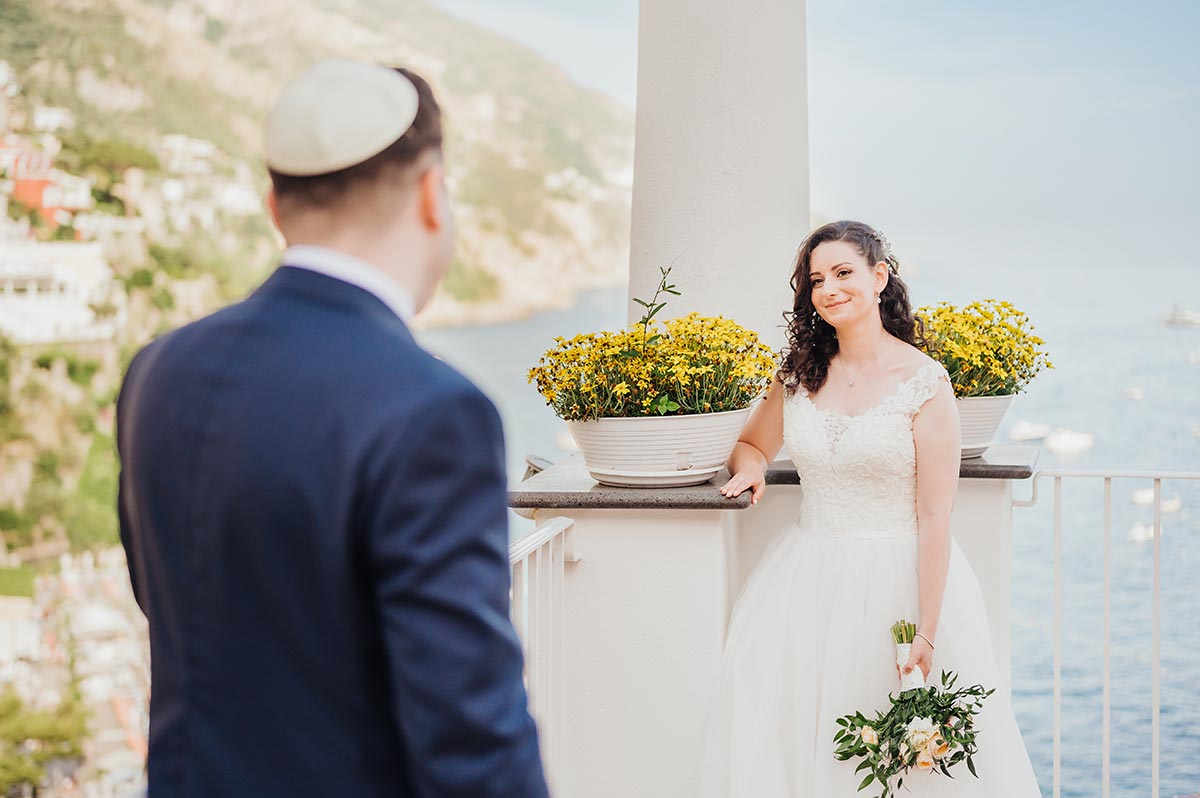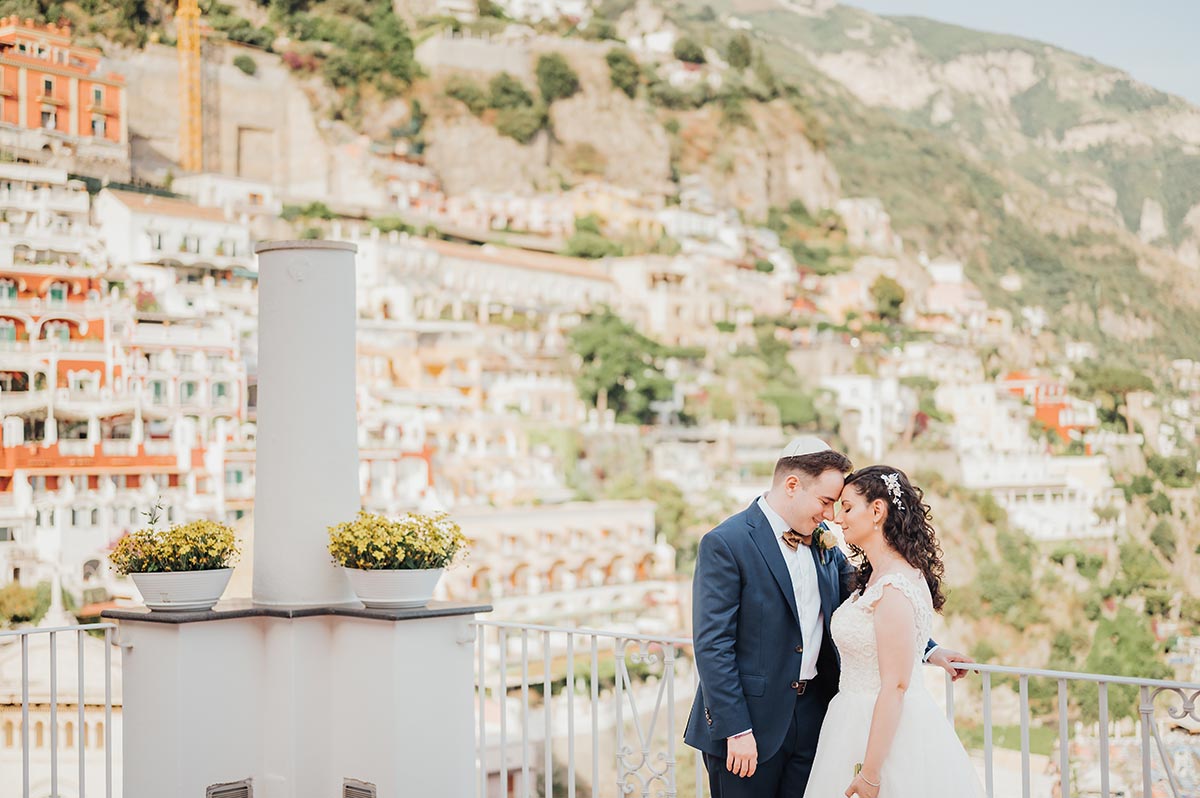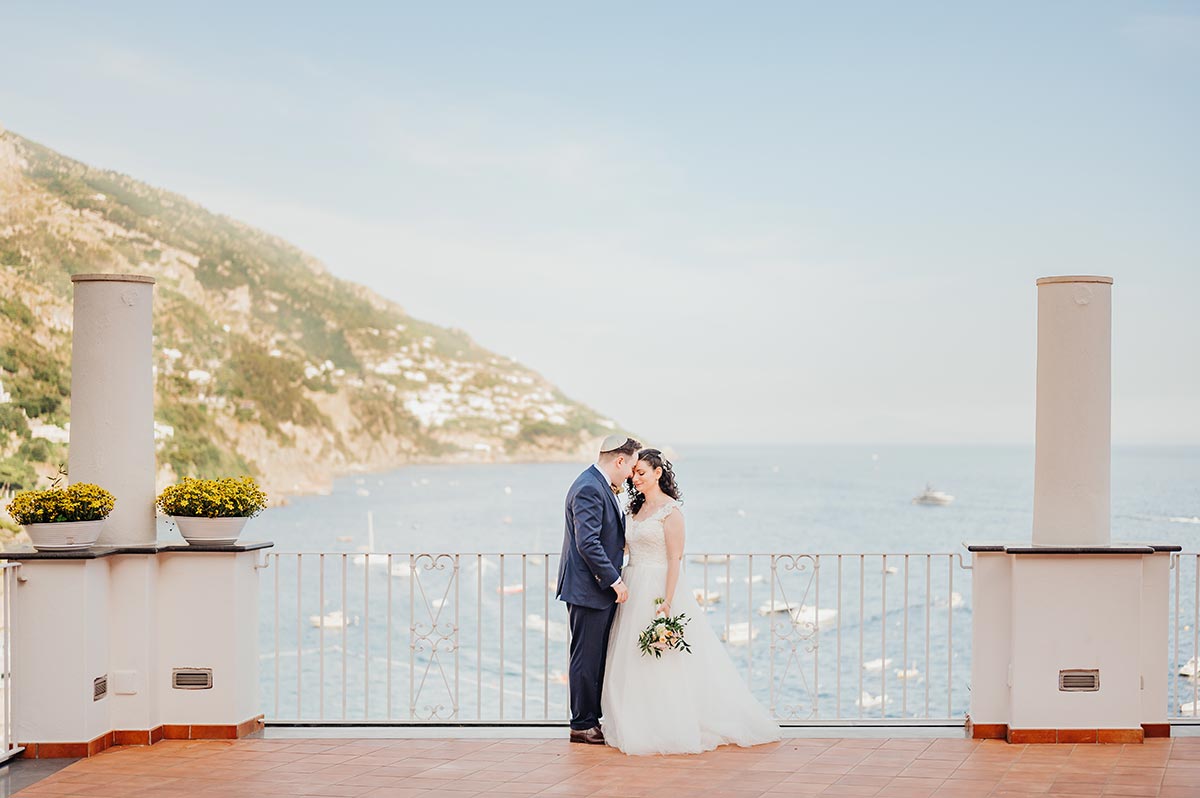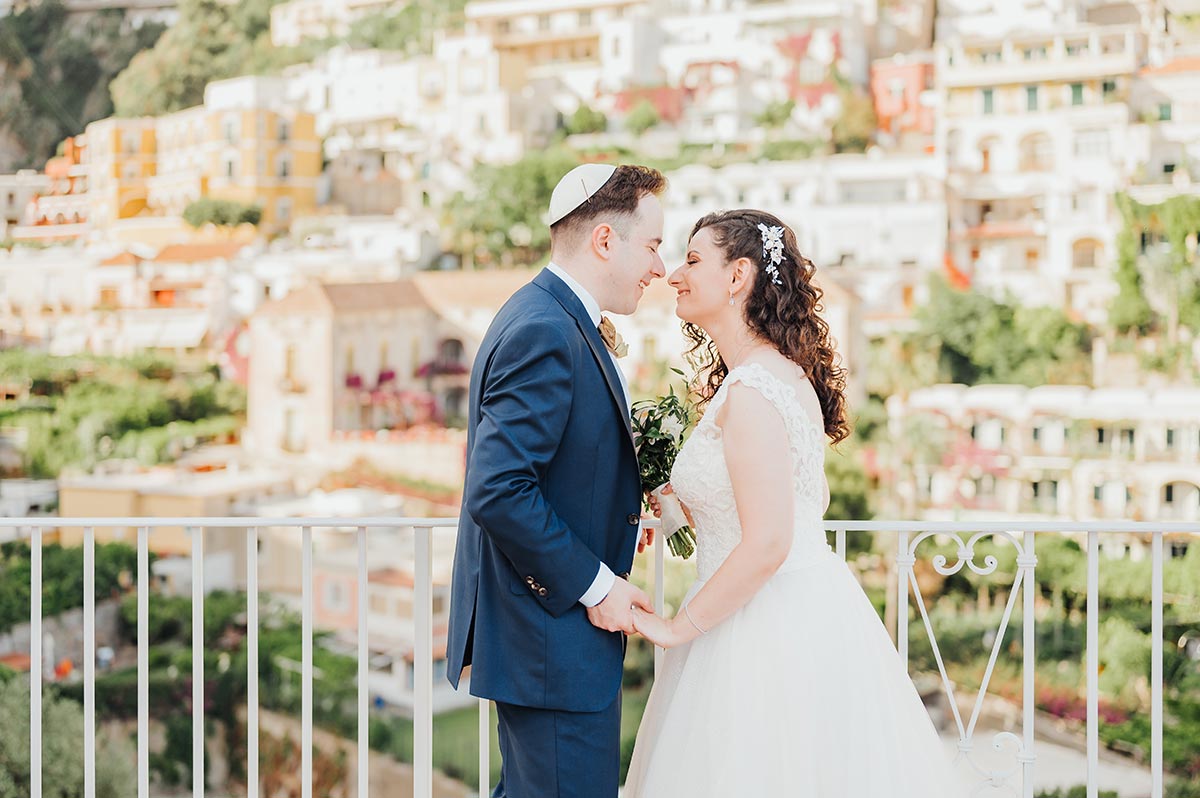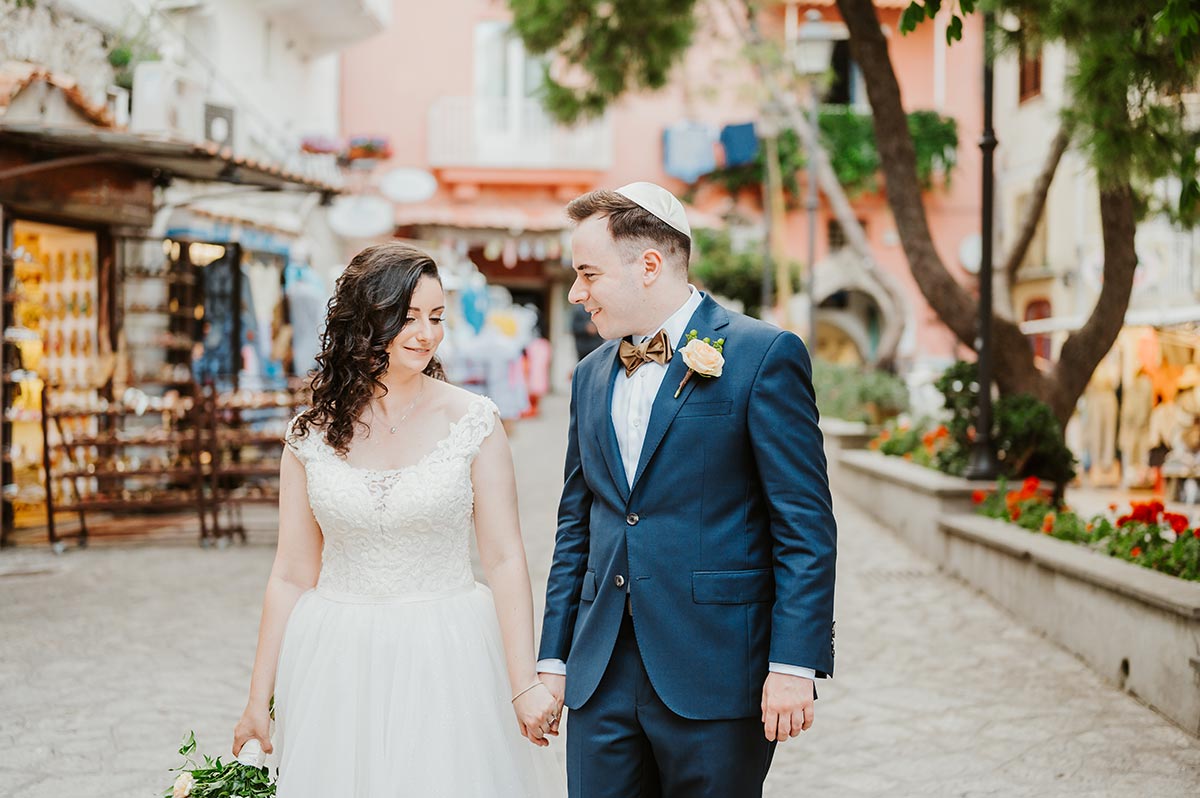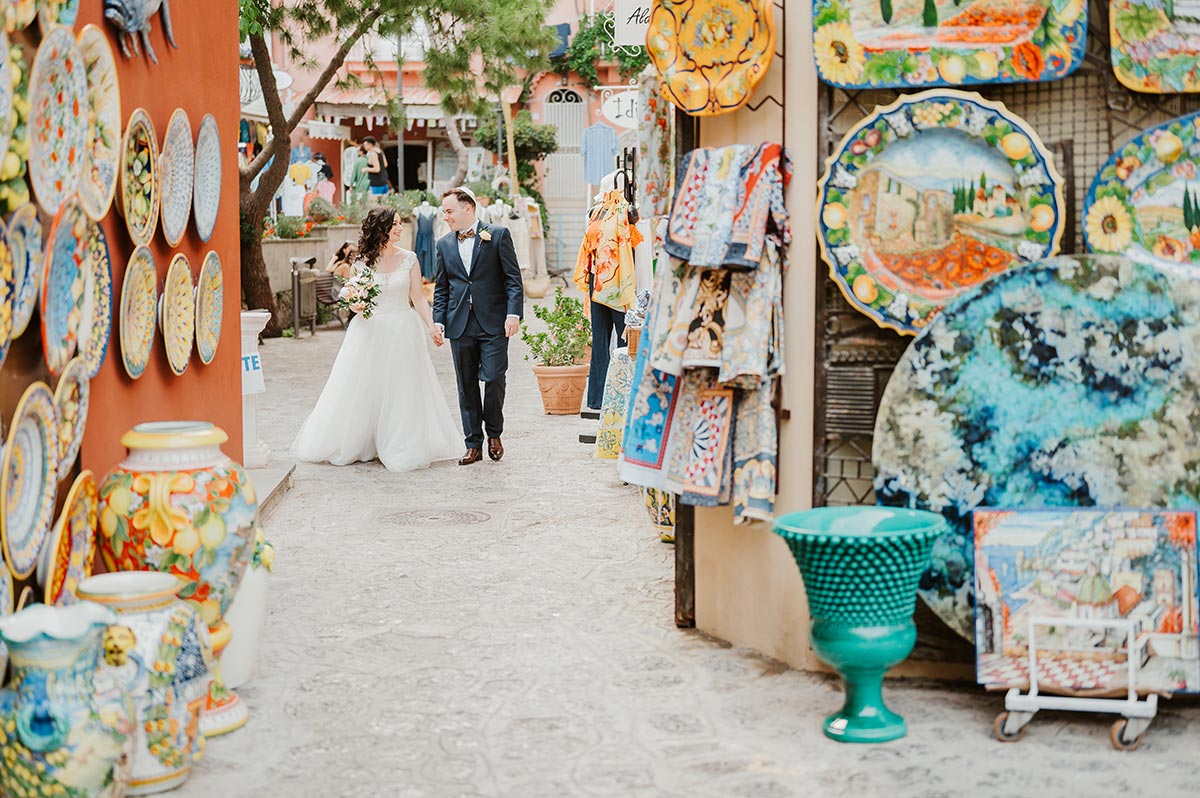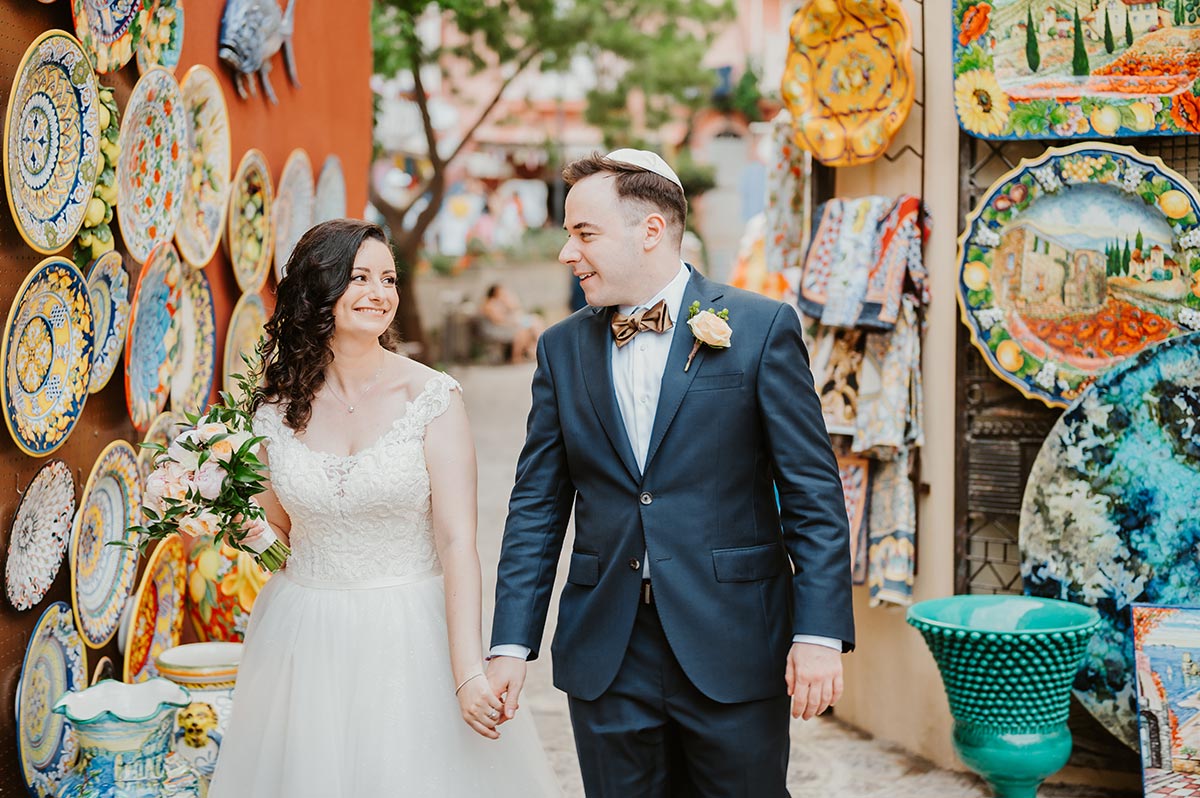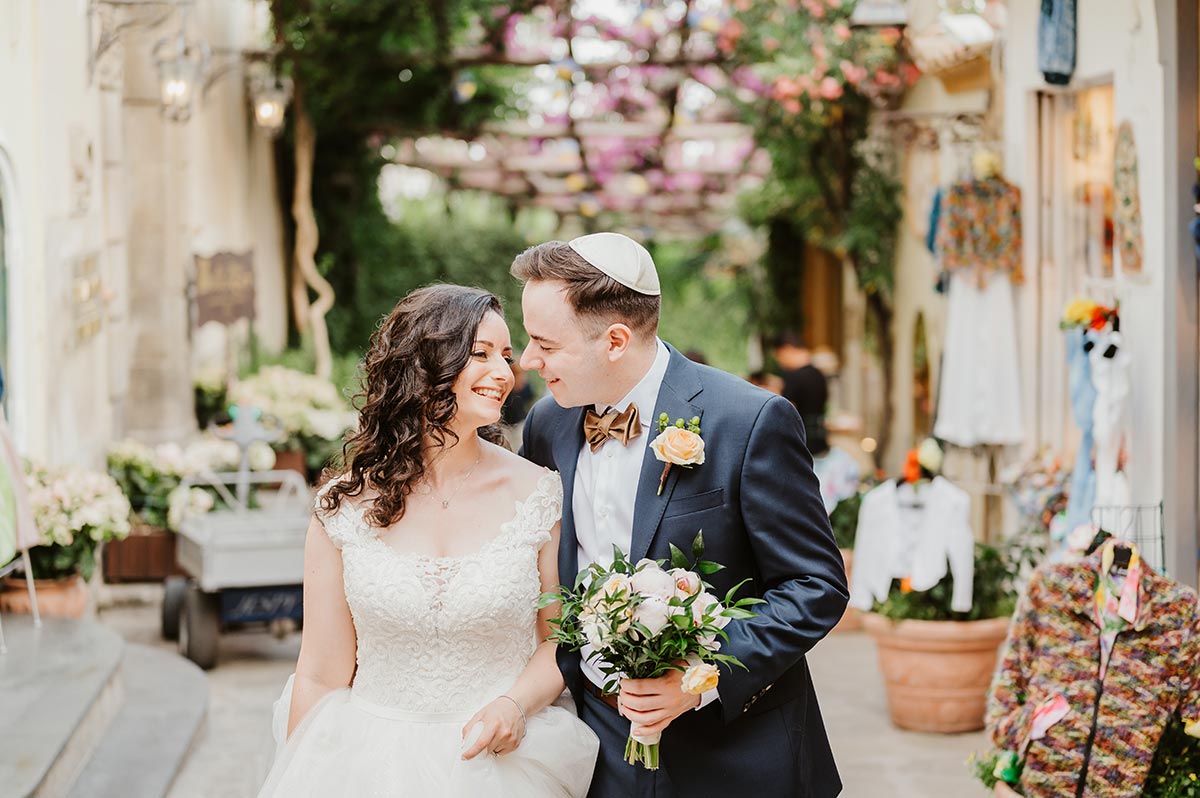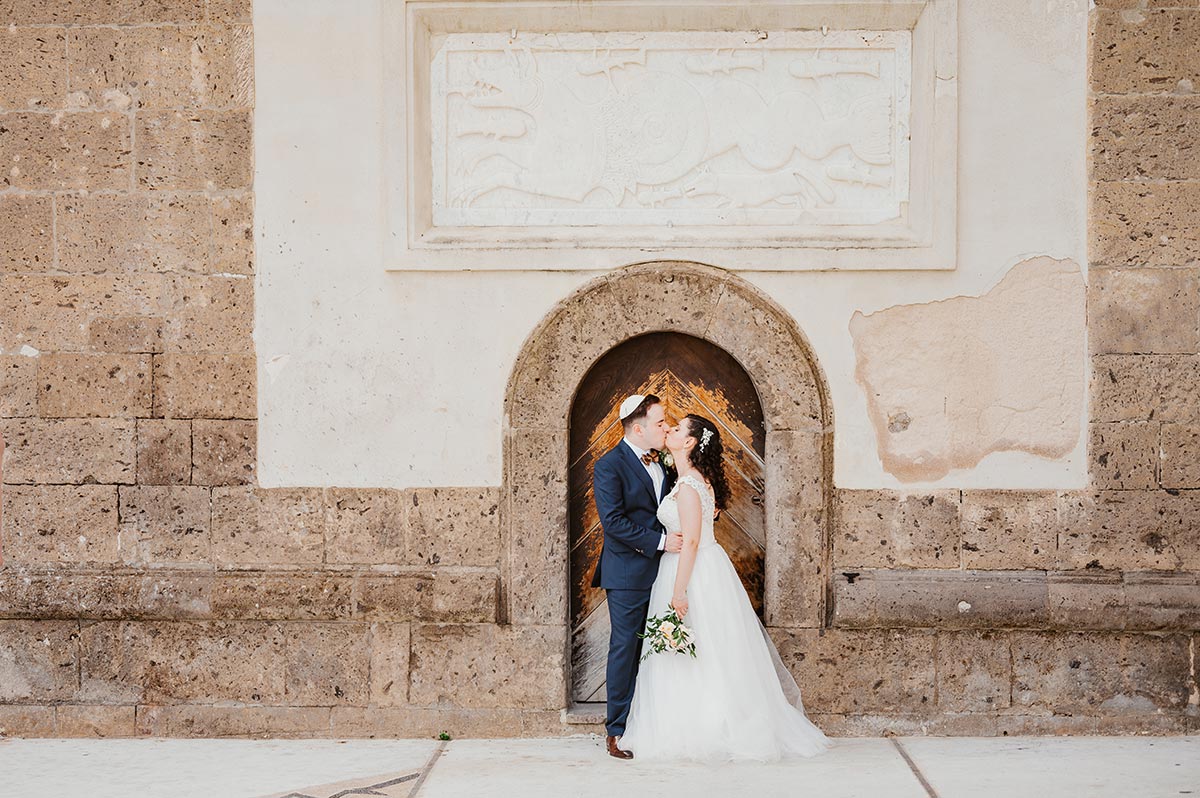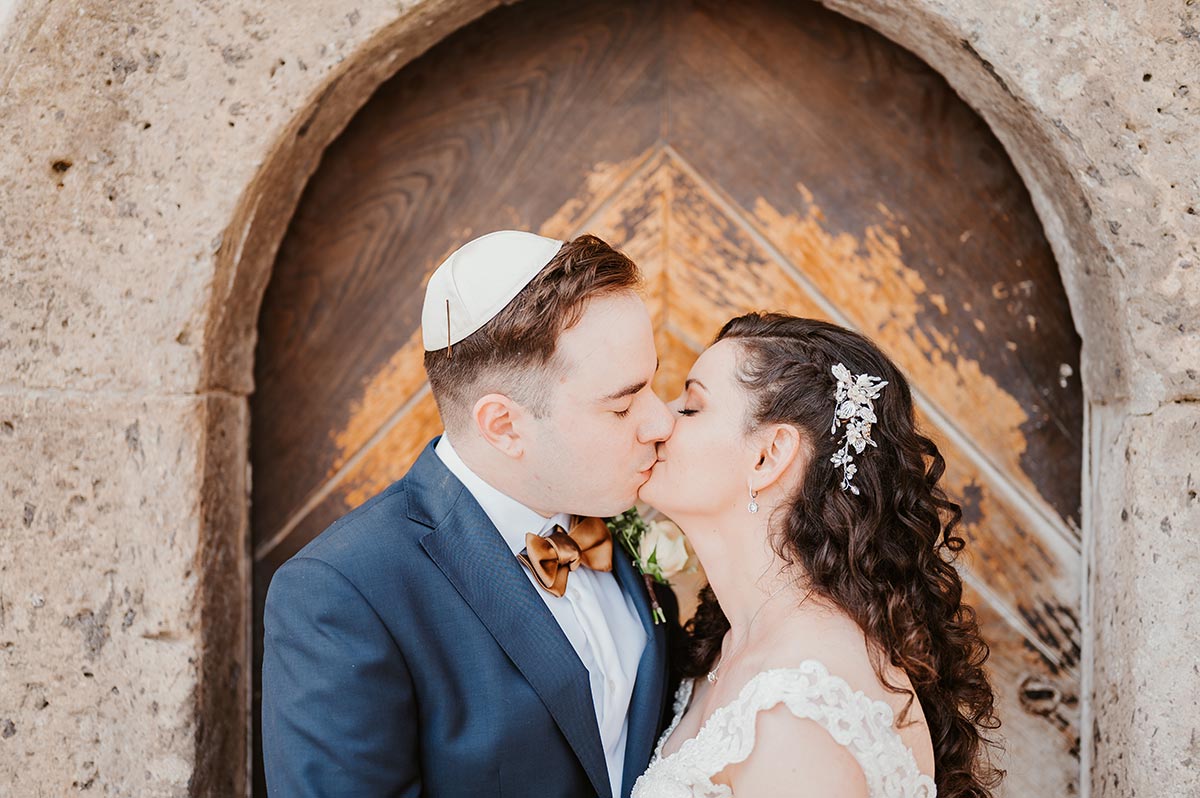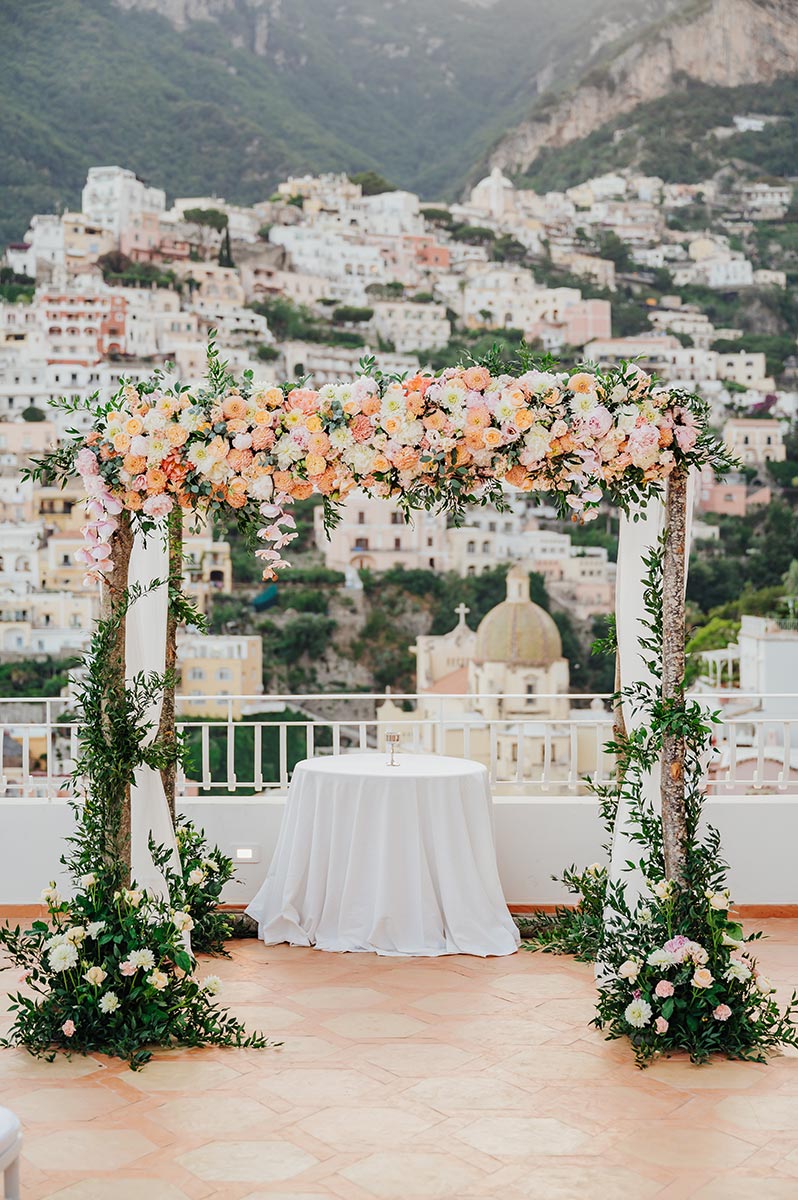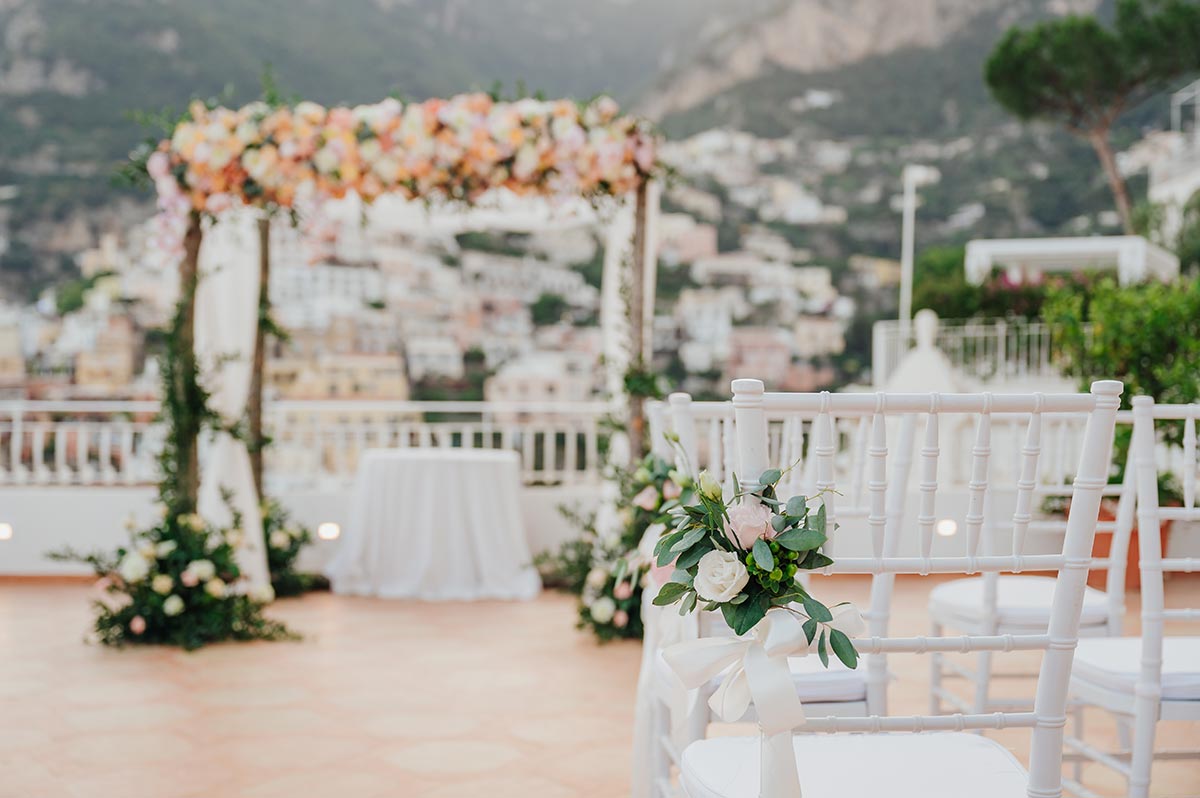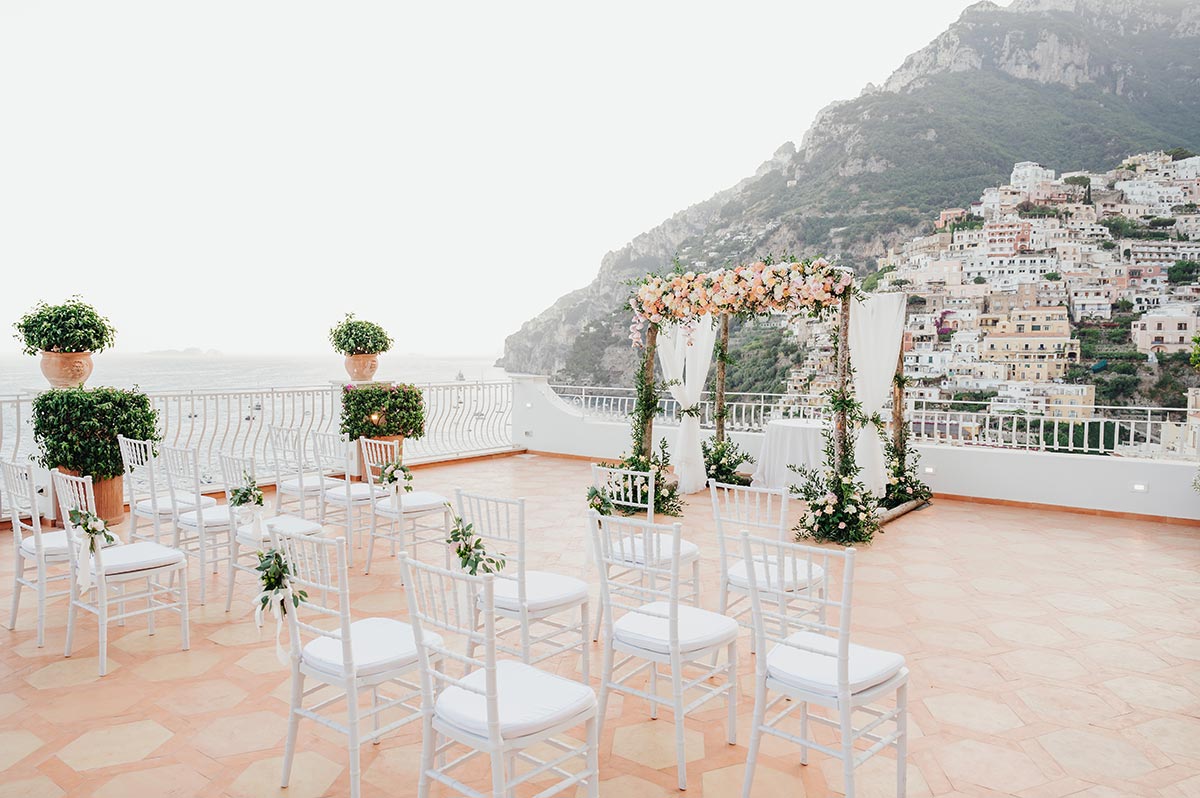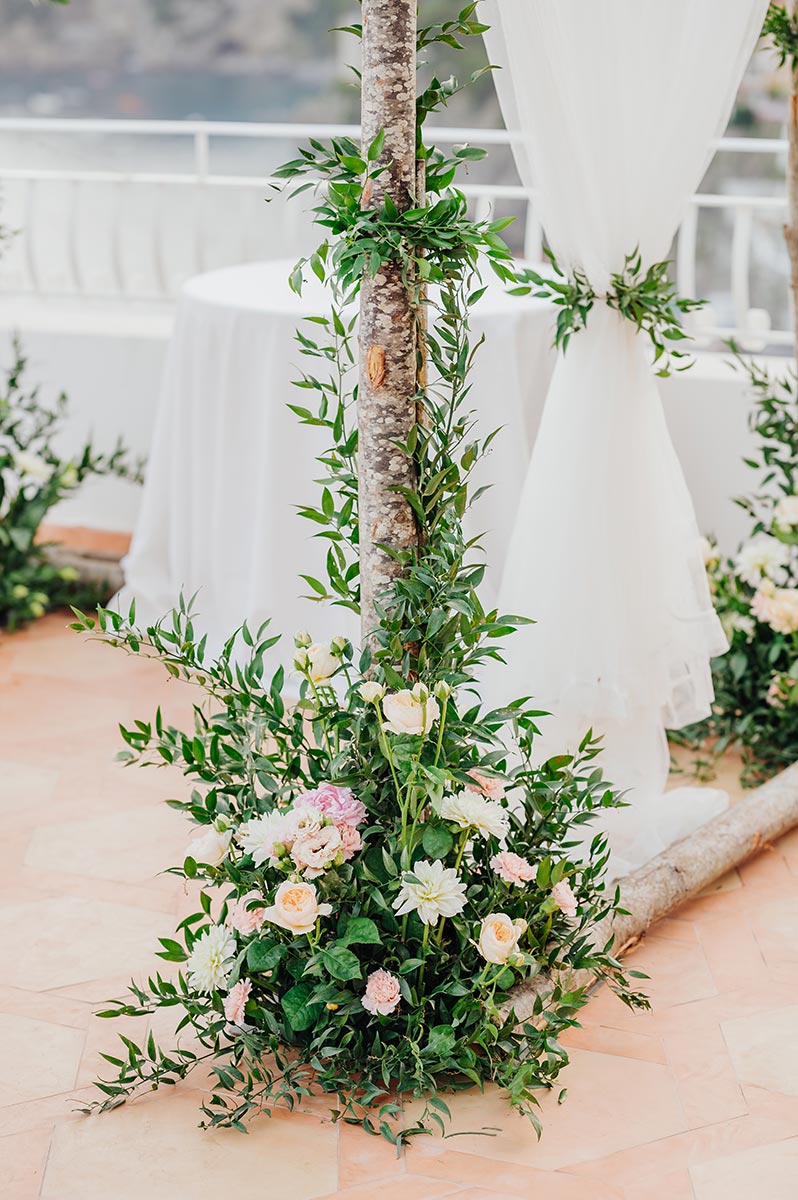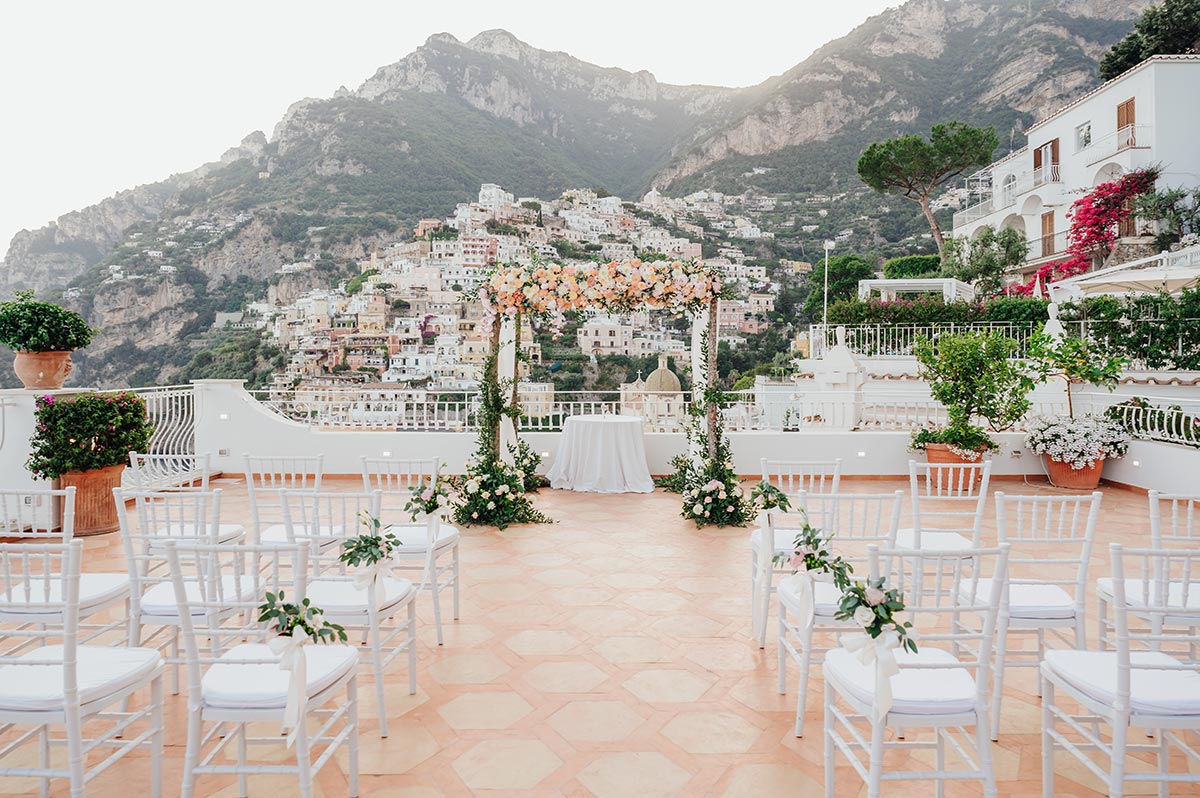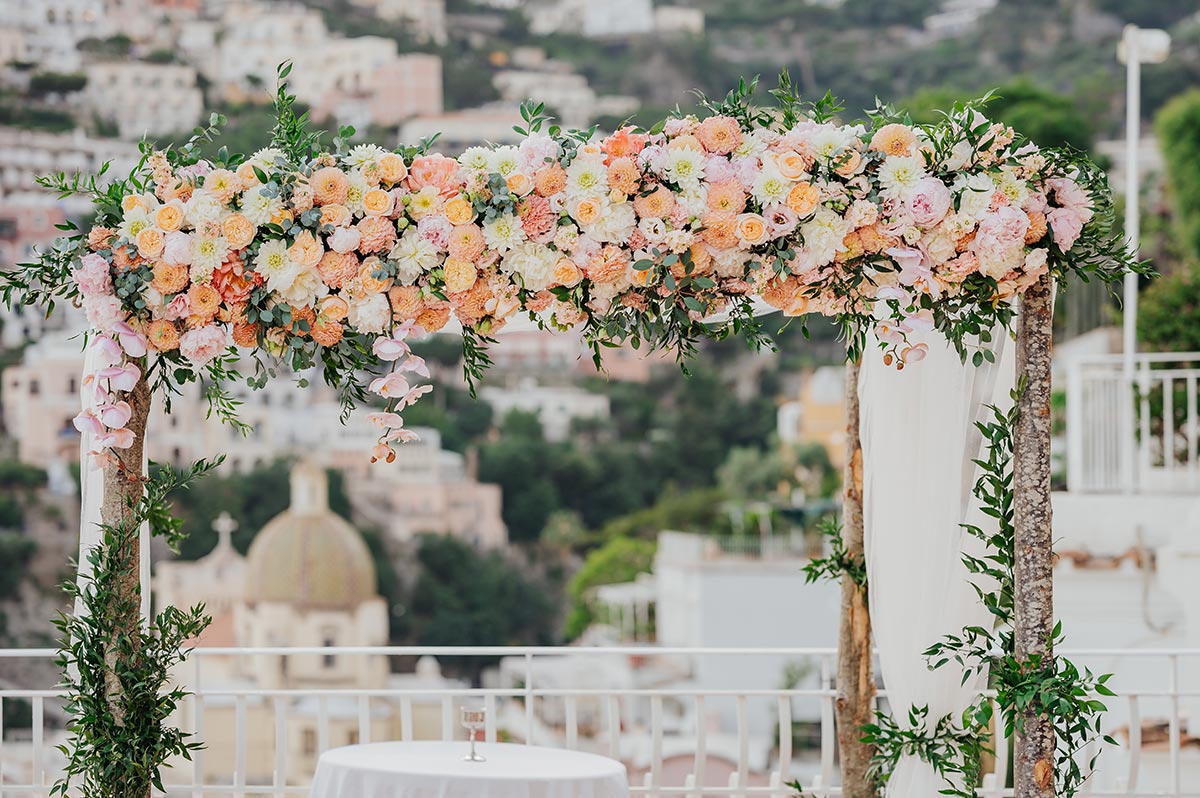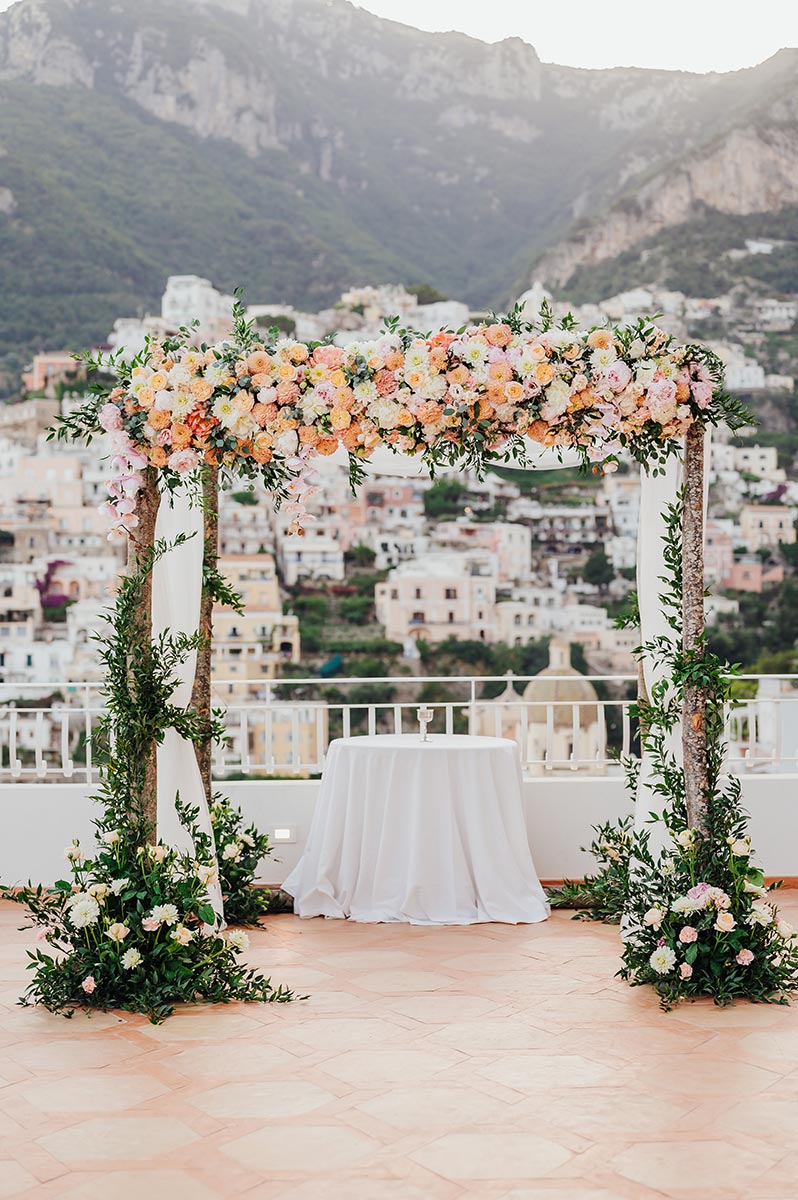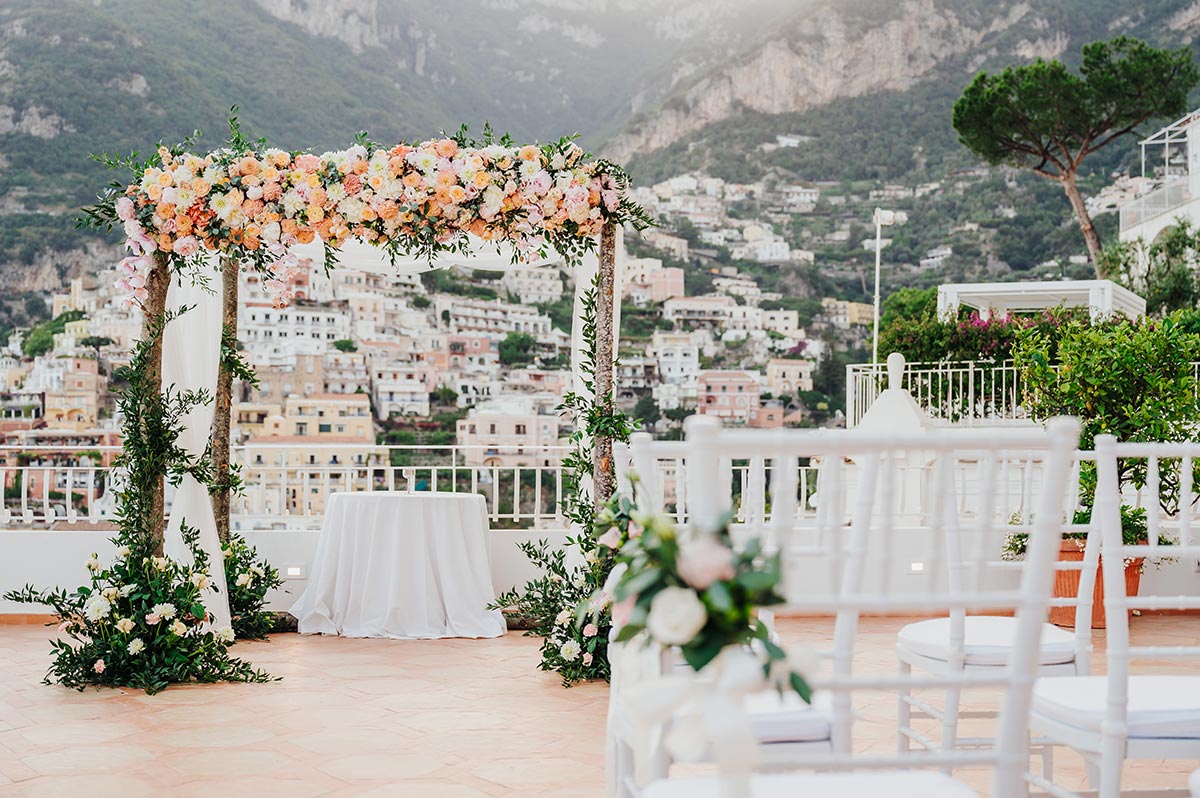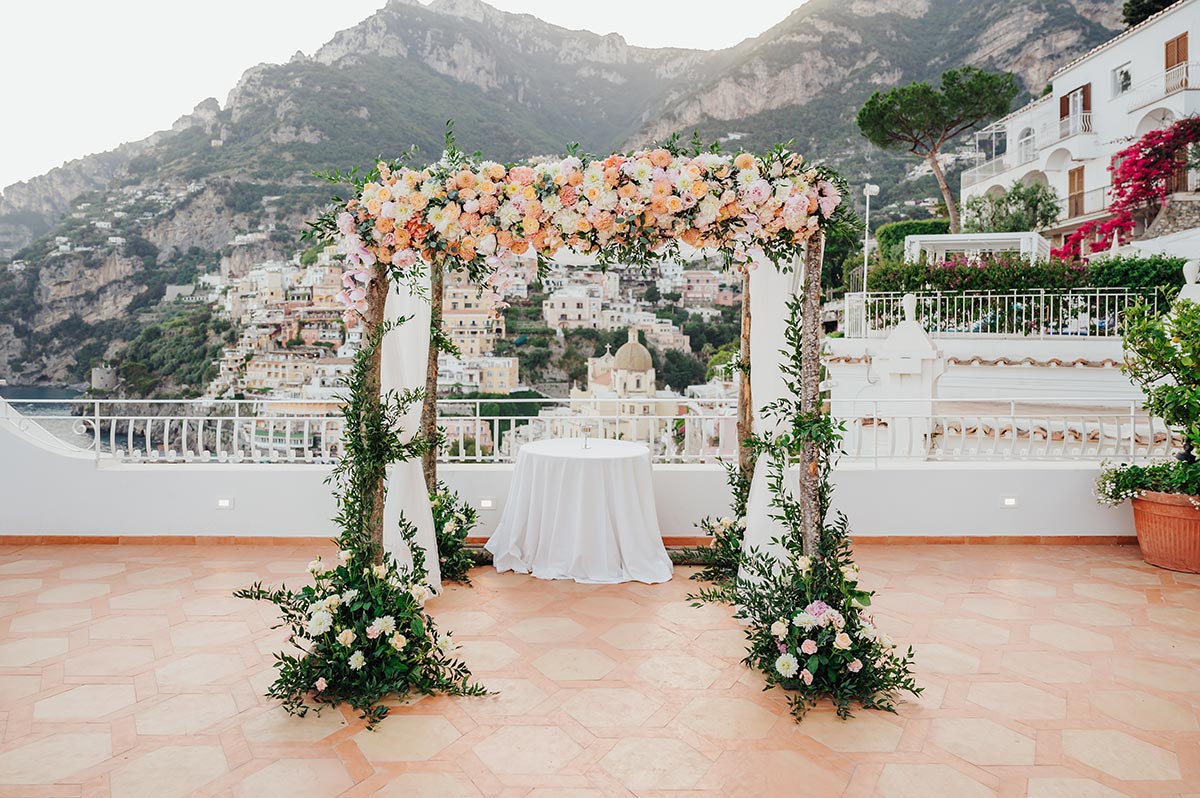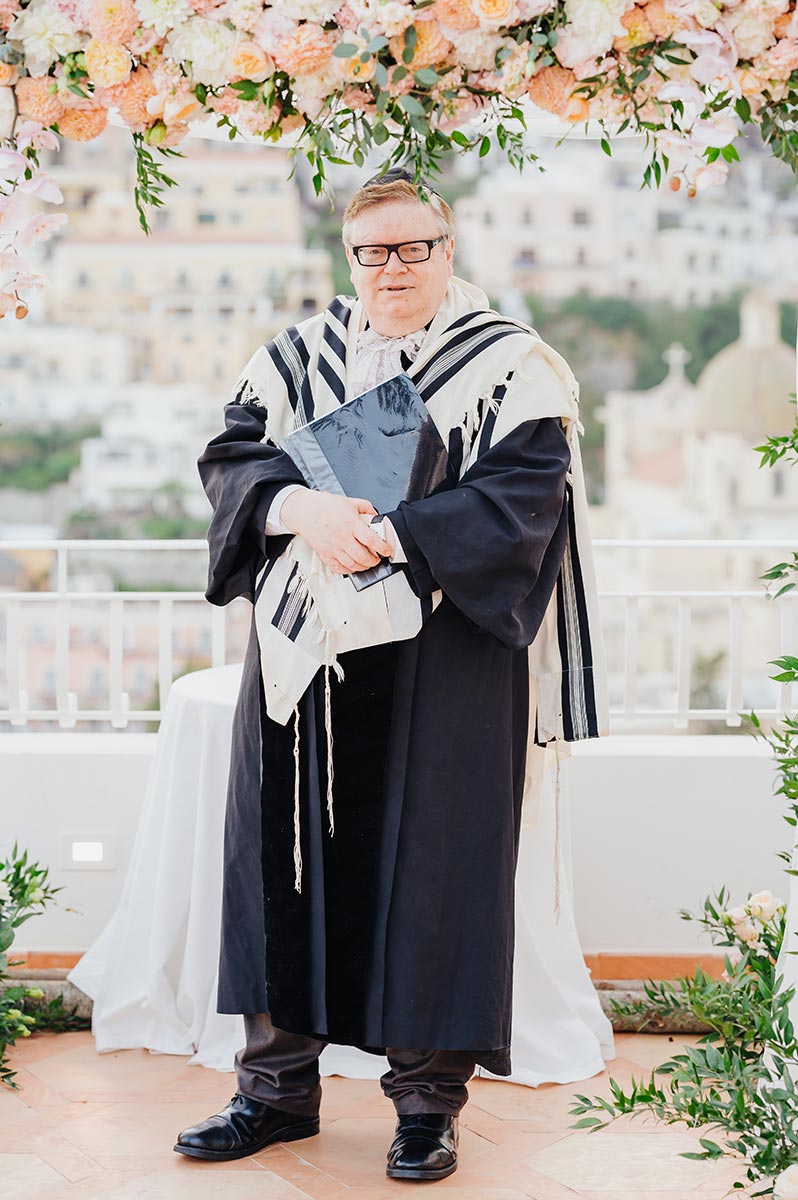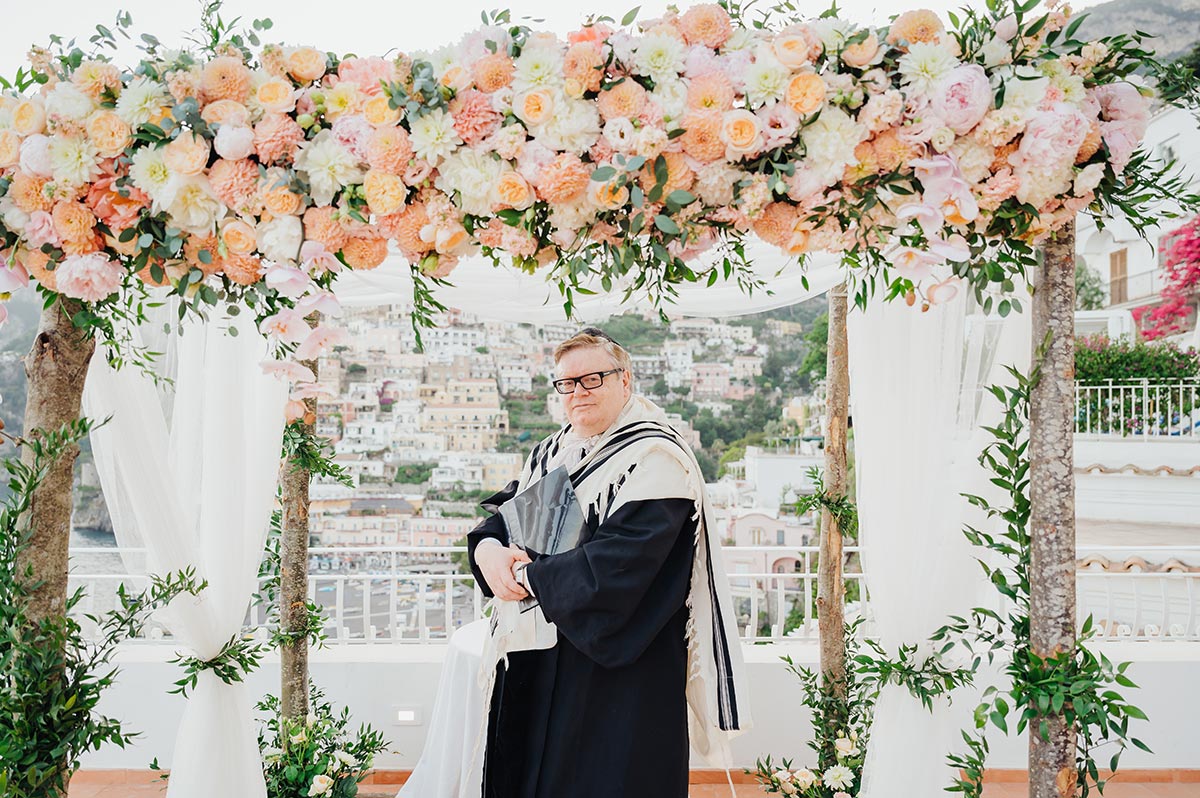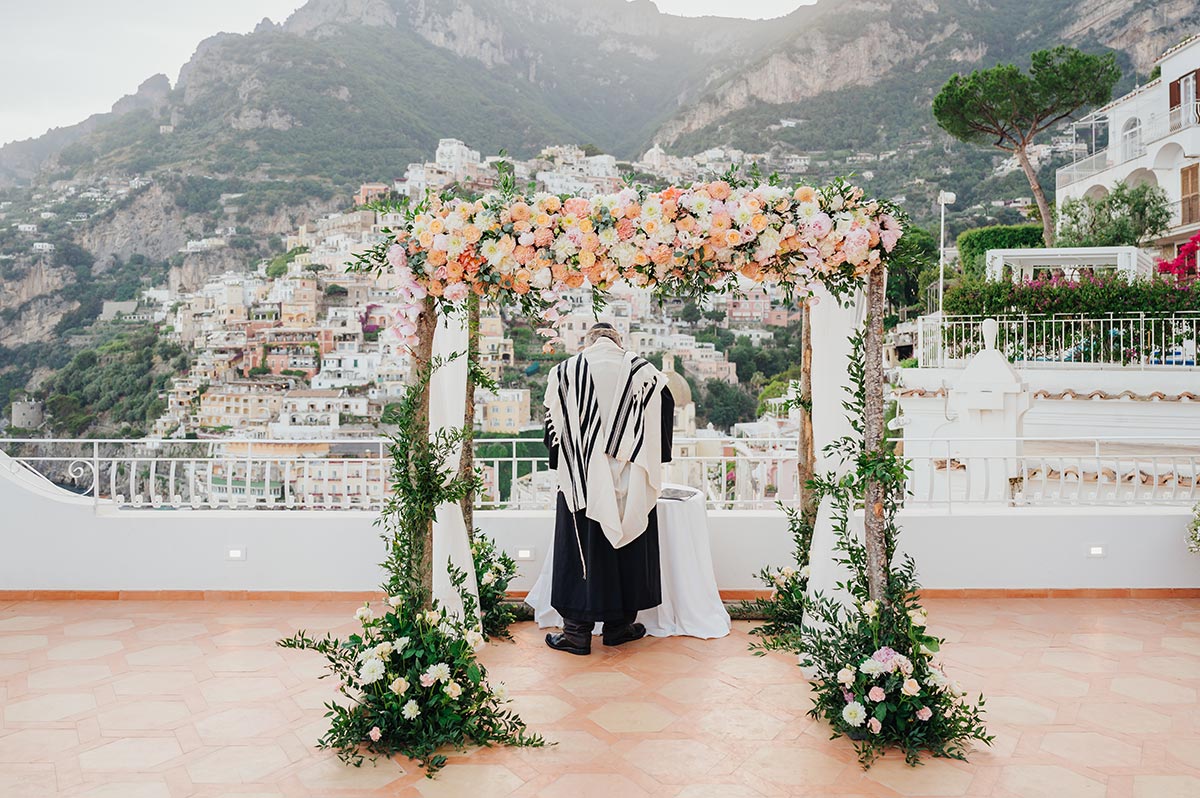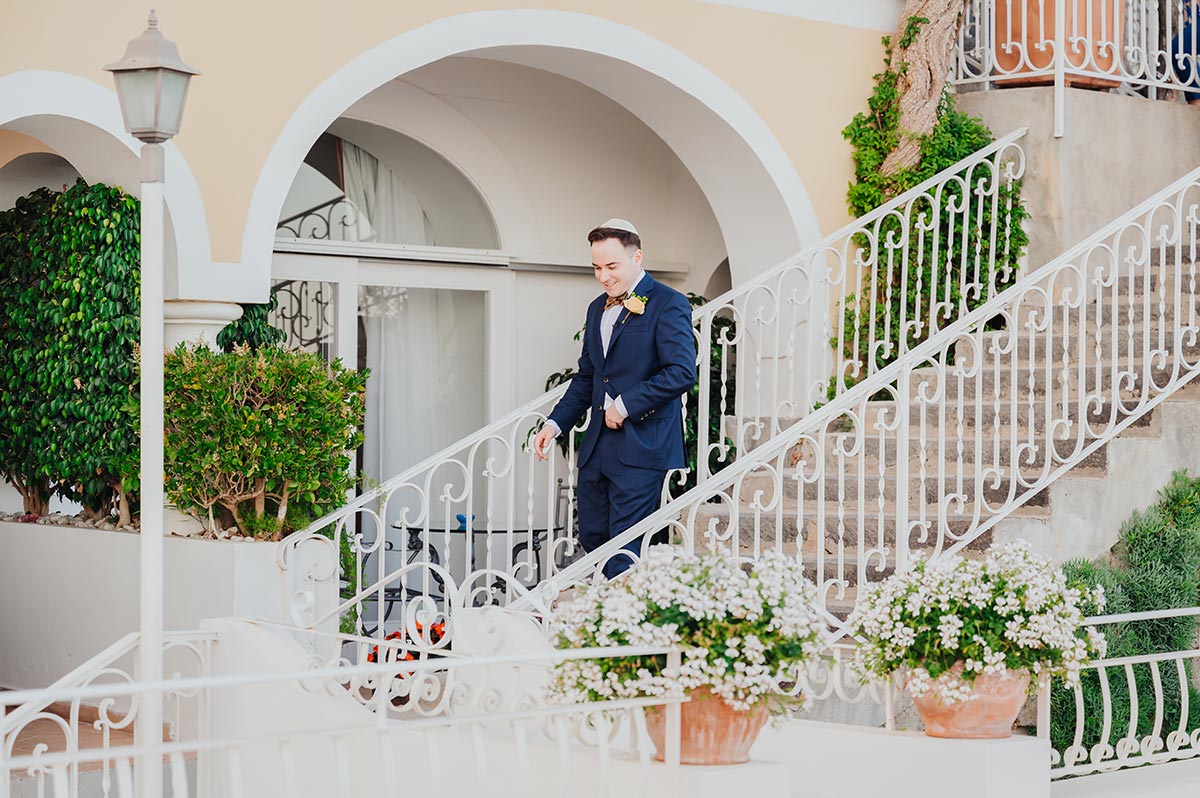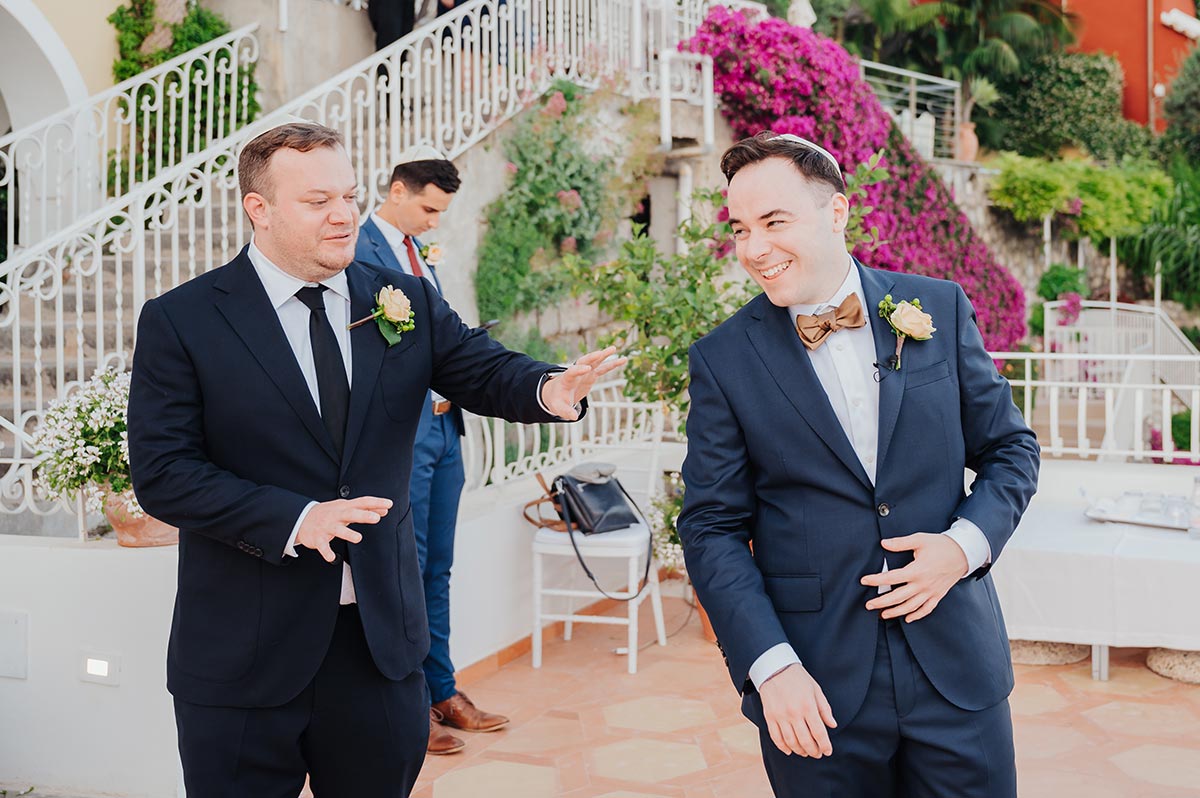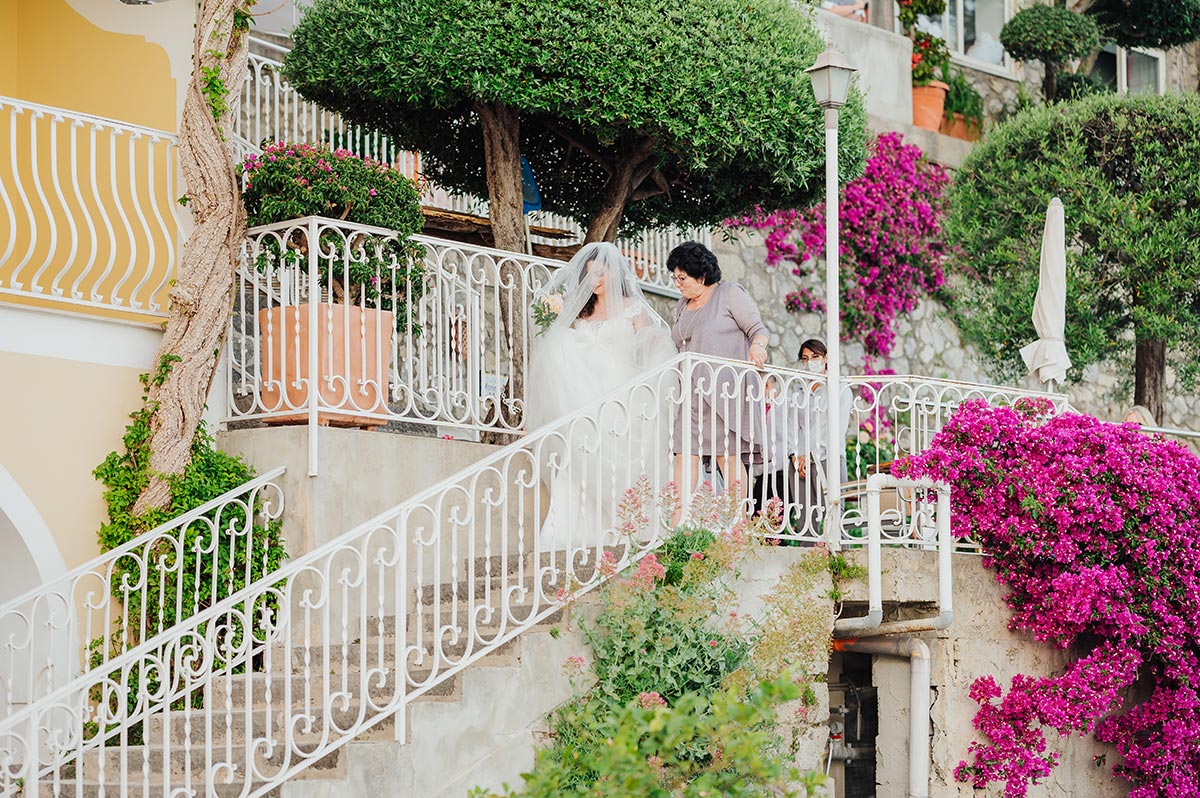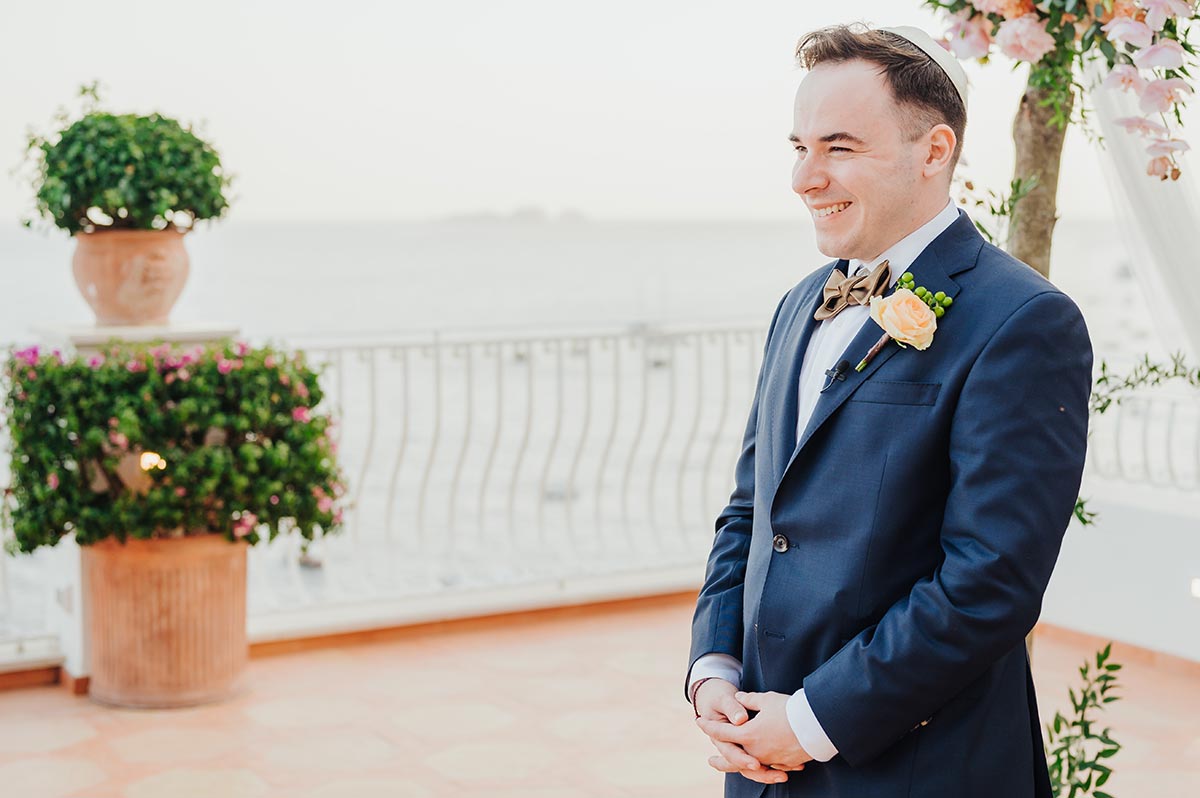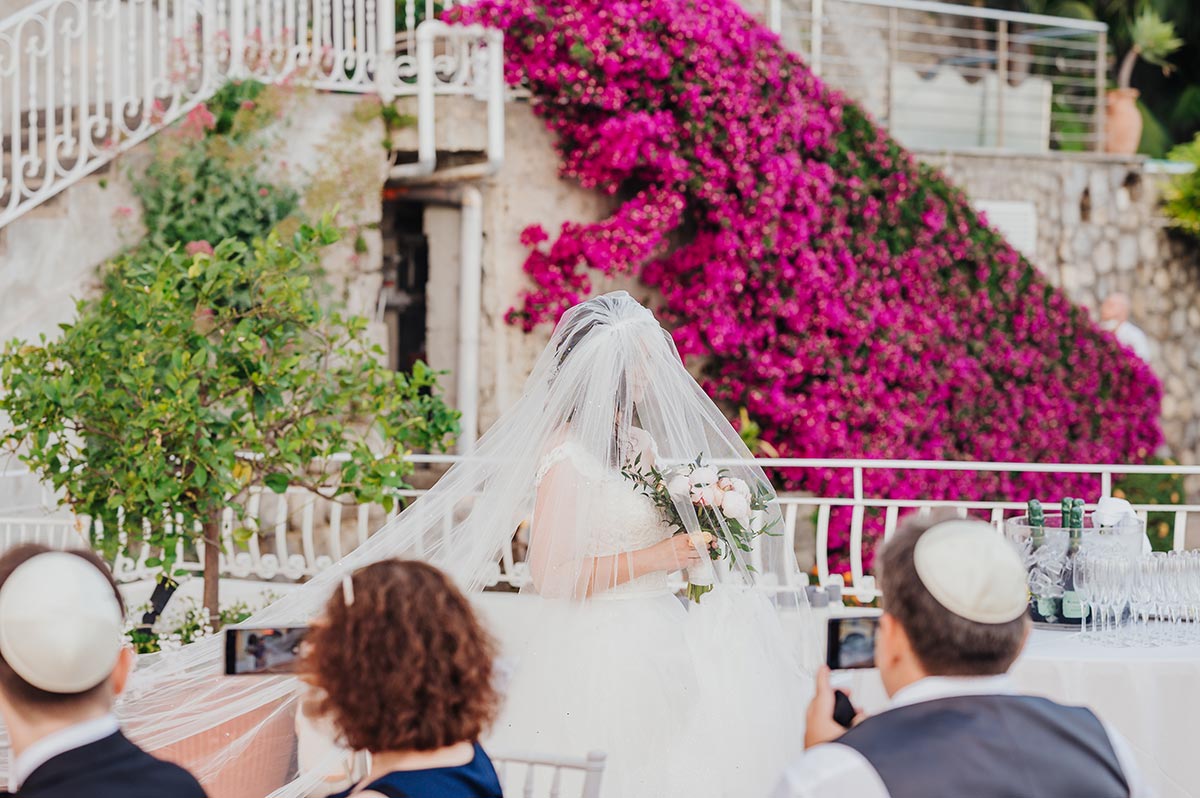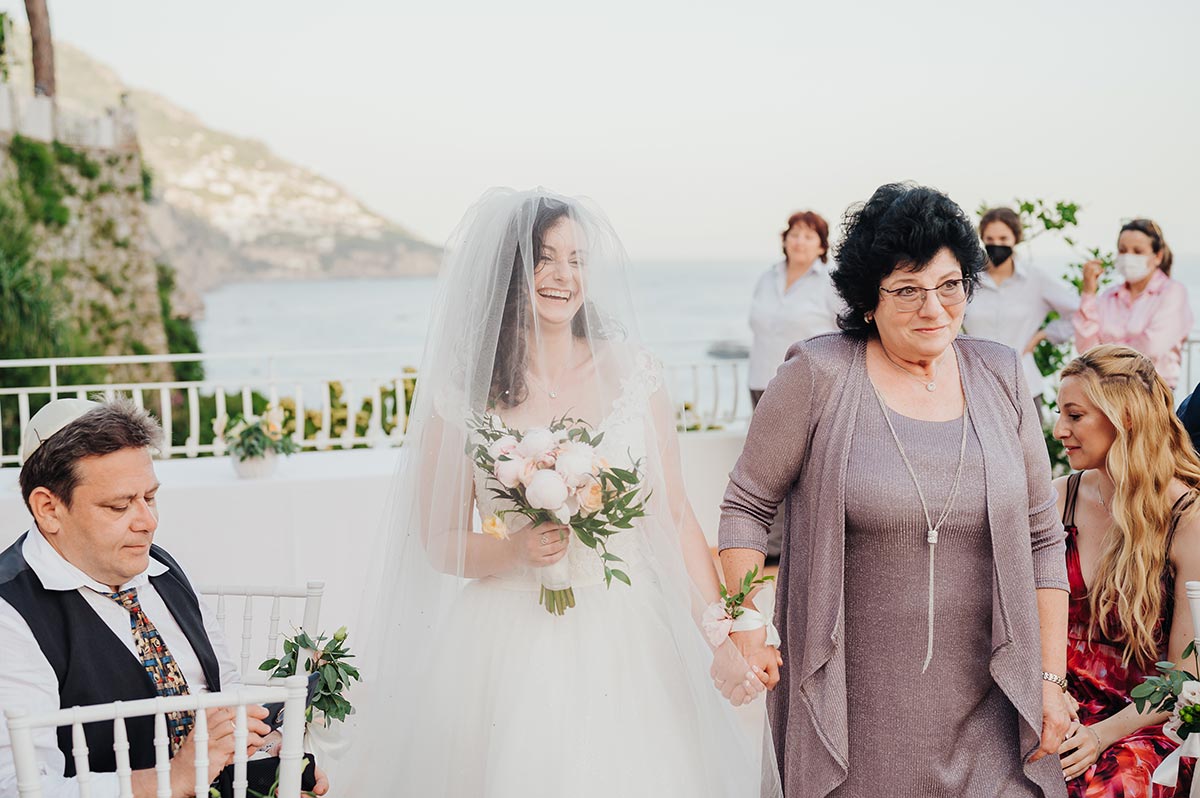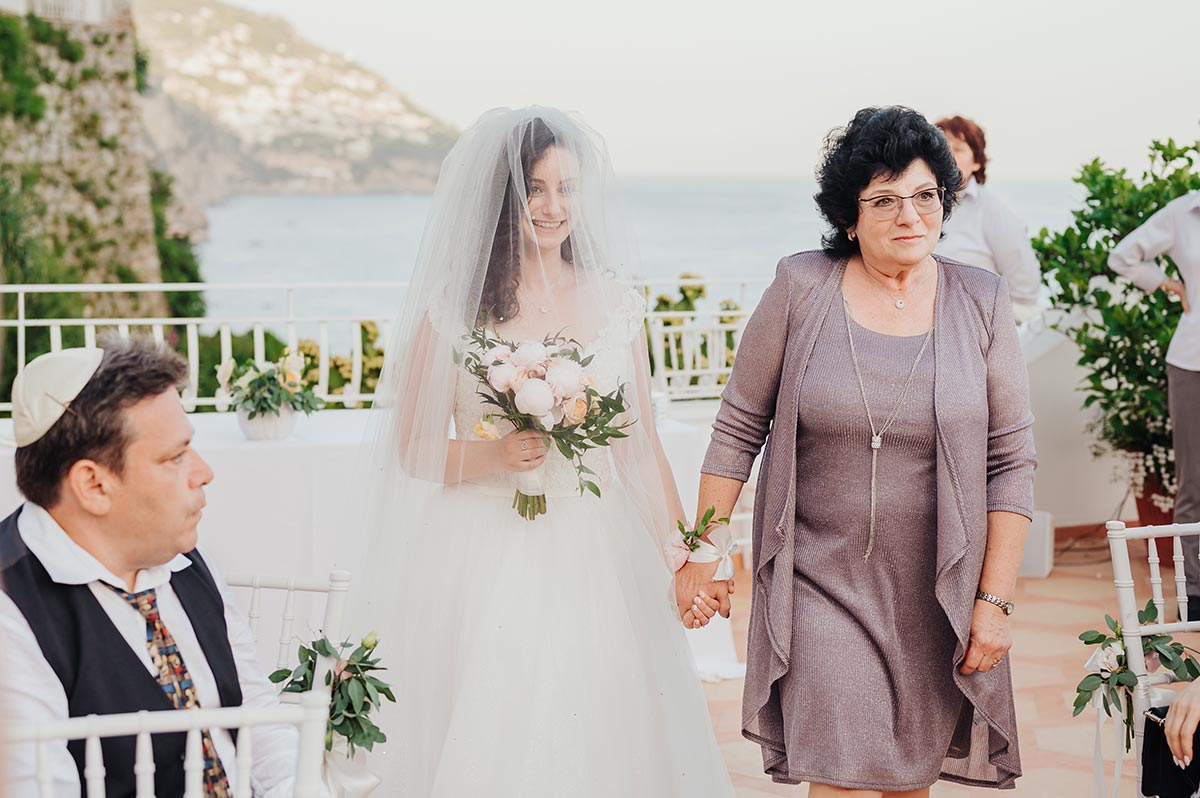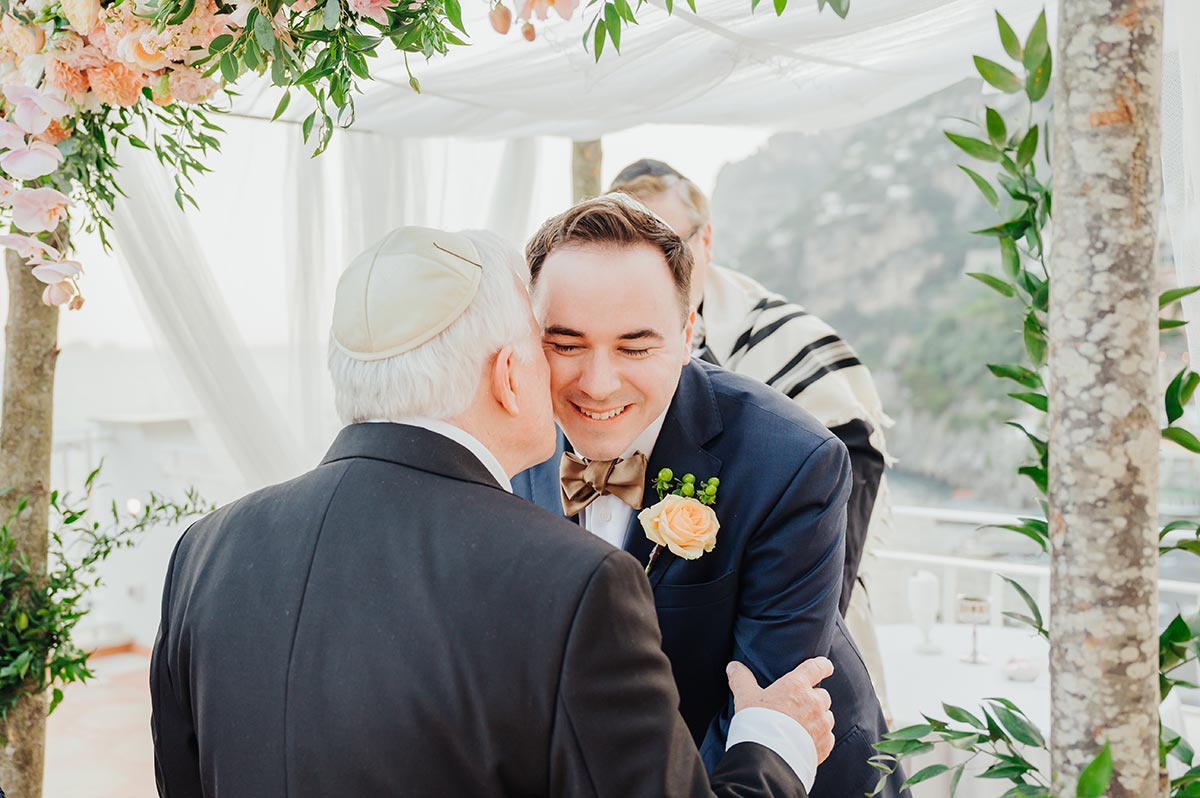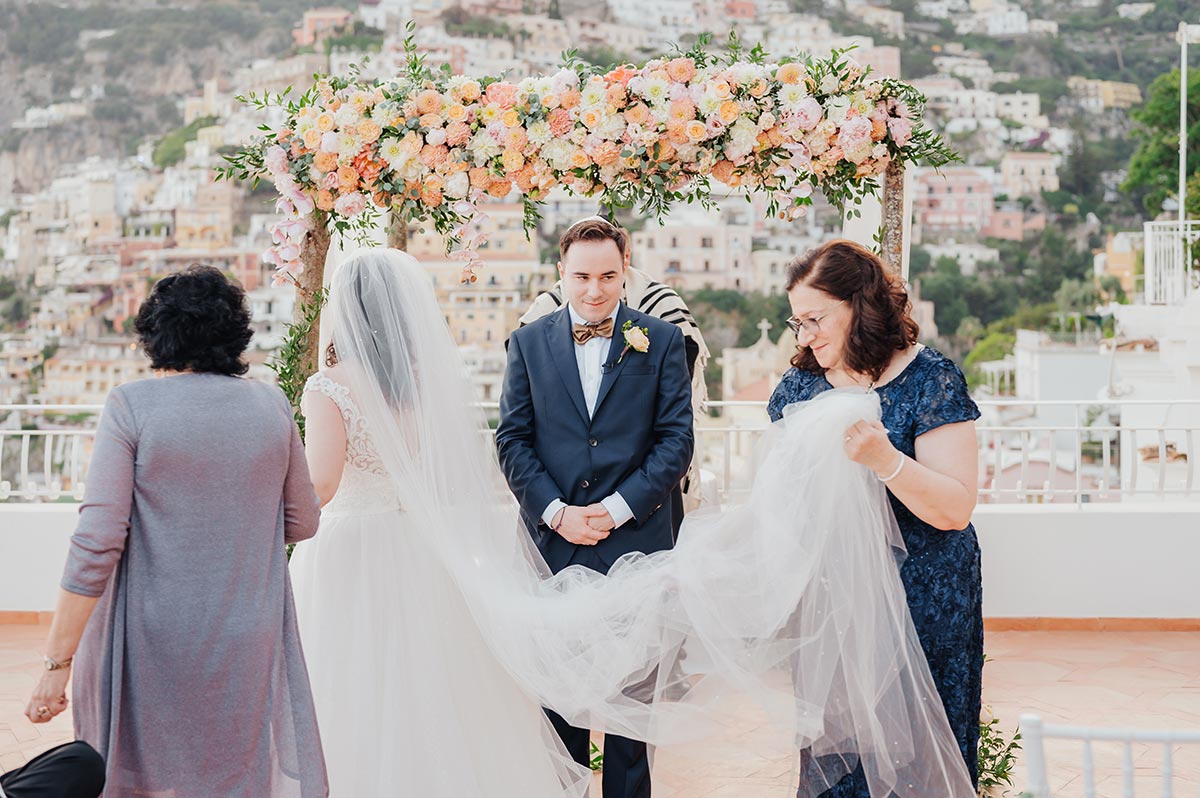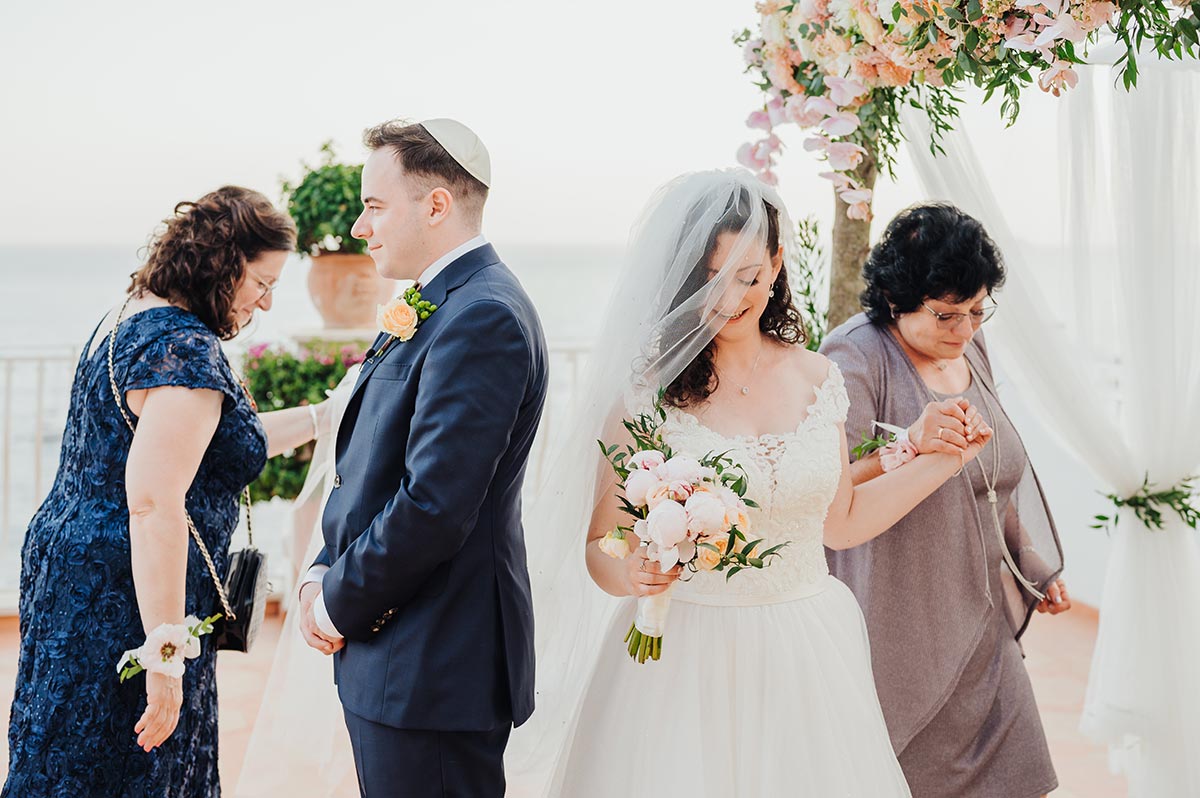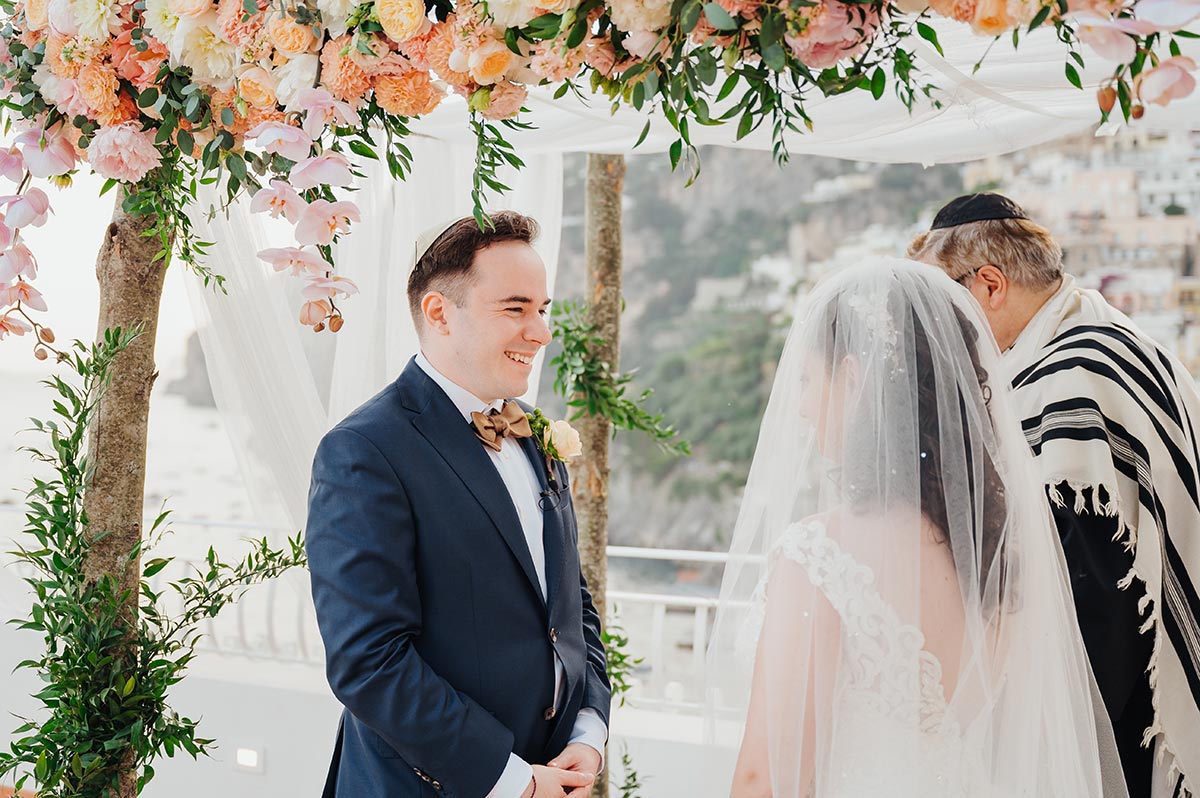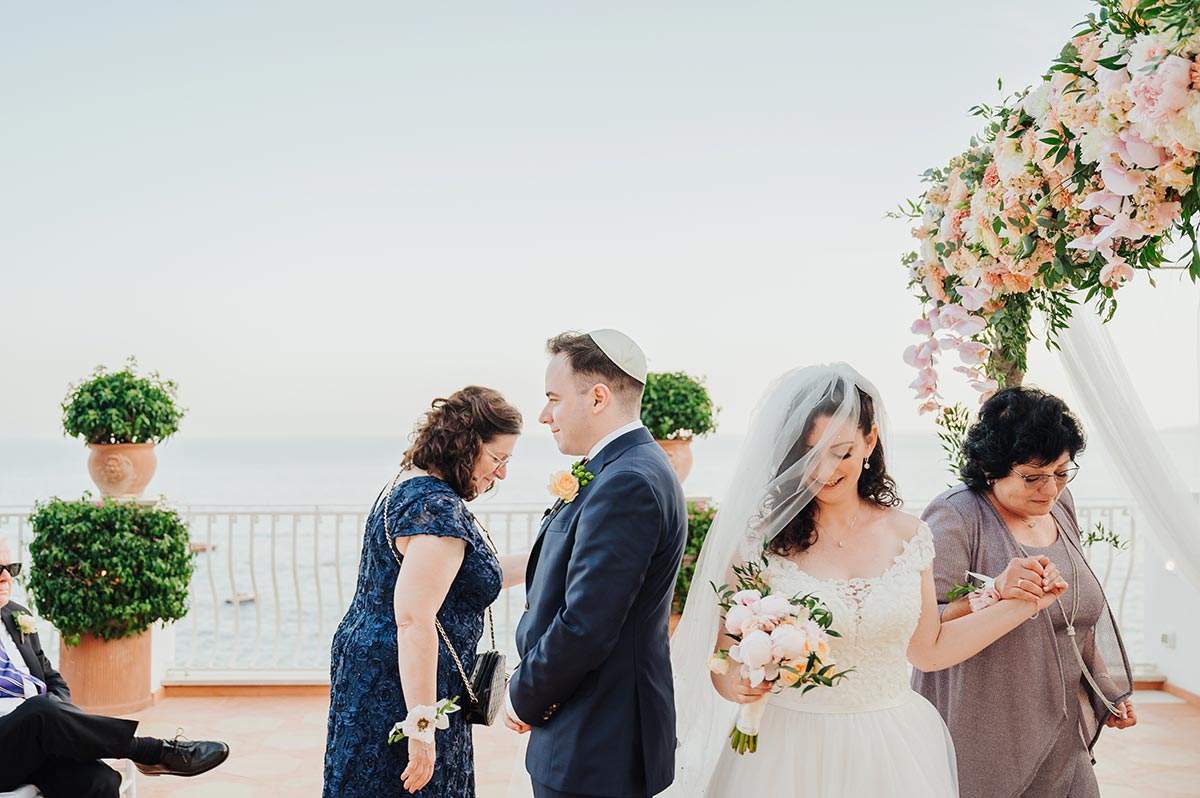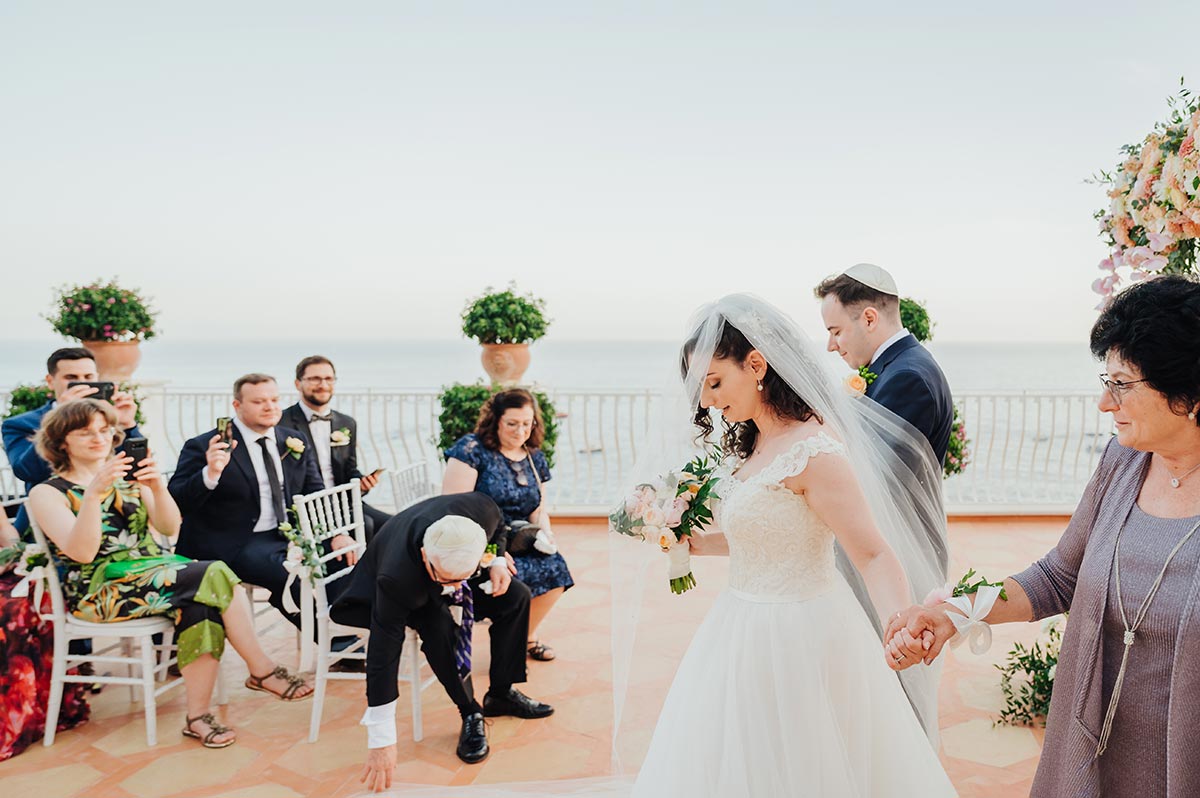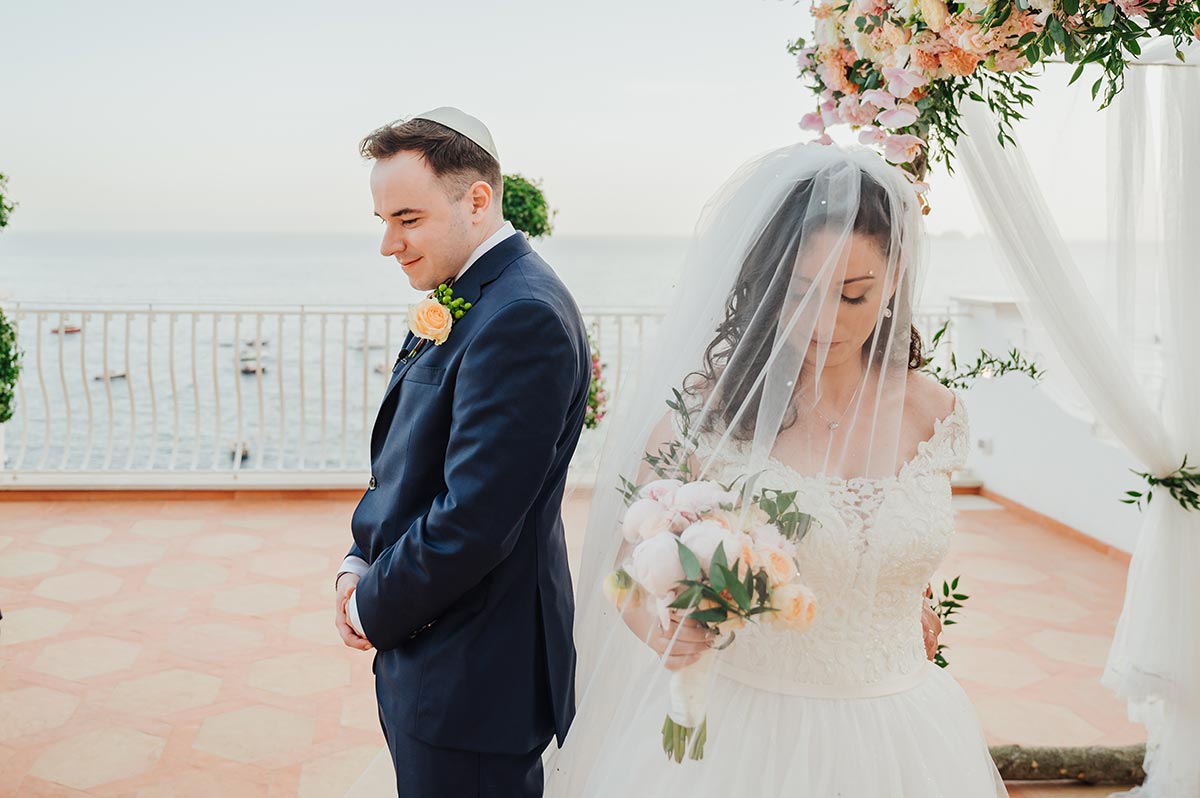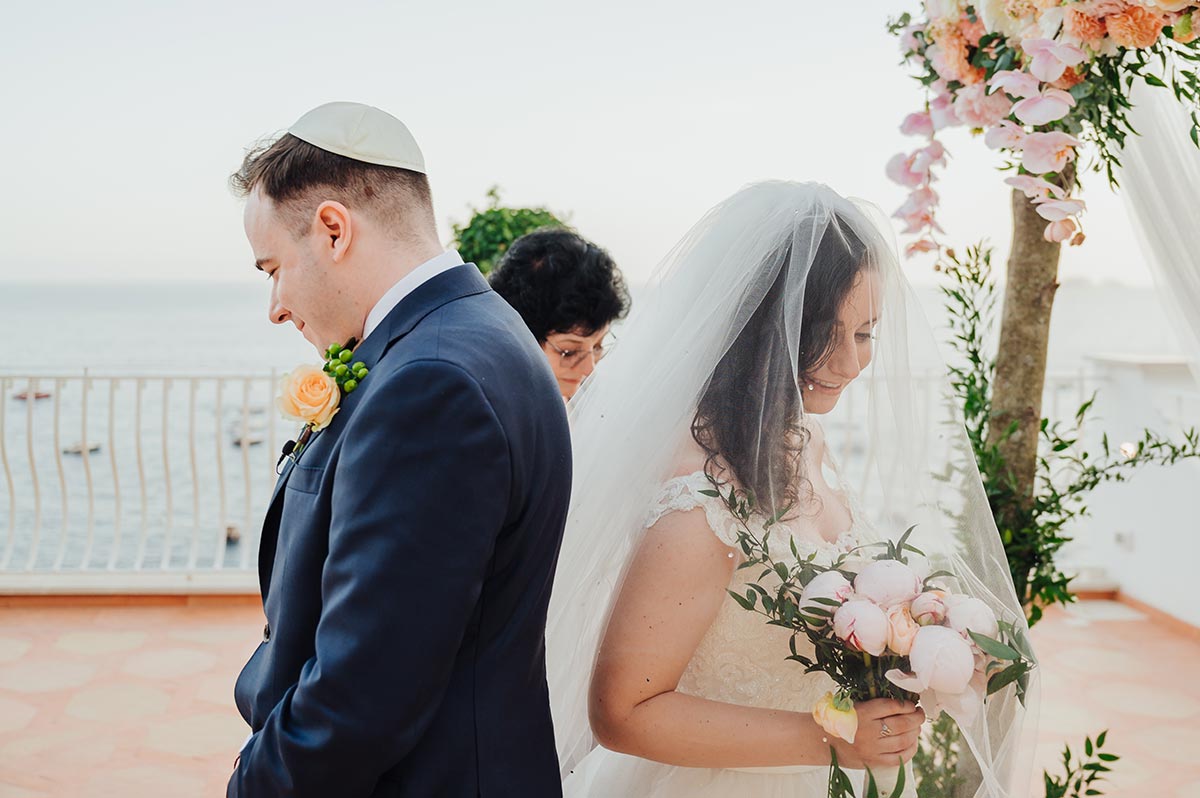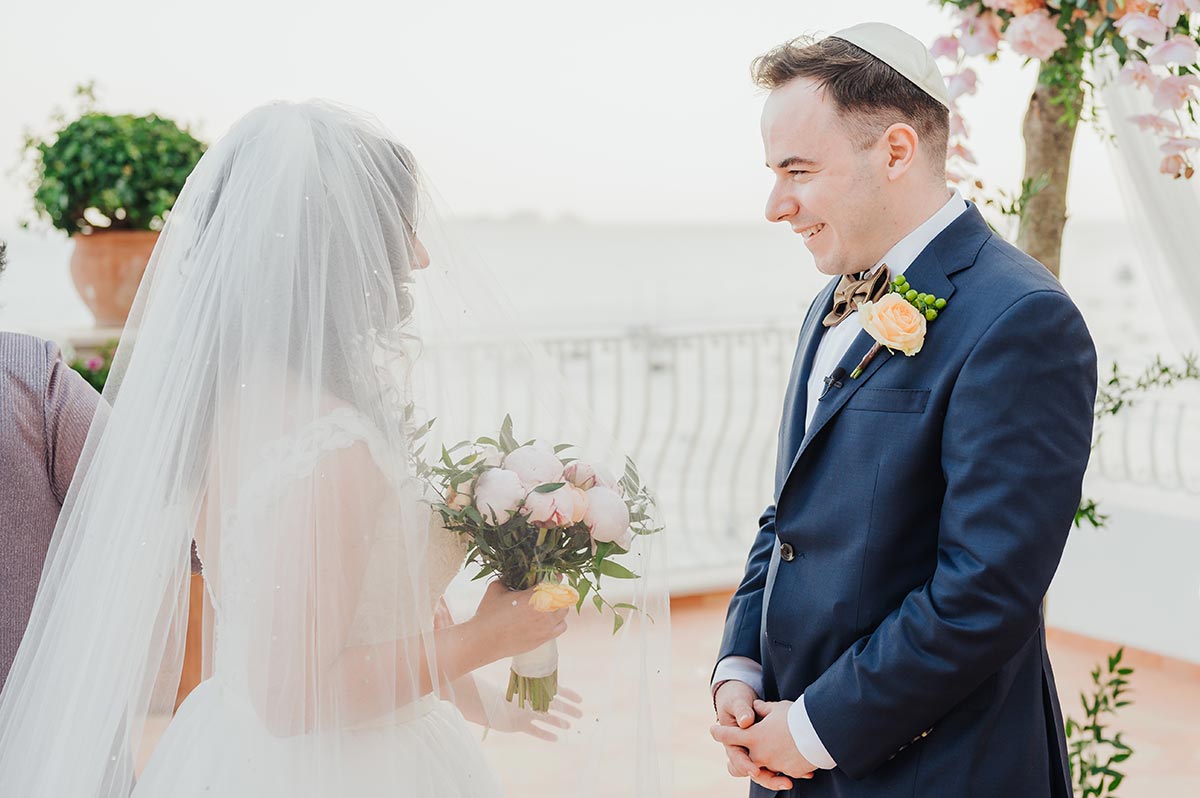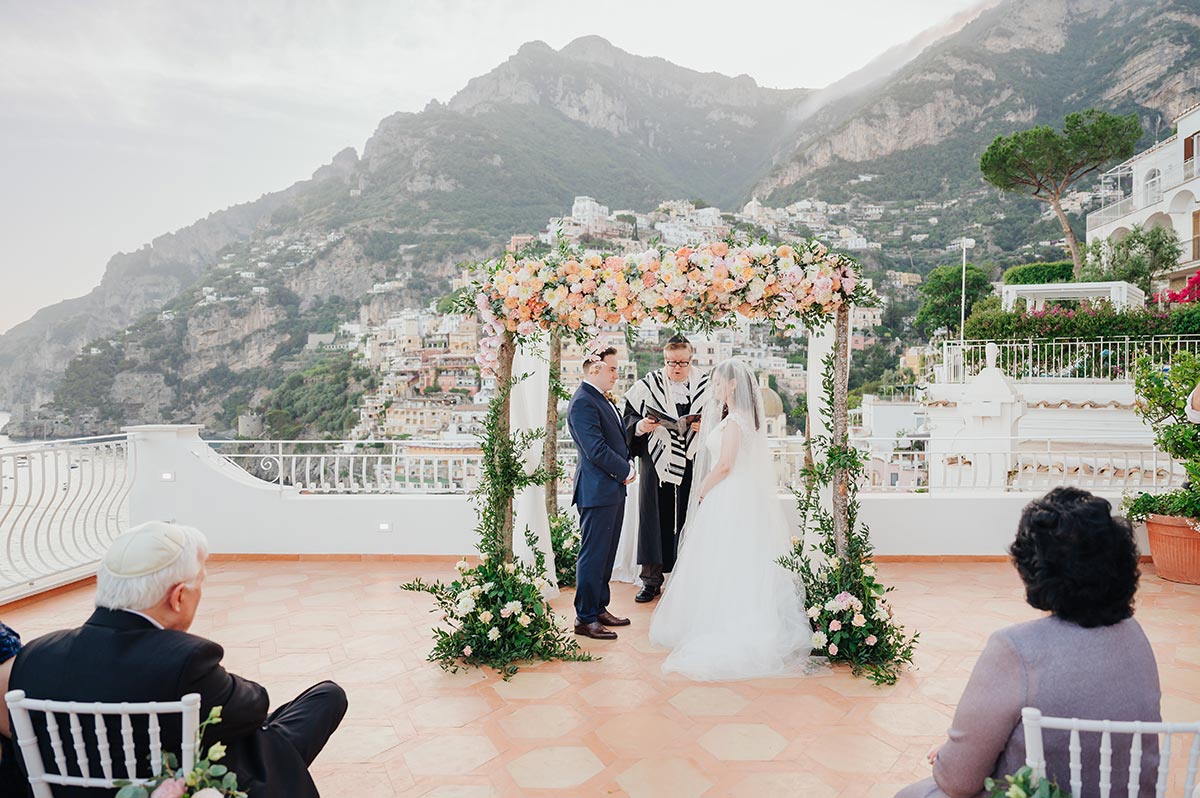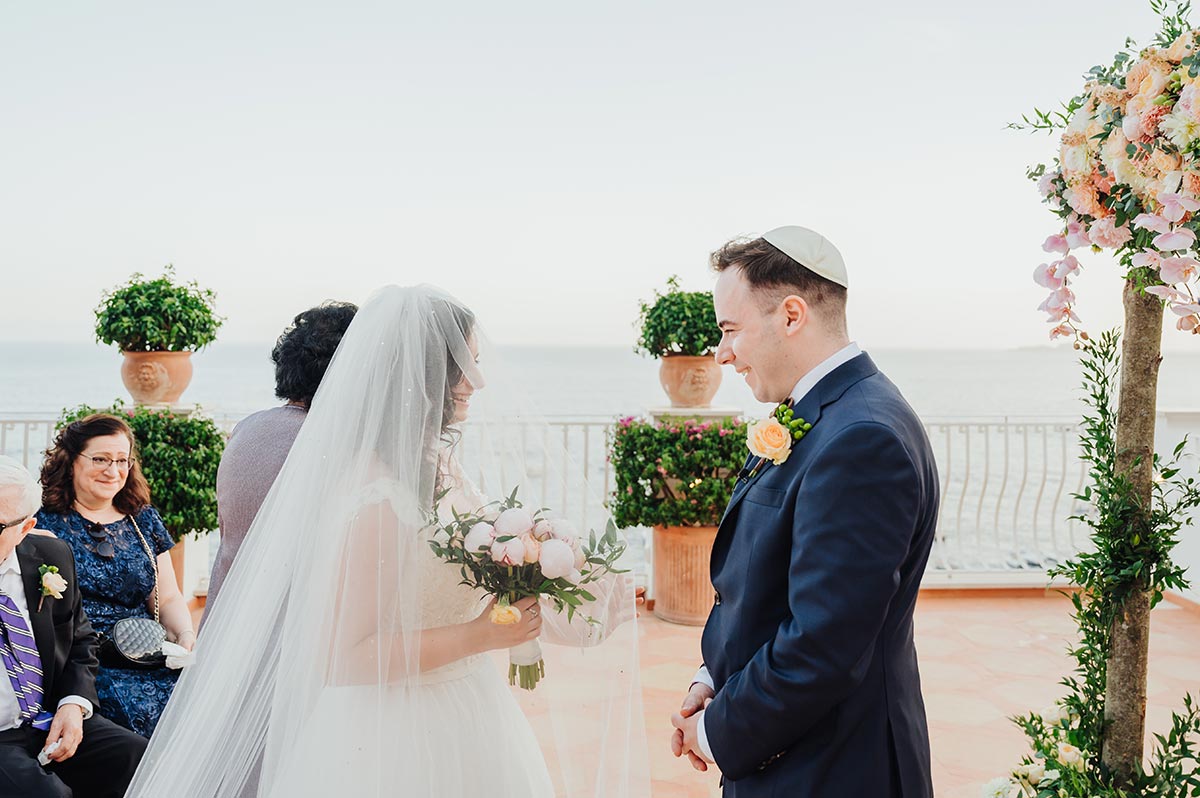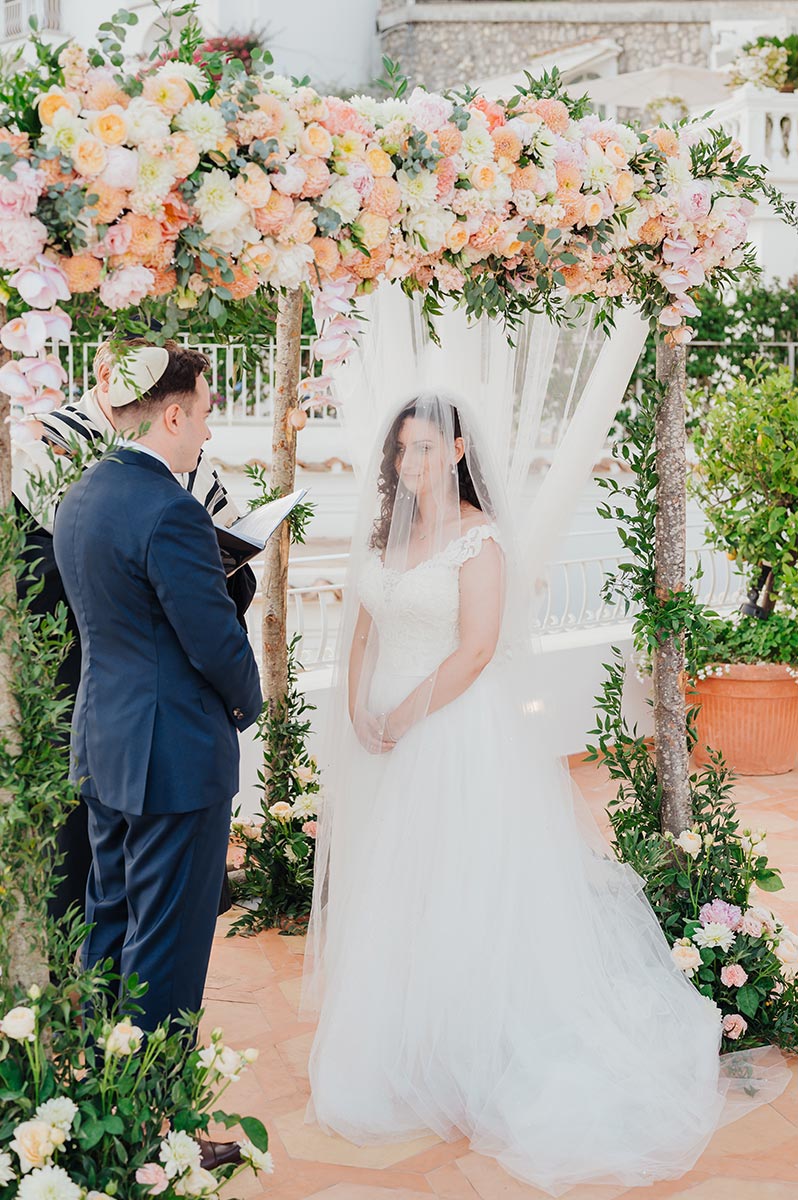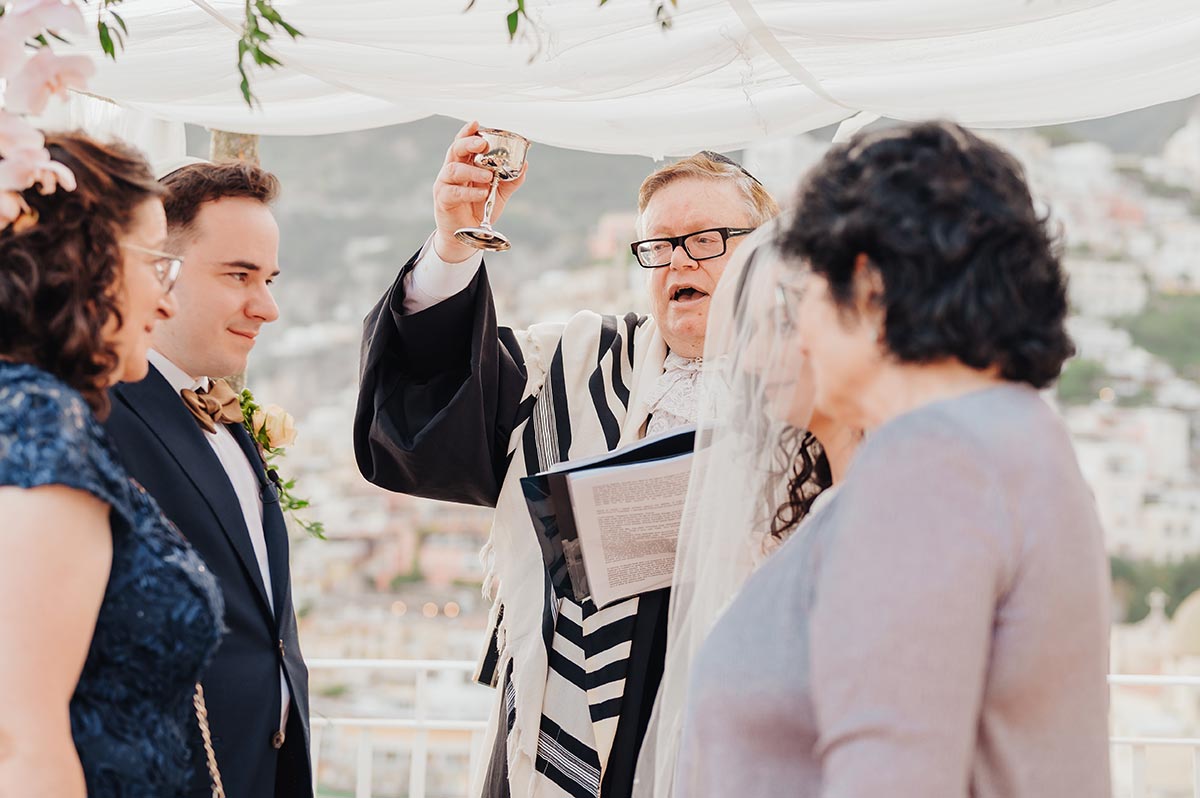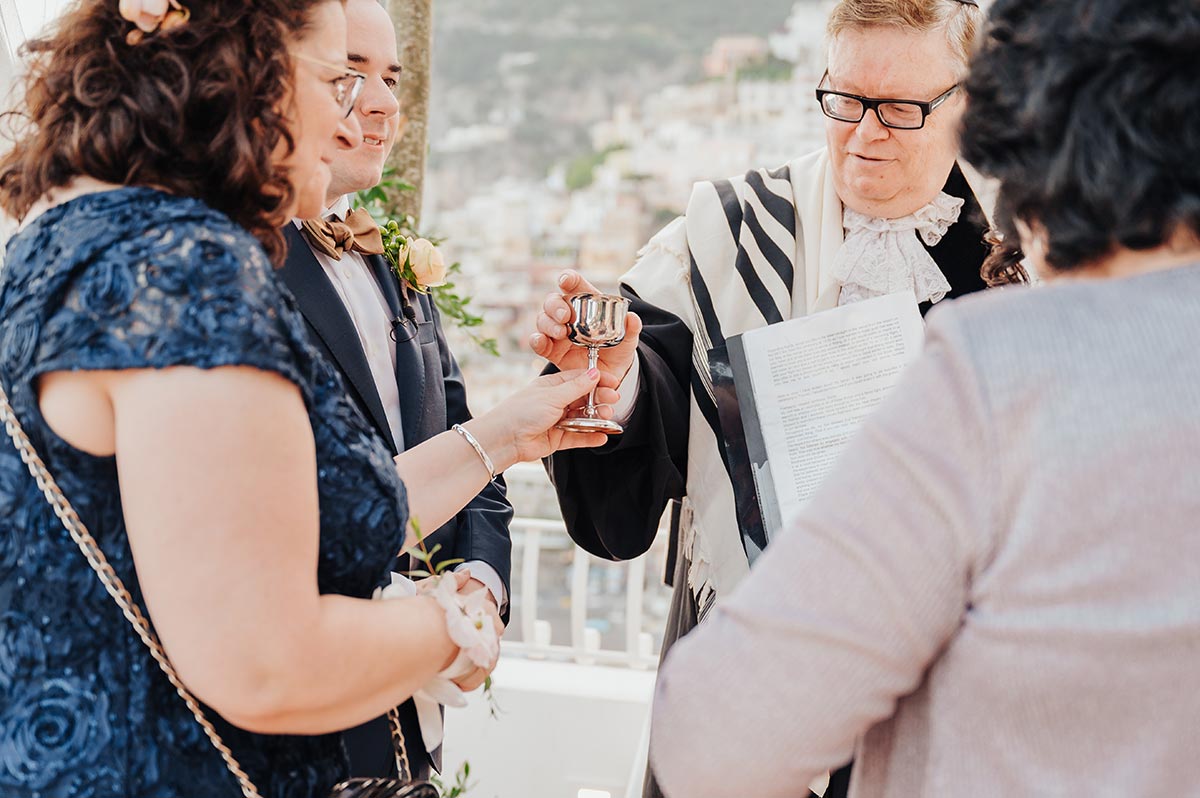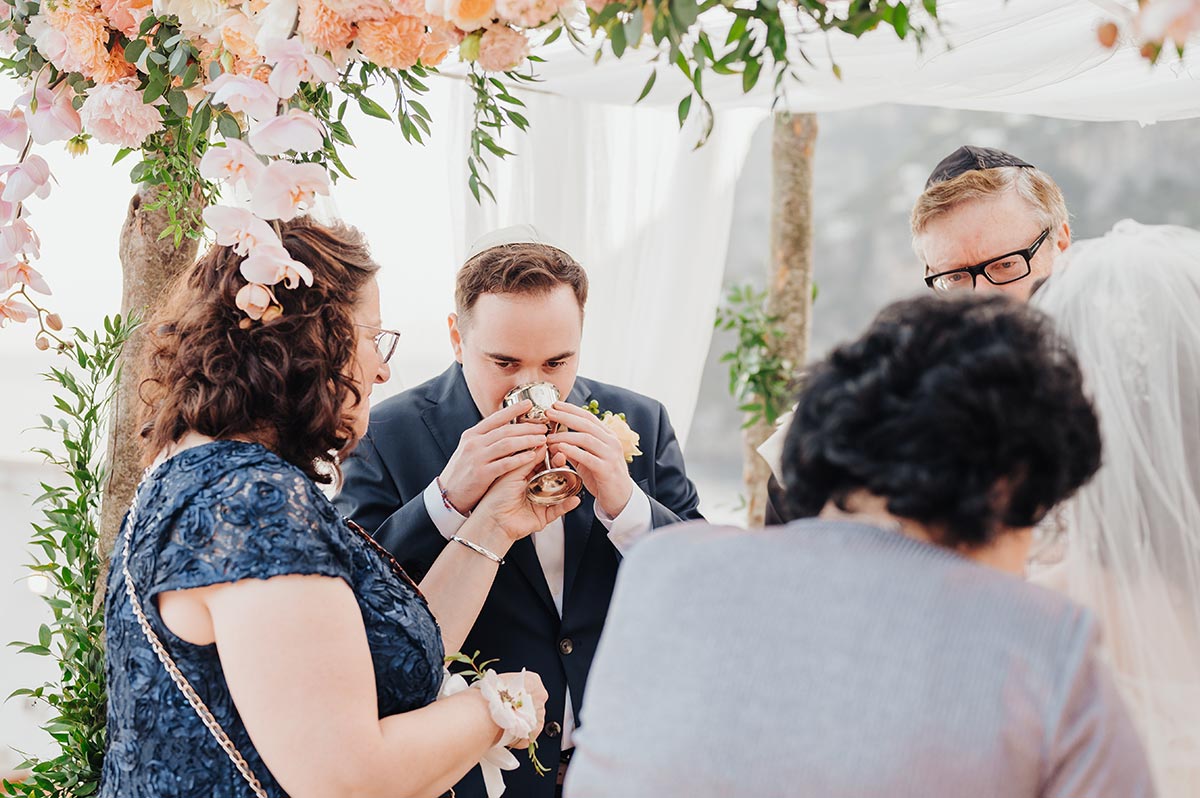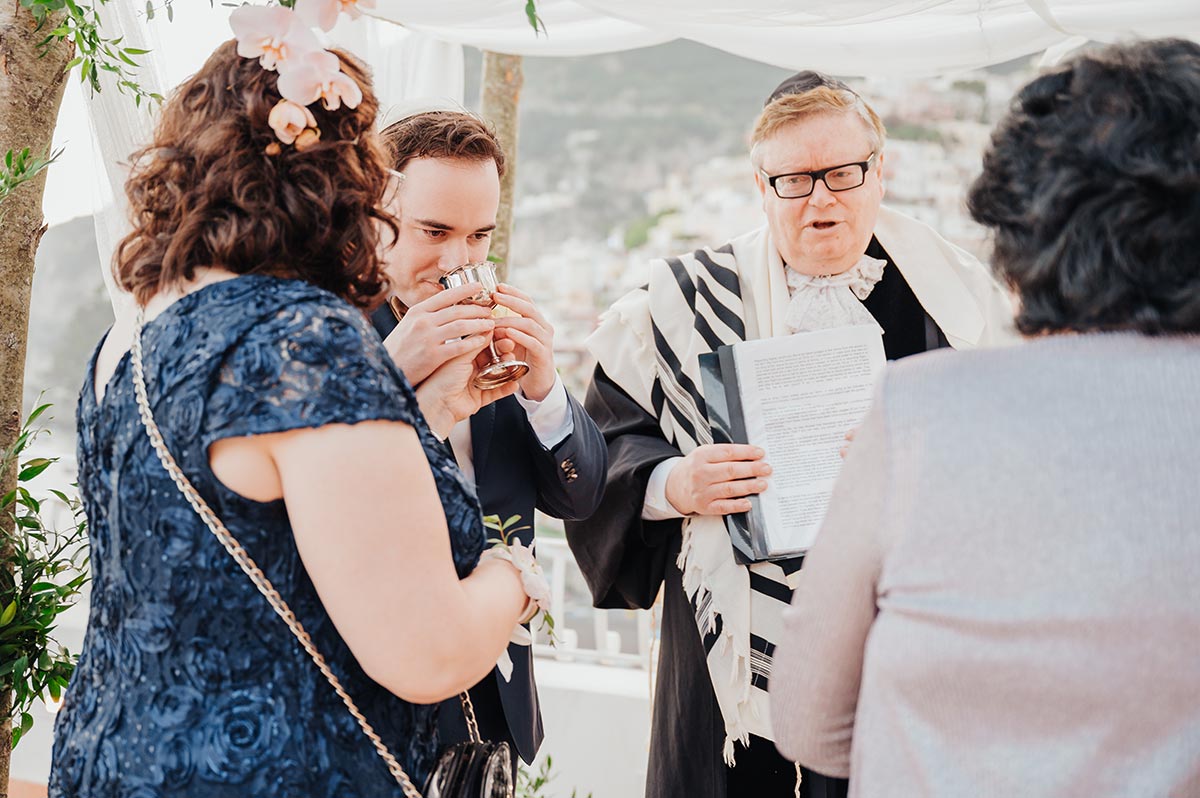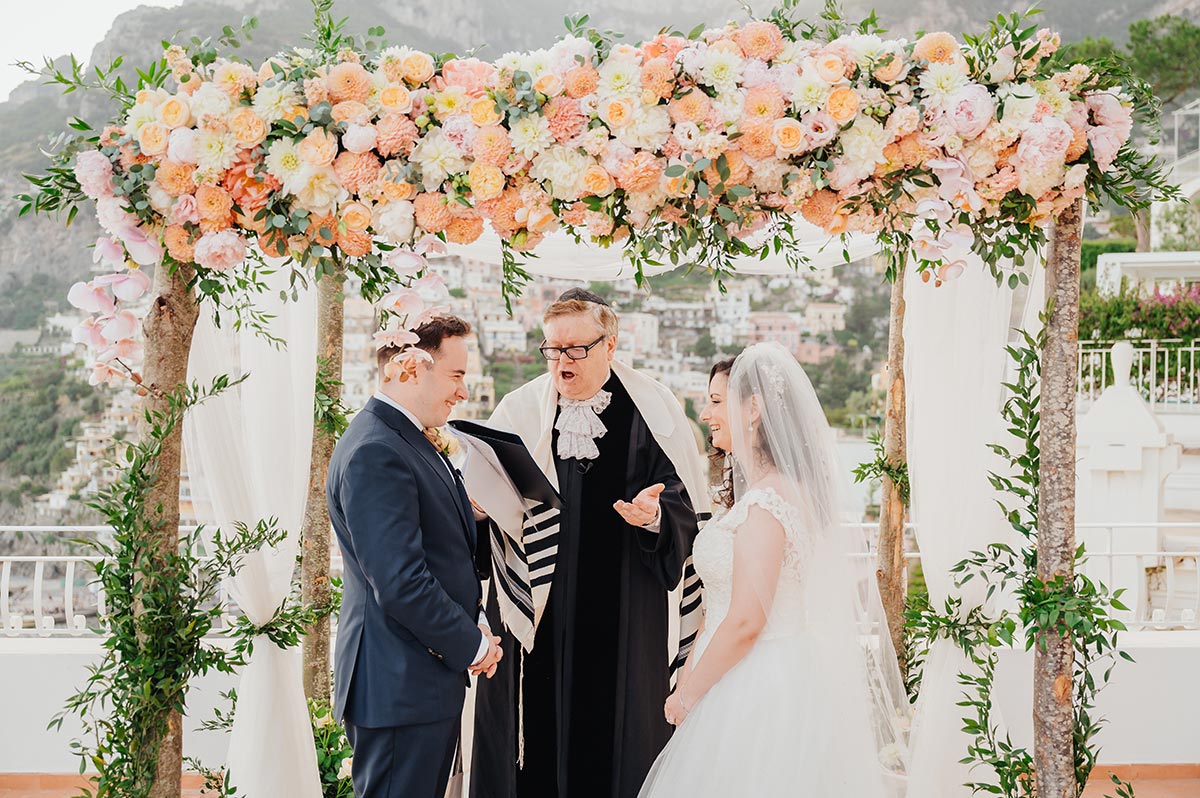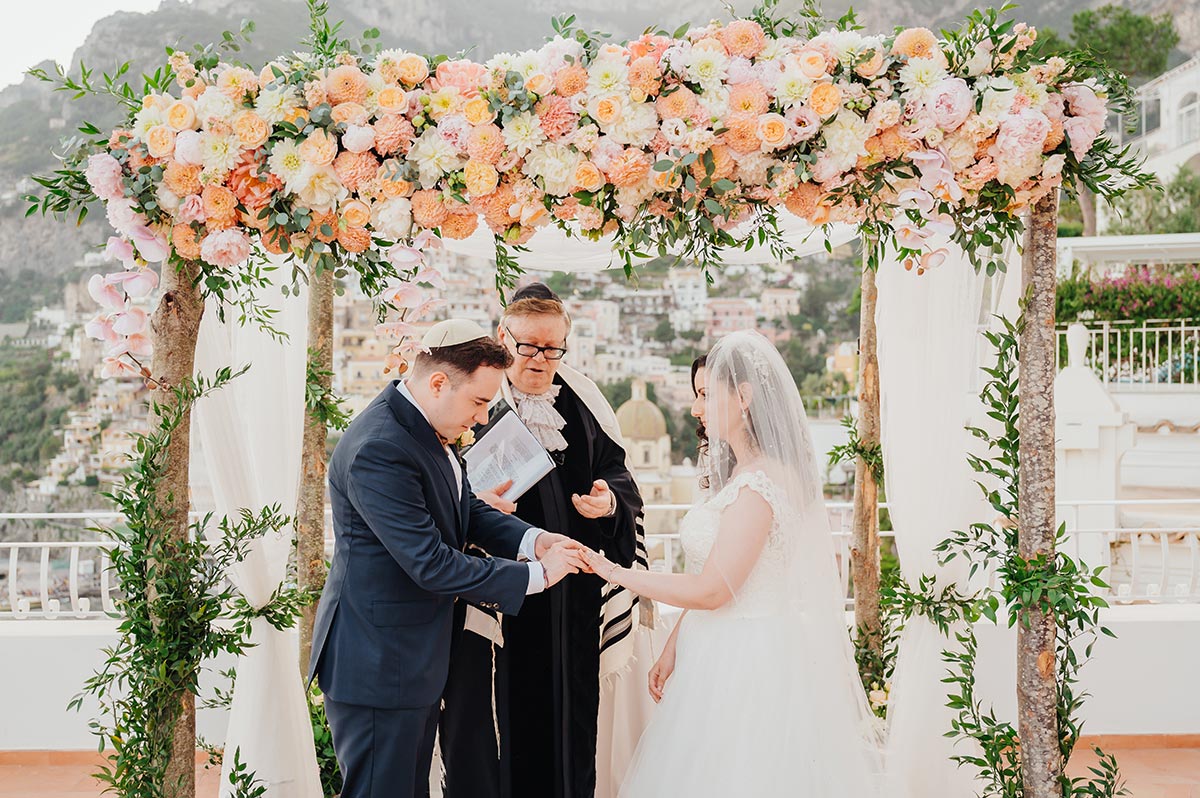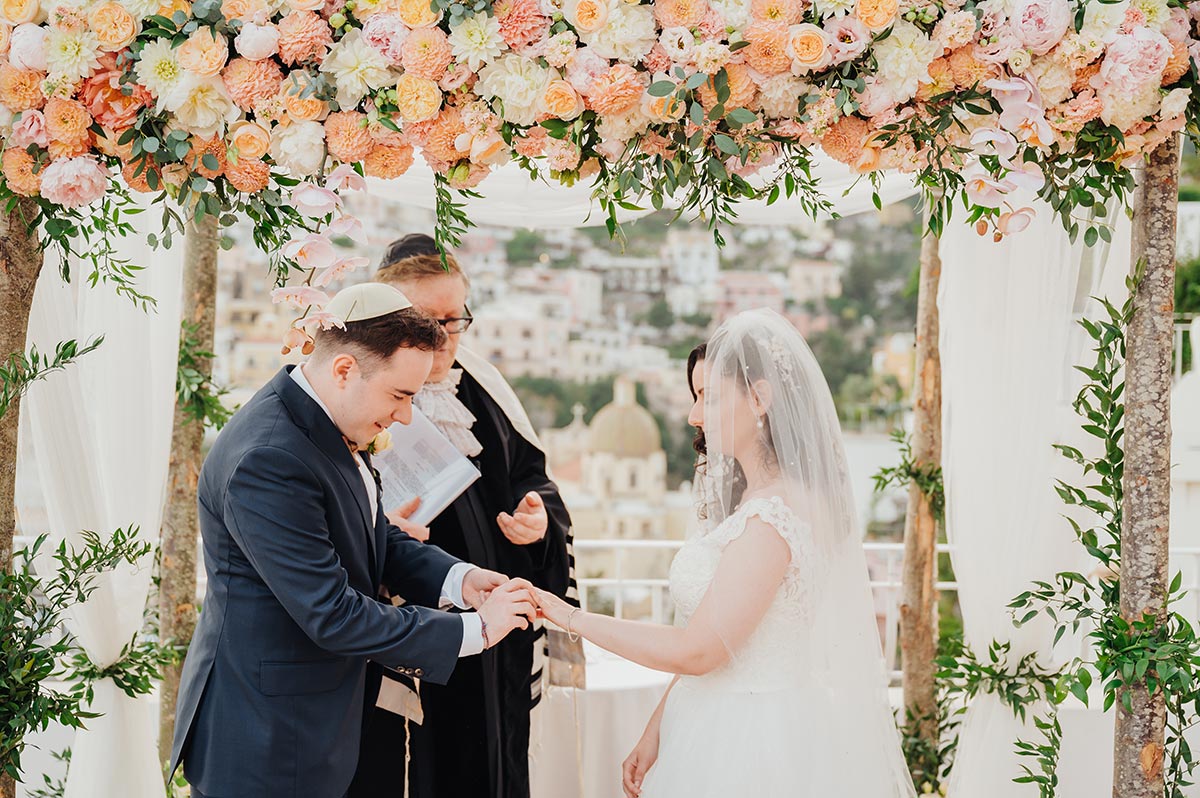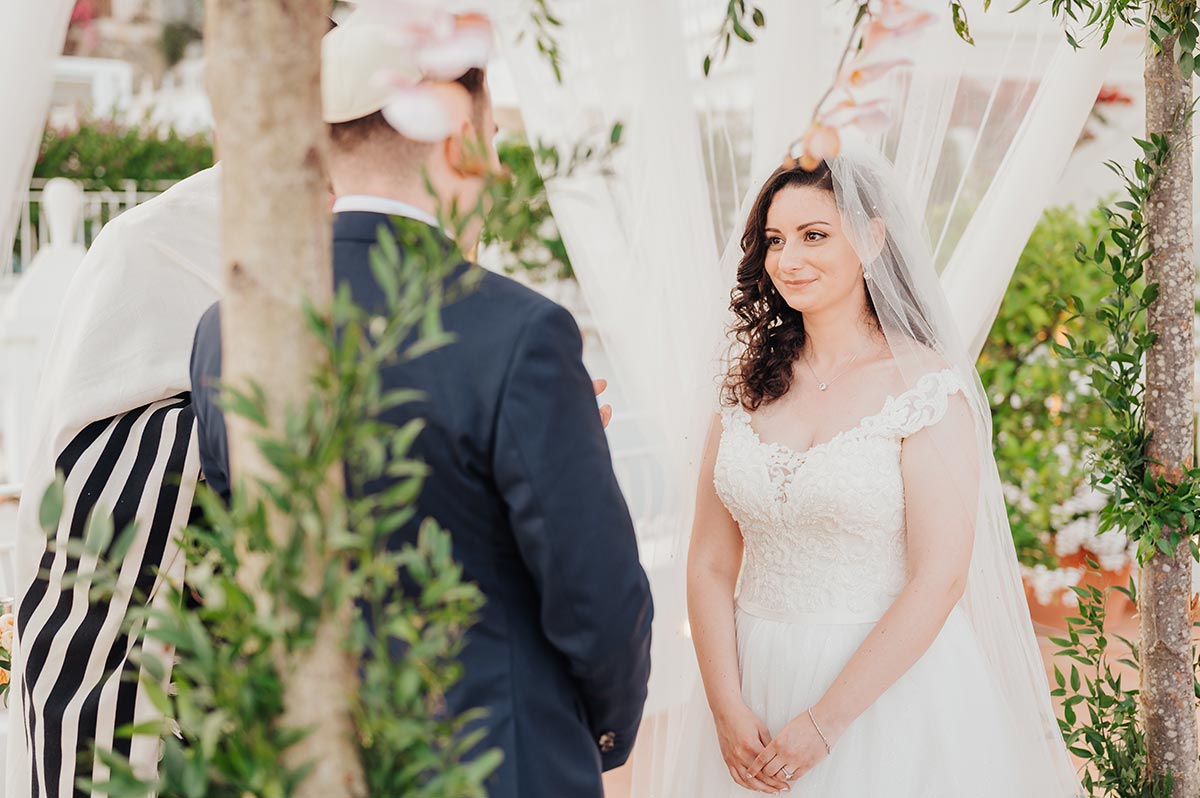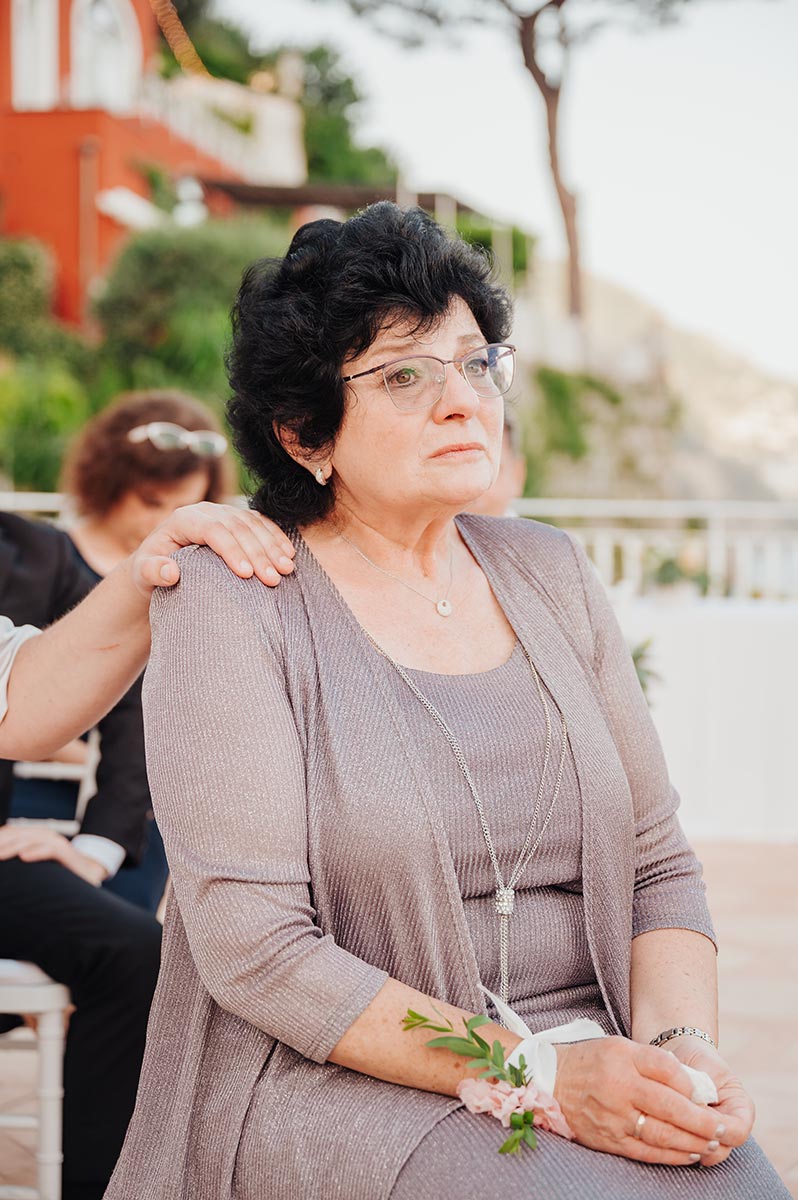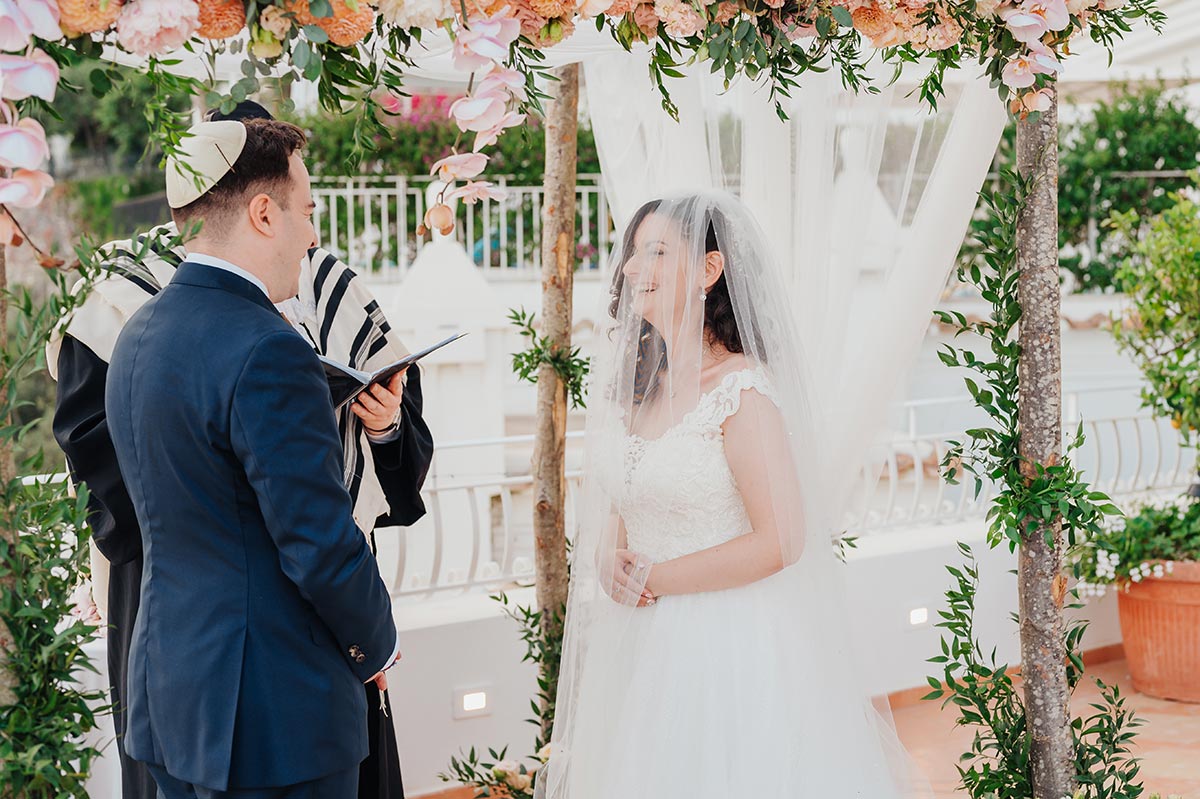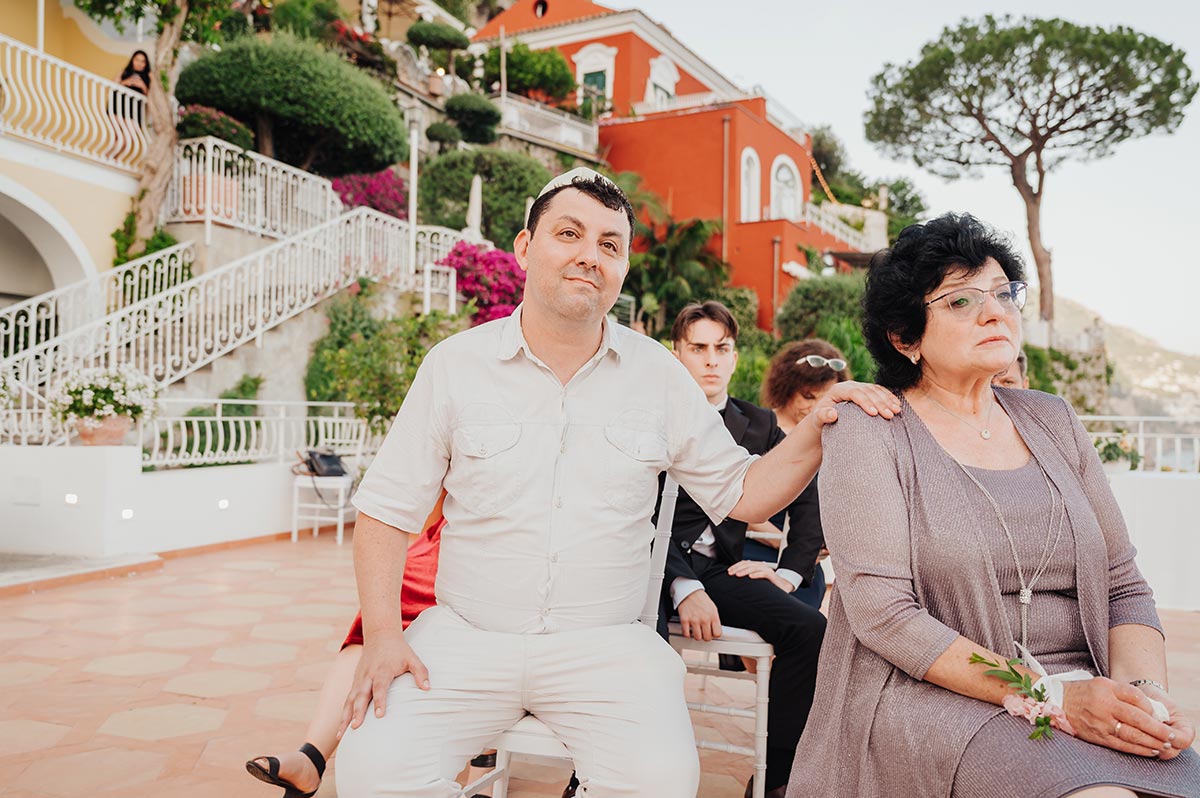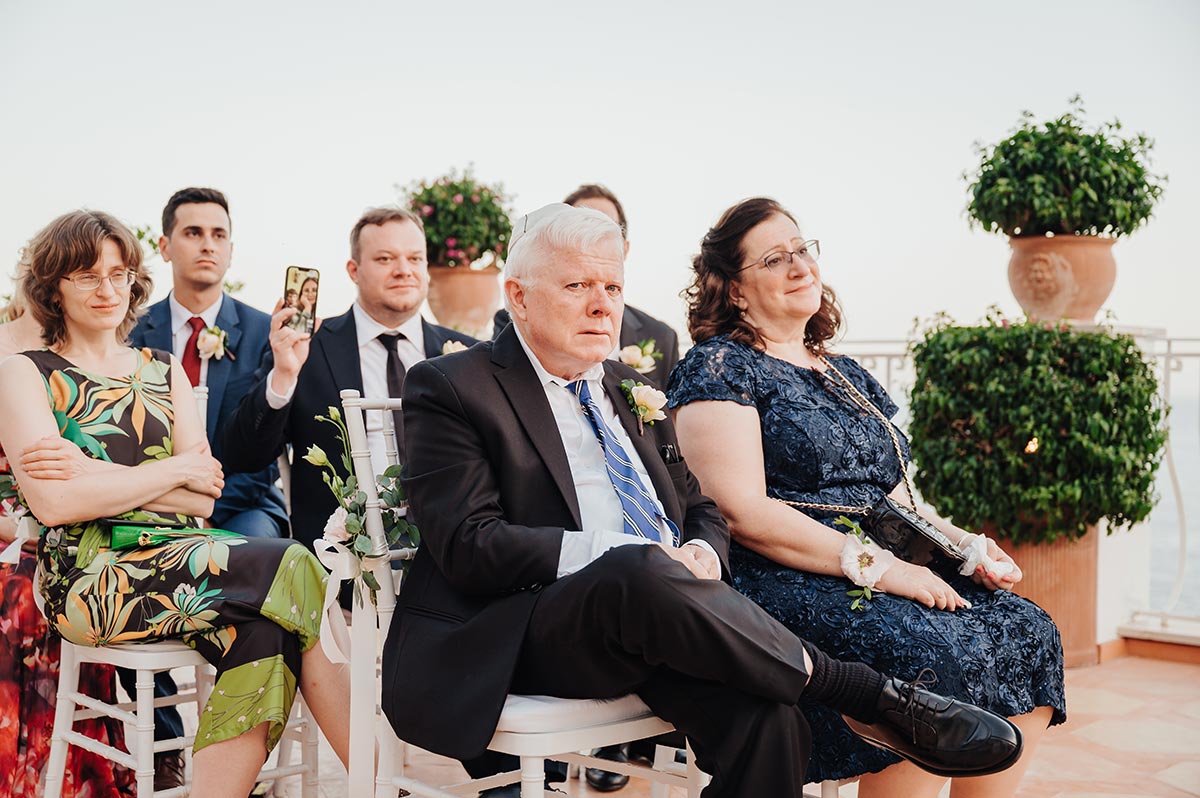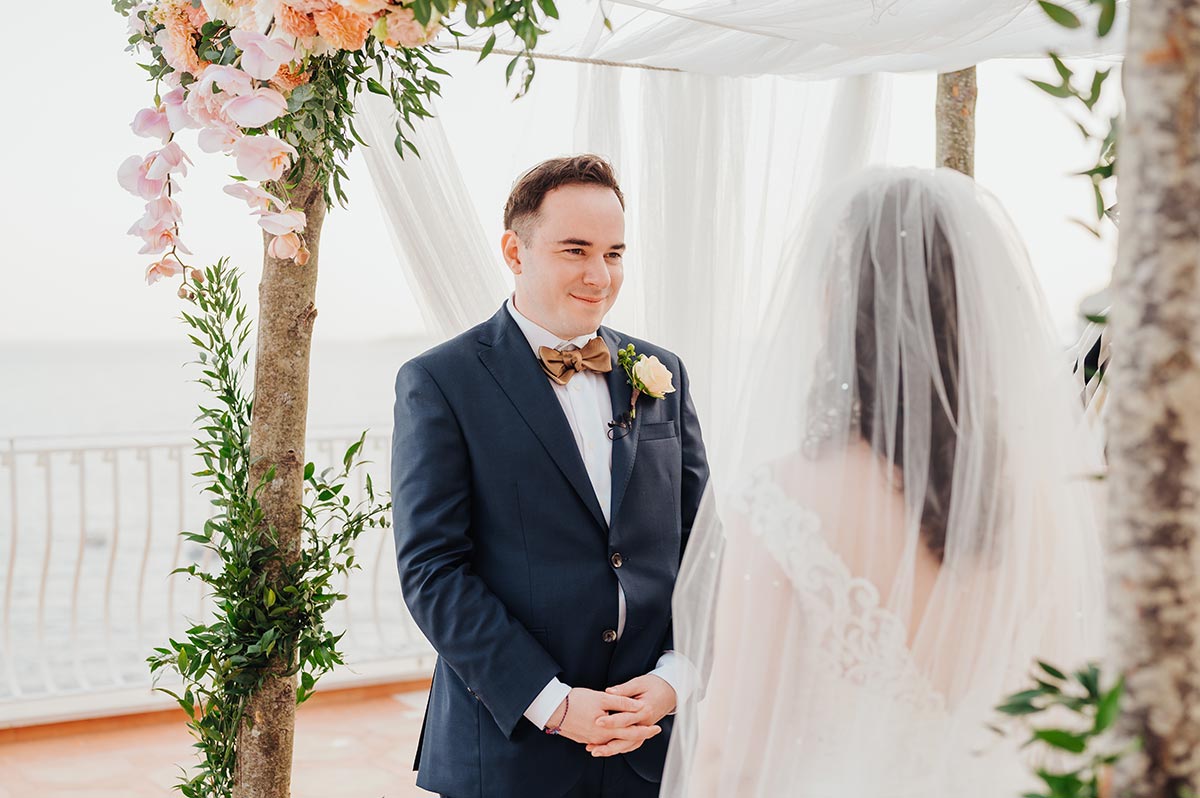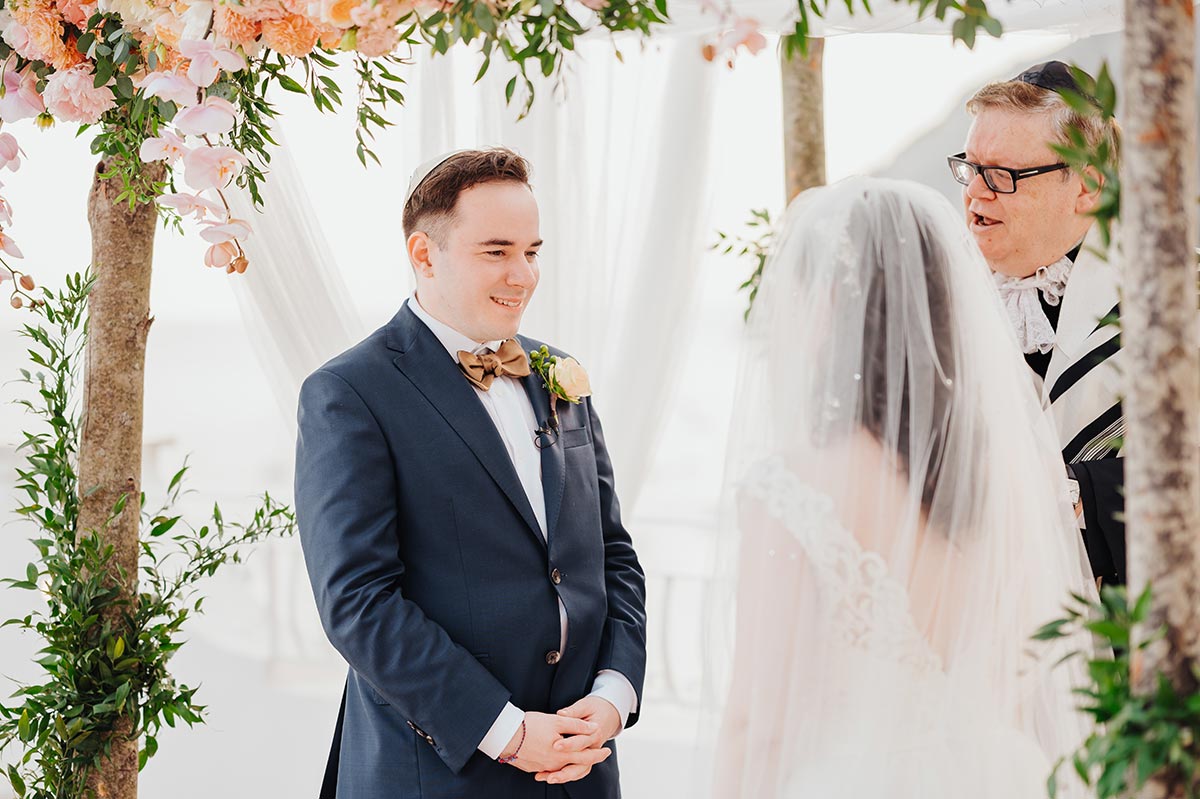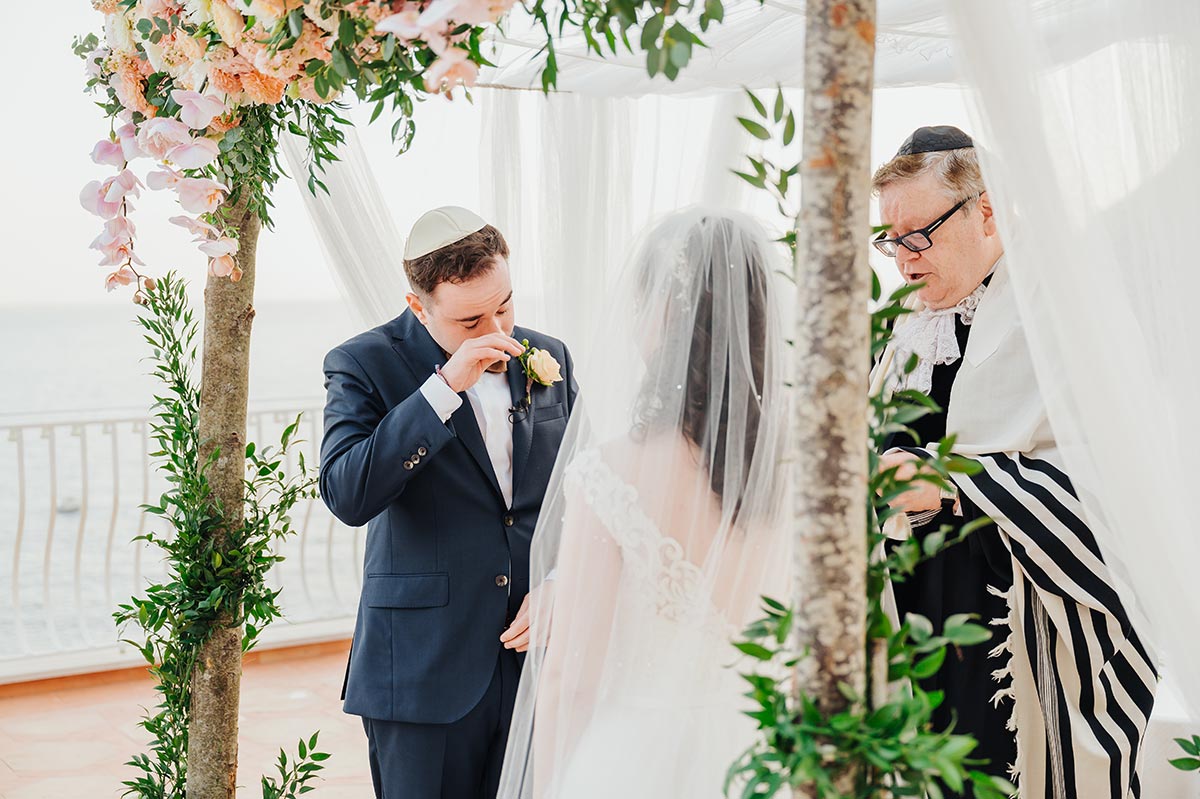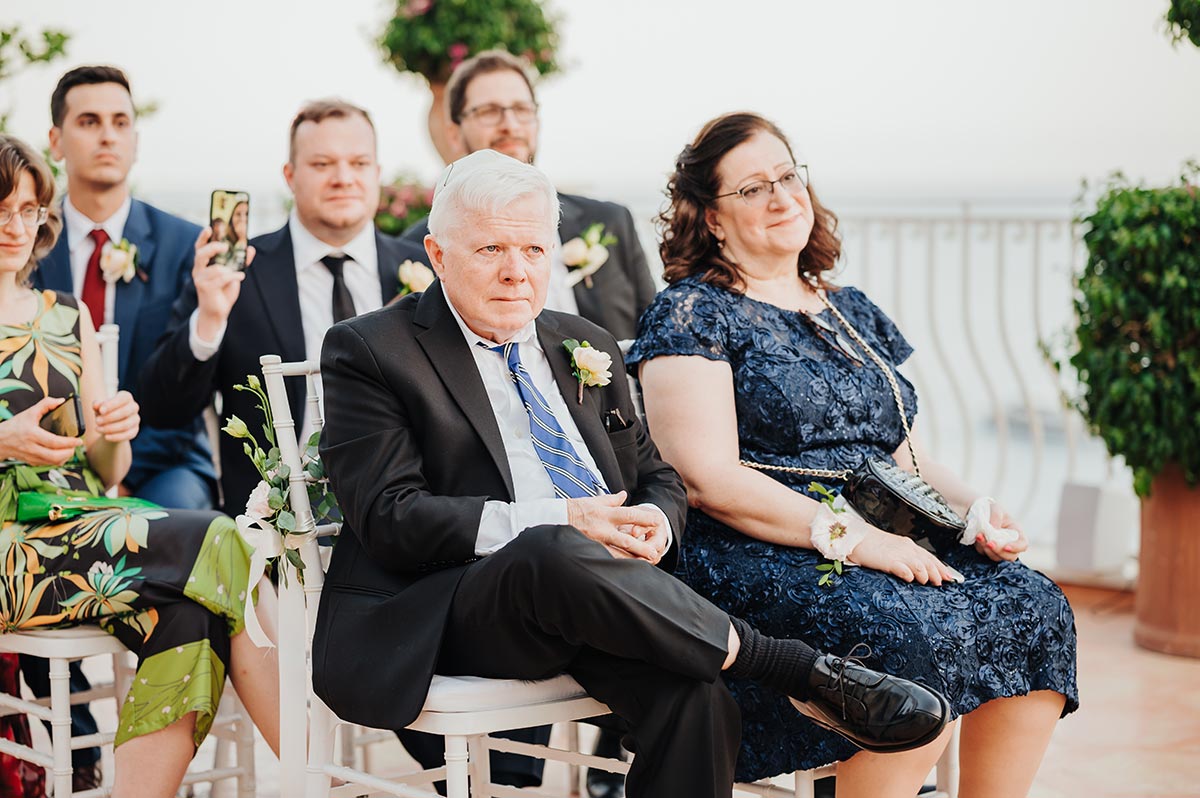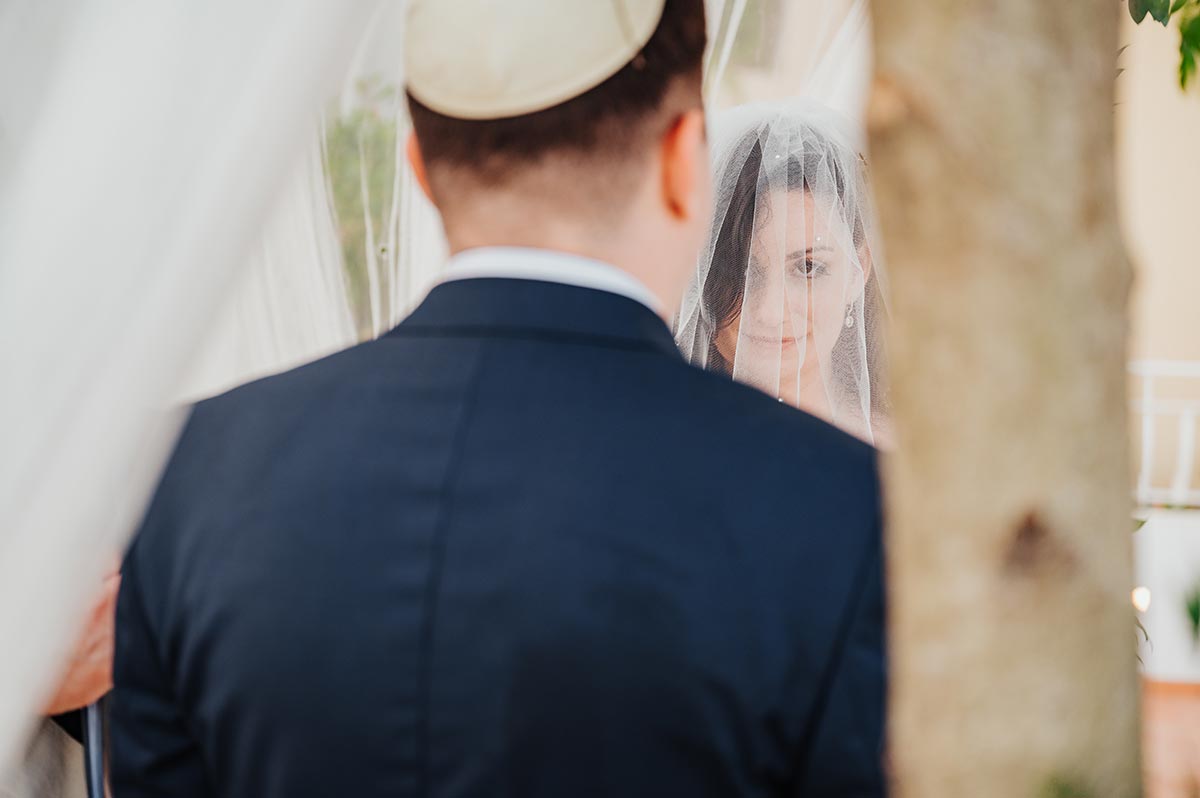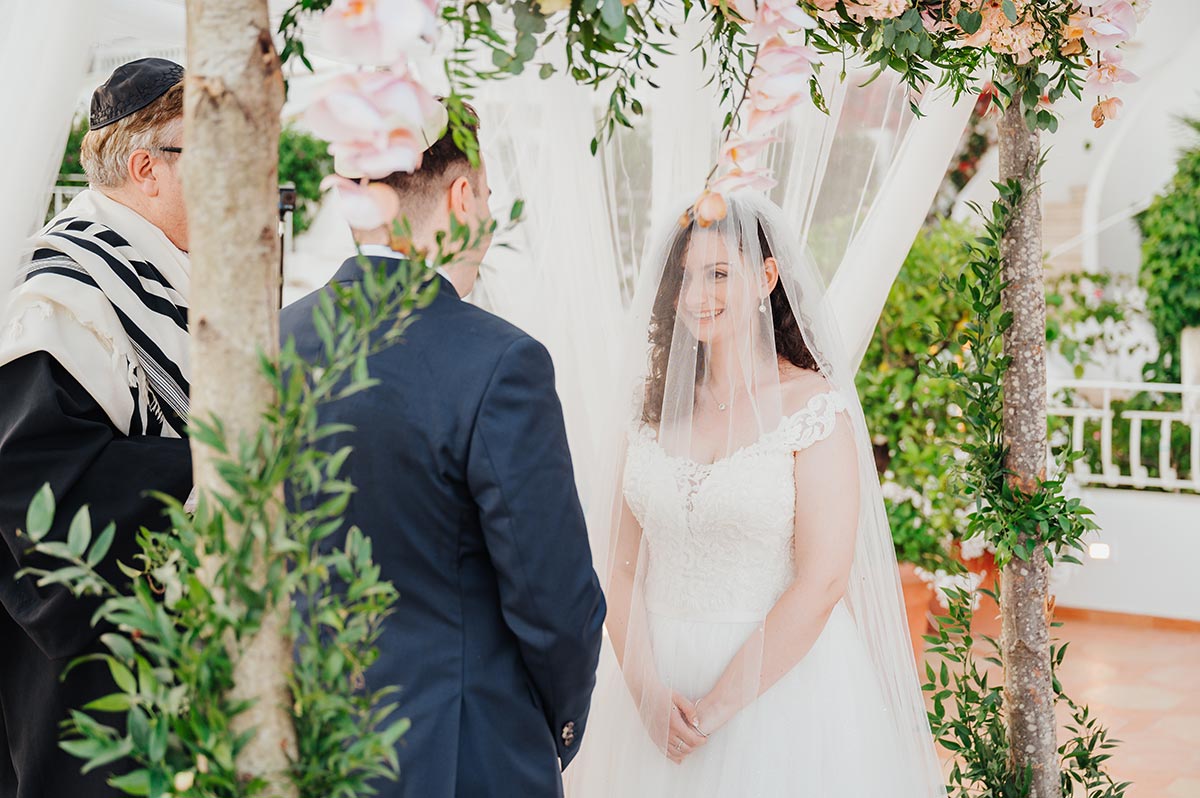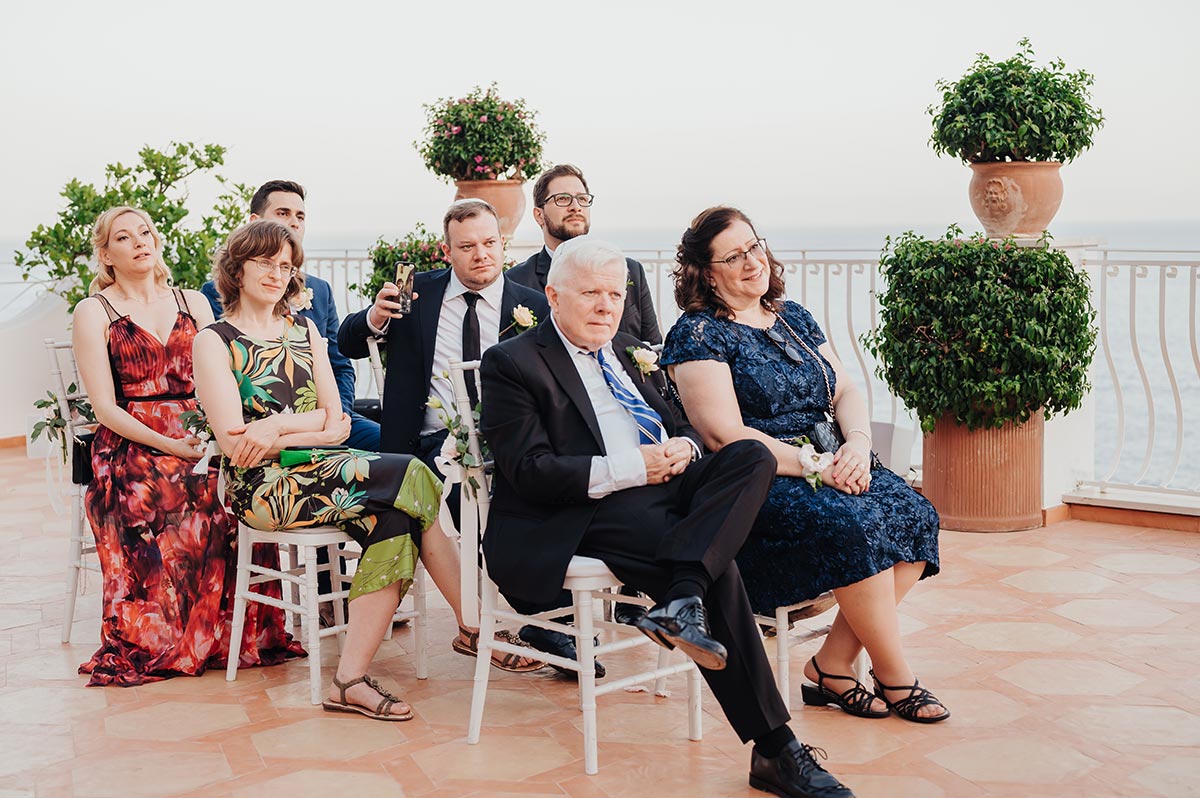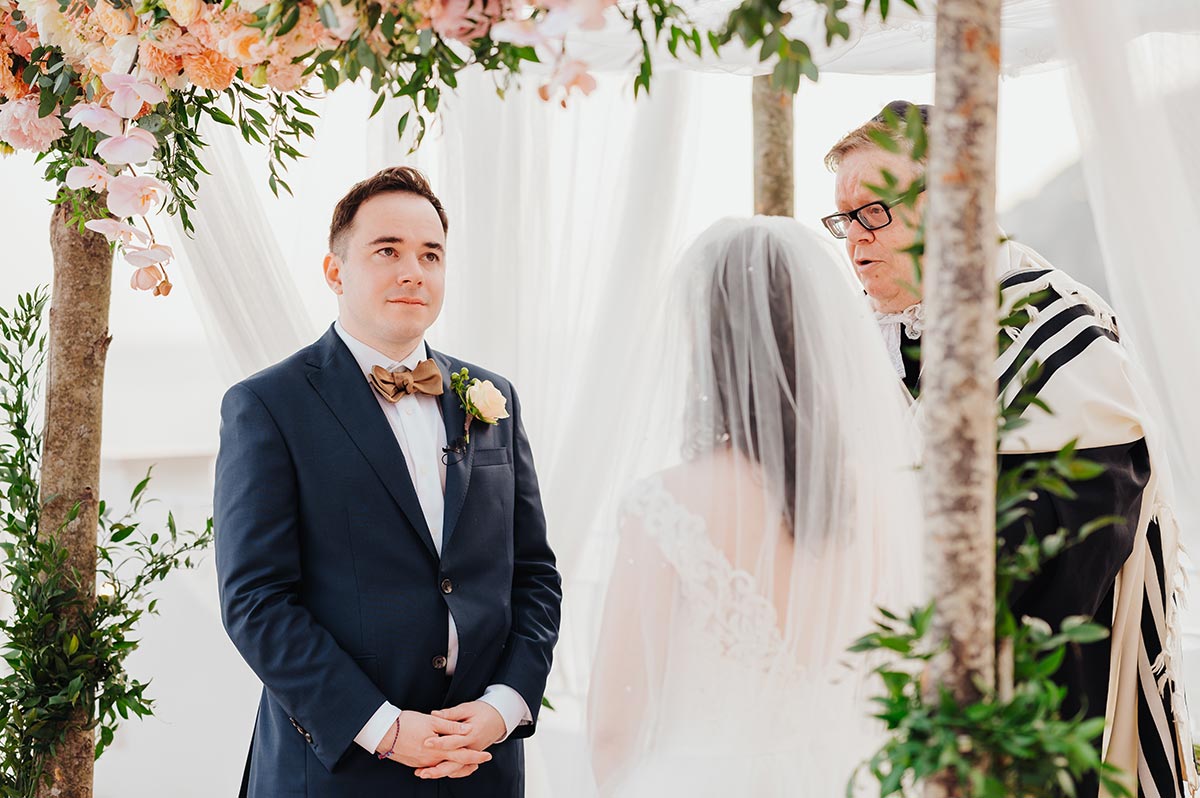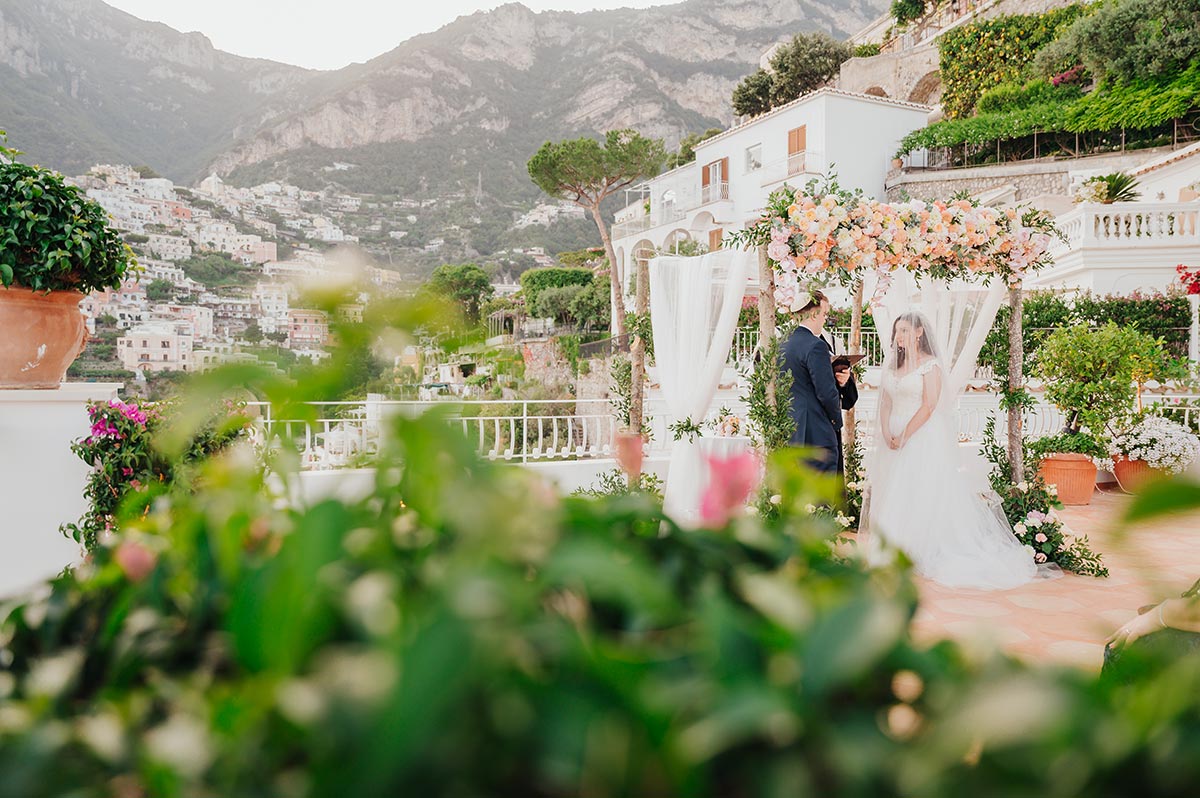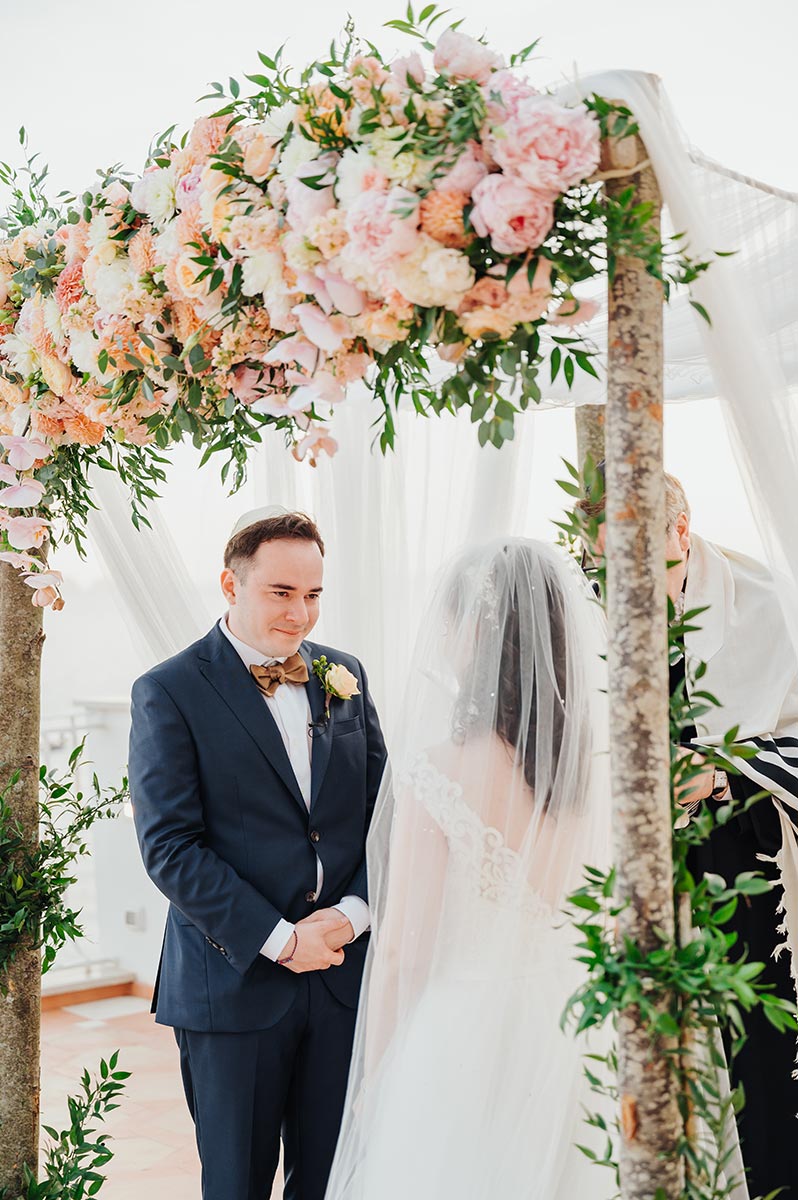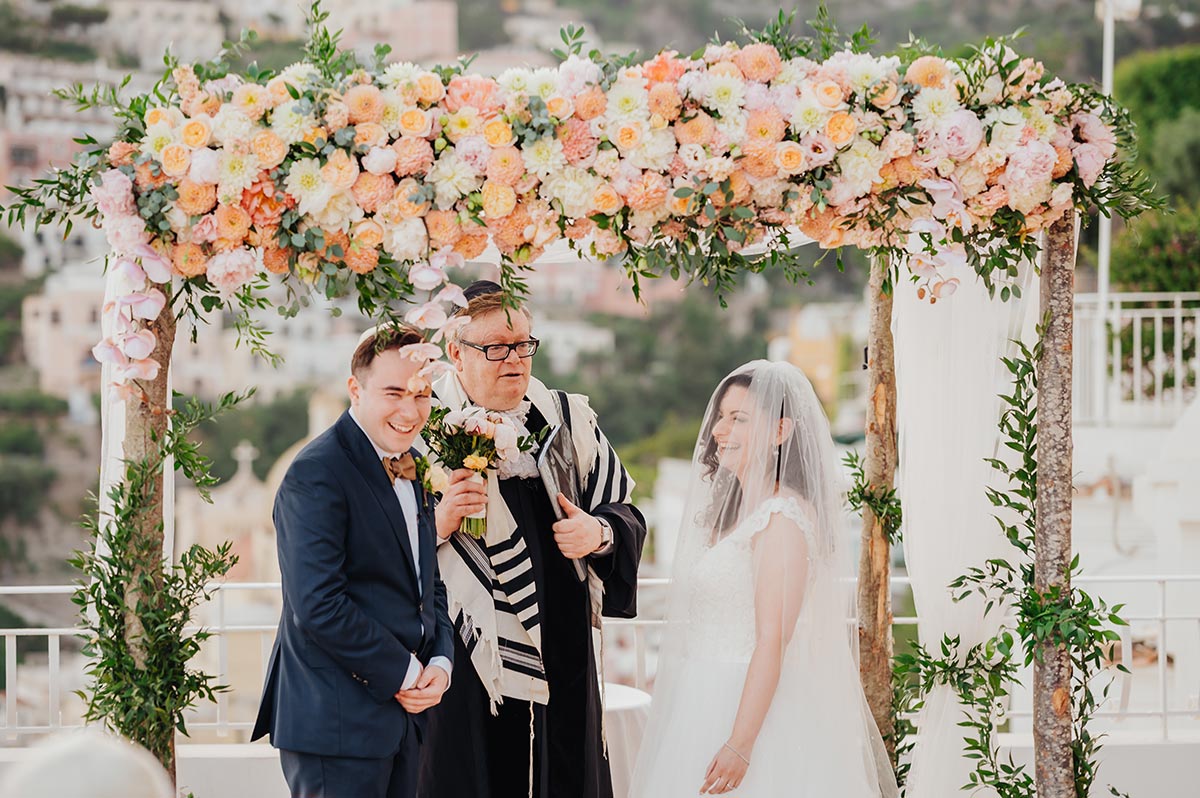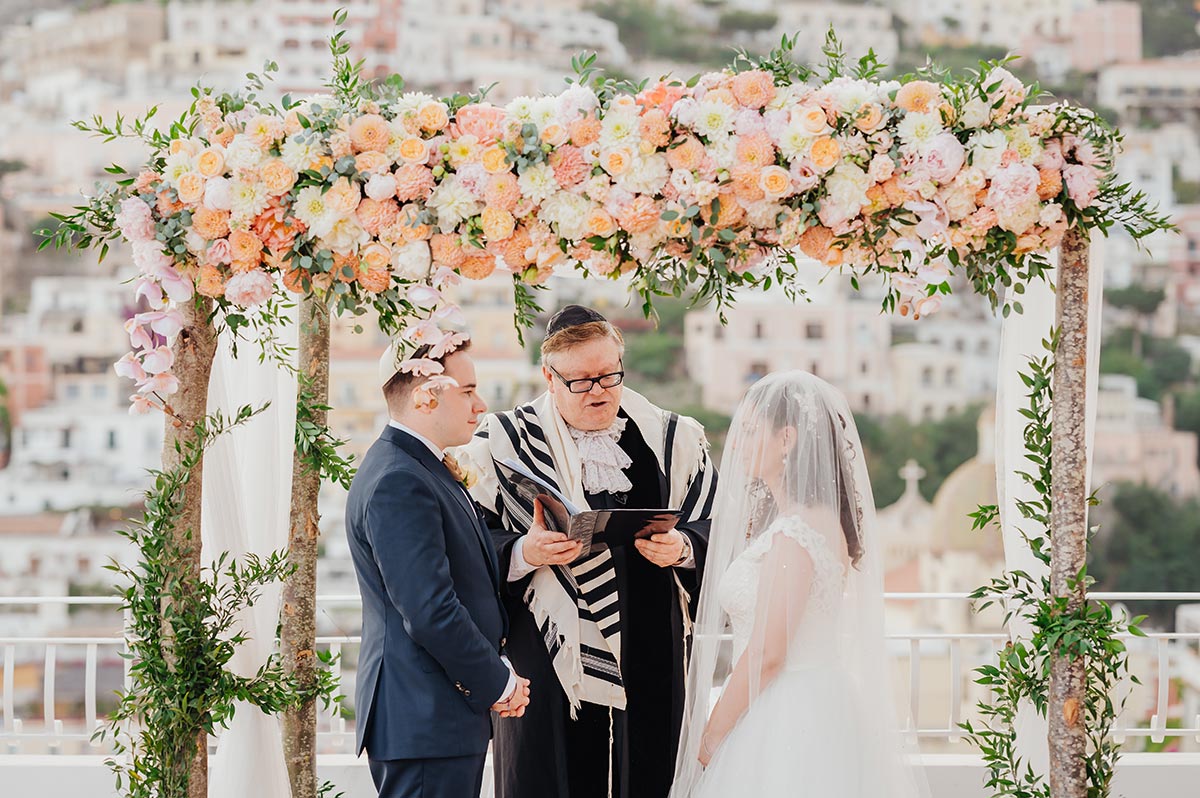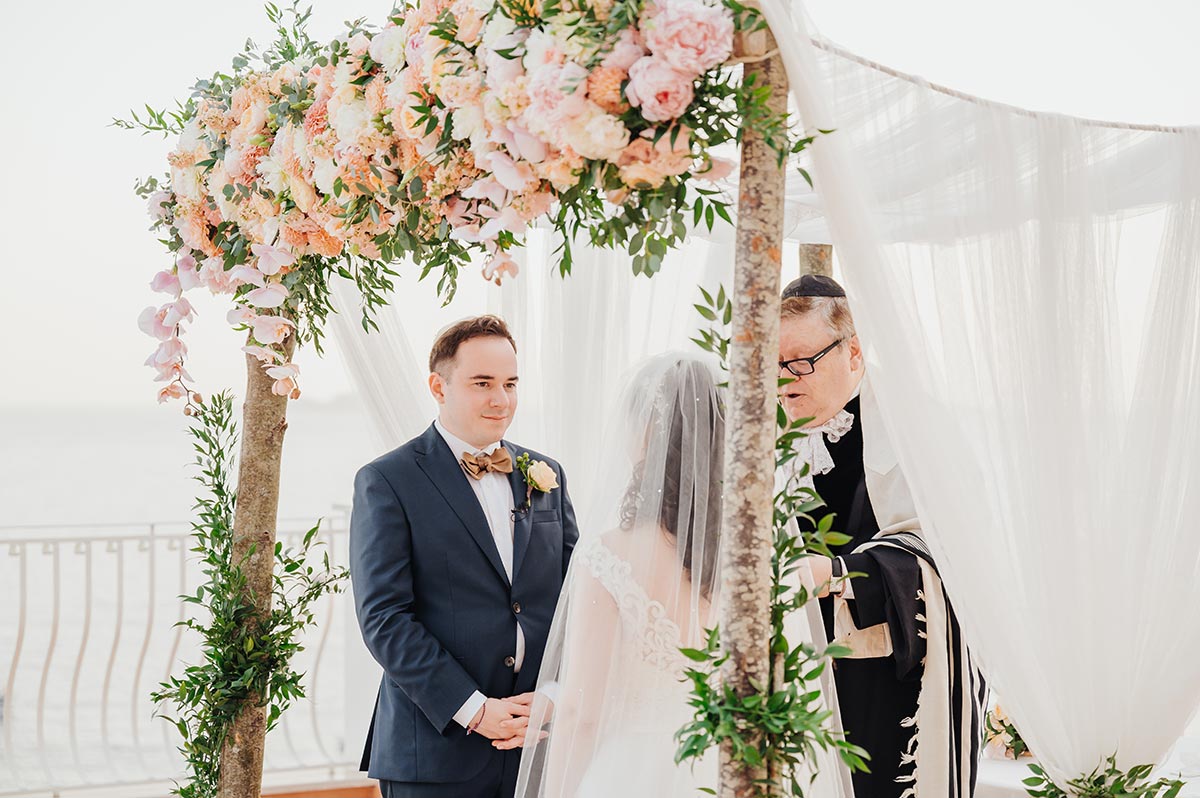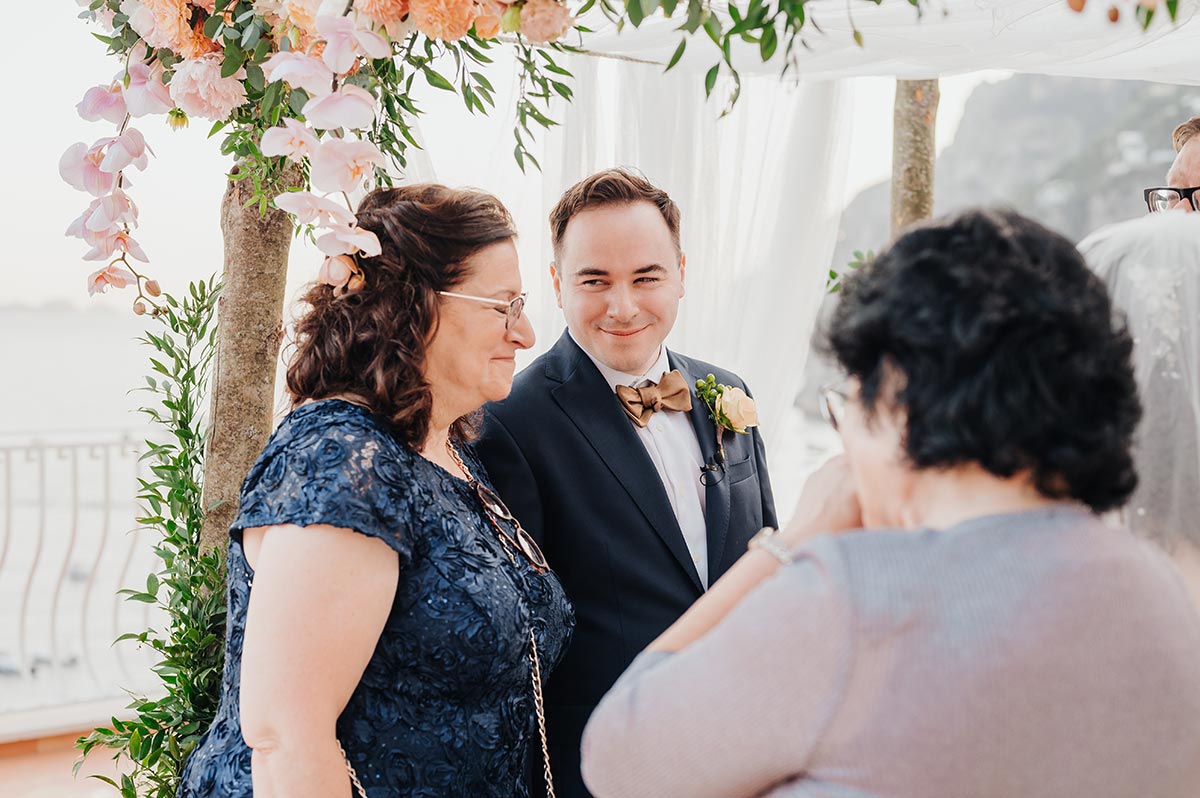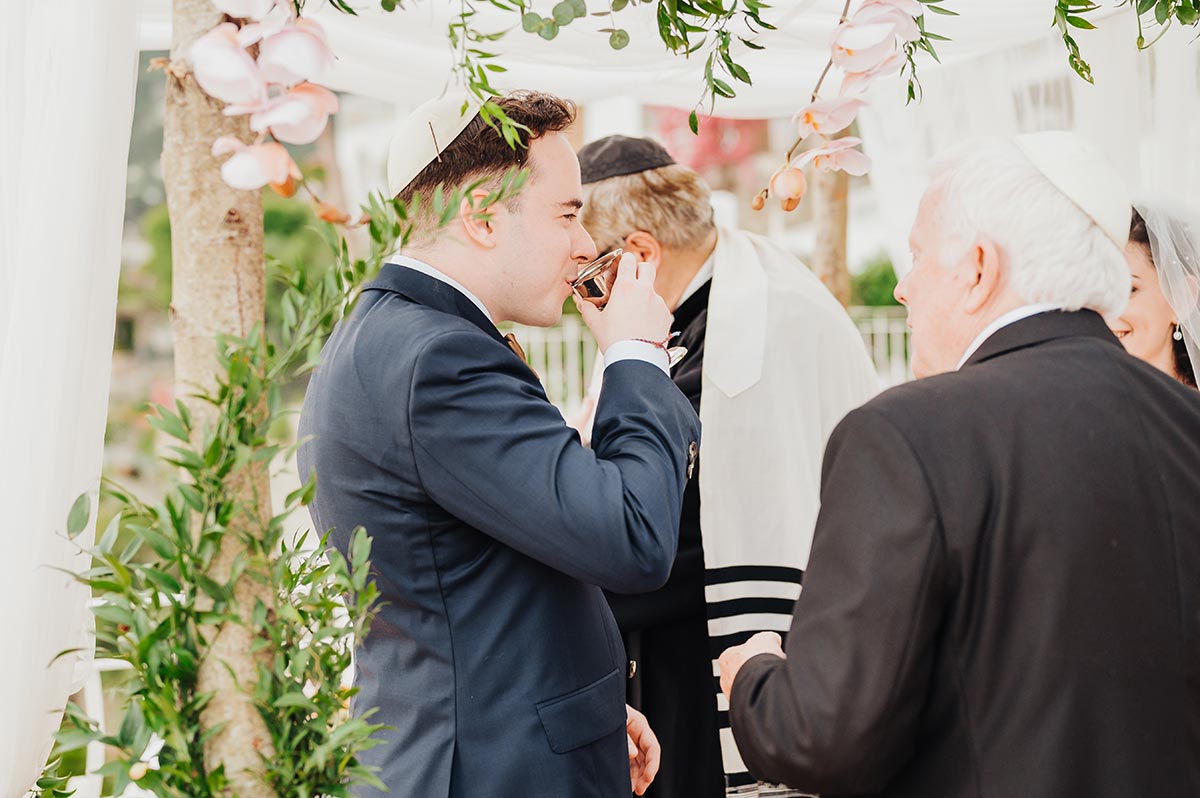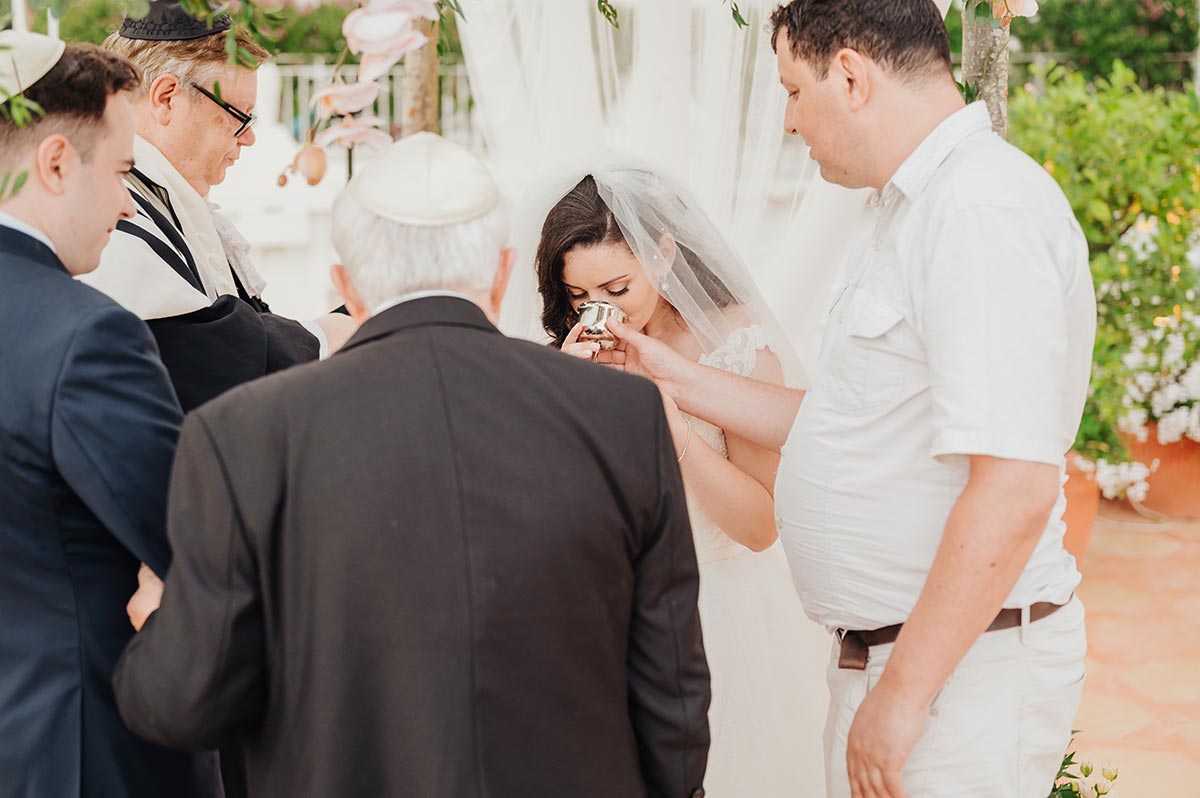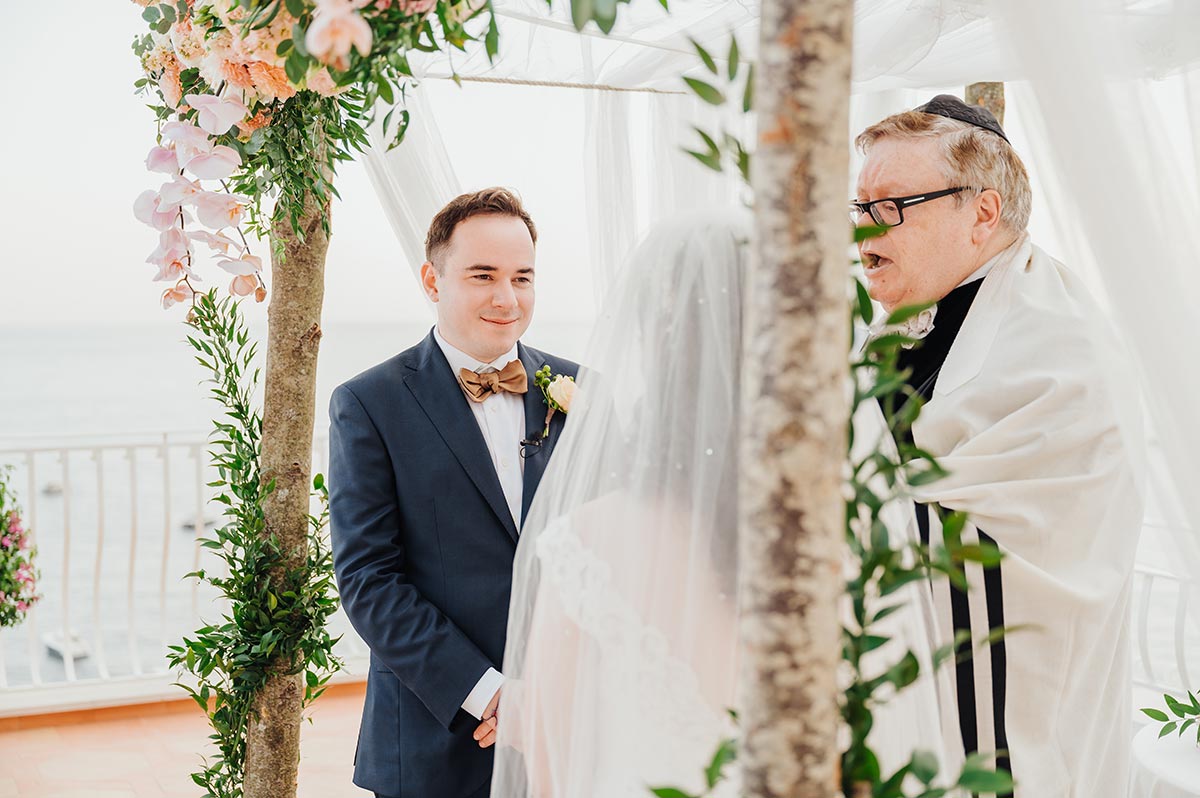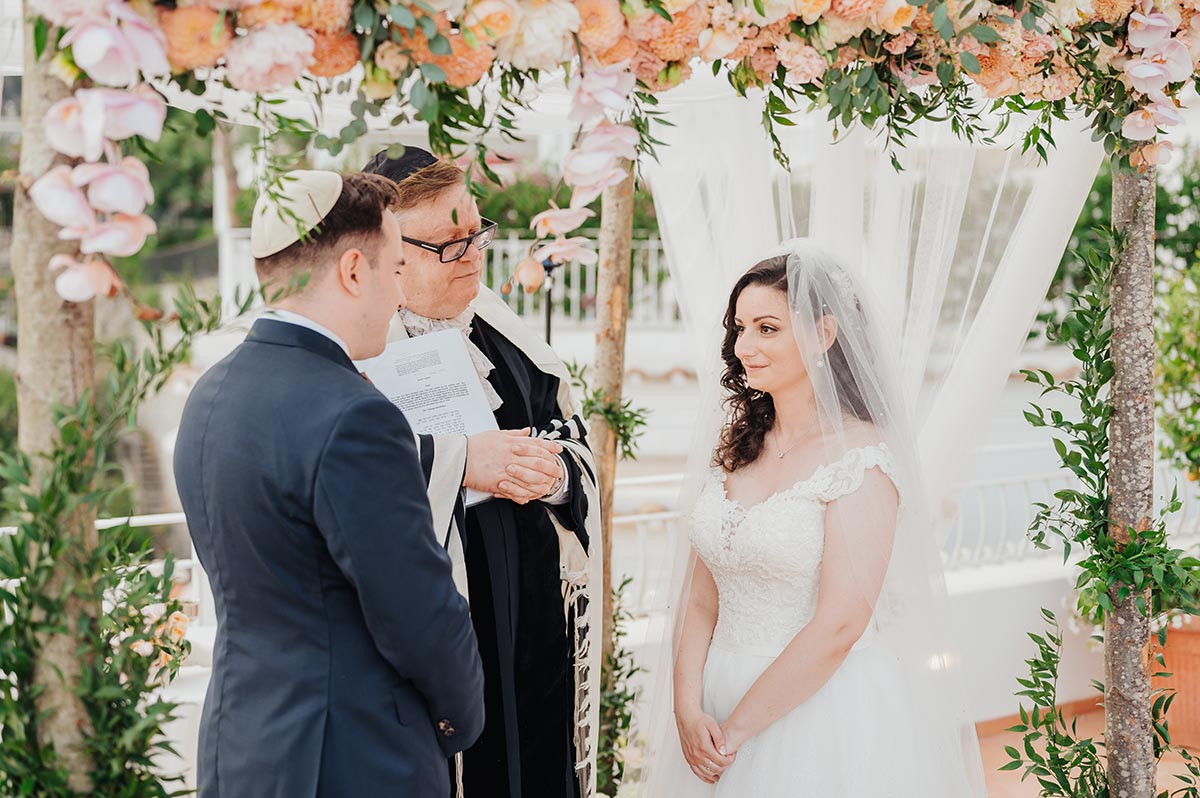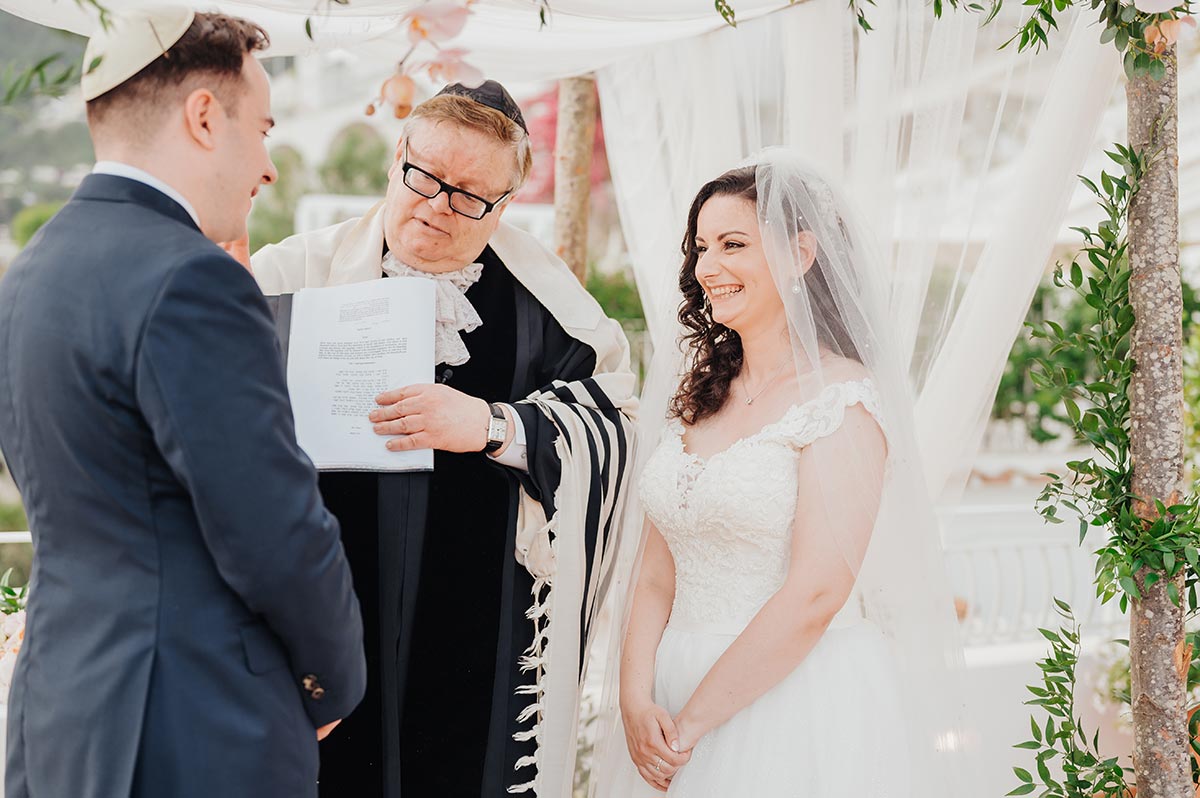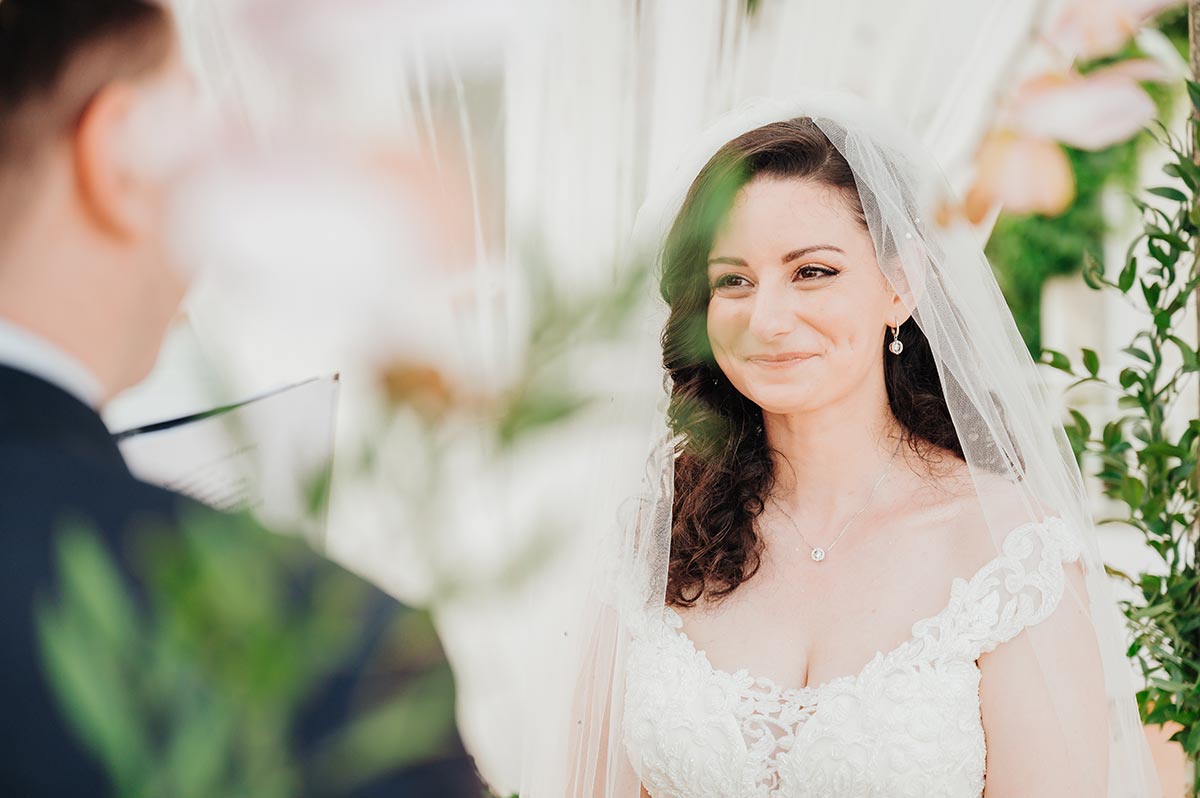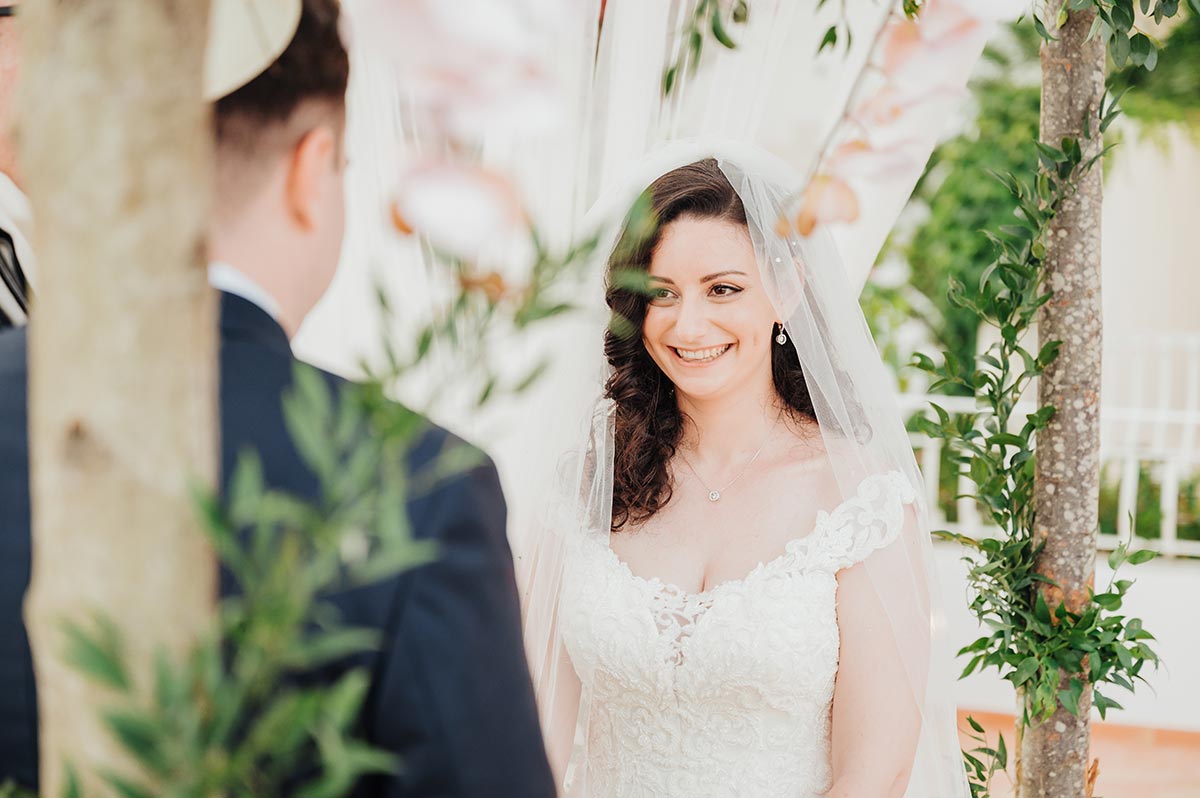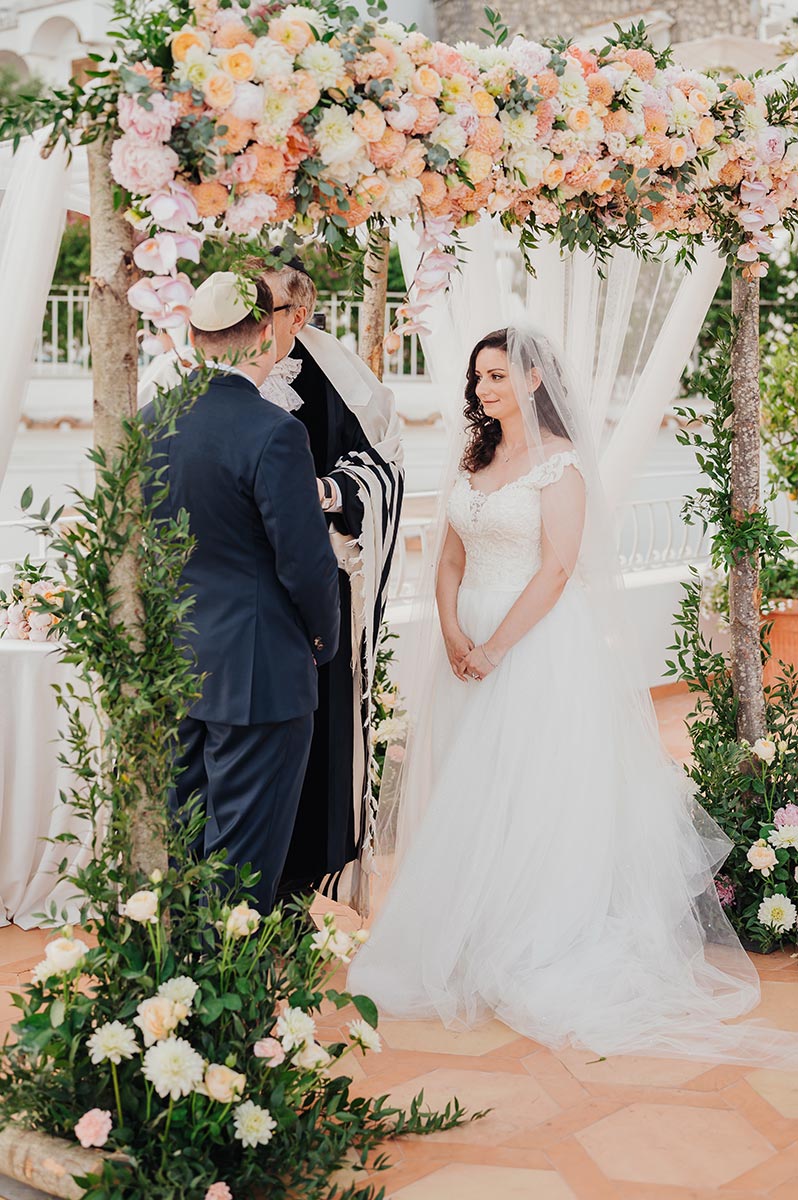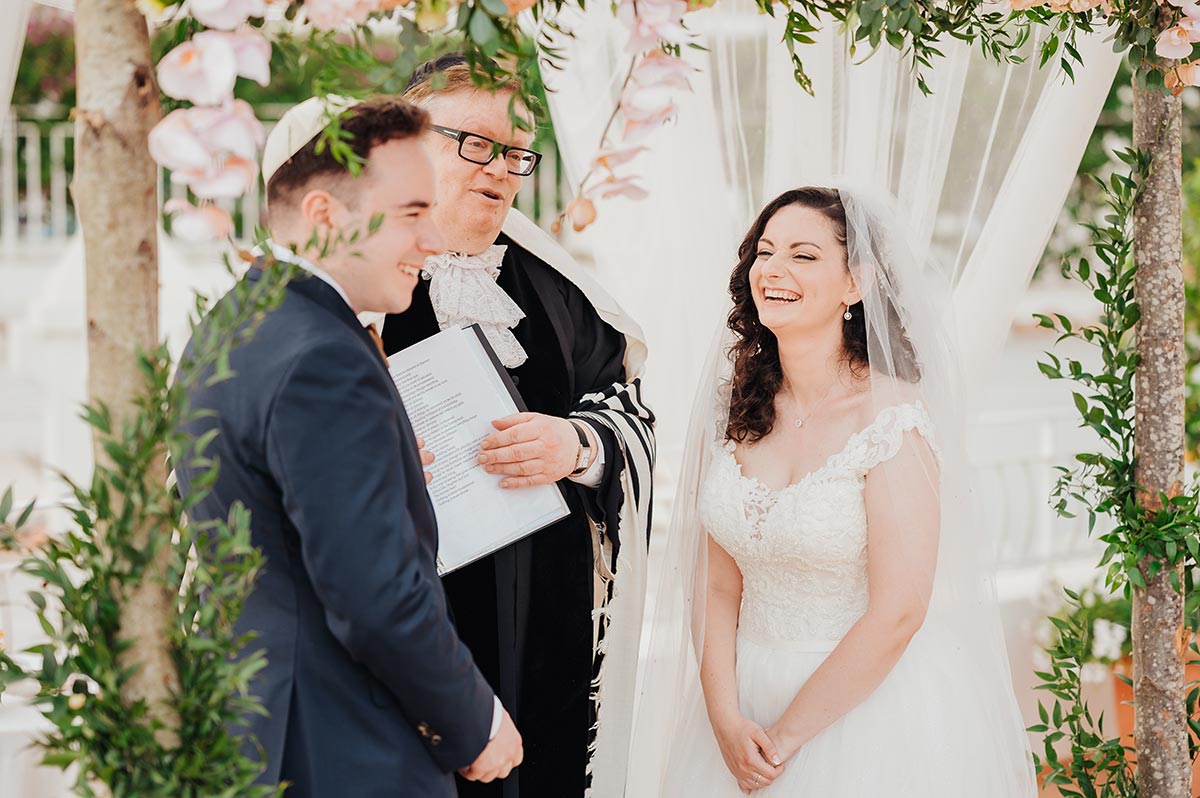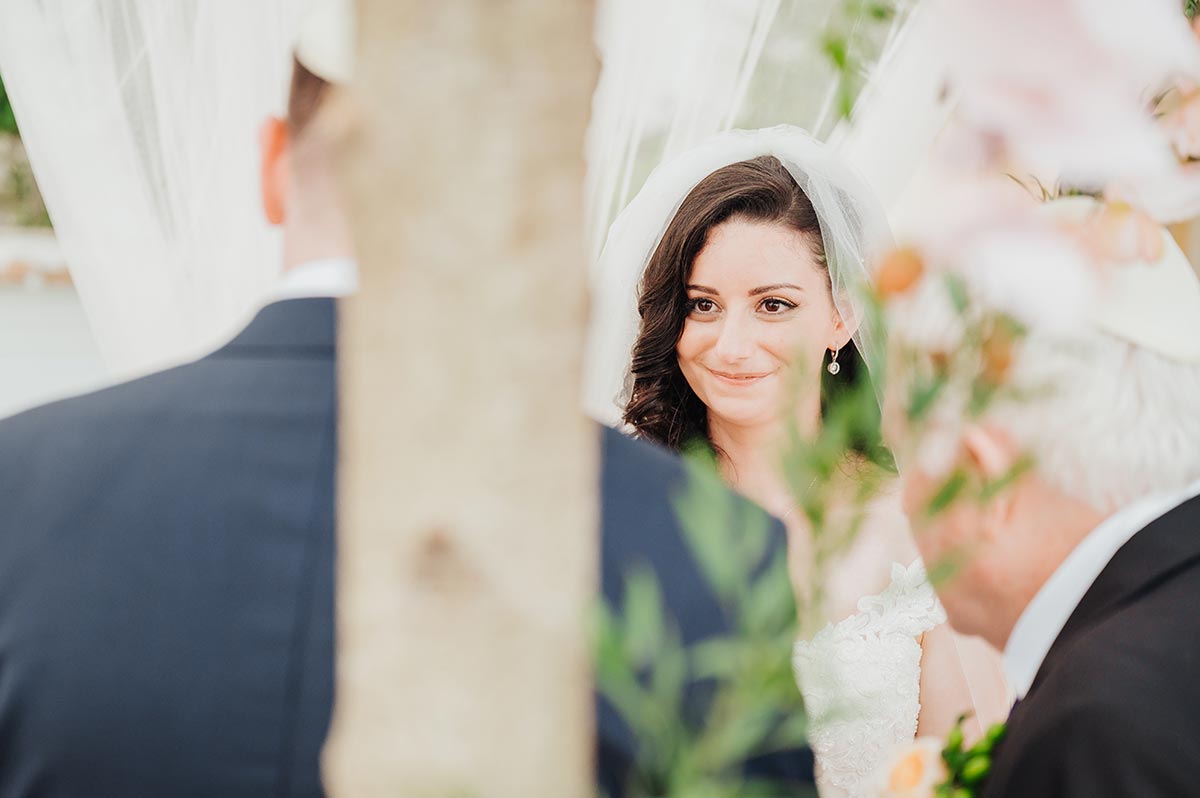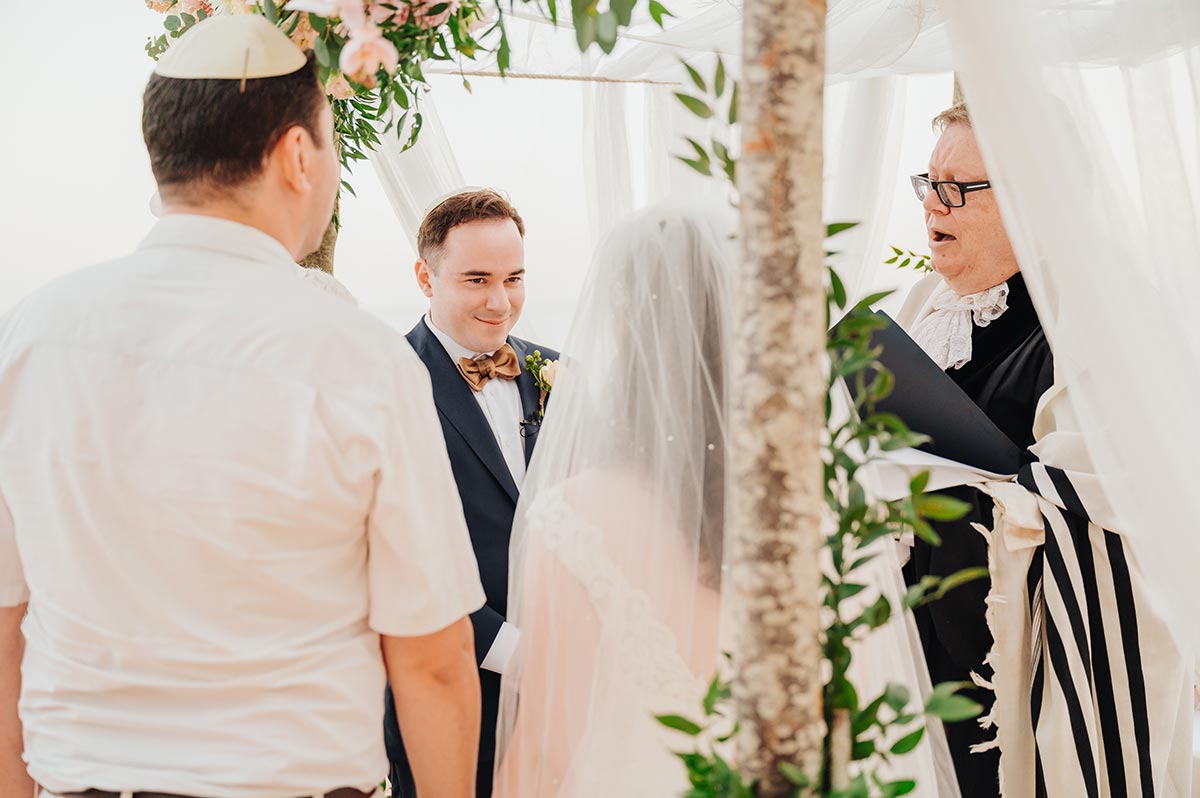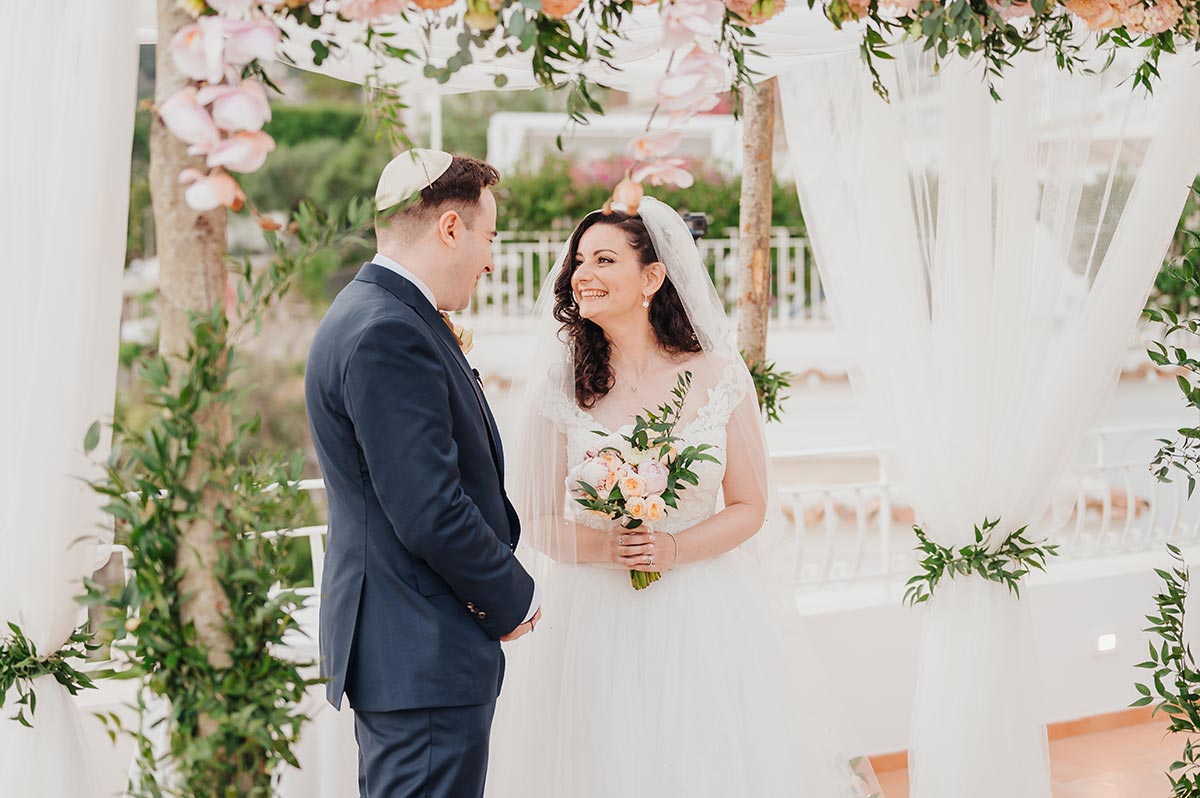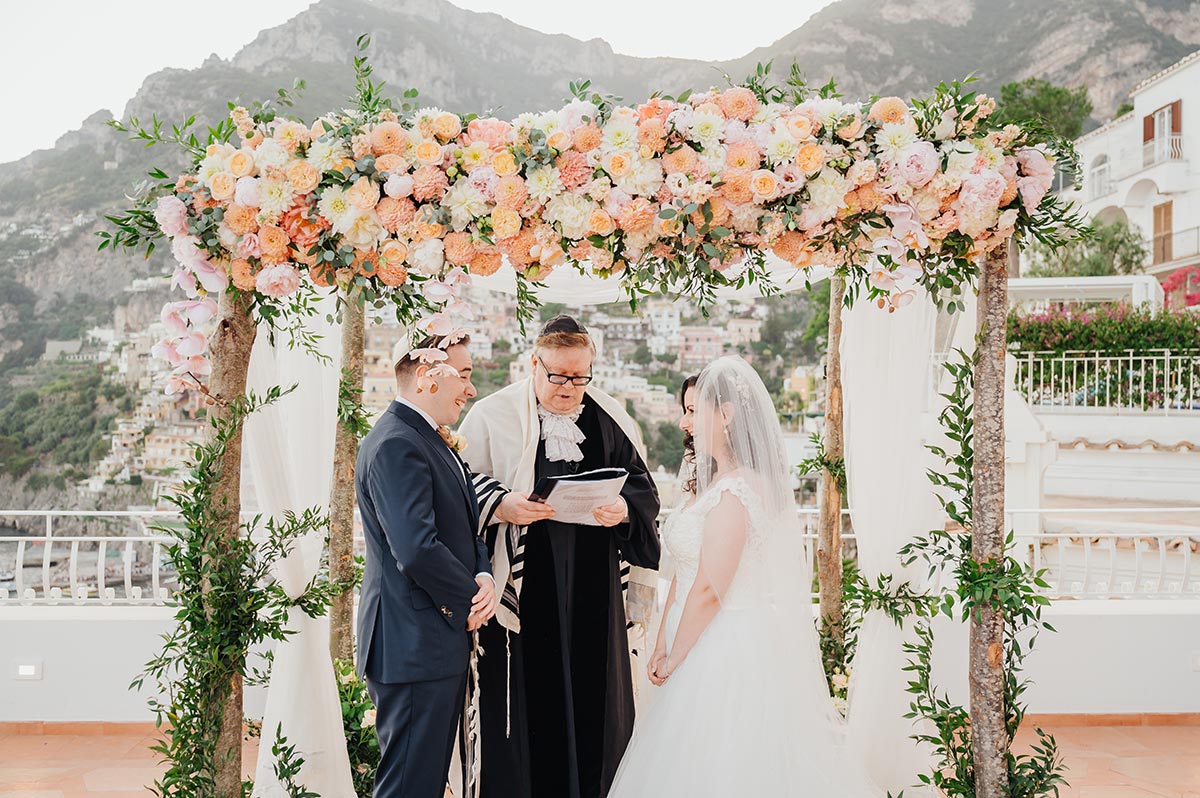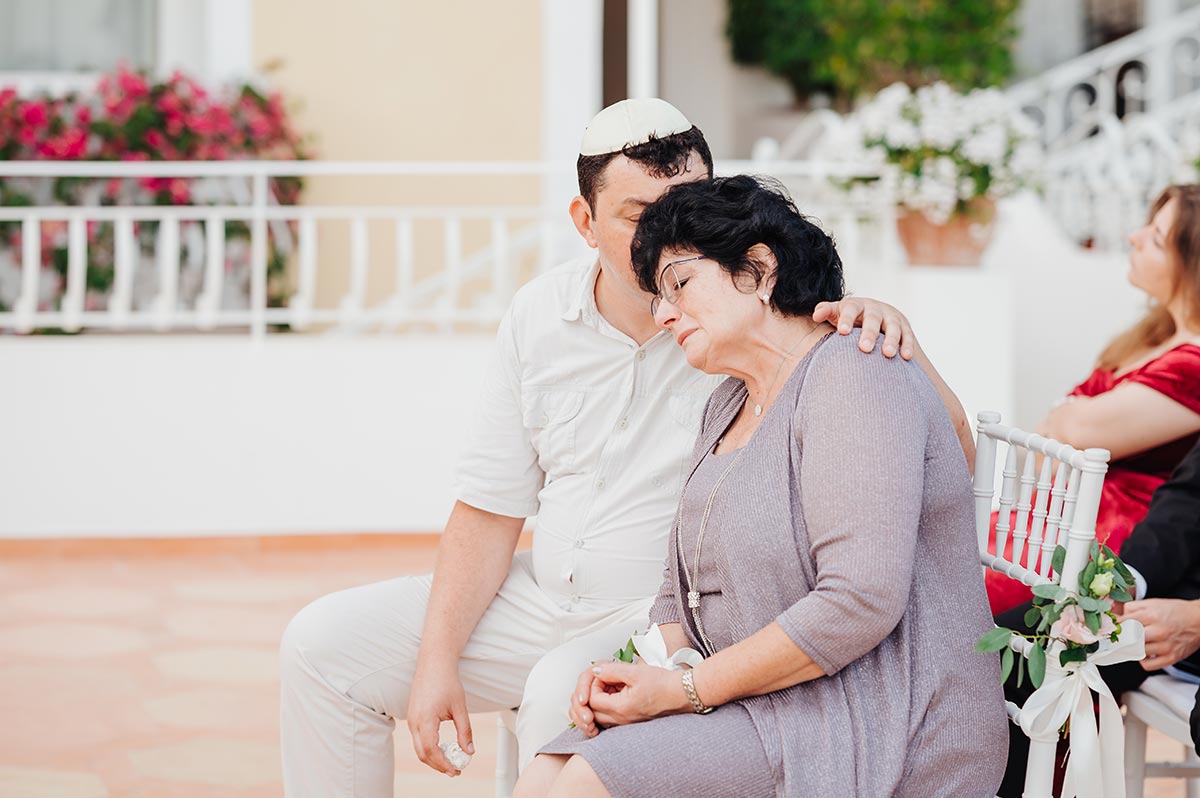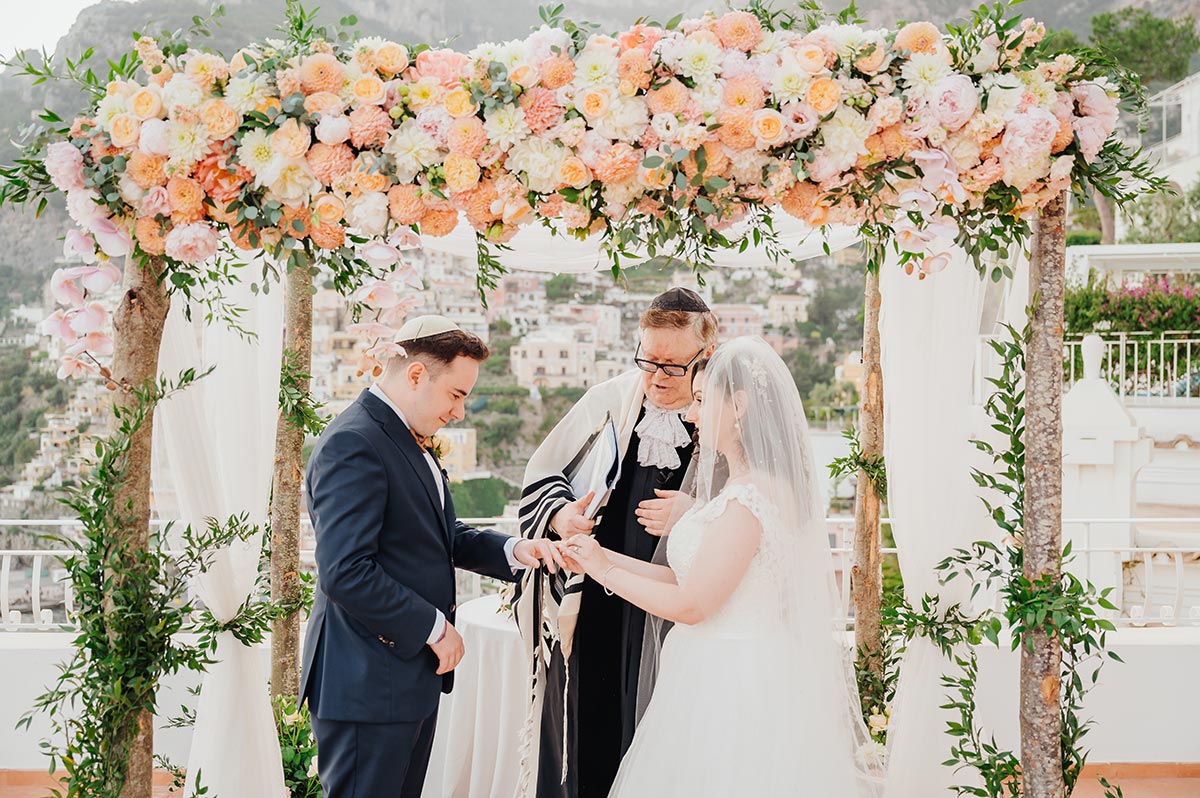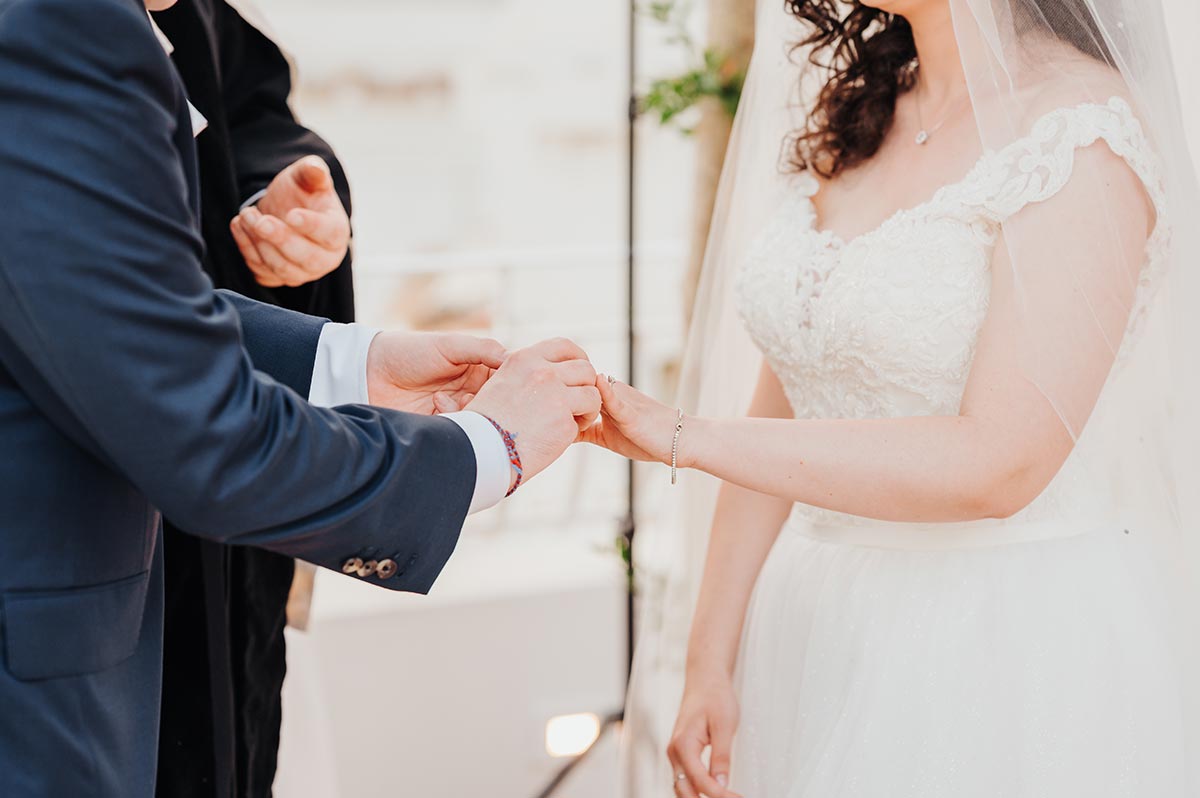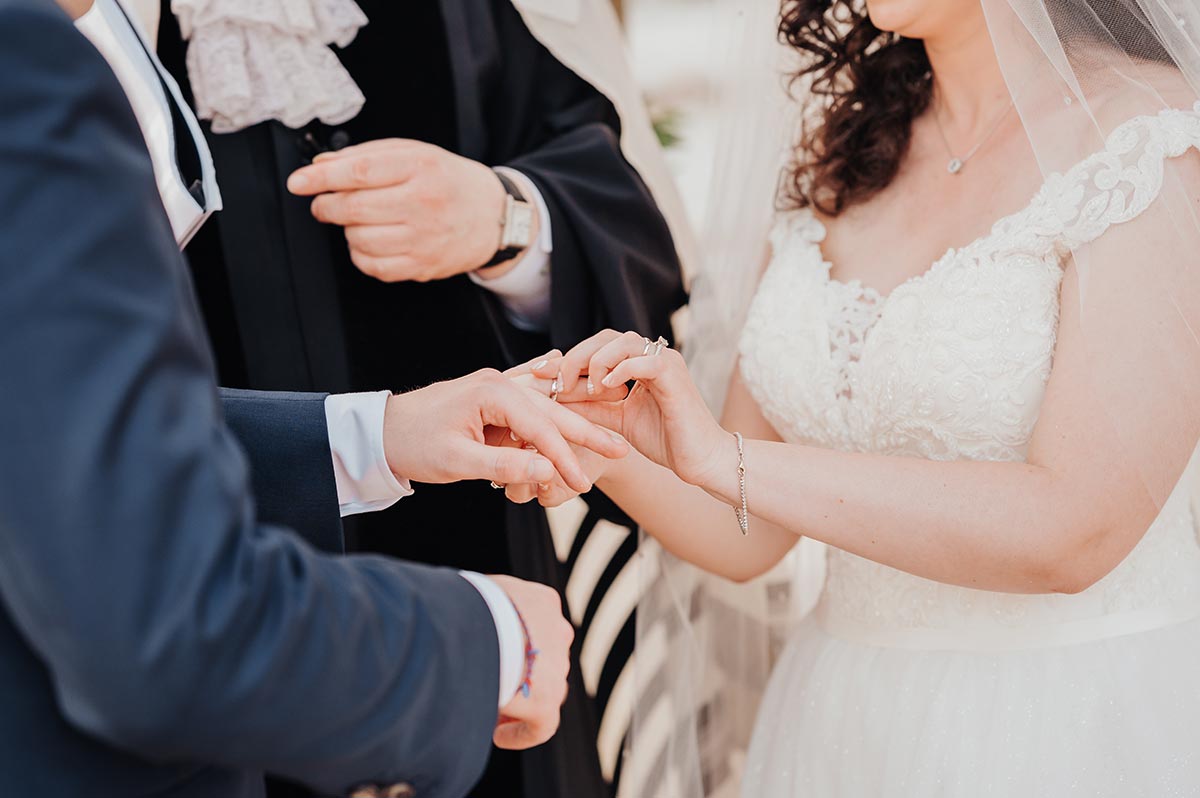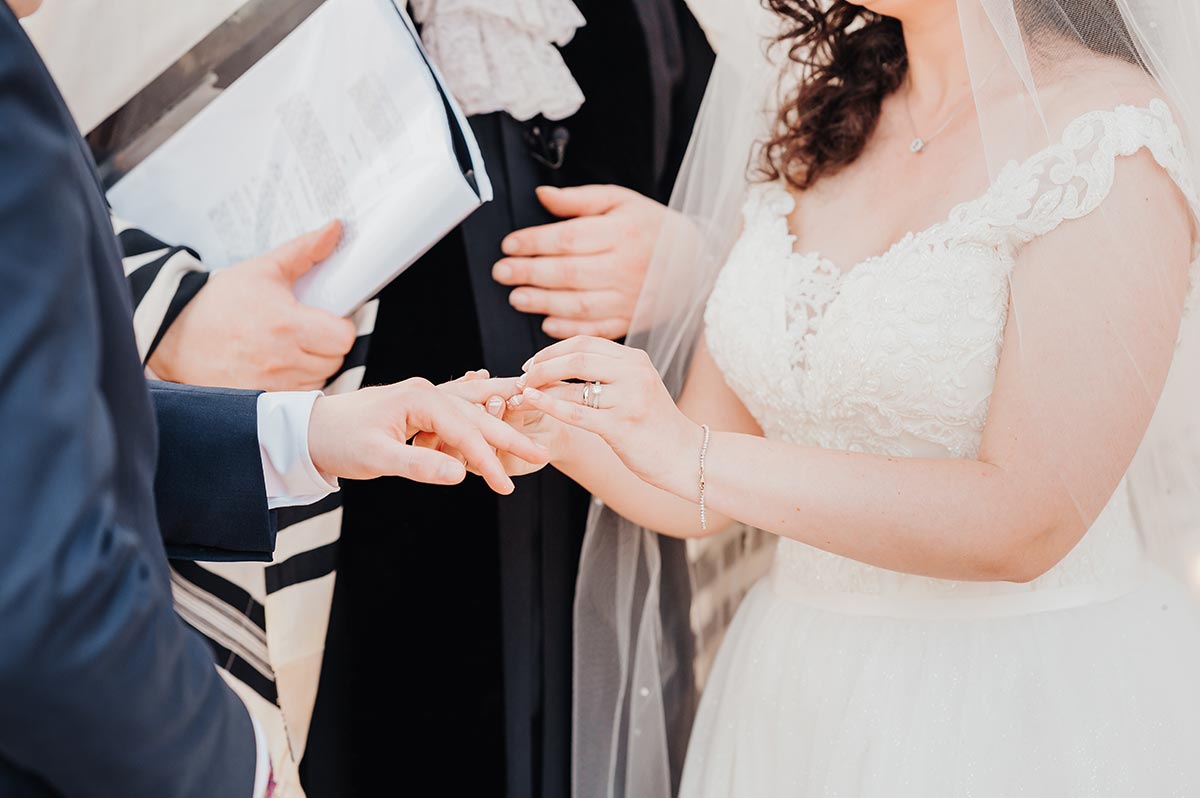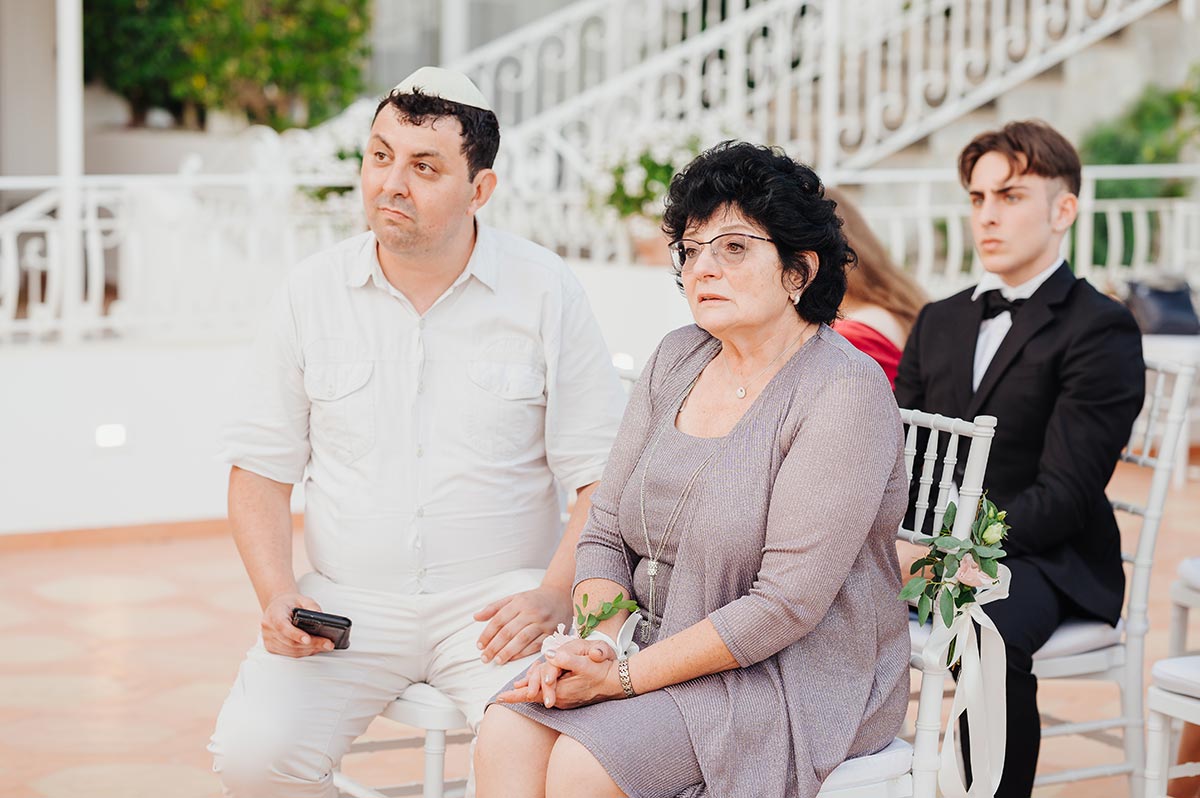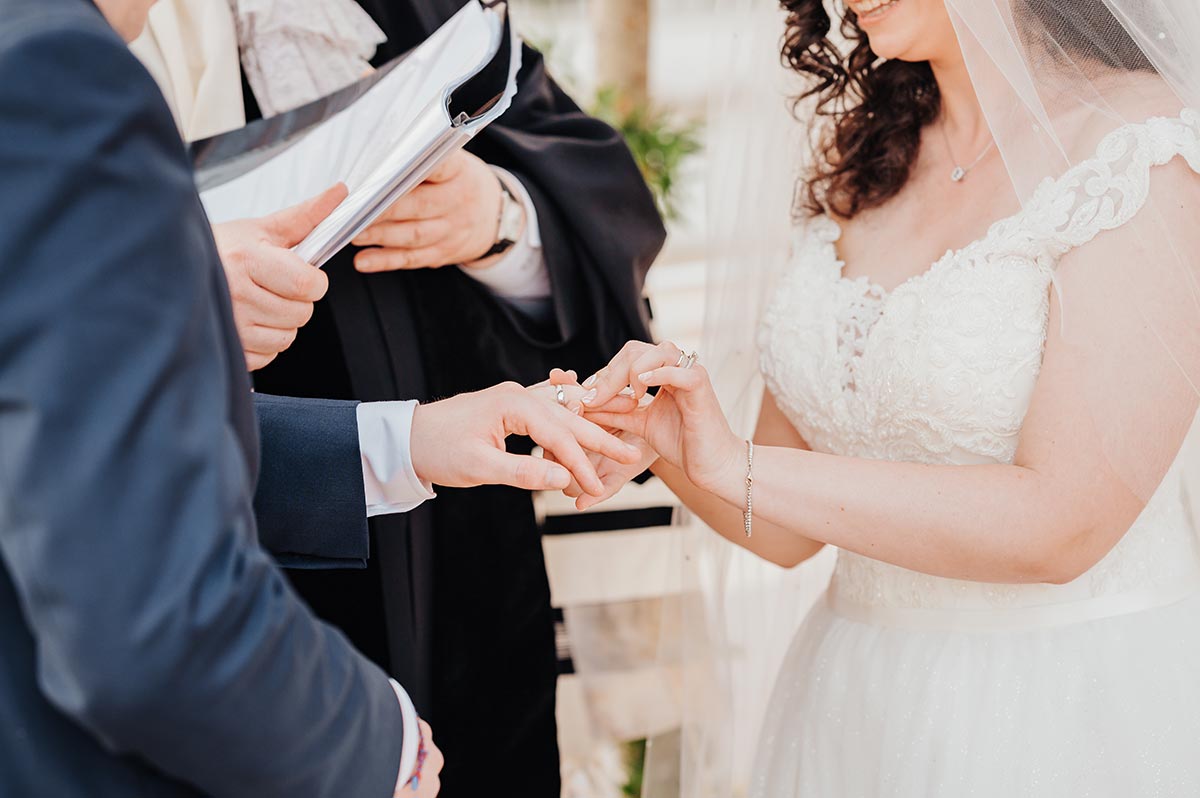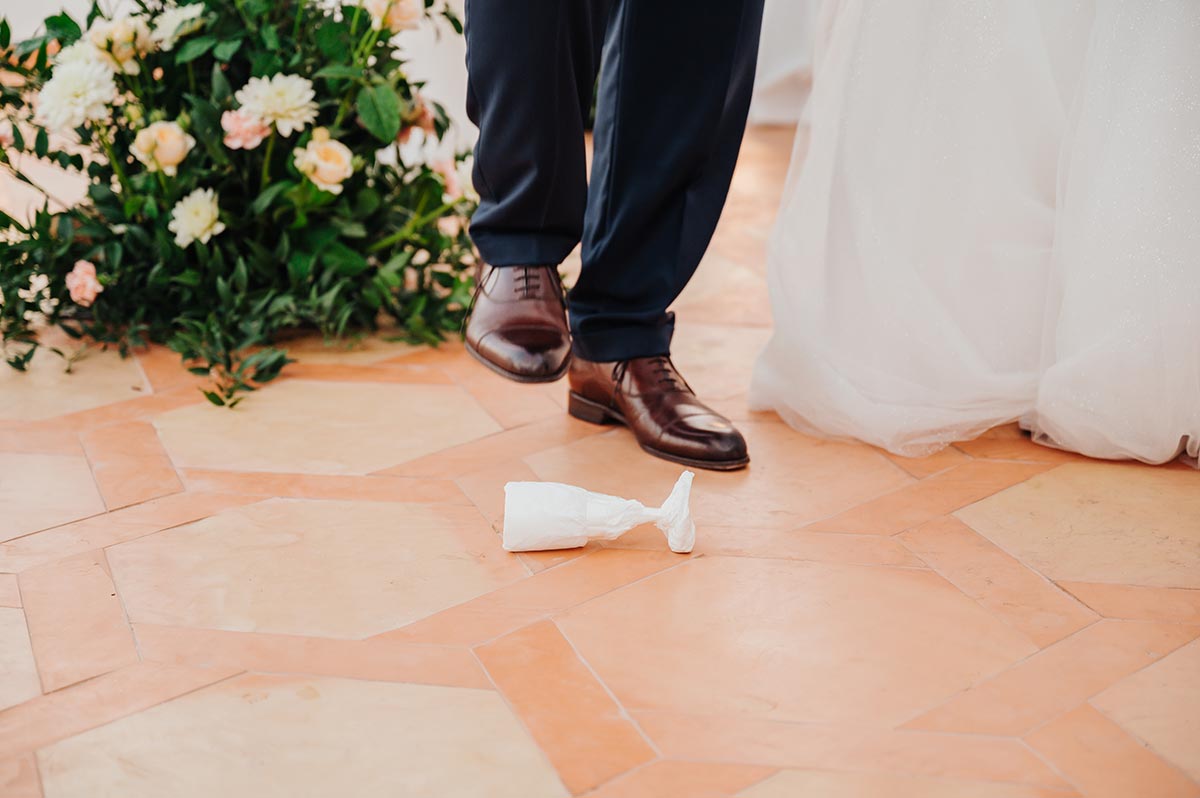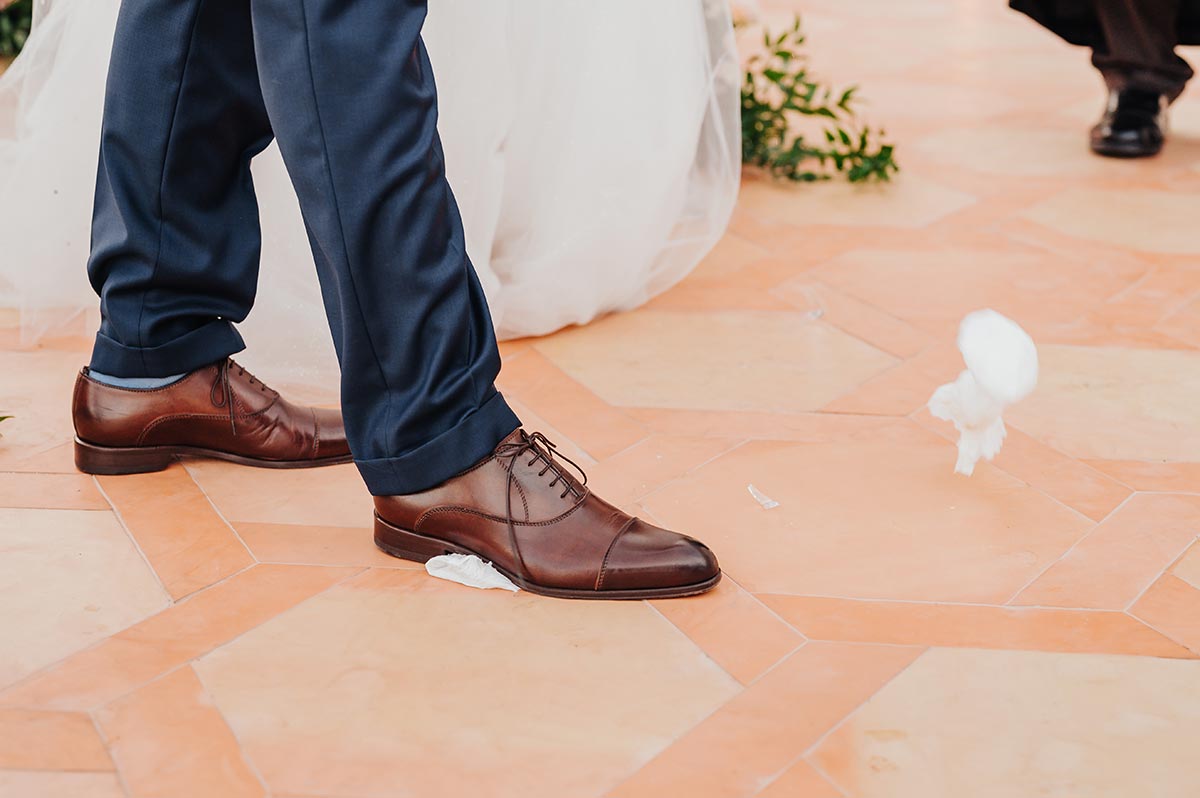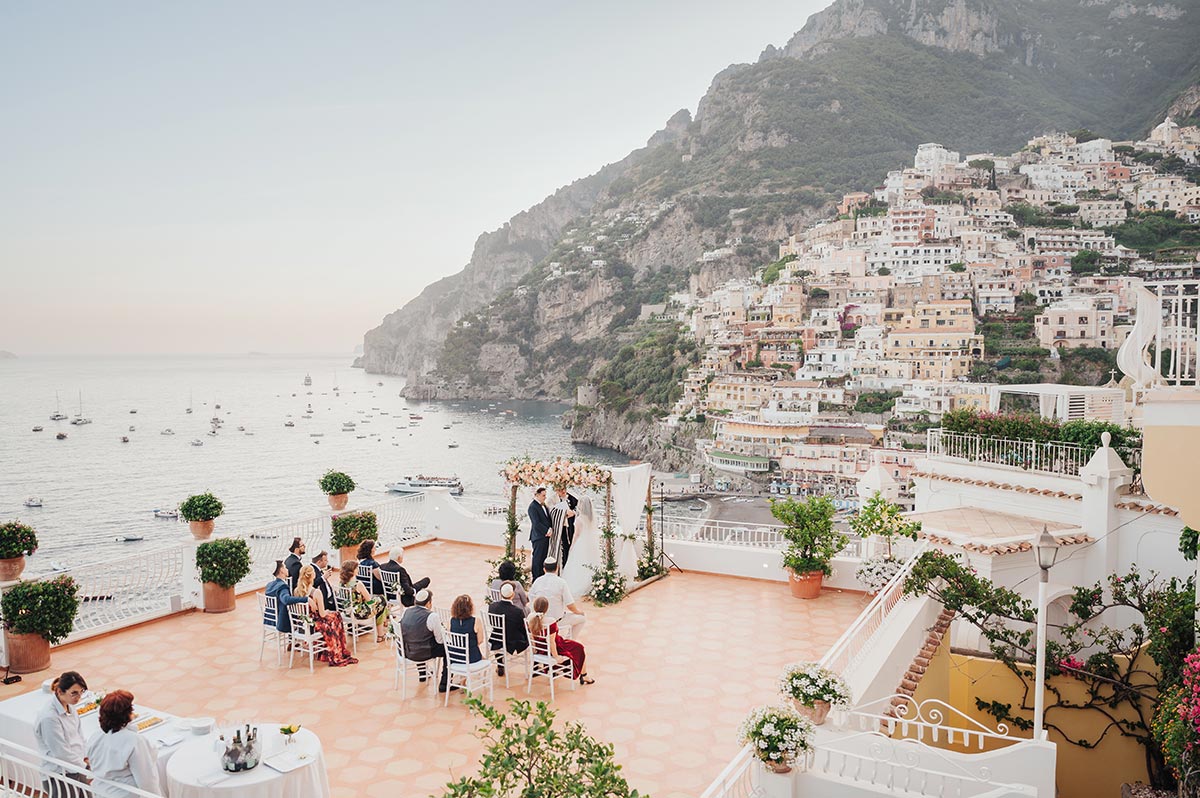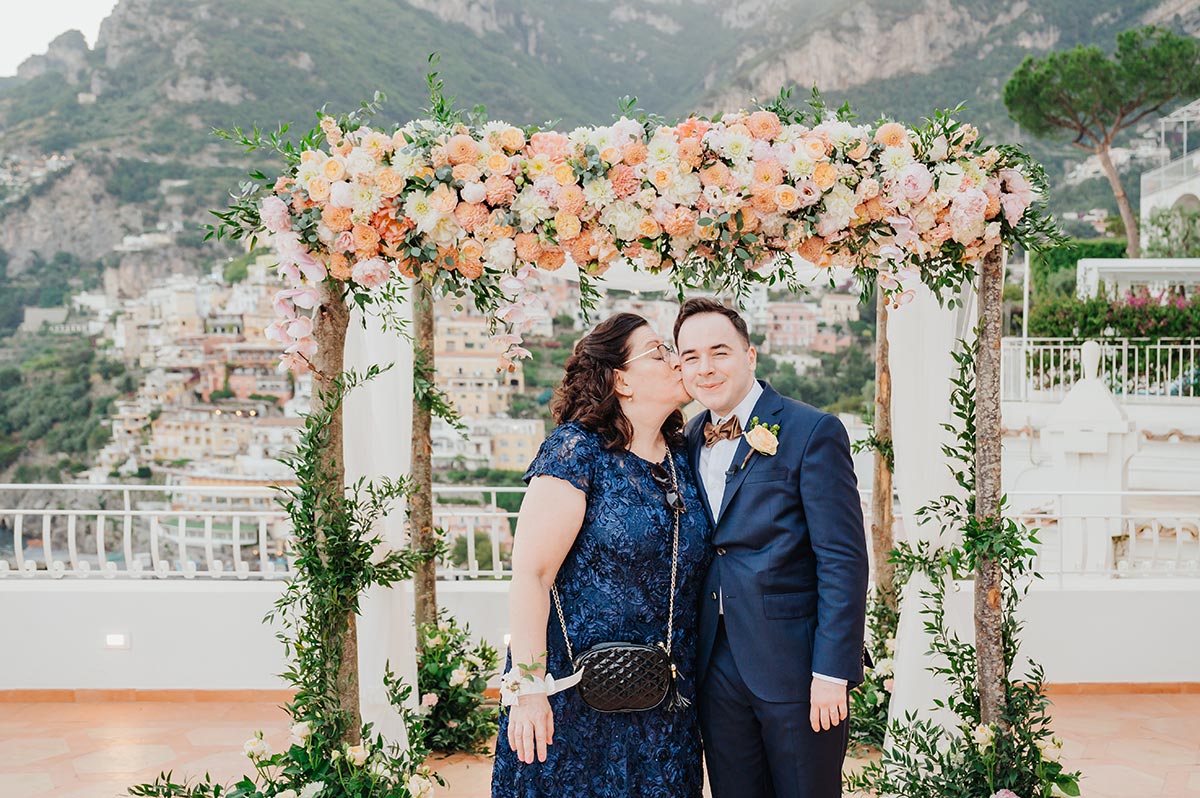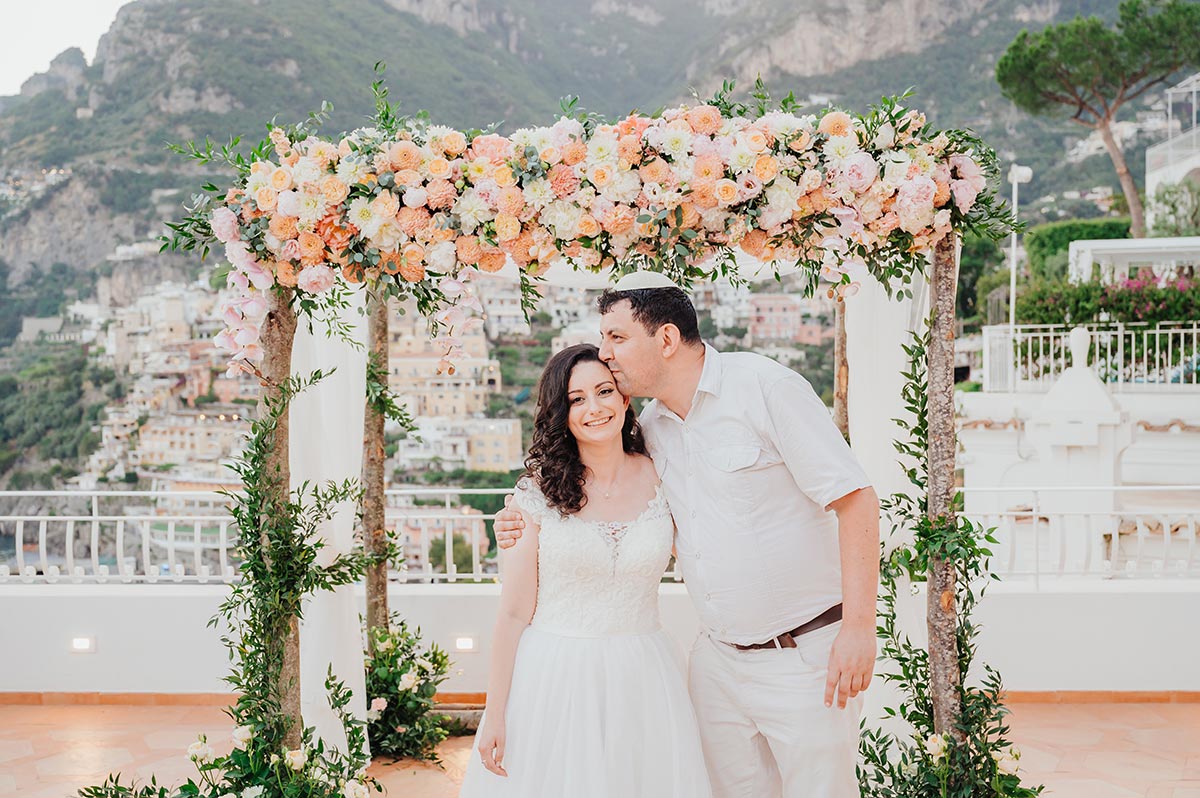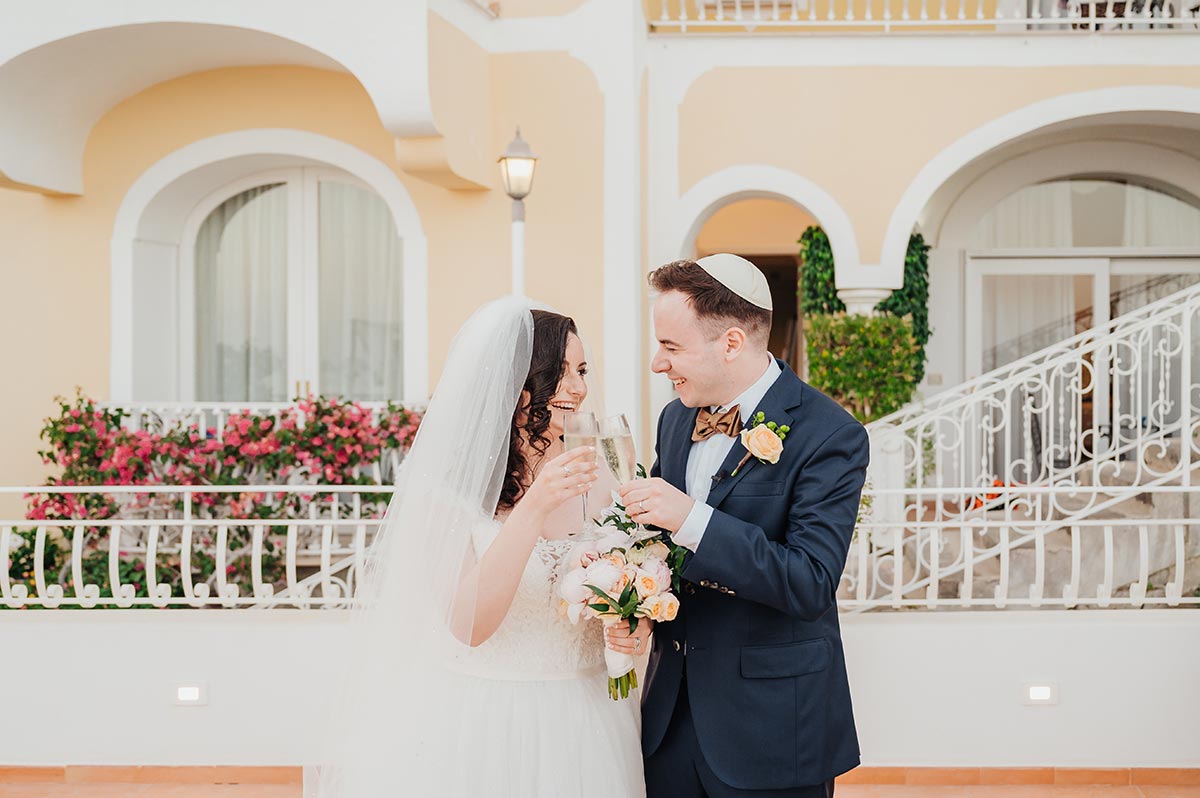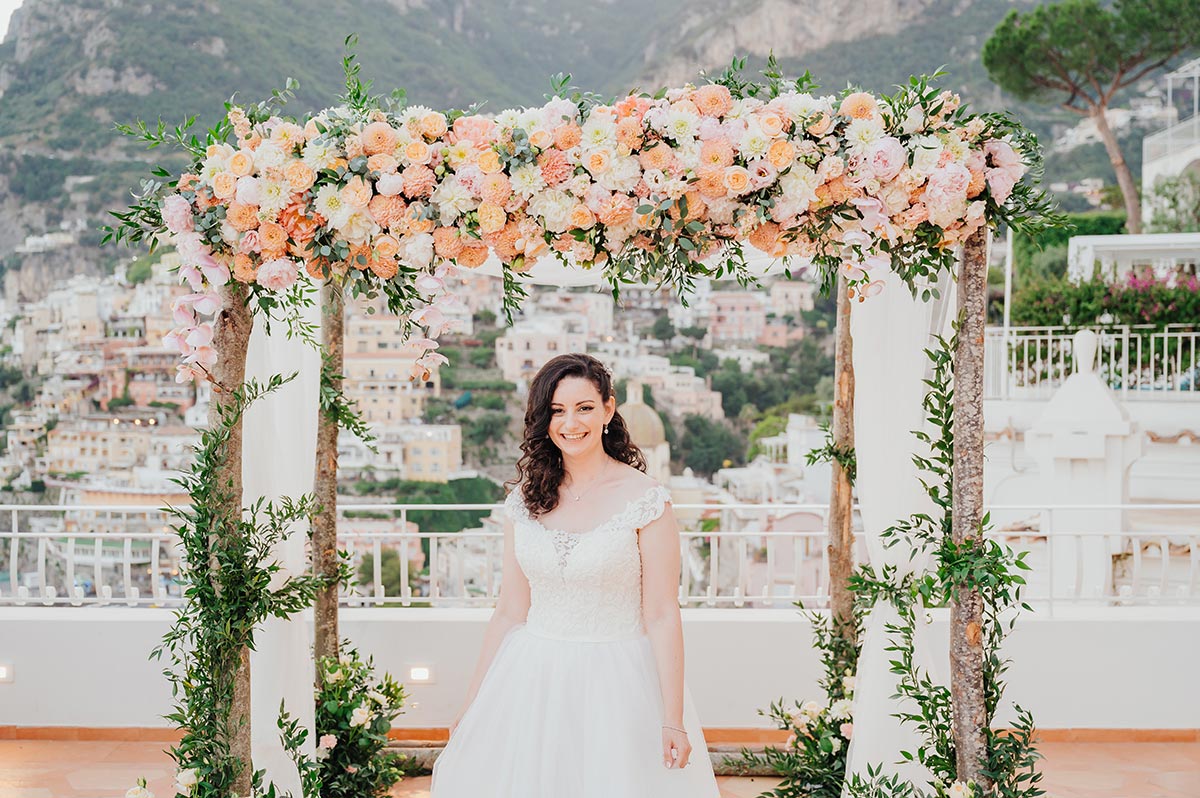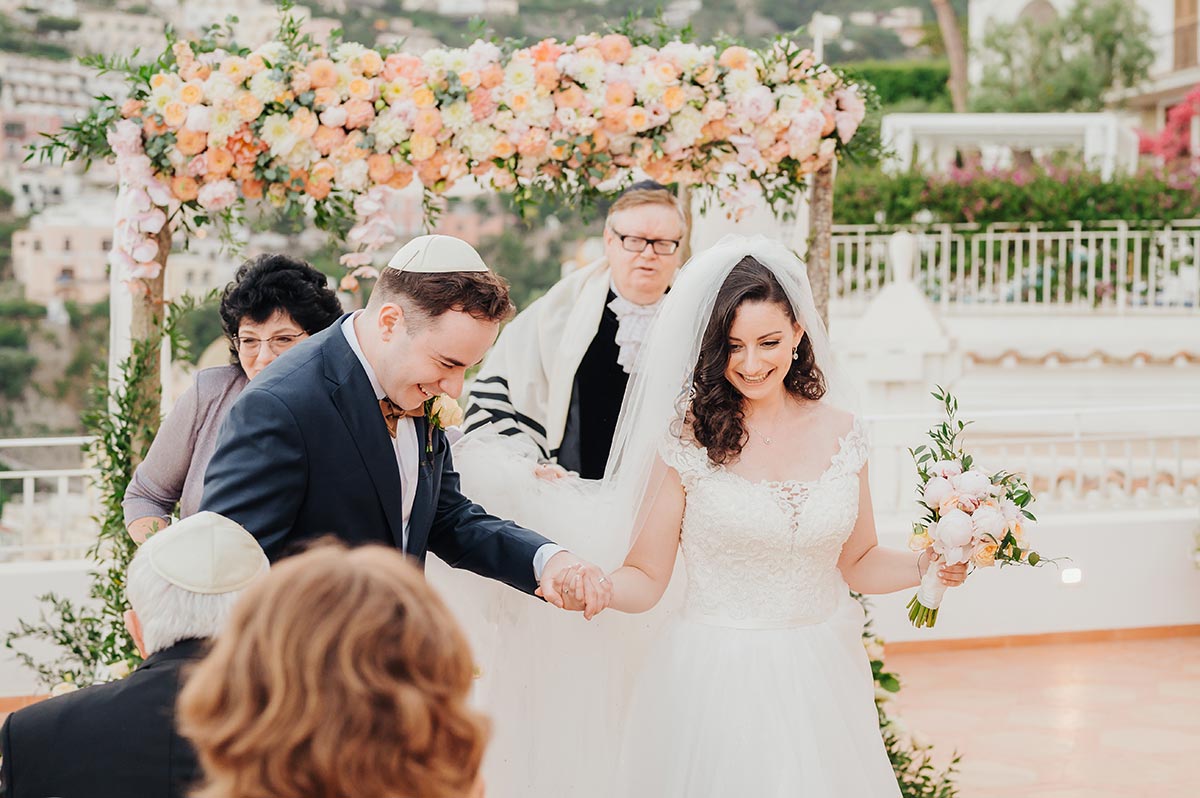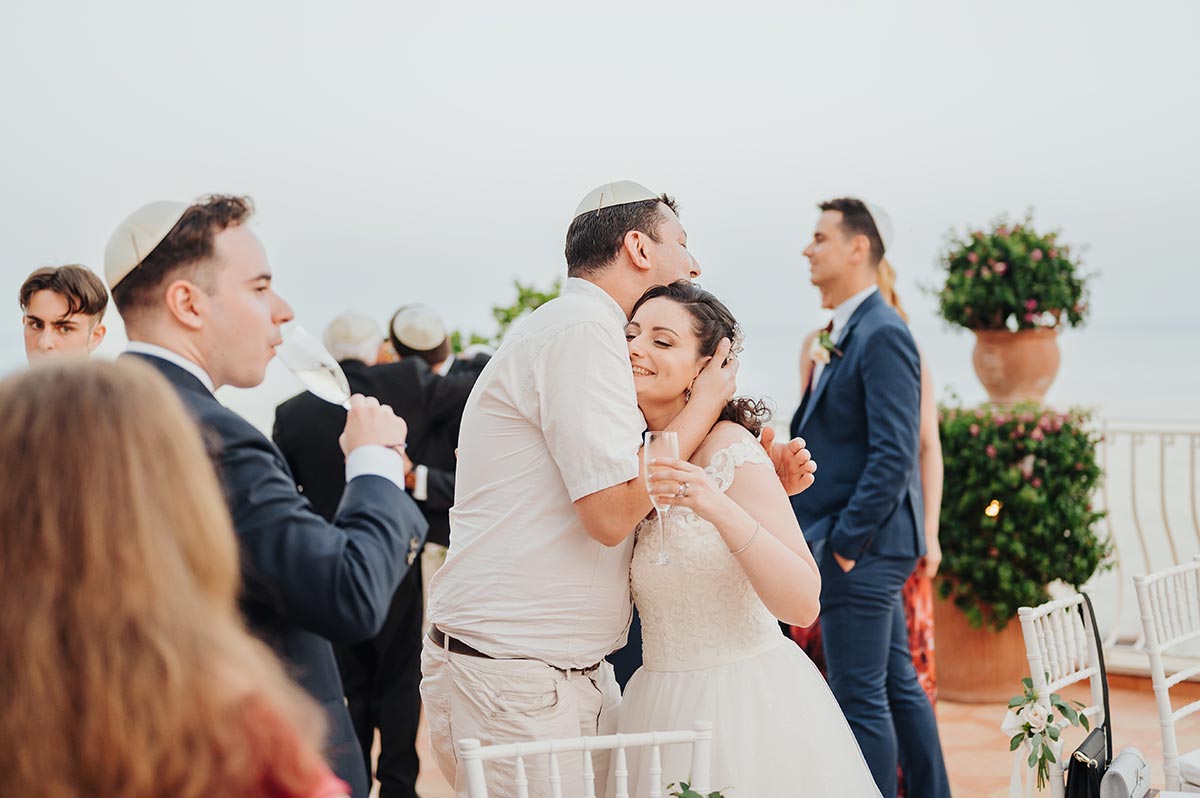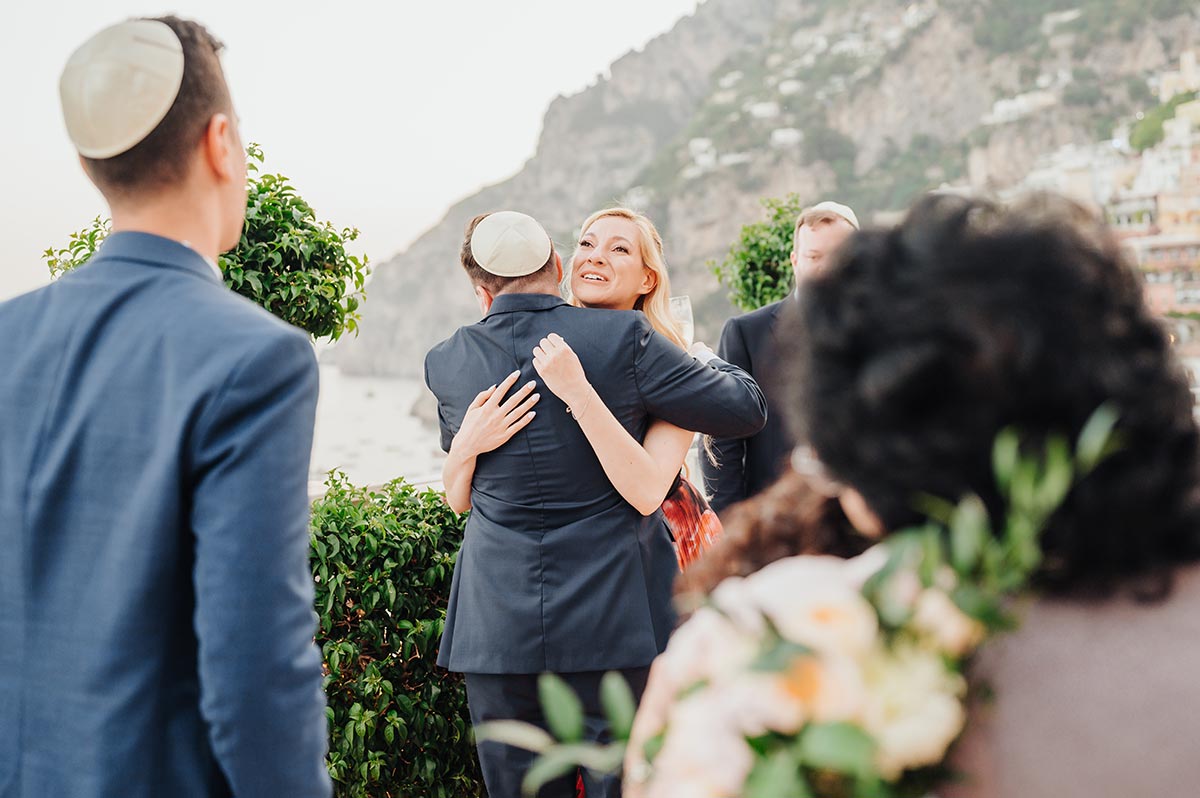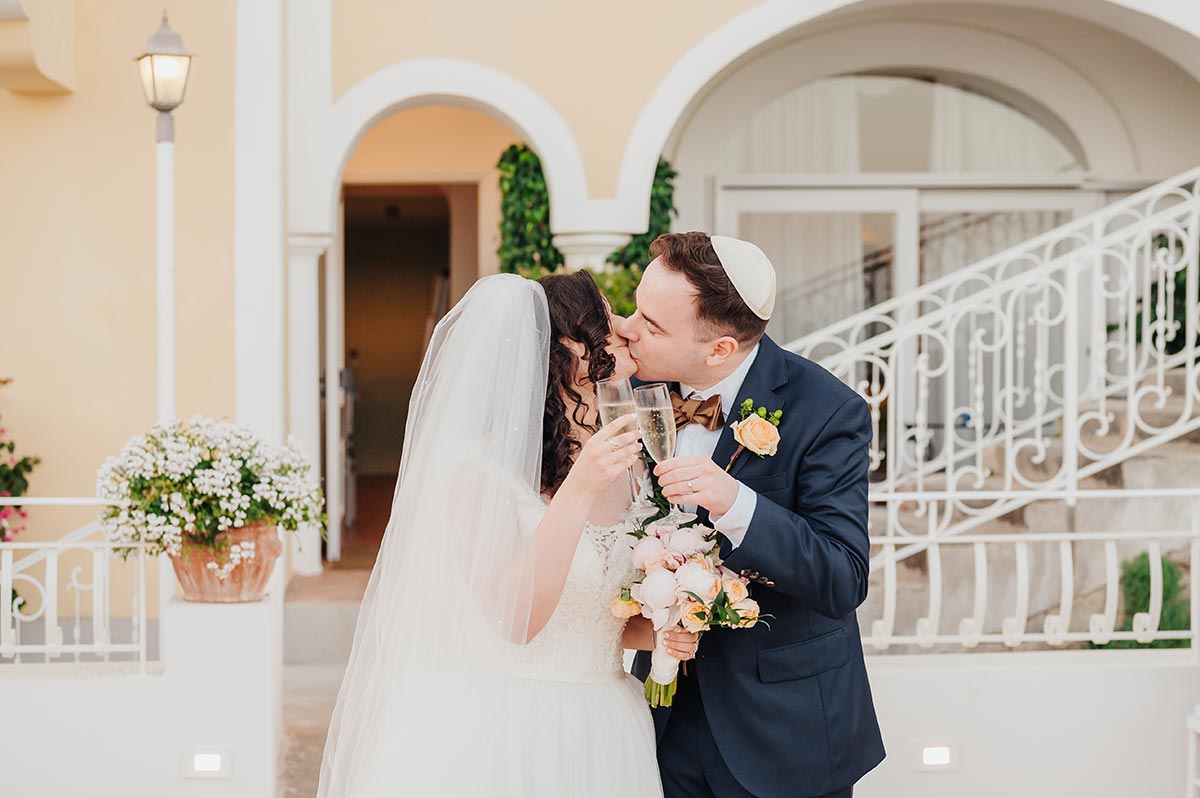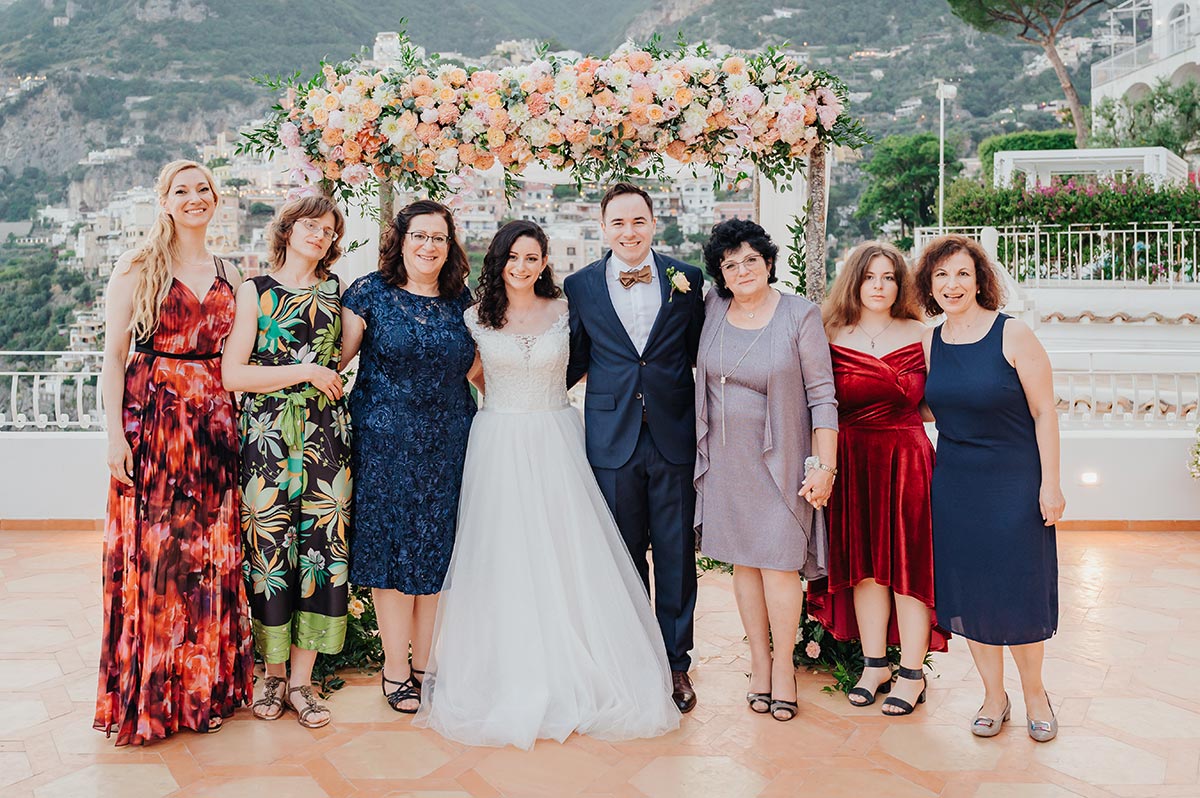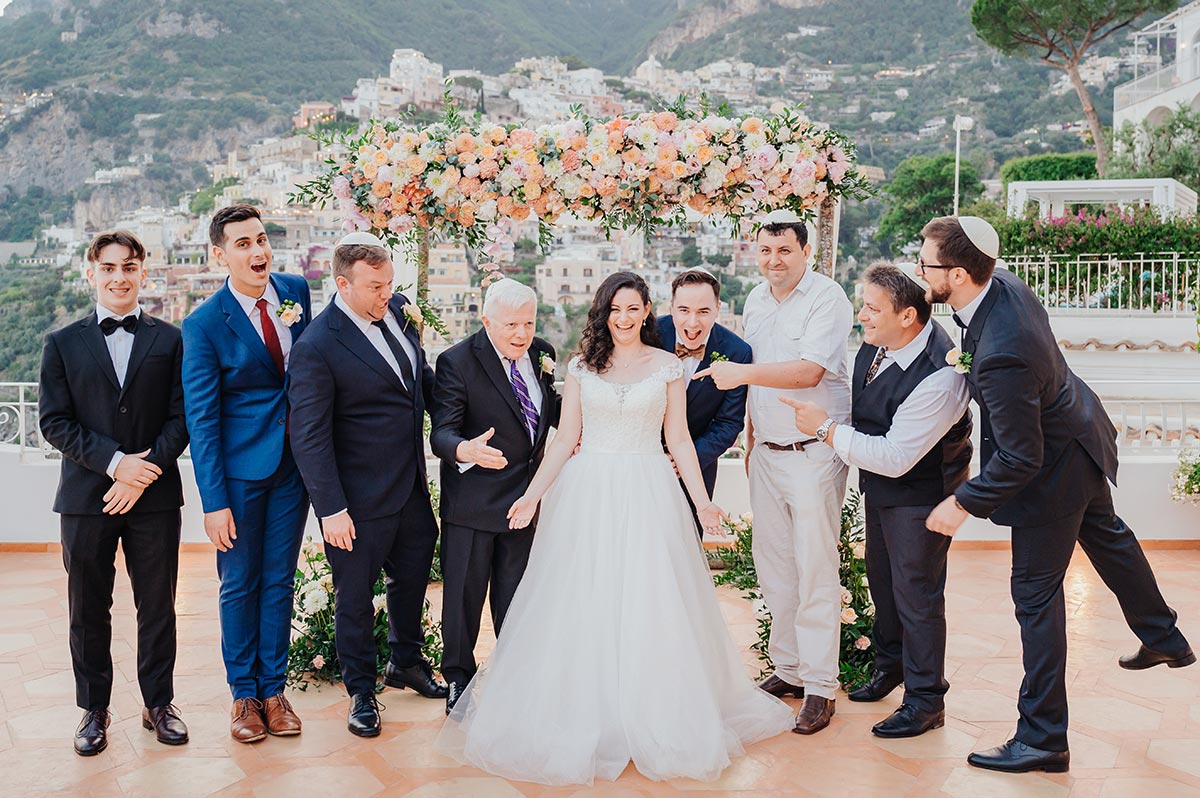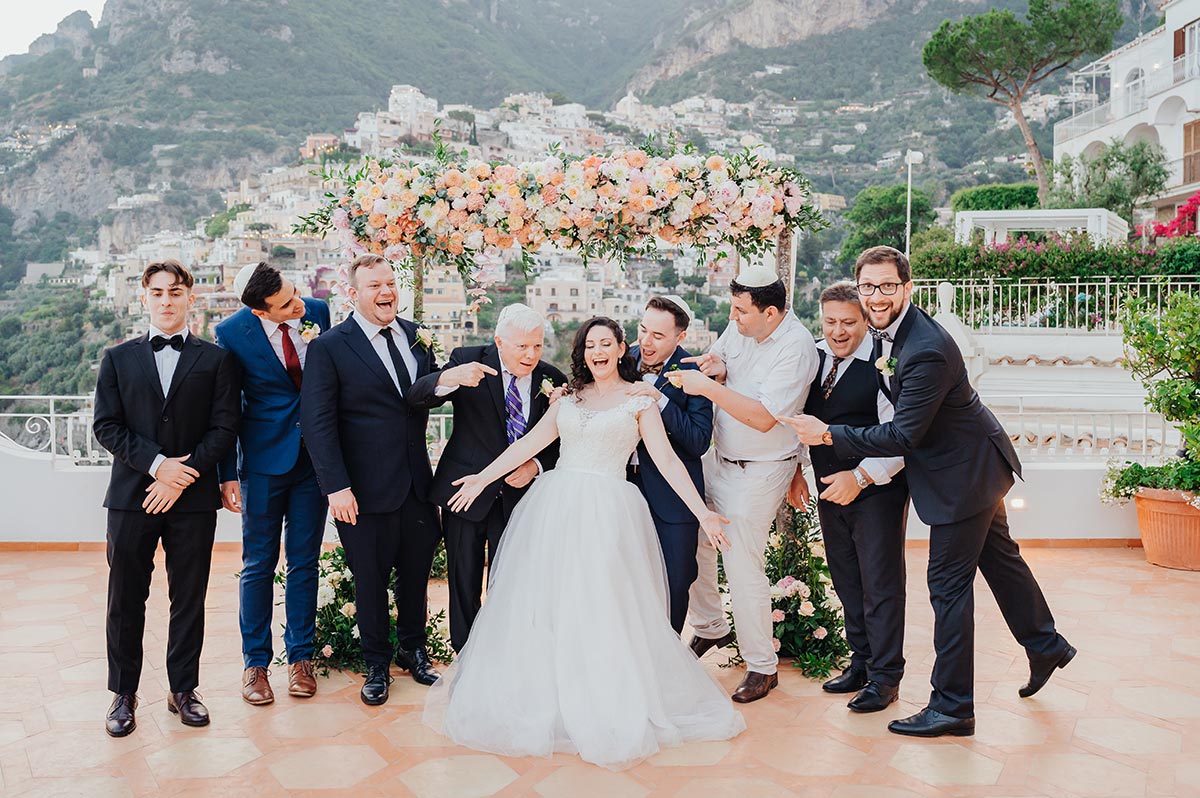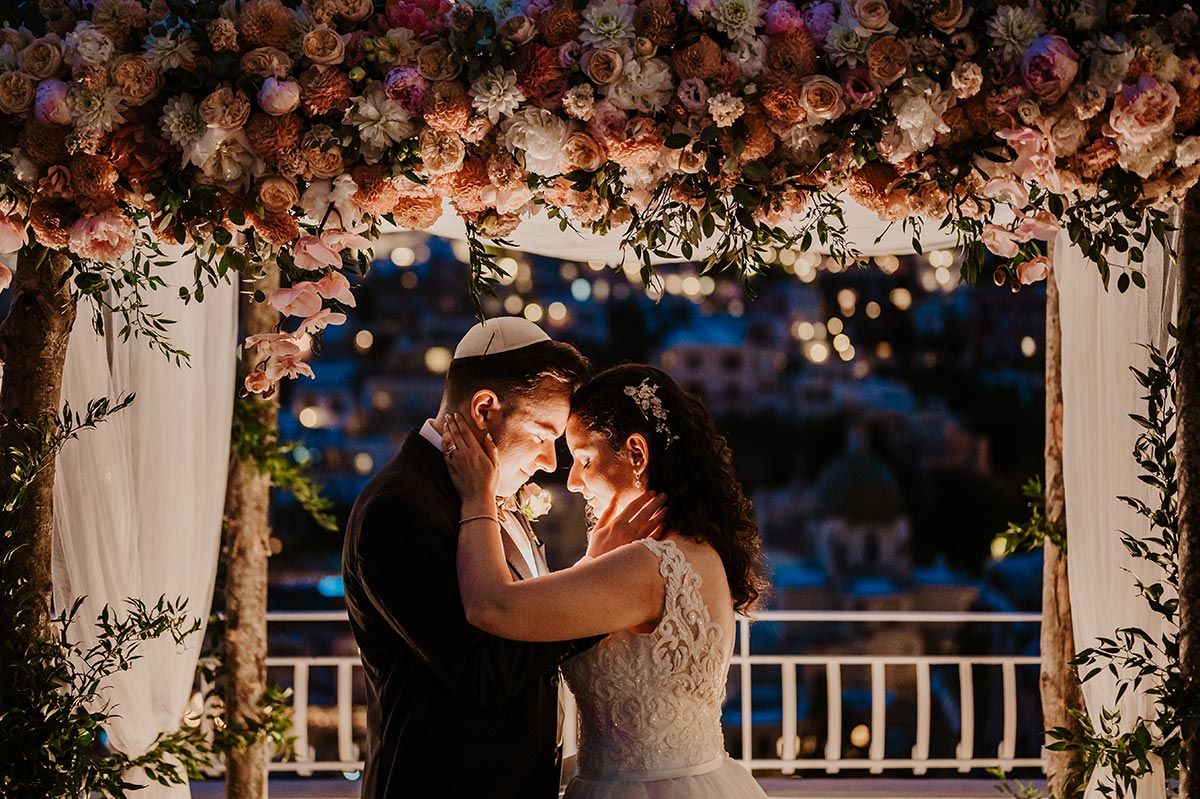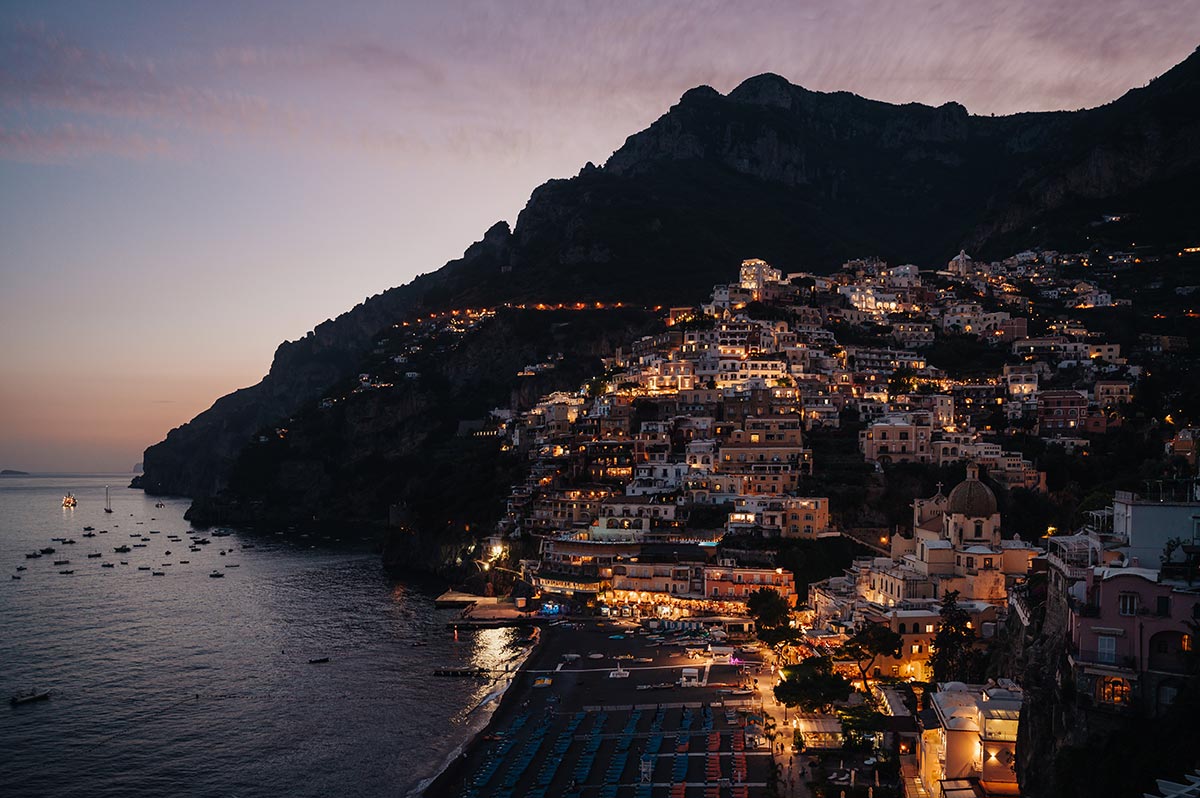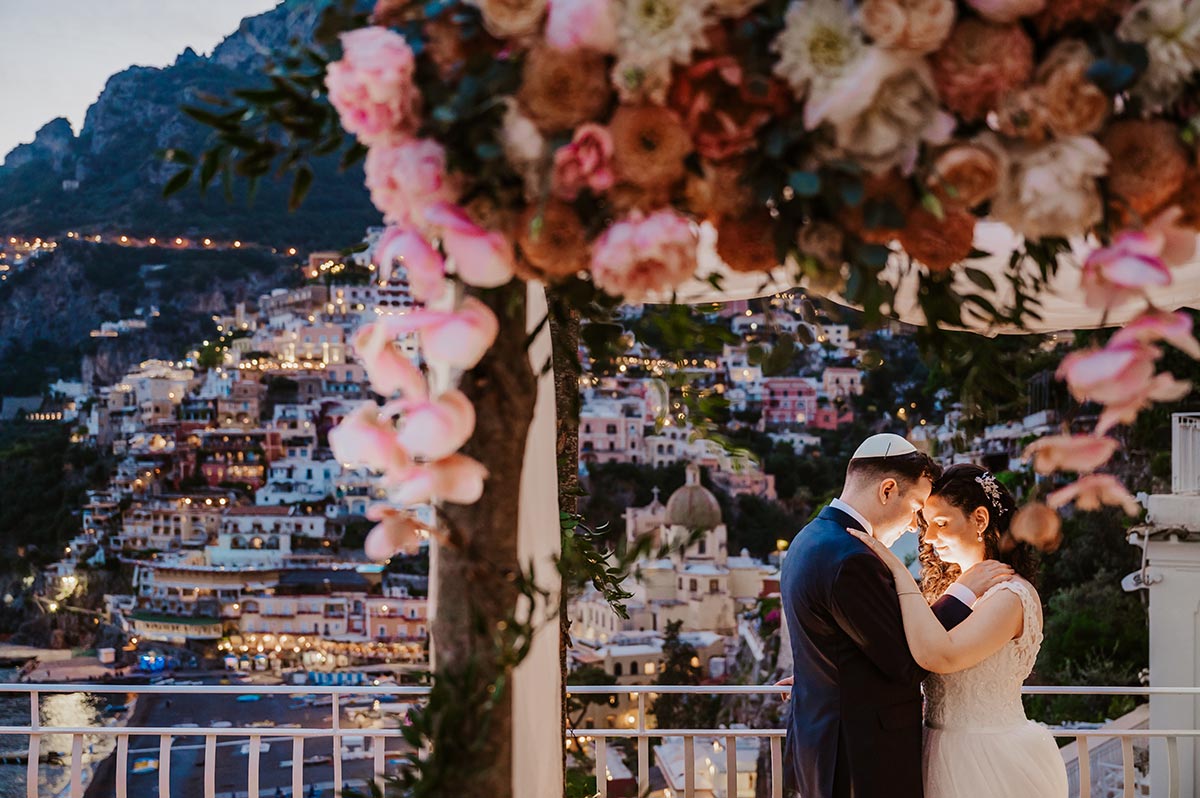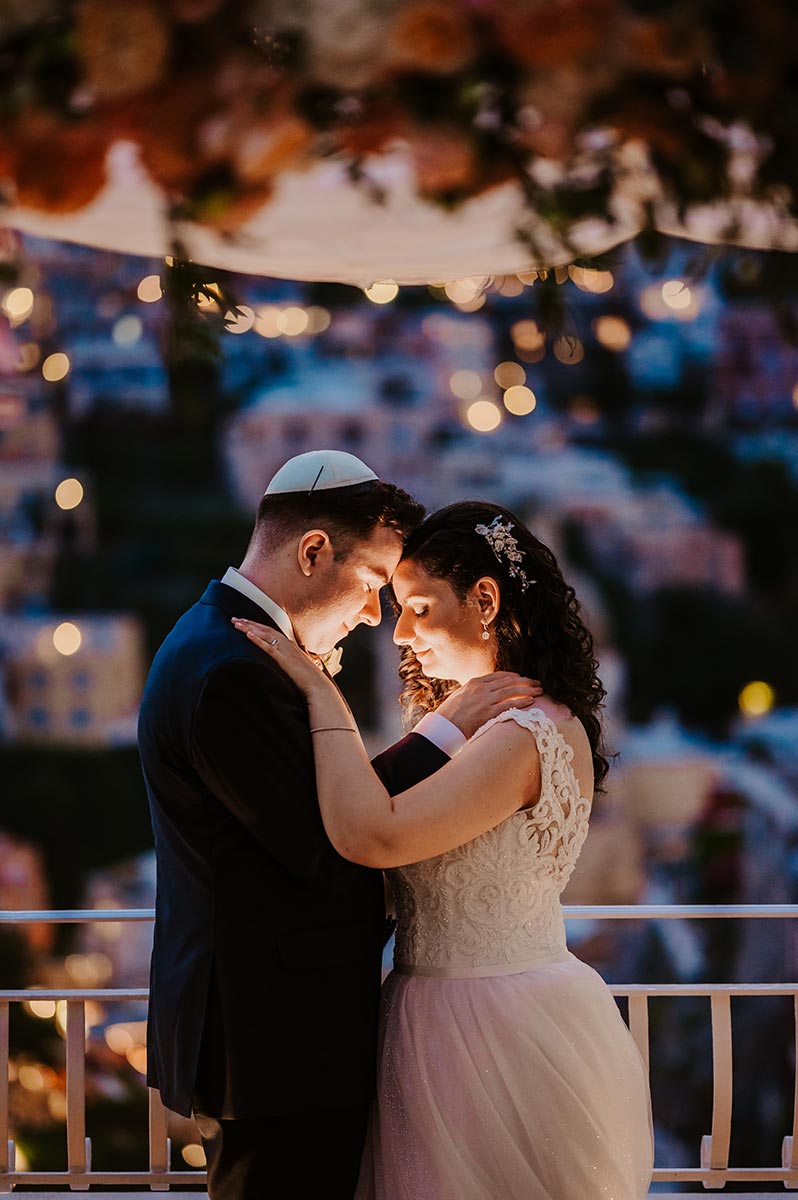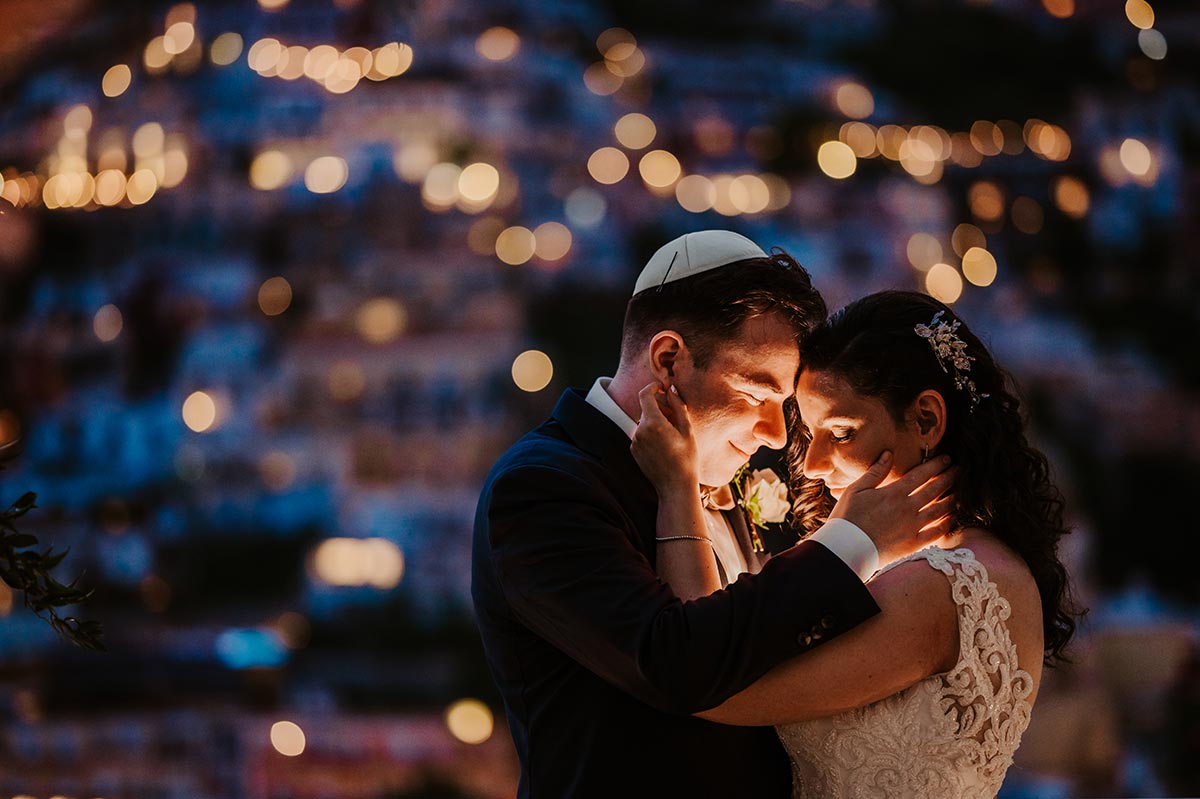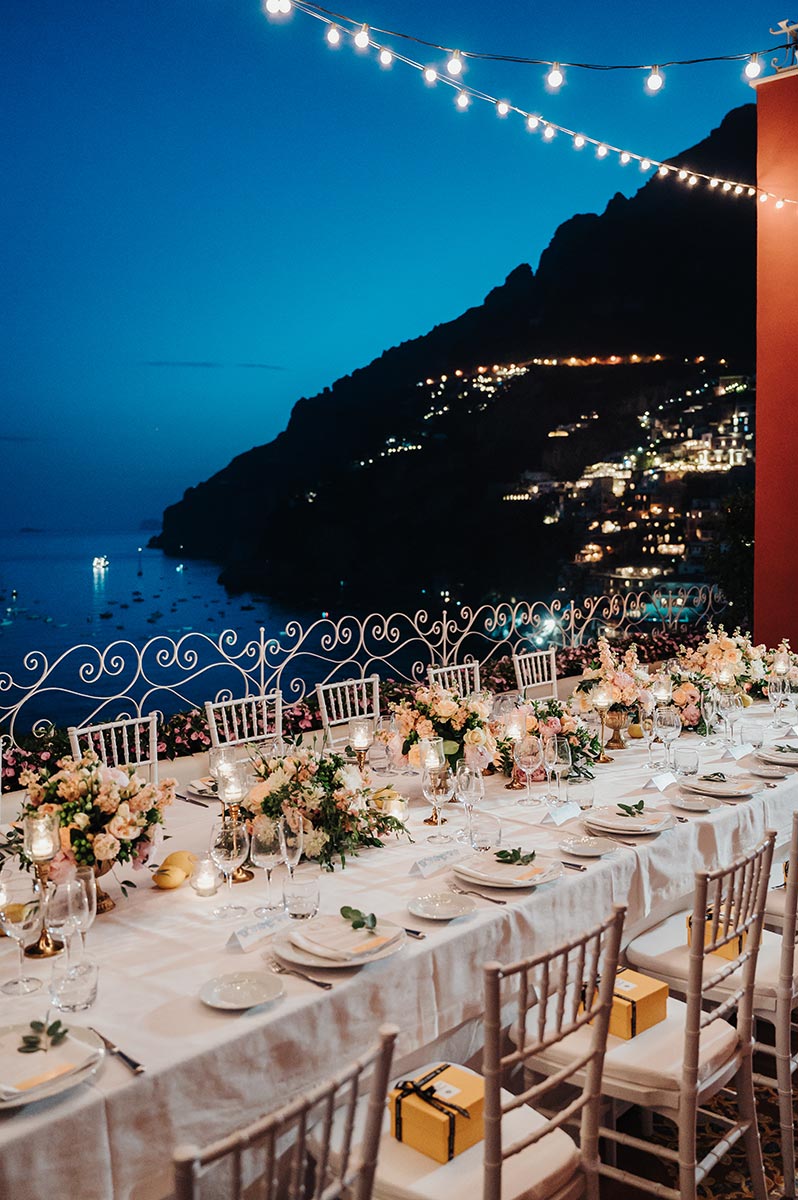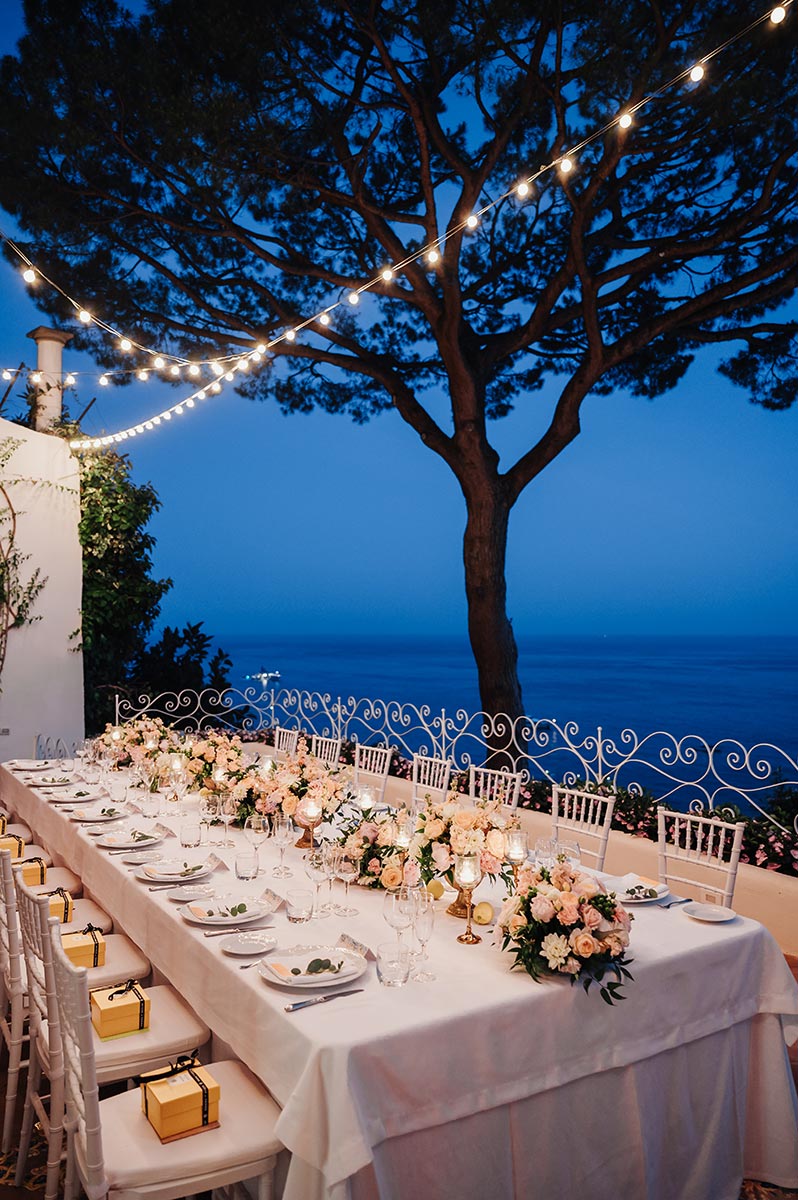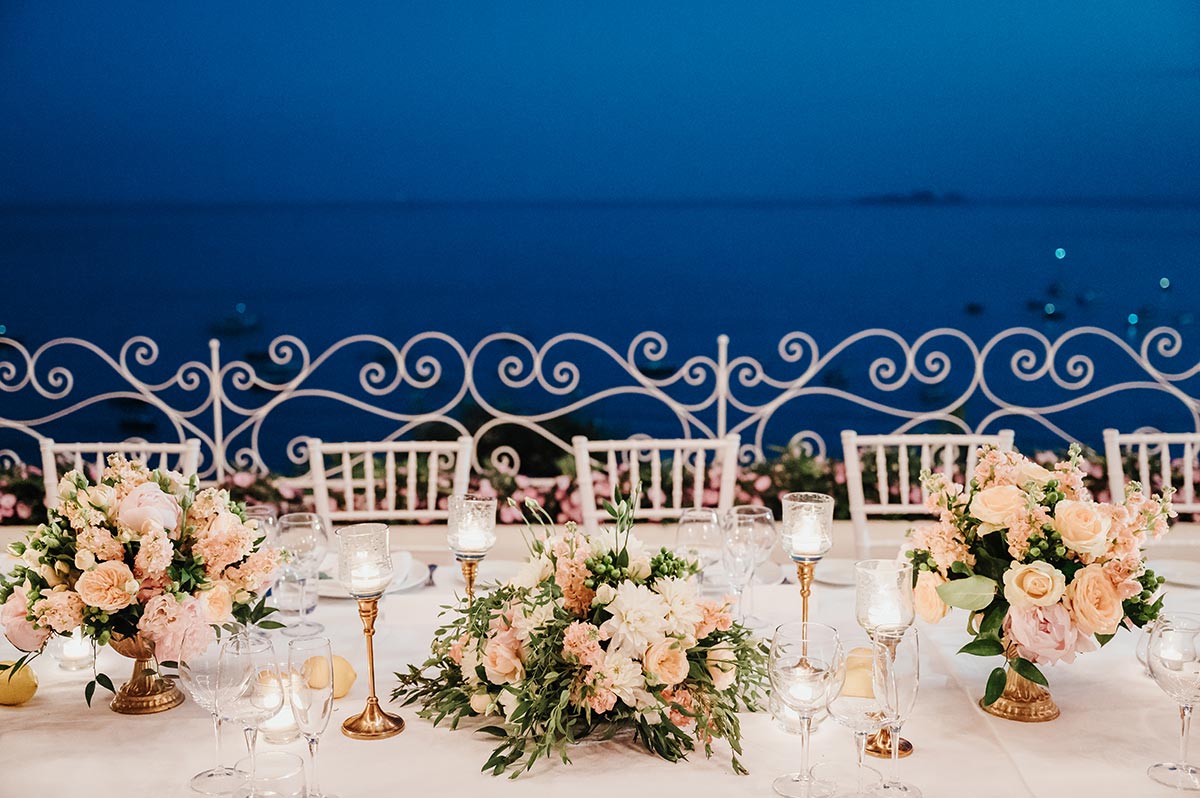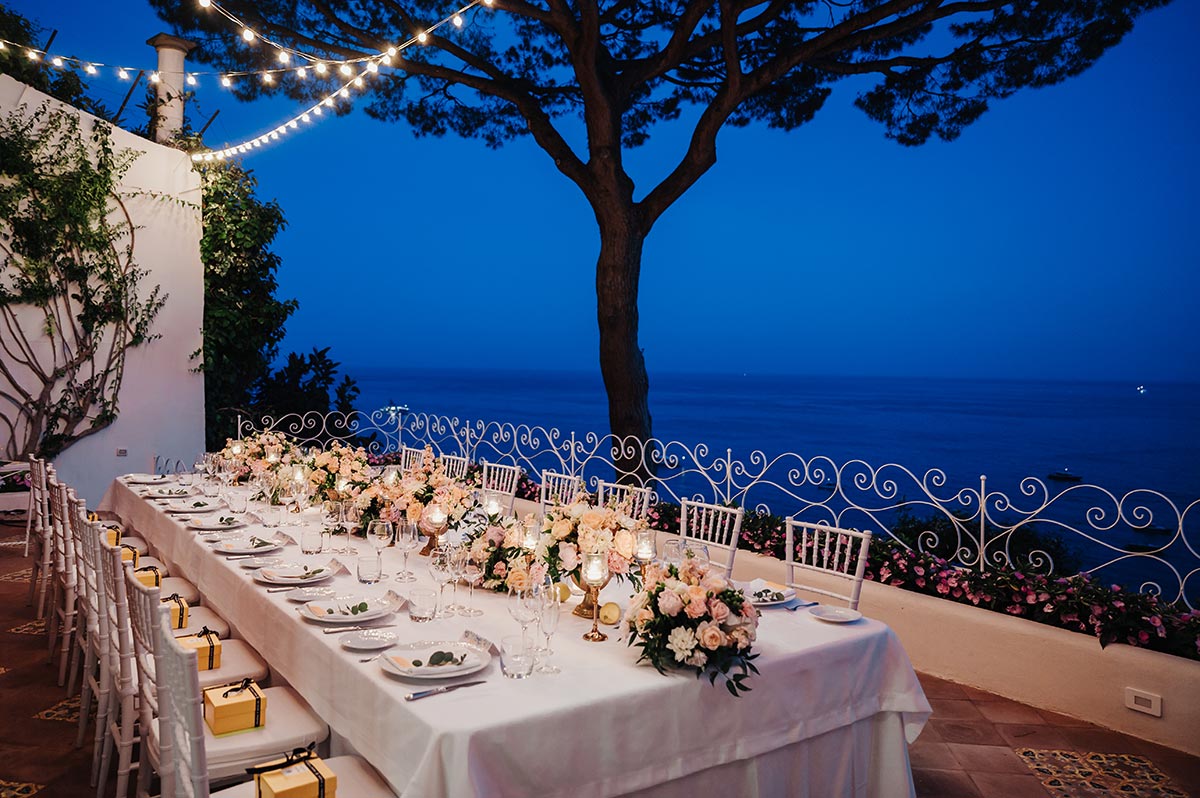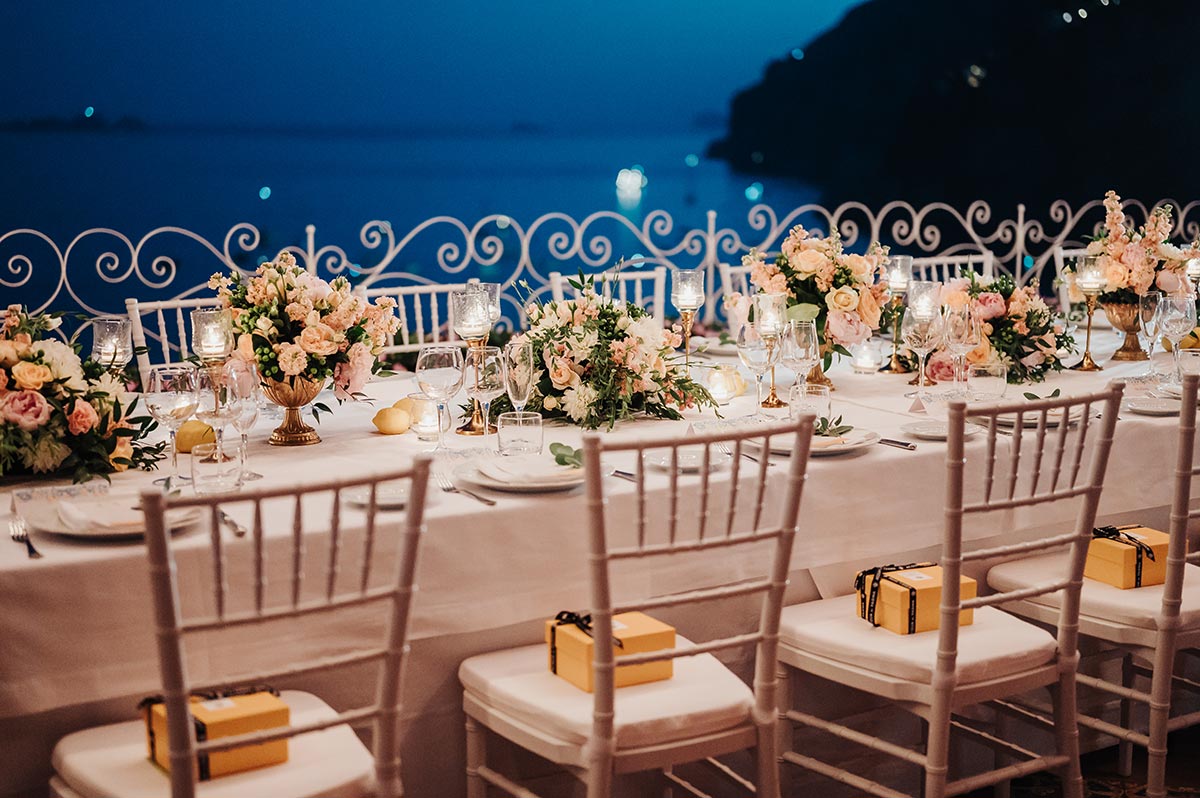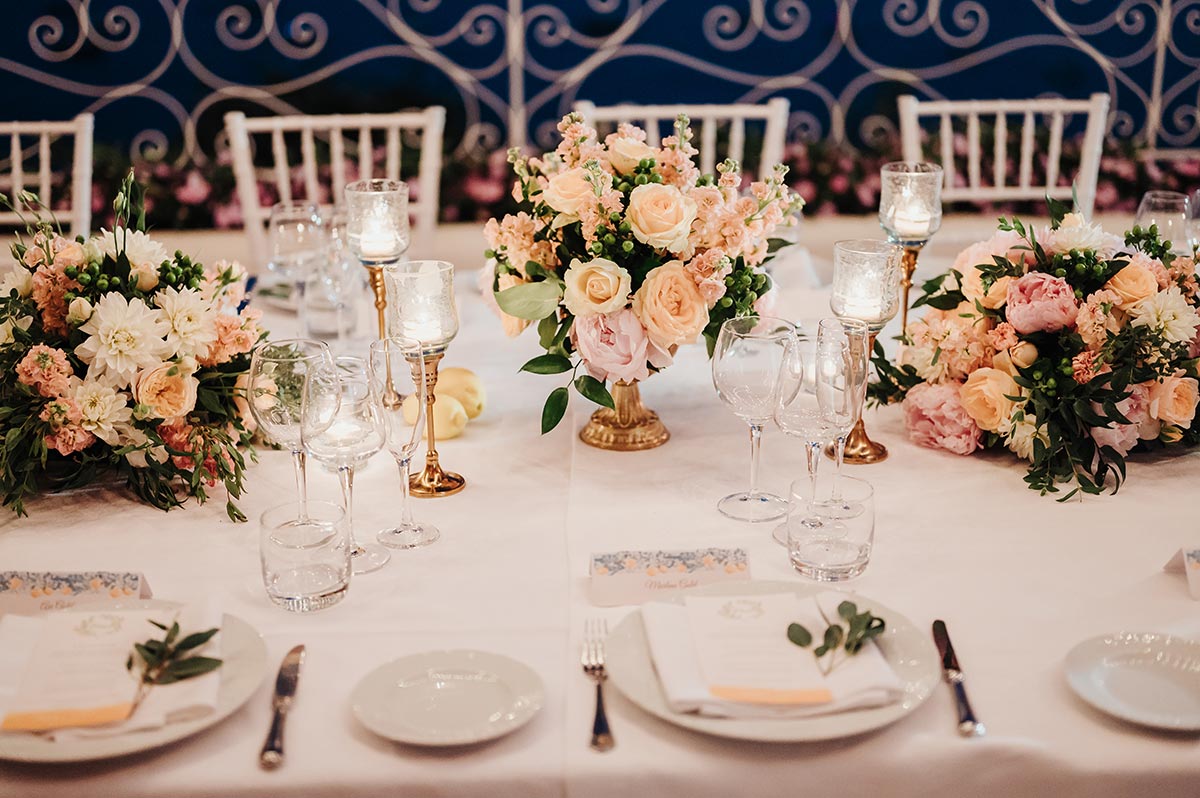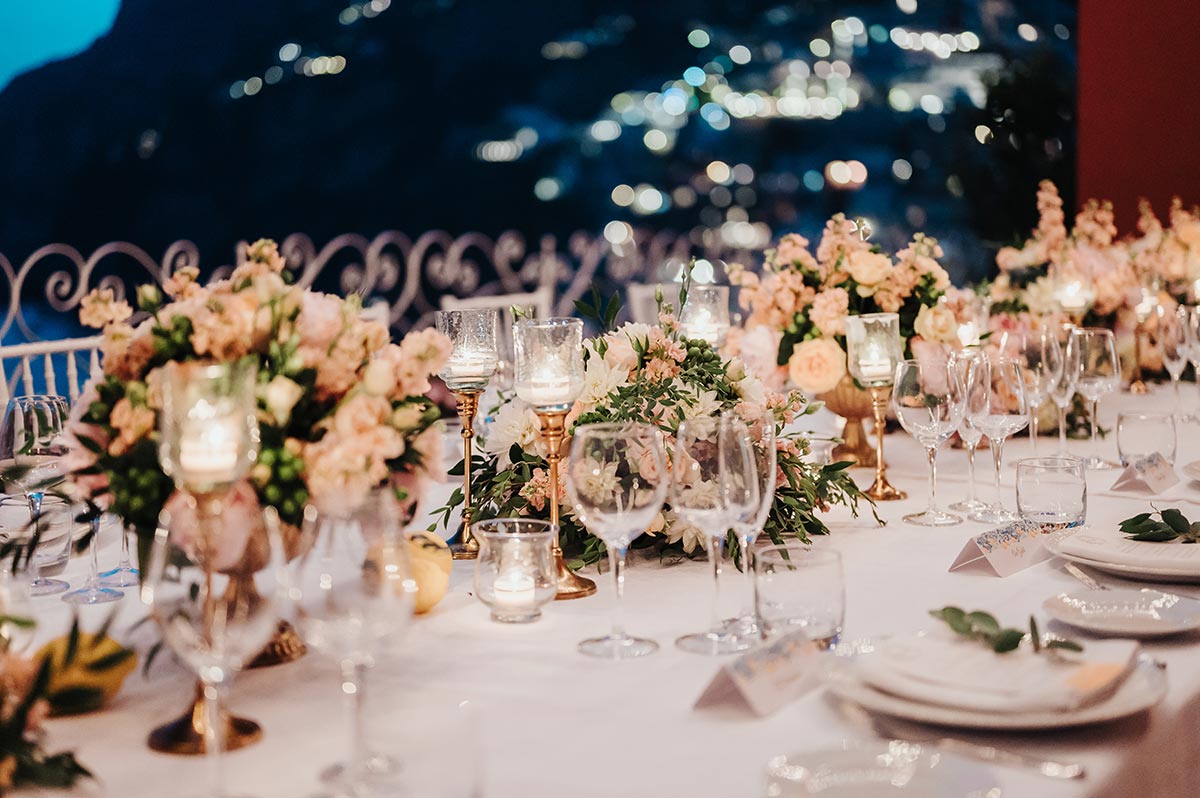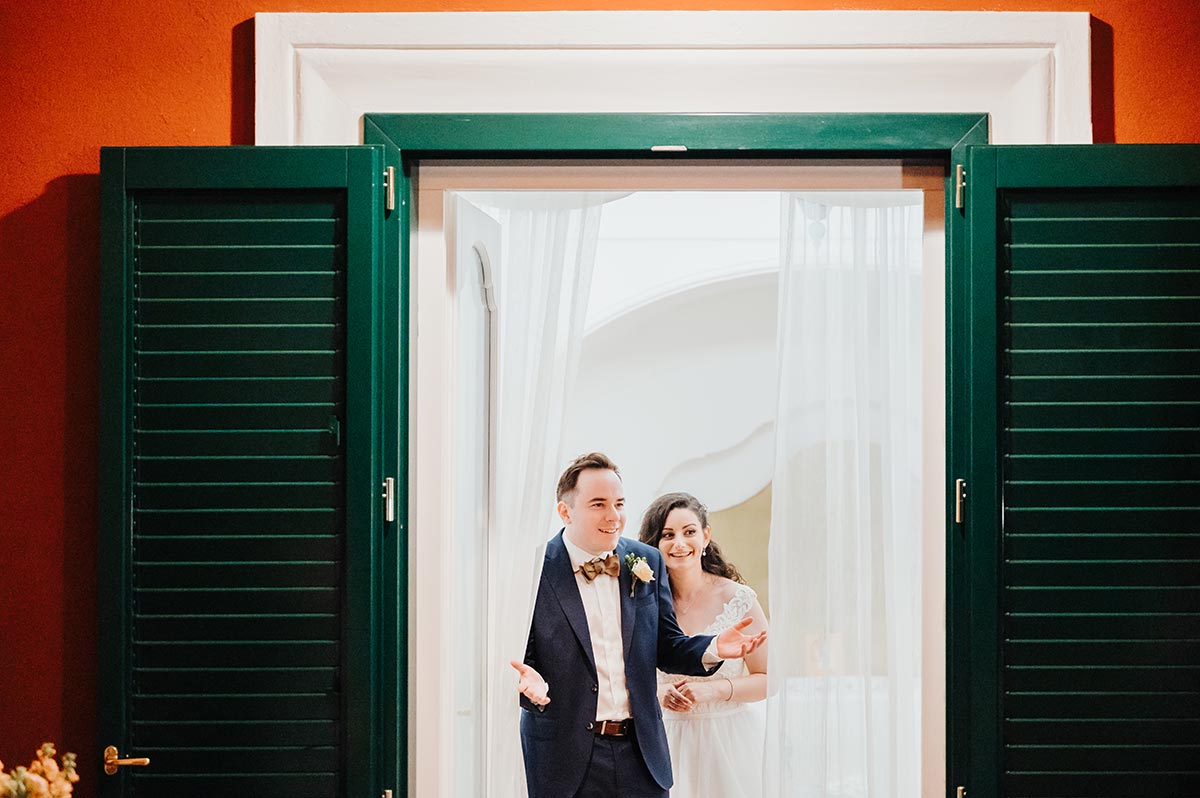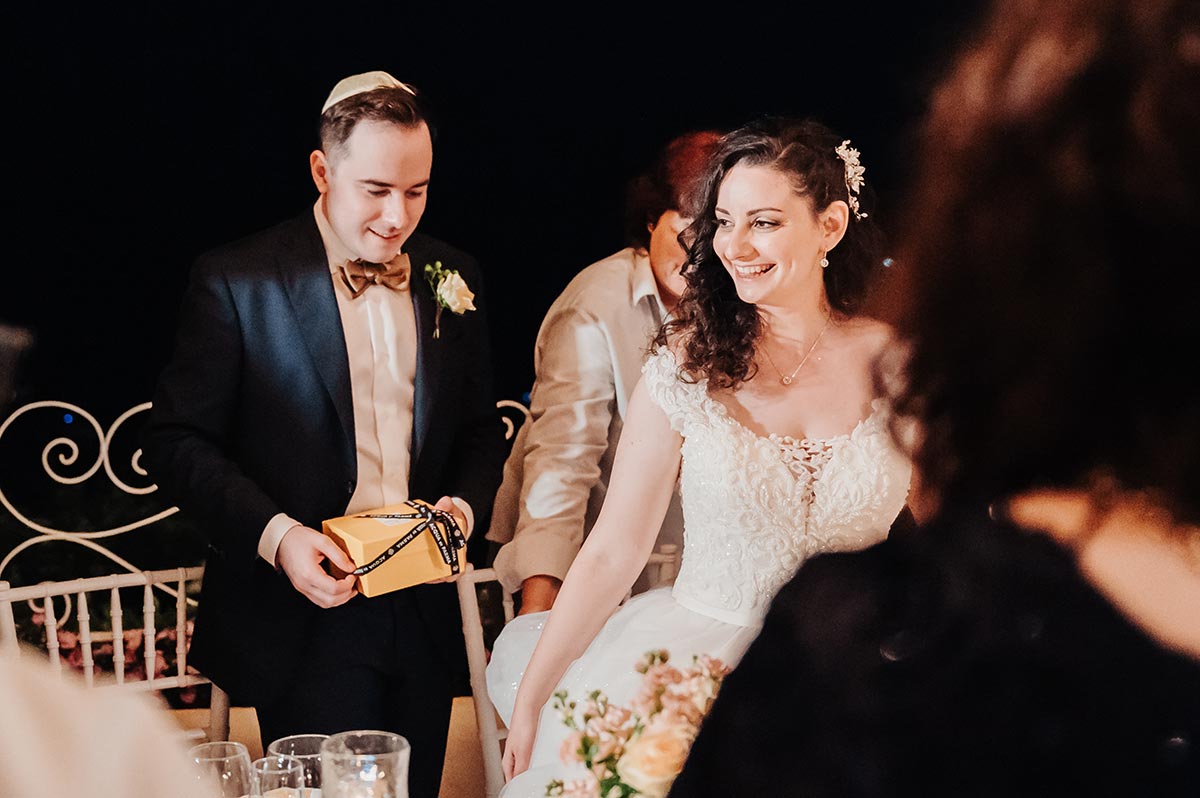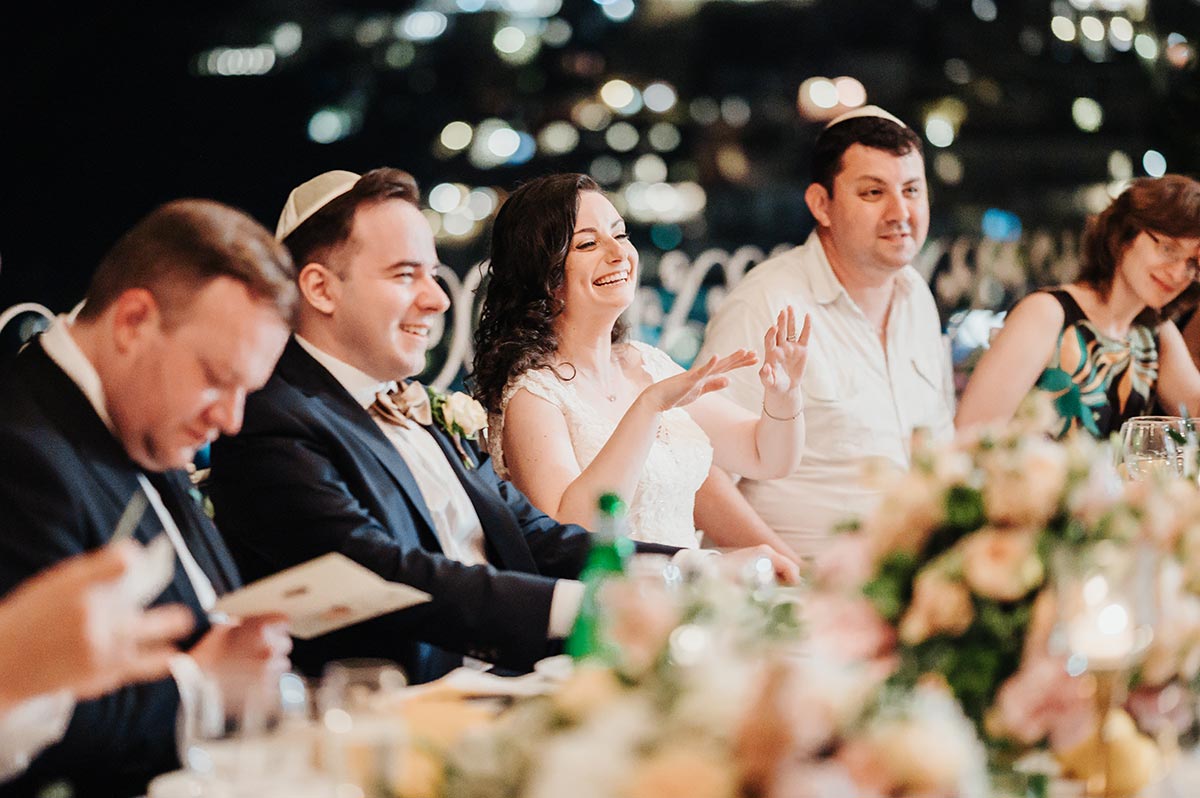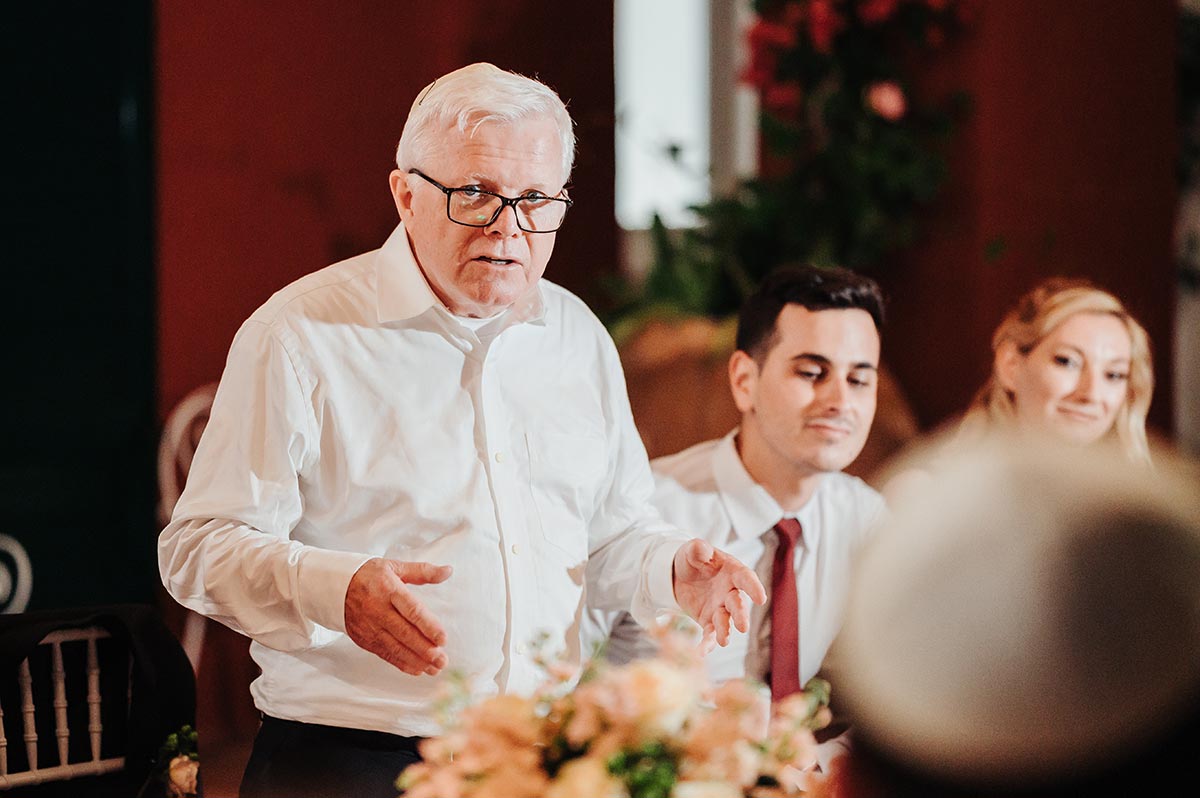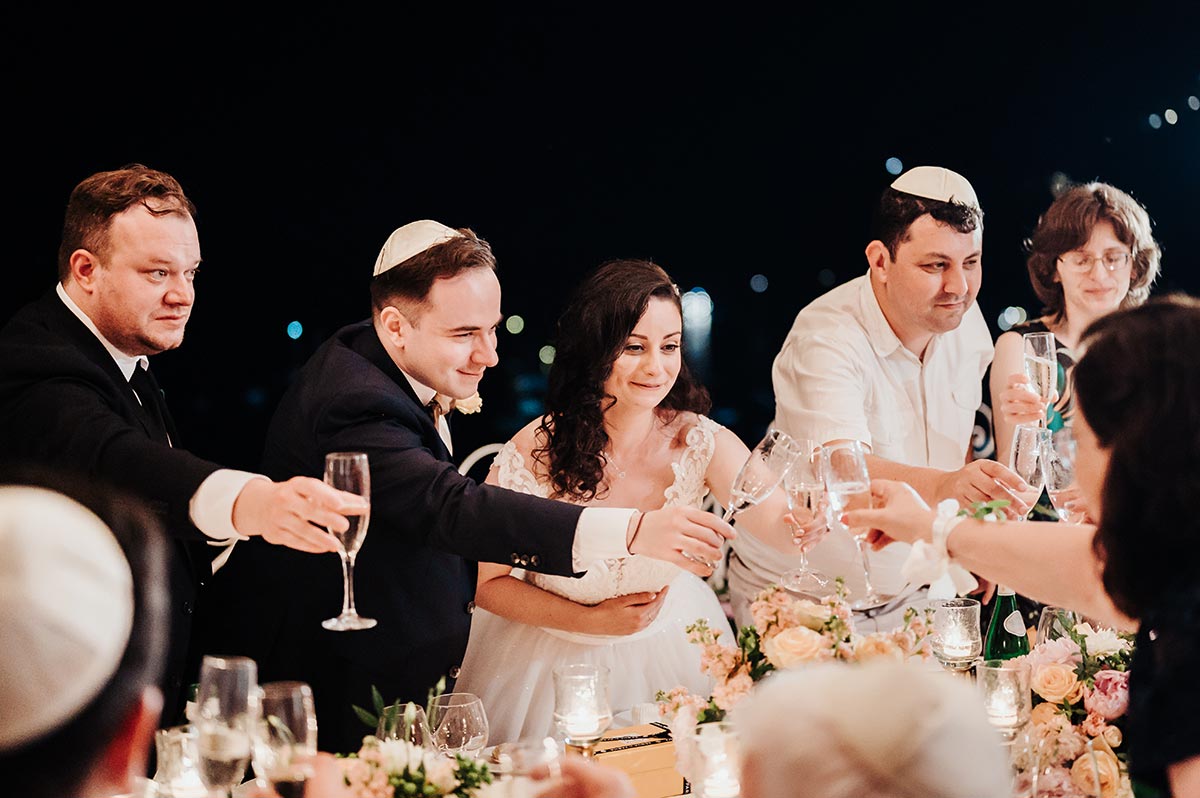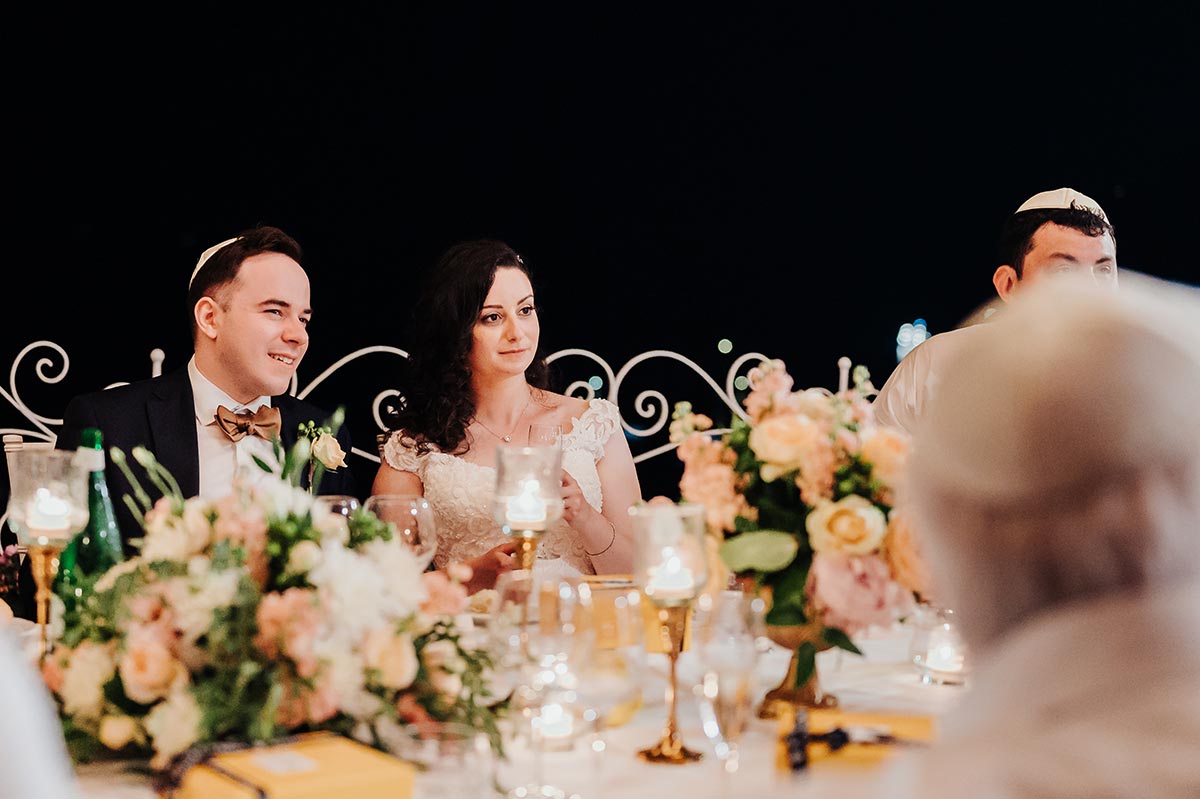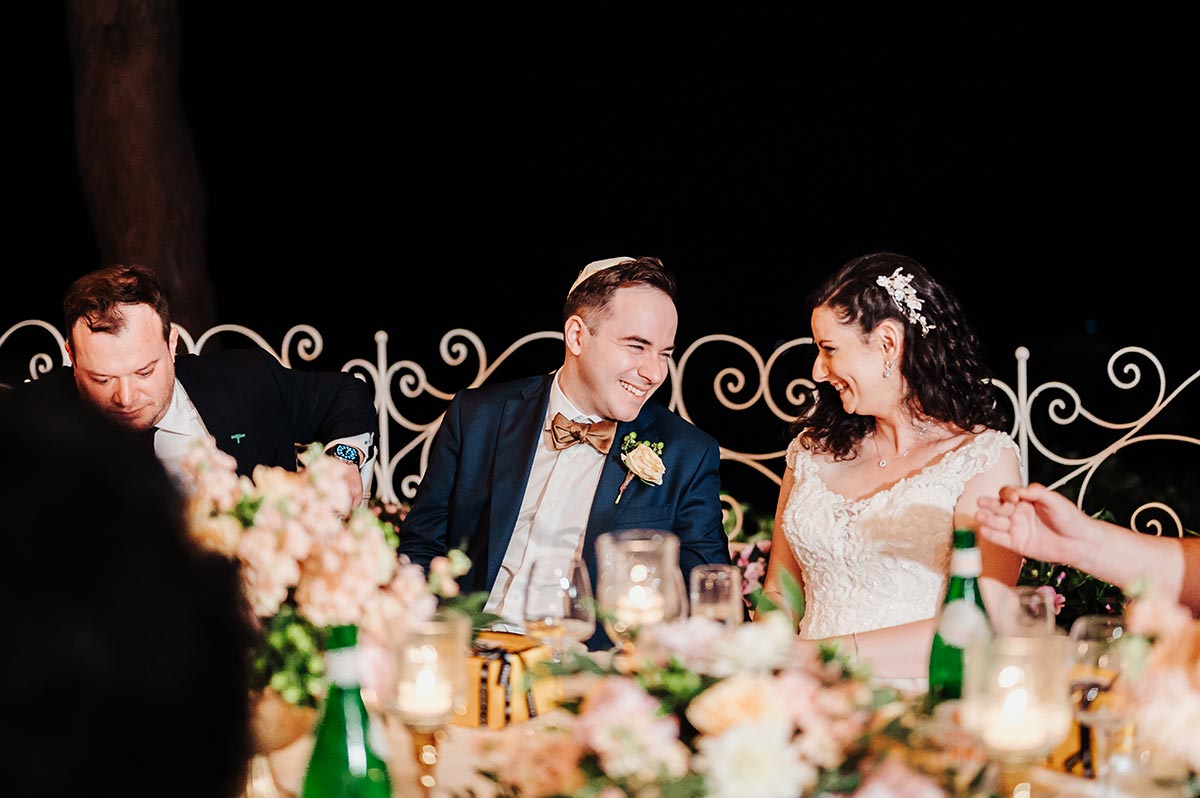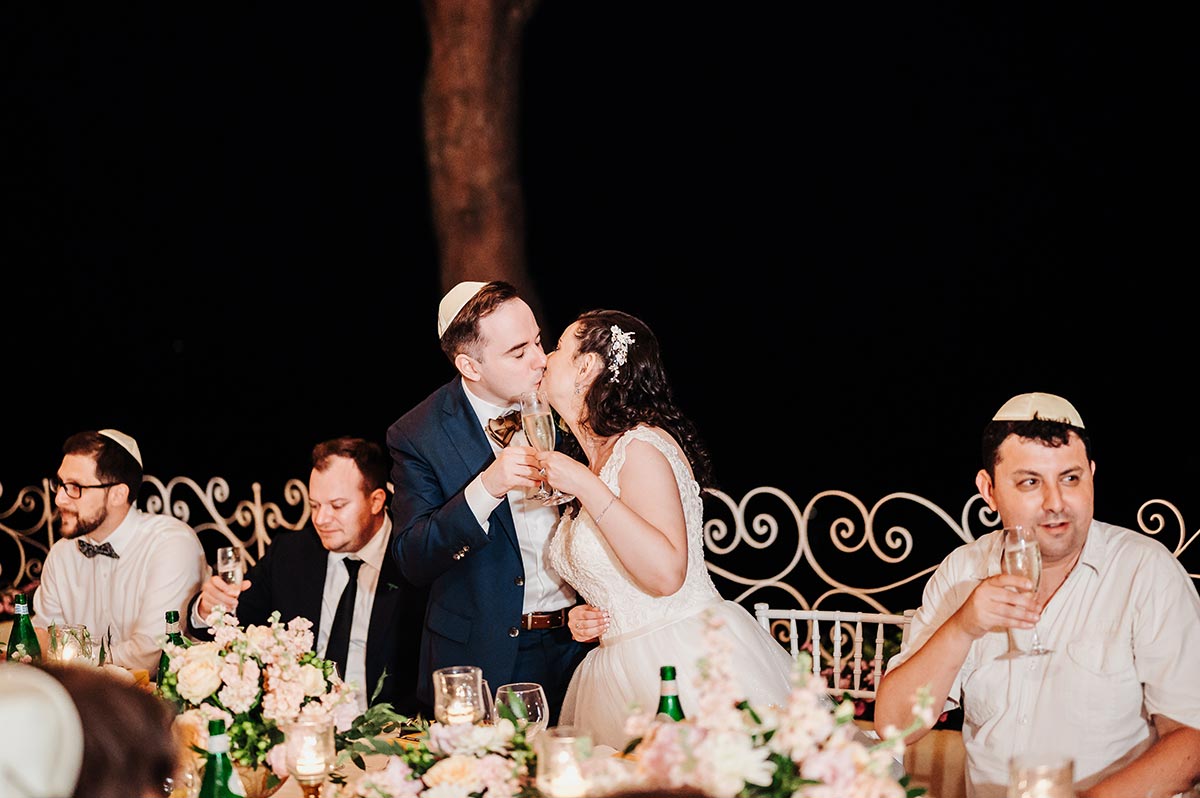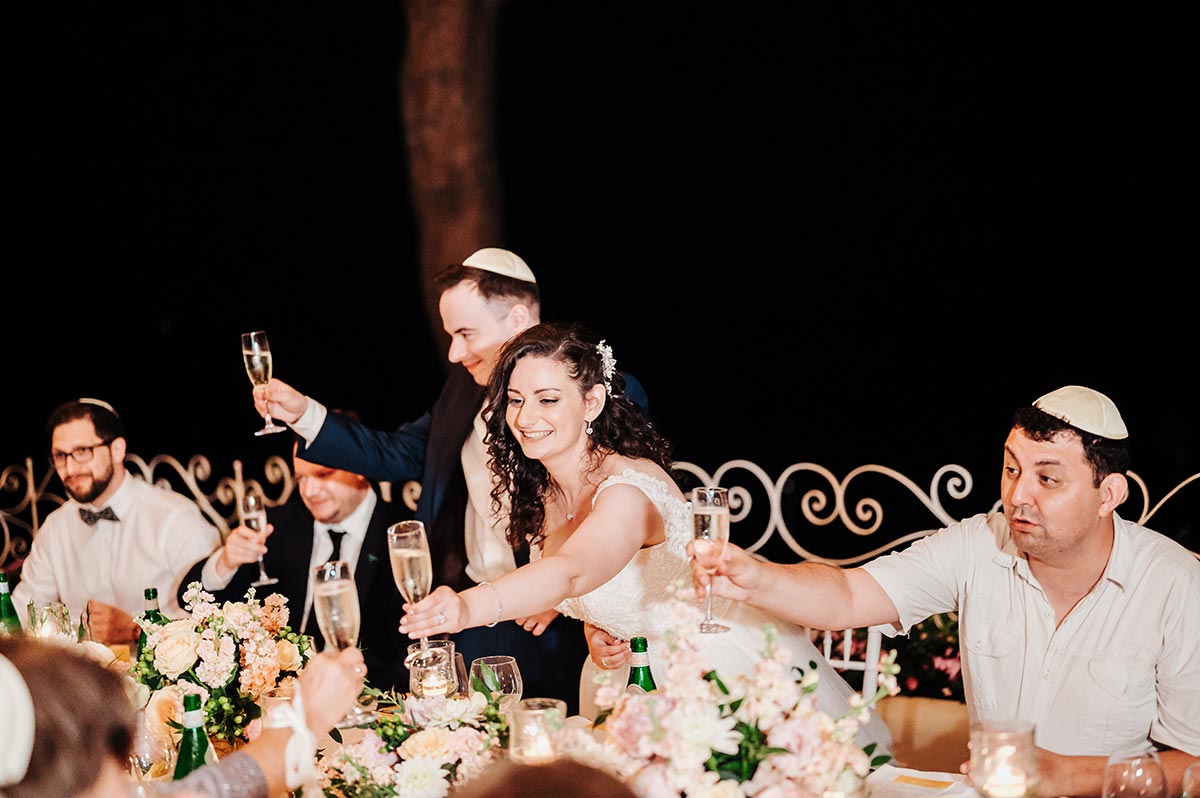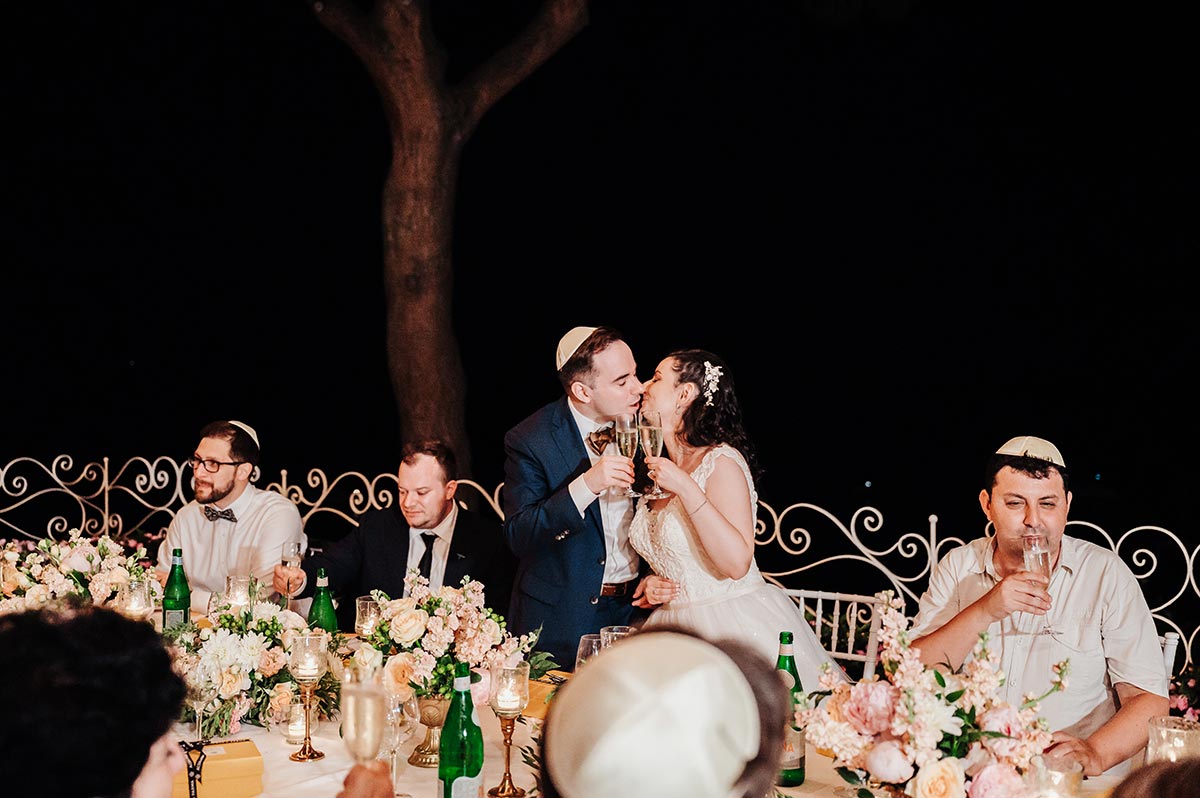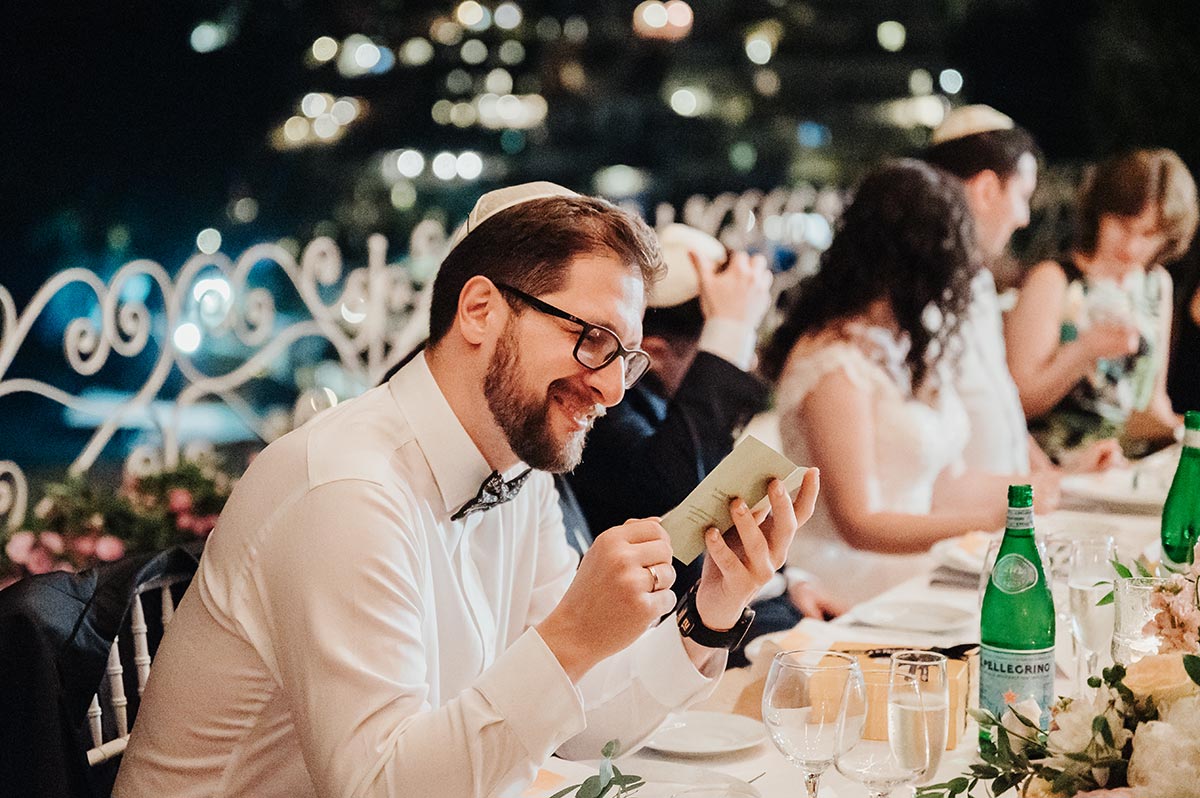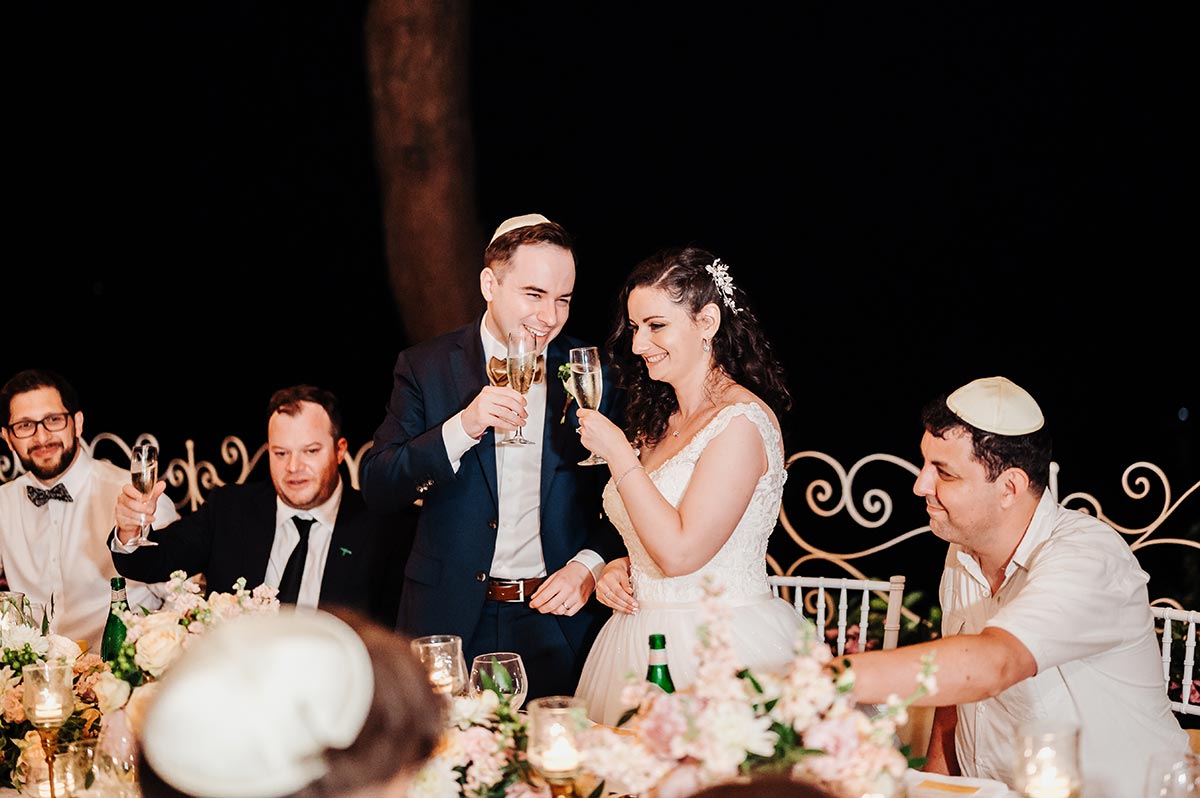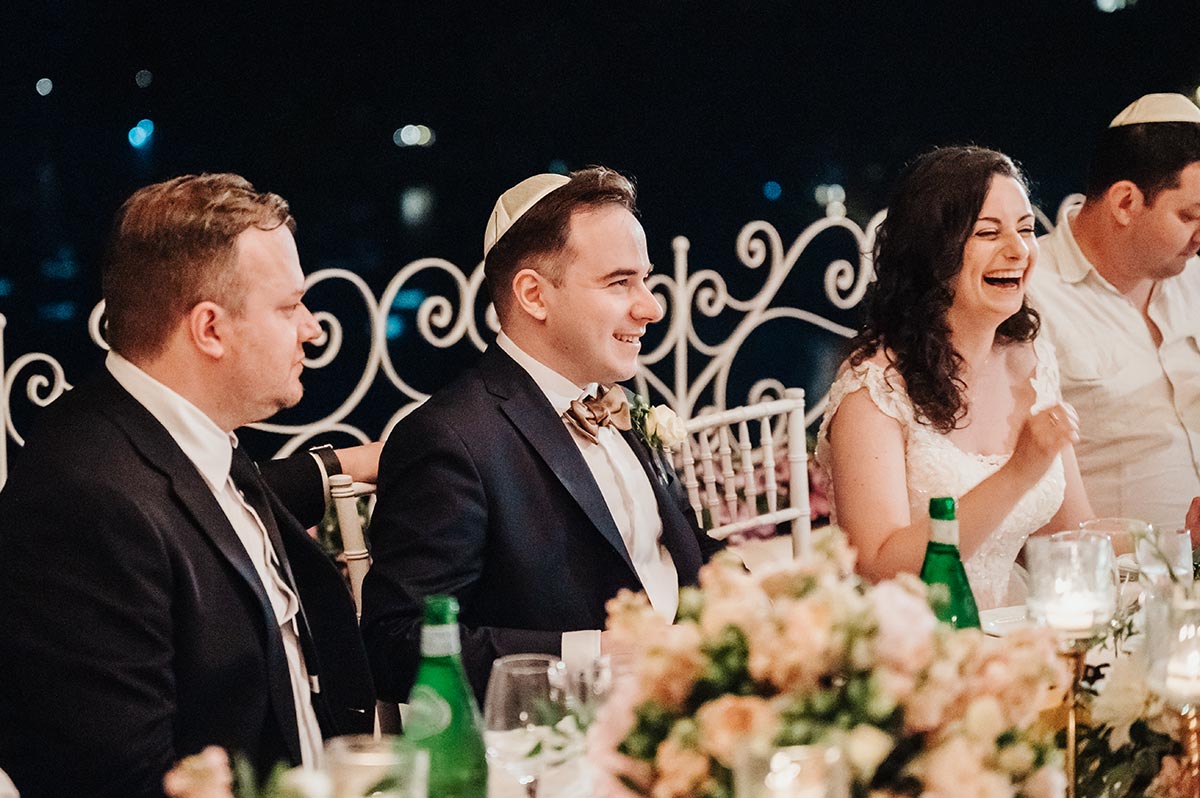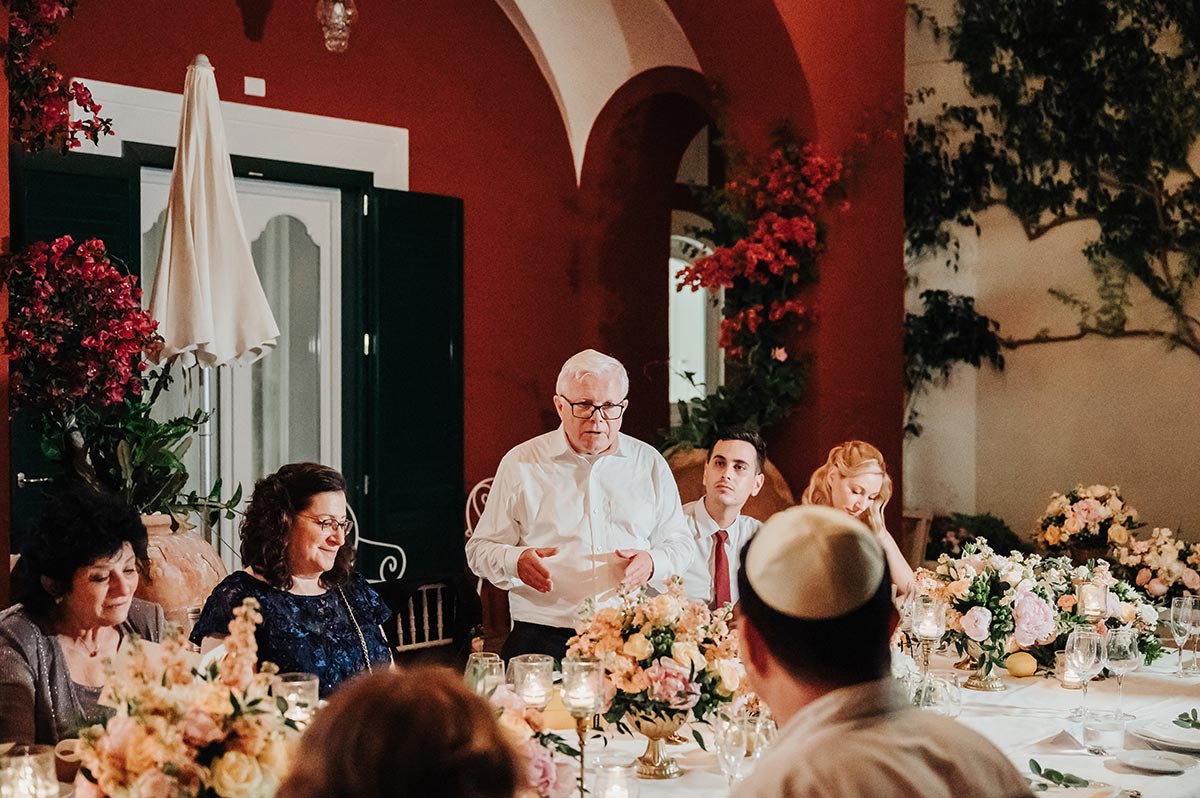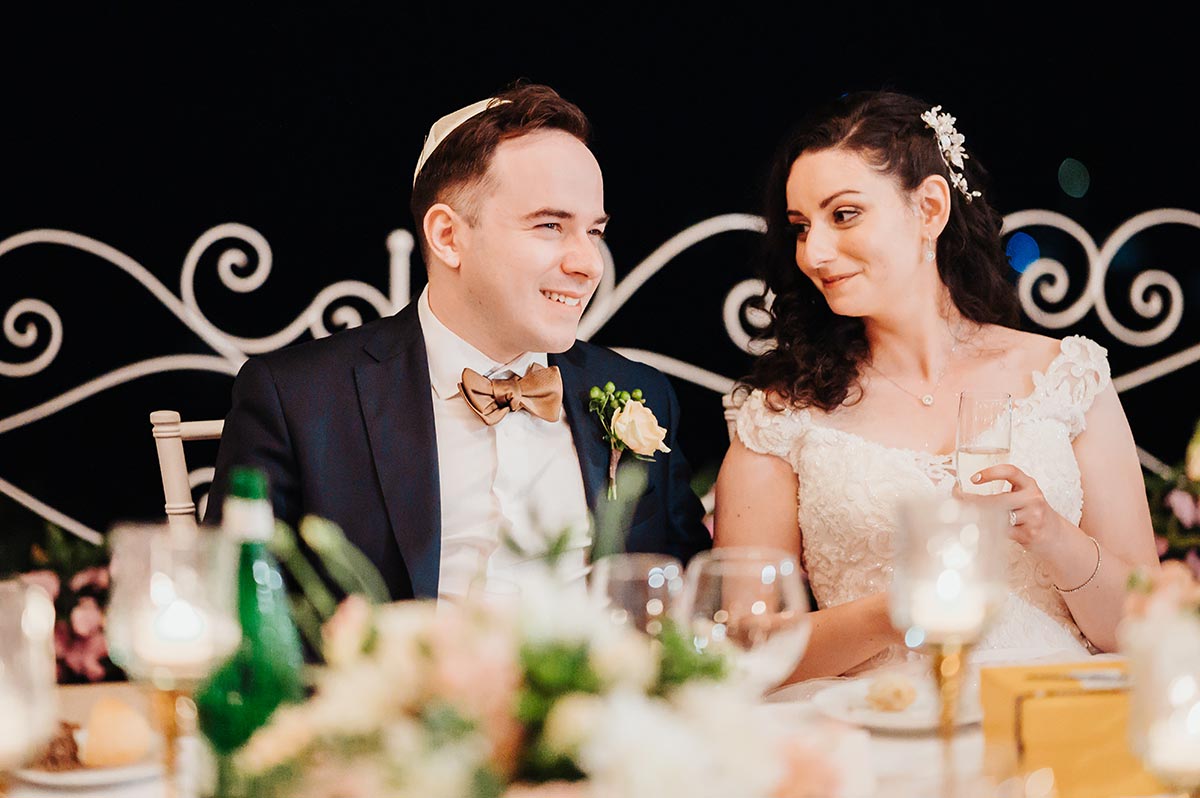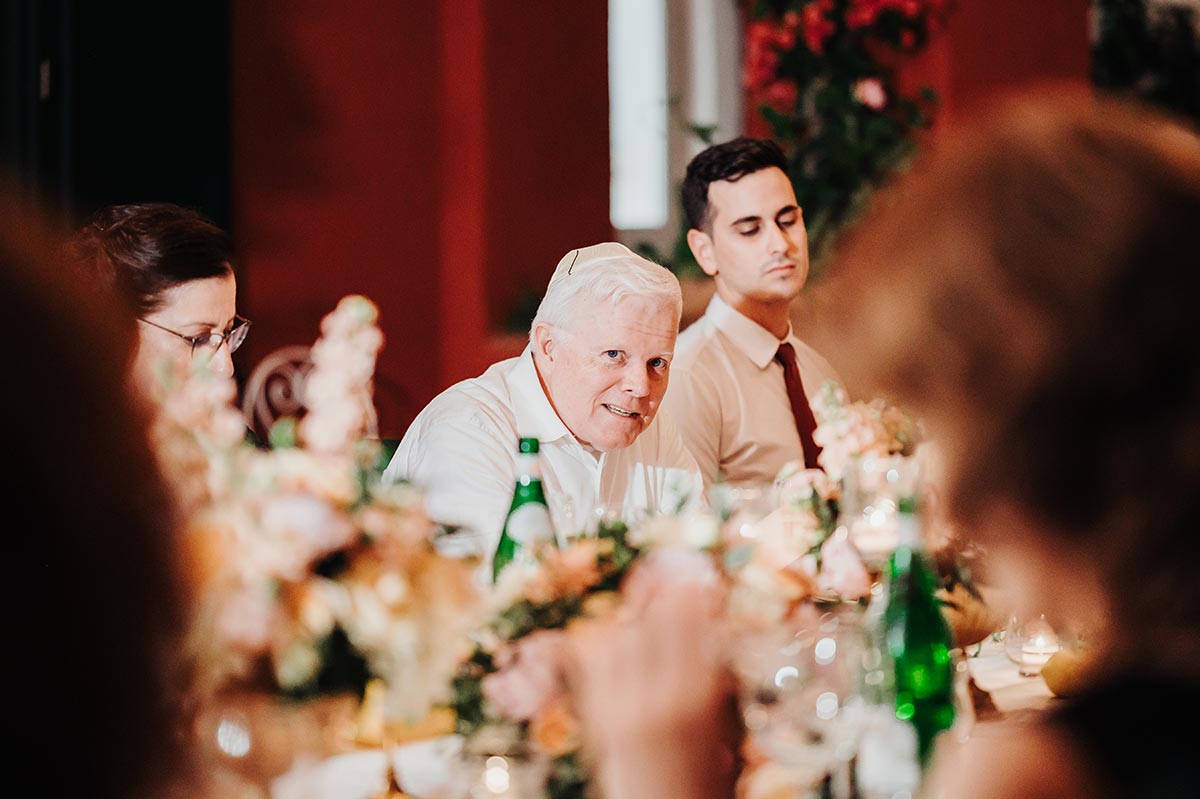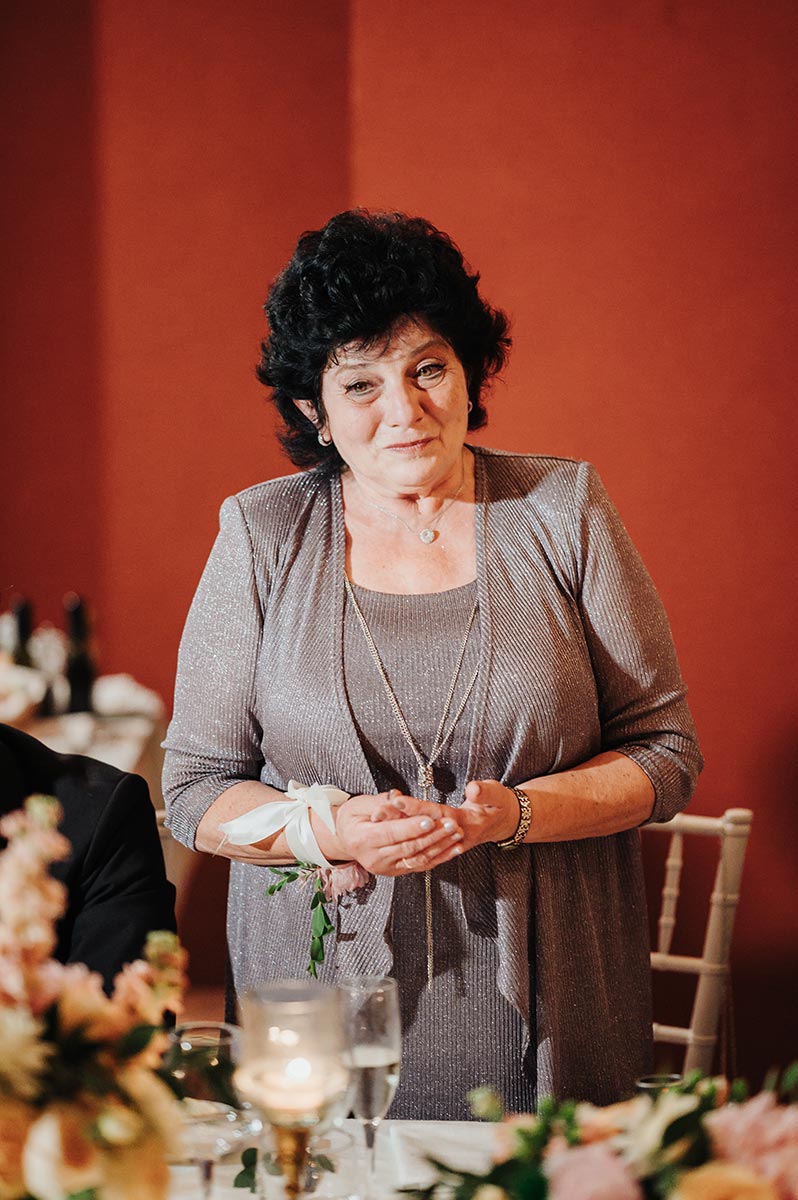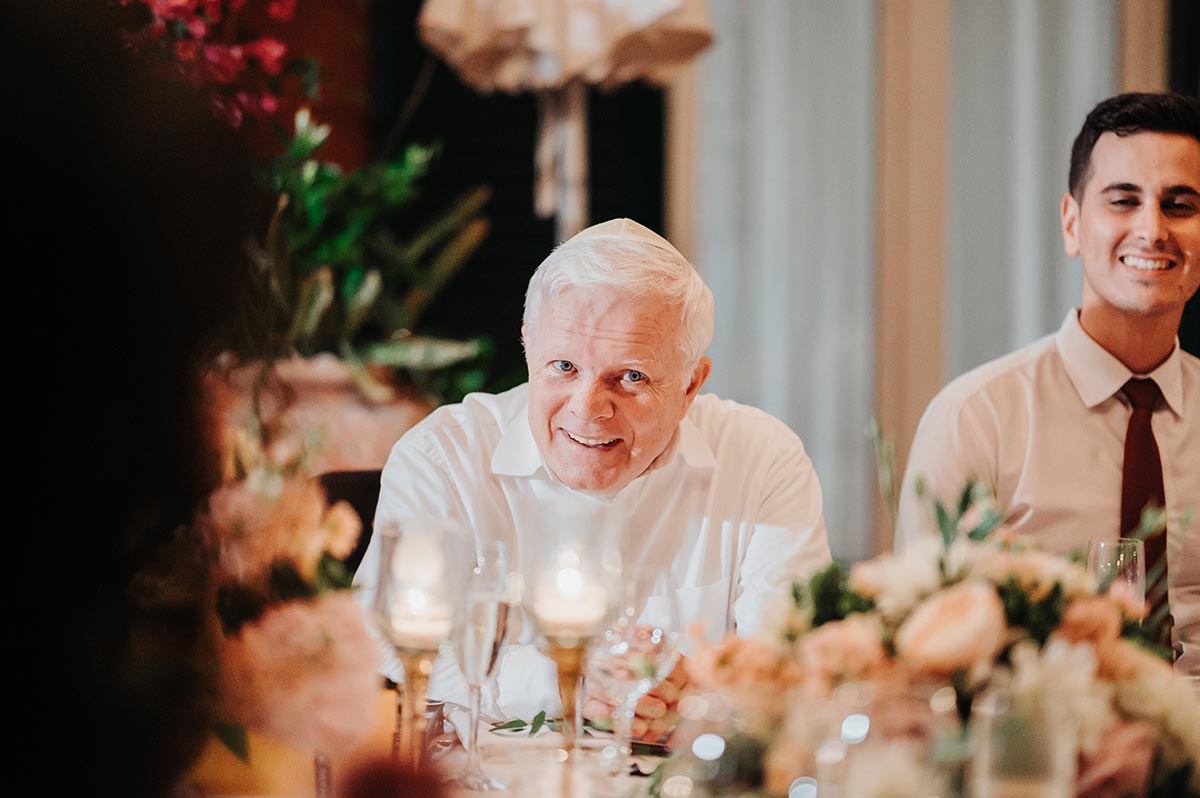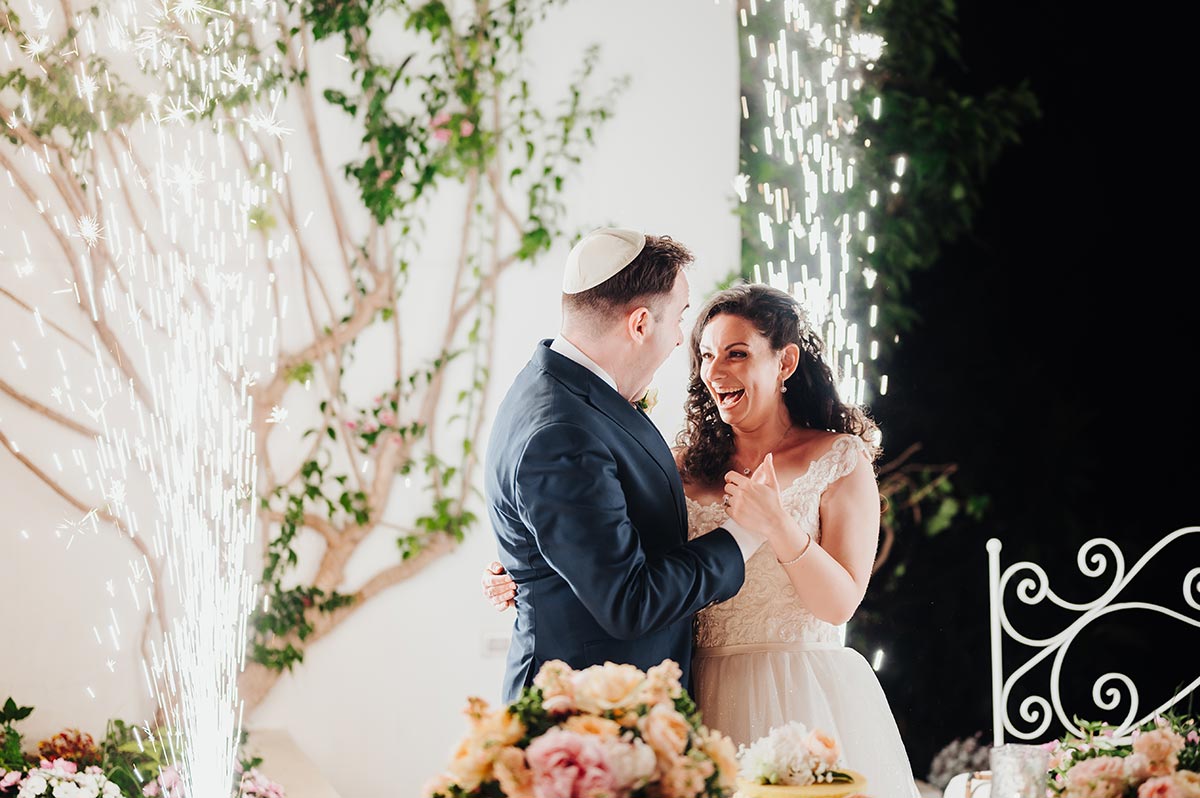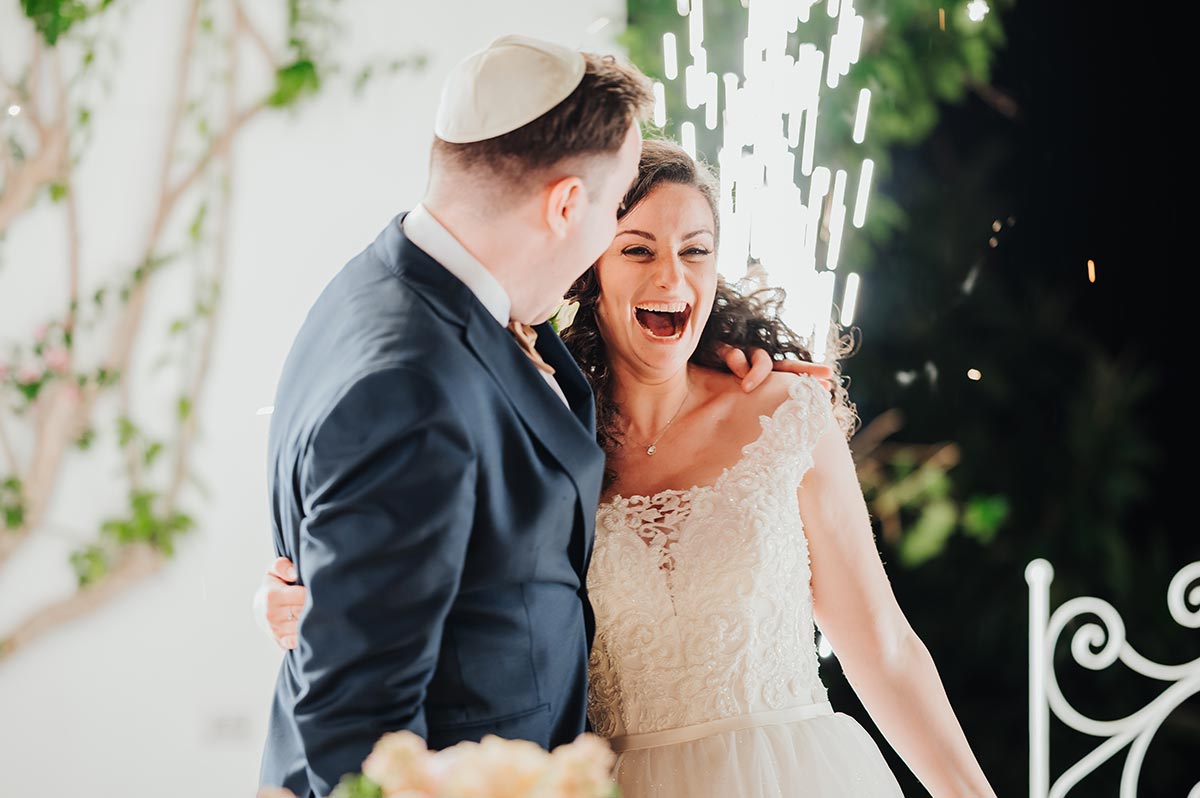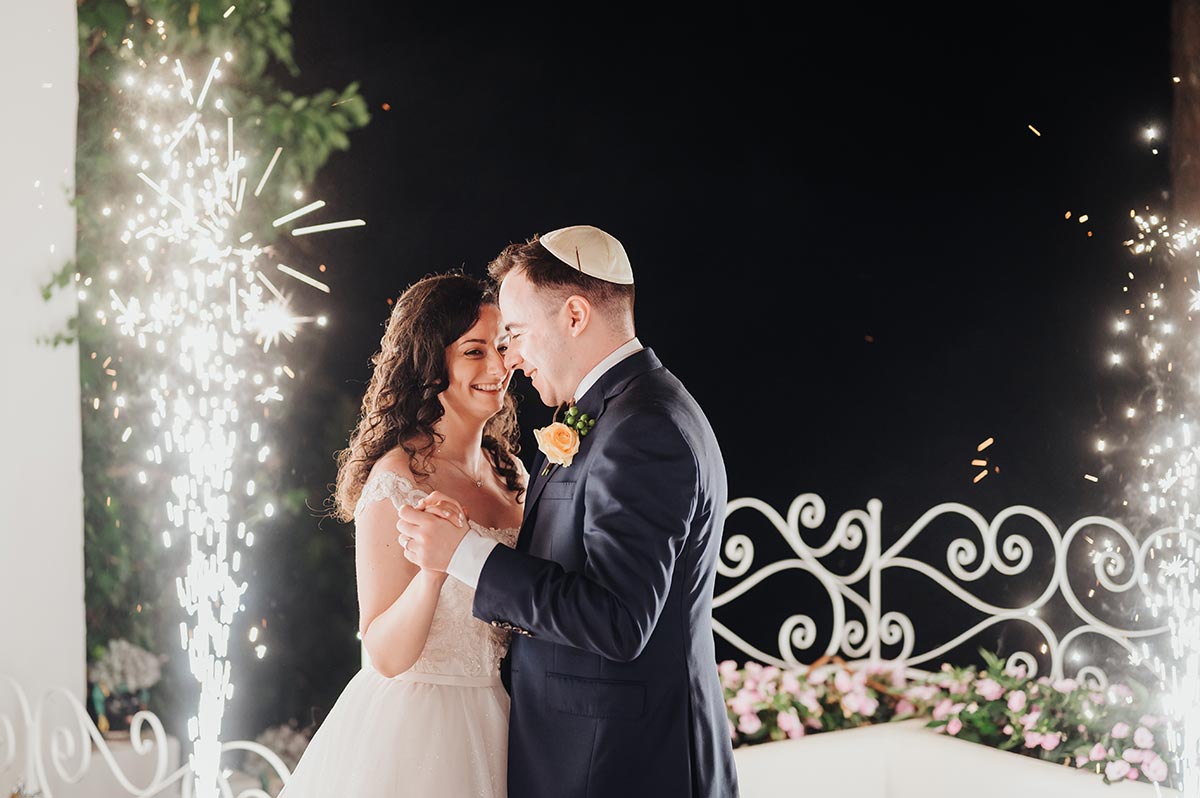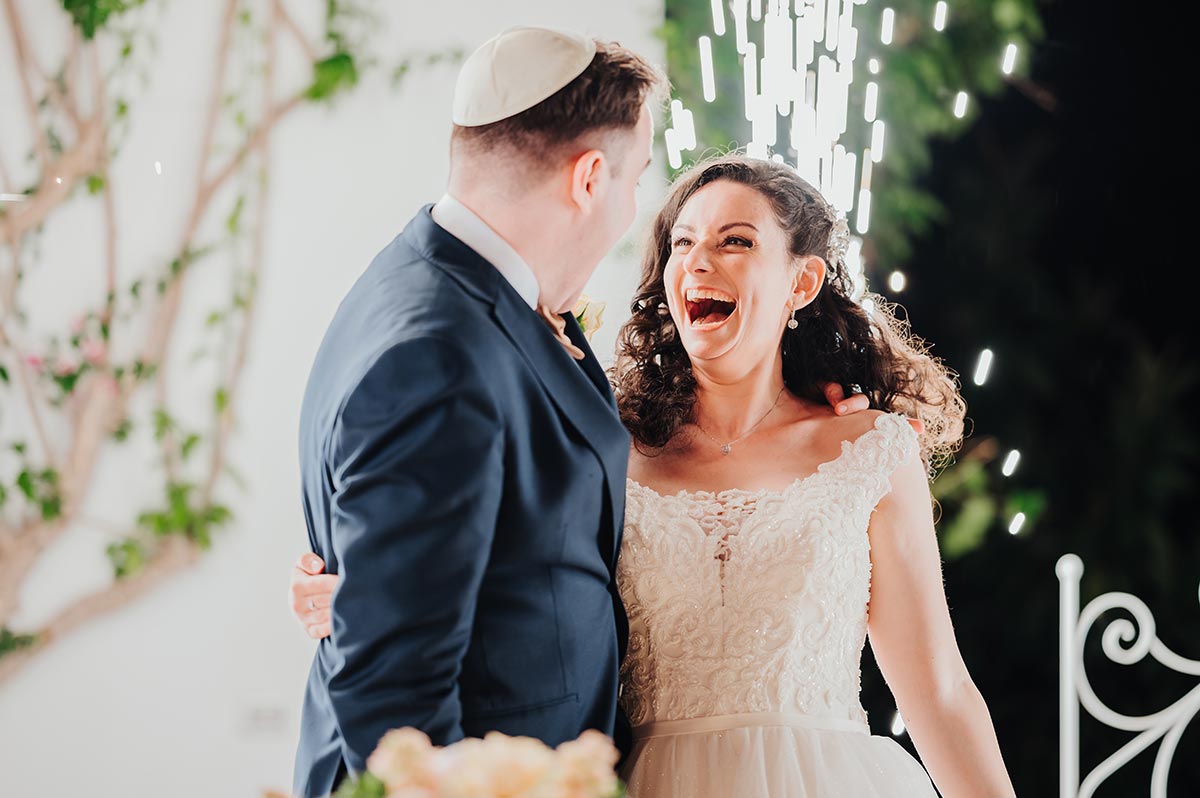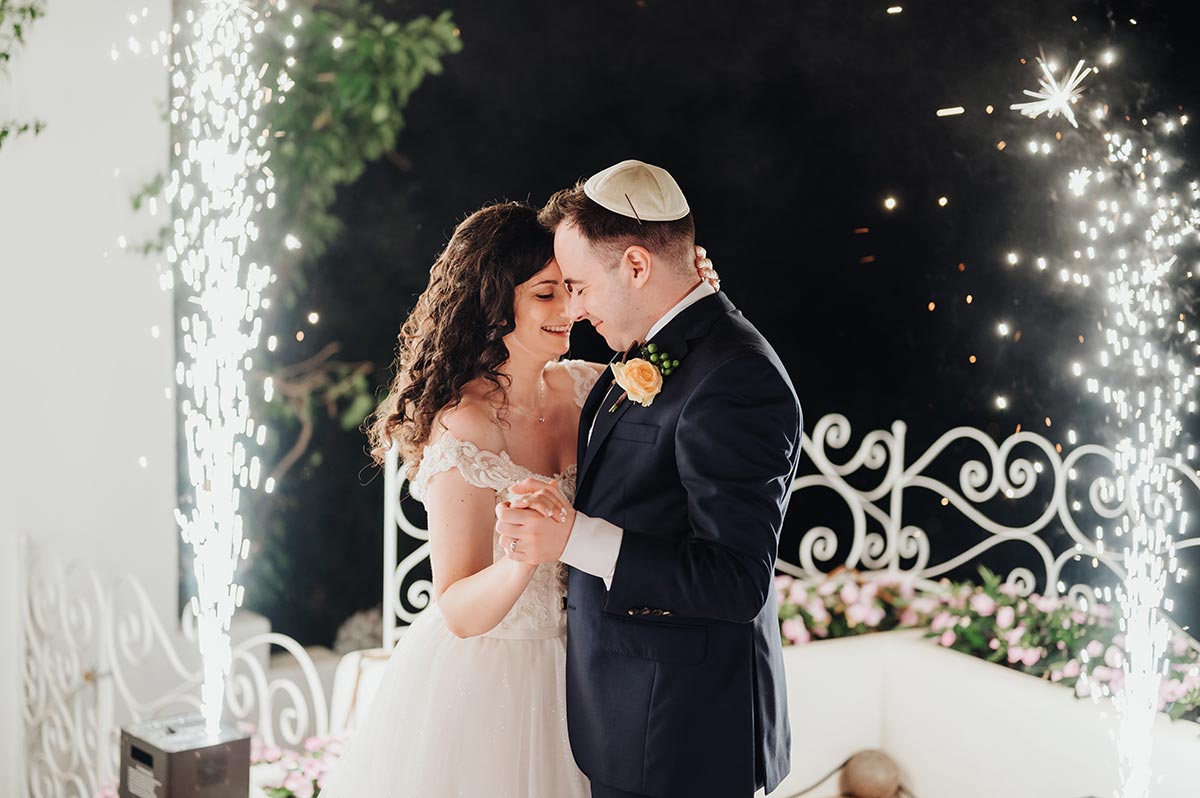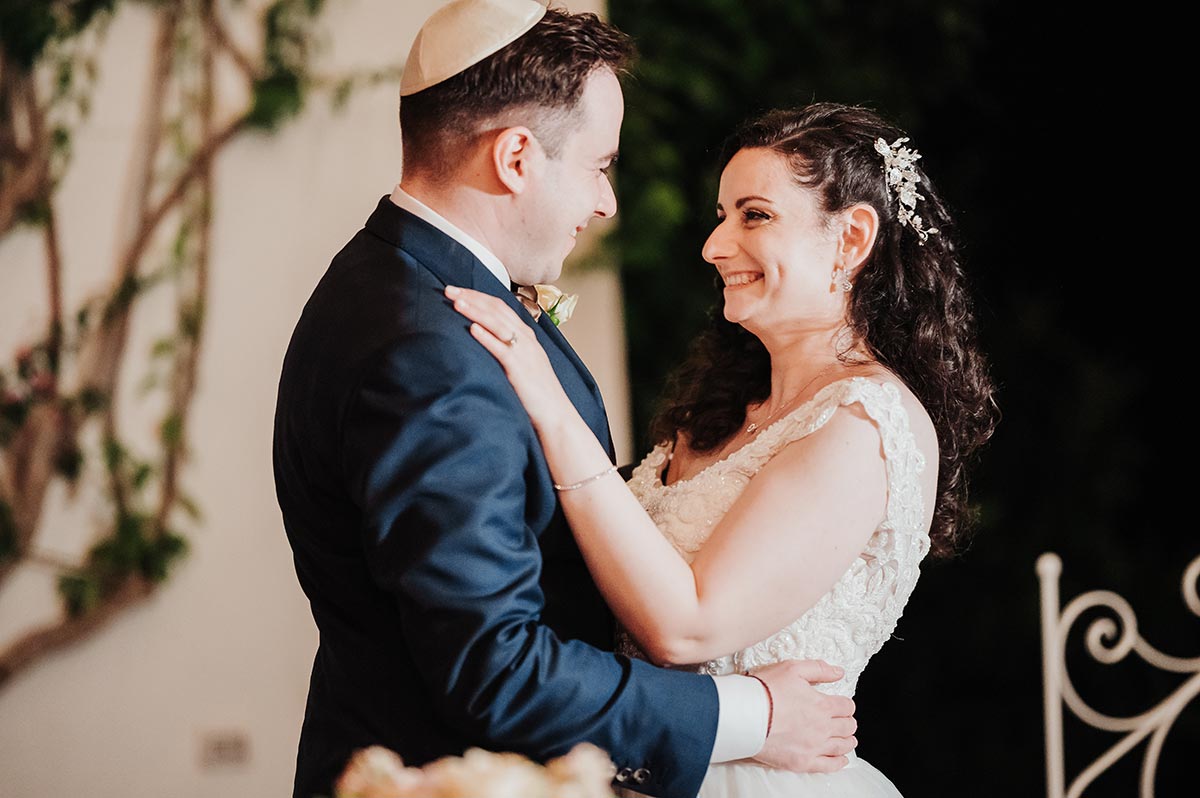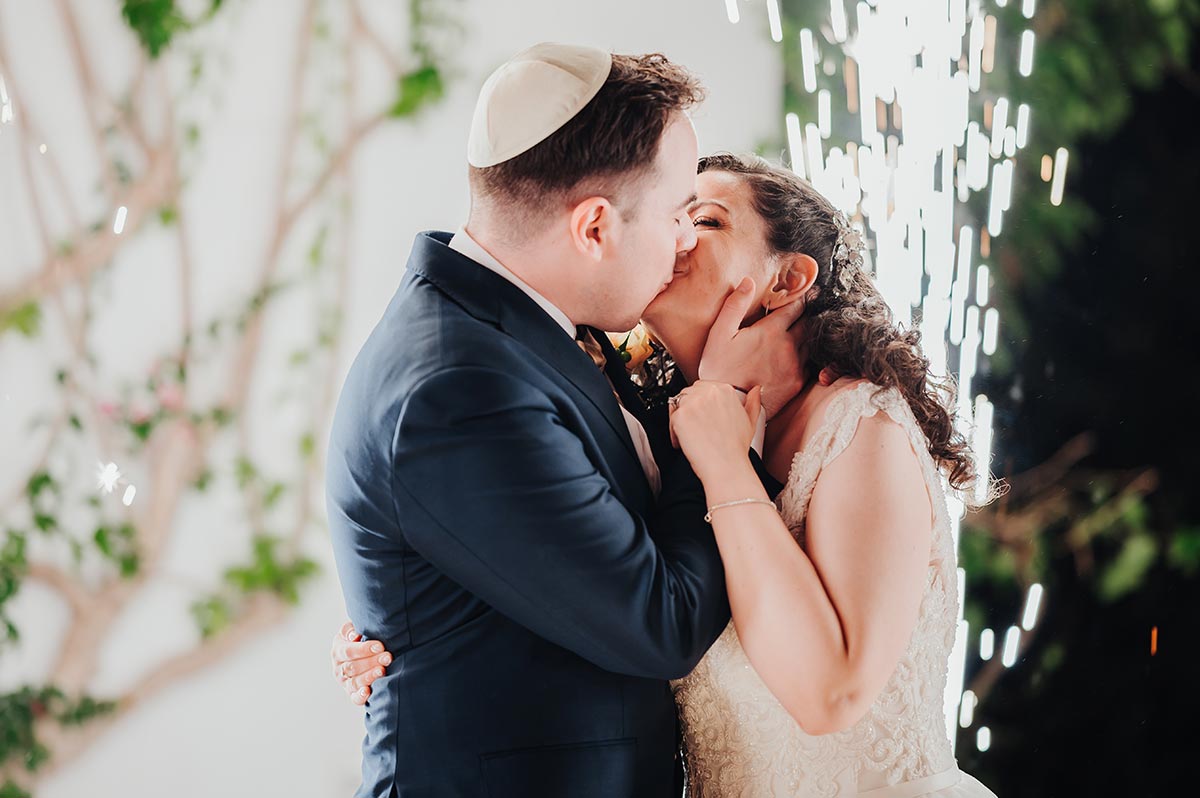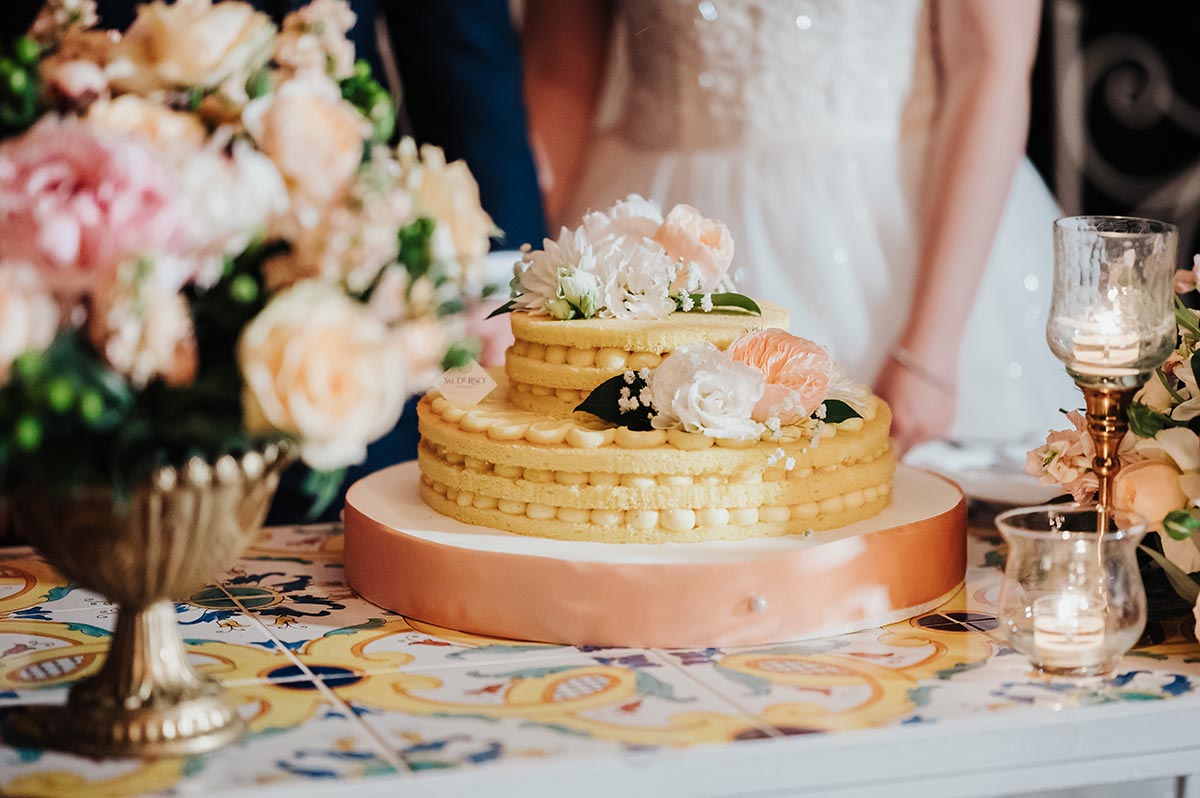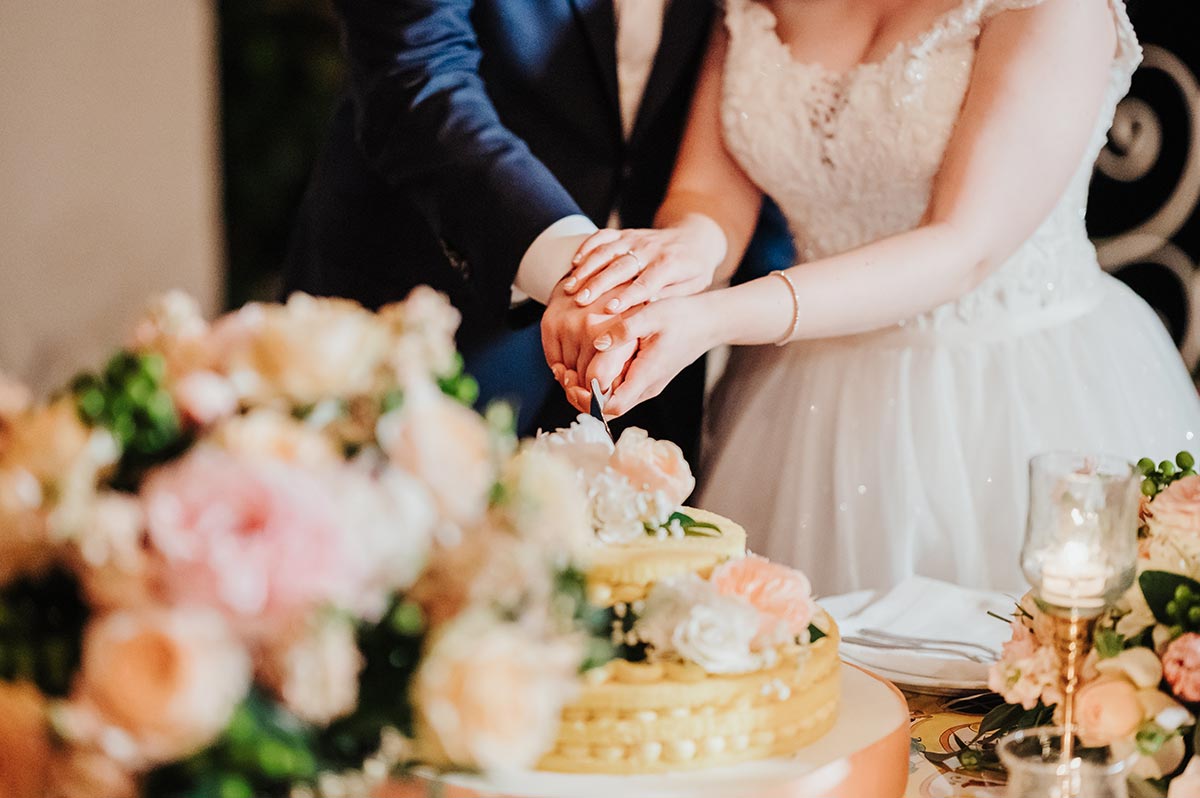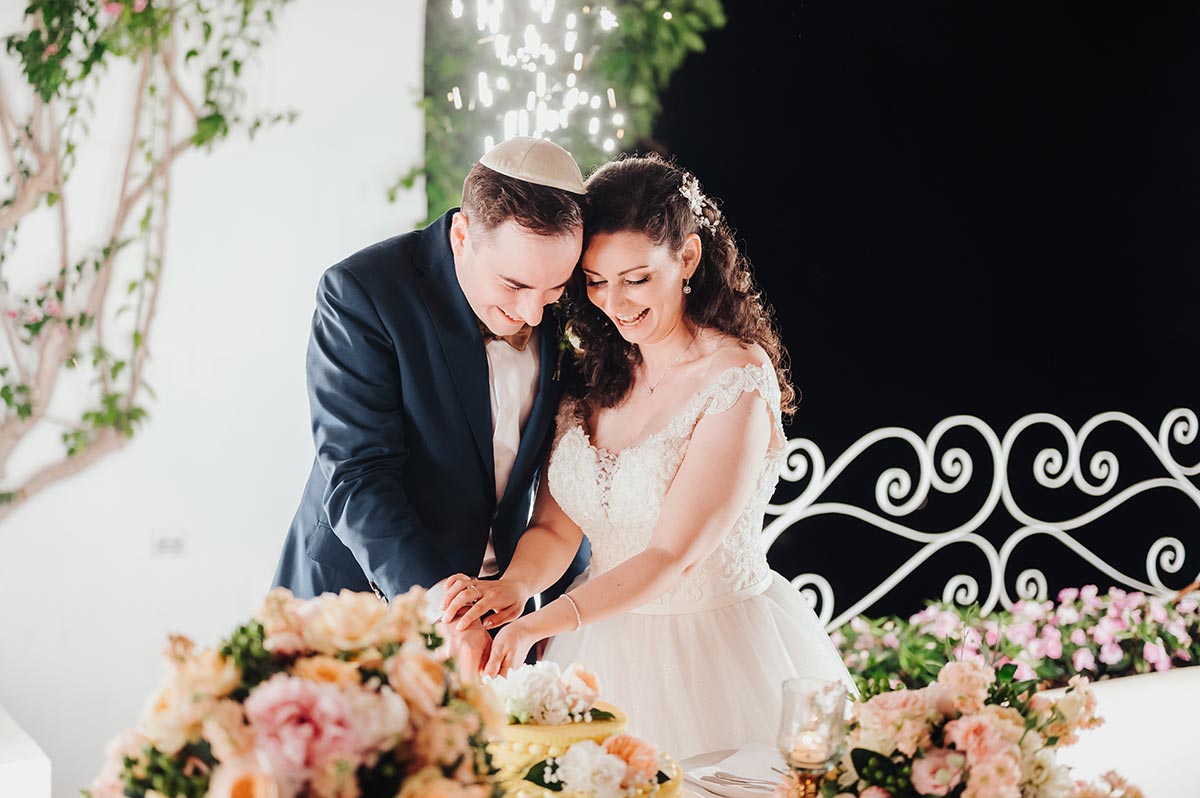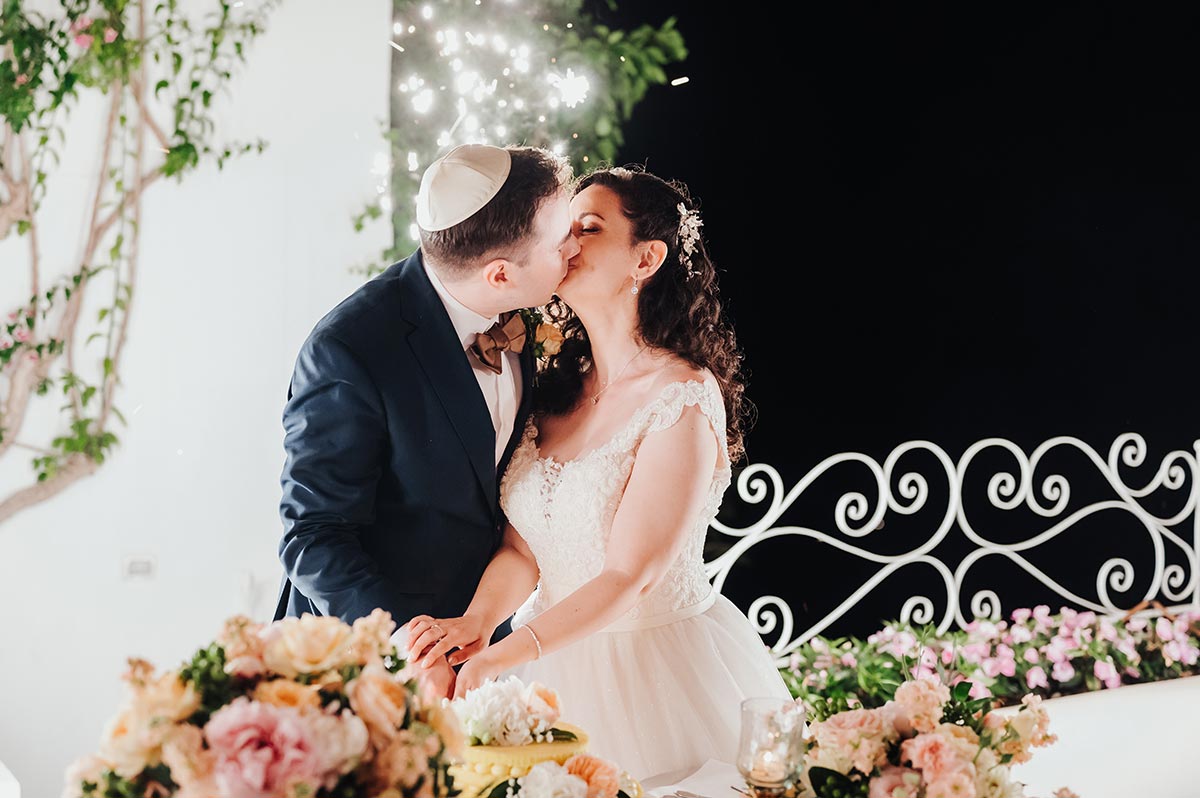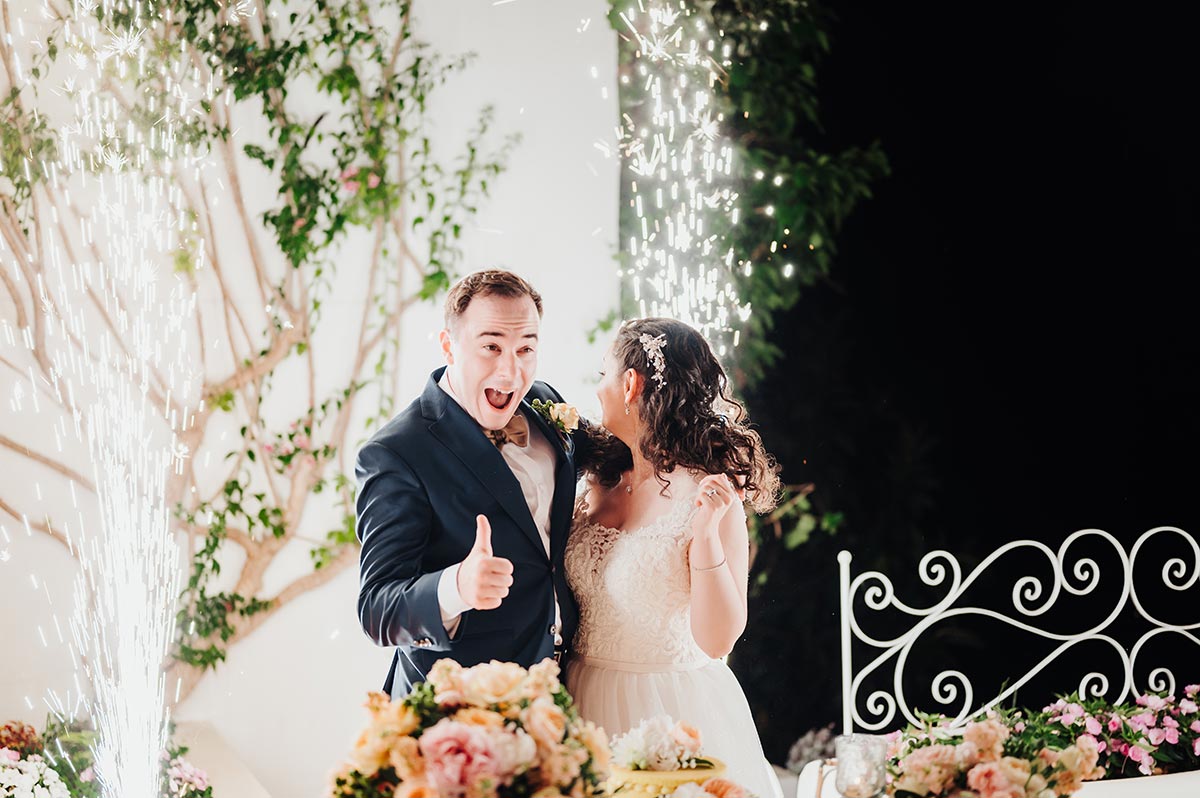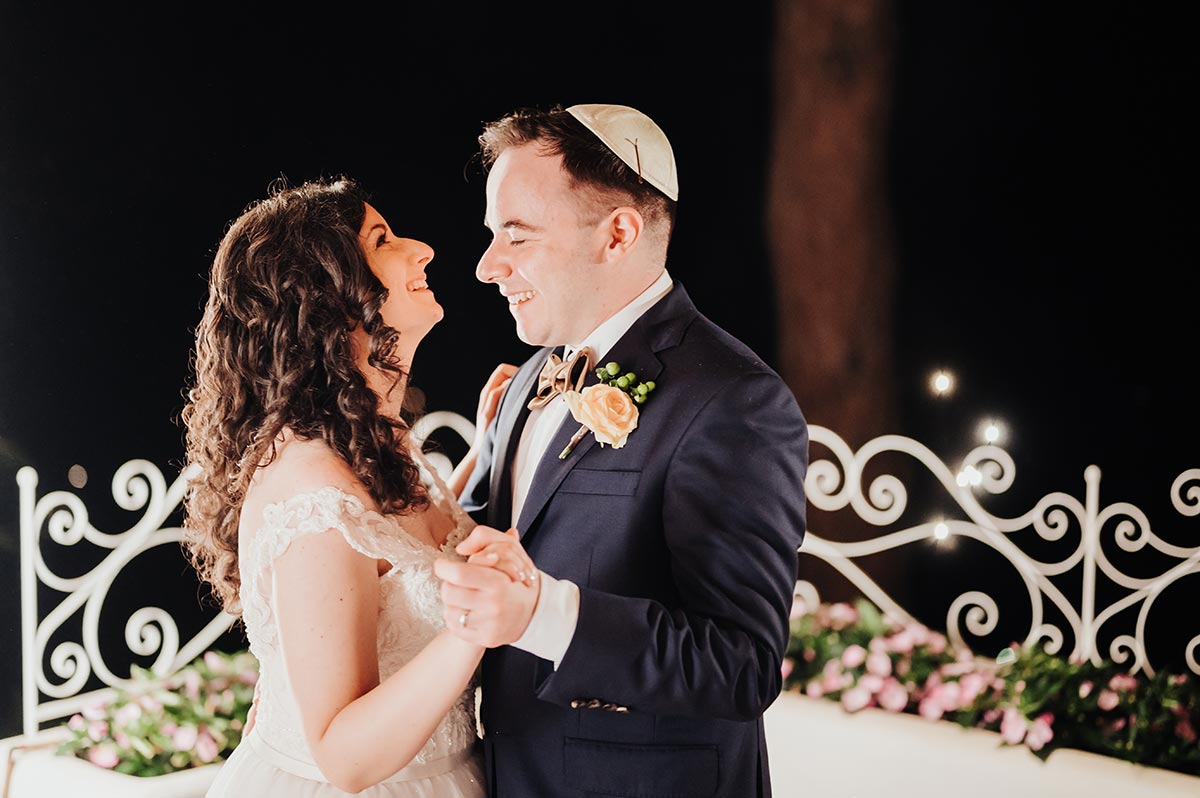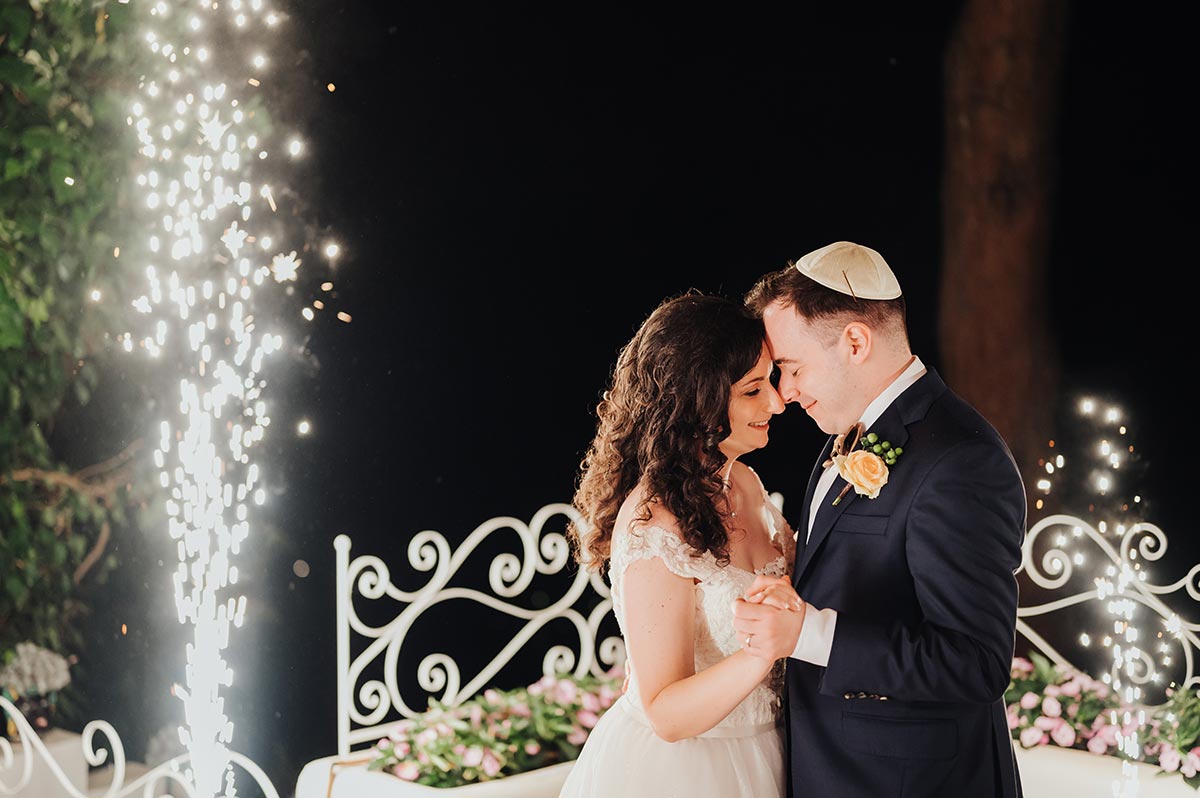Are you planning to celebrate your Jewish wedding in Italy?
Celebrating a Jewish wedding in Italy has an indisputable charm: rich in symbolism, and its function is engaging and filled with customs, including rituals, songs, and litanies with a Middle Eastern flavor. The bride’s dress is strictly white, while the groom can wear a “Kittel” o “Tallìt,” the normal blue-striped white tallit.
For a truly luxurious experience, a Jewish destination wedding in Italy can maintain the Italian touch and Jewish traditions in various aspects of the wedding: florists and designers can ideate a customized Huppah, artisans can create handmade Ketubah, and above all, kosher catering, which will serve delicious dishes of Italian and kosher wines. As Jewish wedding photographers as well as destination wedding photographers, we strongly suggest Italy as your wedding destination.
Requirements for the Jewish wedding ceremony
First, it is necessary to shed light on some determining factors about the Jewish wedding ceremony: the Jewish religion does not provide for the wedding of two people who do not profess the same creed. Therefore, it is forbidden by Jewish law and has no validity, although some rabbis may celebrate it equally.
In the Jewish rite, it is customary for a non-Jewish spouse to first undergo a conversion before celebrating a Jewish wedding in Italy. This is to ensure that the Jewish commitment of both spouses is not interrupted.
Furthermore, Jewish weddings in Italy must not be celebrated on Shabbat, from sunset on Friday to sundown on Saturday, nor on religious holidays, Passover, or the last three weeks of summer.
Once the date of Jewish marriage in Italy has been fixed and the publications made, which will not be posted on Saturday or other Jewish holidays, the spouses will deliver specific documents to the Rabbinical Office to draw up the Ketubah. This marriage contract will be blessed and signed during the Jewish wedding ceremony.
Then the bride can make arrangements to carry out the ritual bath, the Tevilah, which will be held in the Mikveh, a tub containing spring water or rainwater, a symbol of rebirth in a new life, that of marriage.
The Jewish wedding ceremony: customs and rites
In the Jewish wedding in Italy – before the wedding ceremony begins – the groom goes to the bride’s room to see her before she covers her face with the veil. This tradition is based on the biblical episode of the patriarch Jacob who married the wrong woman because her face was covered with a blanket.
The ceremony takes place under a fabric canopy, Chuppah or Huppah, a symbol of the couple’s future home, and is celebrated in front of a rabbi. A canopy consisting of a cloth and four poles, the fabric can be white or red with gold edging and also adorned with some element of the bride’s bouquet. The Rabbi, the groom, the male relatives, and the bride are the first to arrive under the Huppah.
Those who prefer to celebrate Jewish weddings in Italy at the synagogue can do it without any problem. It can also be celebrated outside, like in a villa’s private garden.
The key moments of a Jewish wedding in Italy
The Rabbi begins by blessing a glass of wine given to the couple’s parents to be given to their respective children. The exchange of the rings is not strictly Jewish, but before reading the Ketubah, the groom provides the celebrating Rabbi with the ring he intends to give to the bride. A simple call in yellow gold symbolizes the beauty of a balanced marriage, the eternal bond of love that unites the couple, and the protection the bride will receive from her husband.
The Ketubah is then read by the Rabbi and signed by the couple: a document that records the financial obligations assumed by the husband towards his wife on occasion and during their marriage, charges deriving from Jewish law. Finally, the Rabbi recites, on a second chalice, the seven blessings that will protect Jewish weddings in Italy.
The chalice is an essential element of traditional Jewish weddings. During the ceremony, the bride and groom drink from the chalice and then place it on the ground. The groom then breaks the chalice by stomping on it, which is meant to commemorate the temple’s destruction in Jerusalem. Some believe this ritual is intended to drive away demonic spirits. According to popular belief, if the groom fails to break the chalice on the first attempt, his wife will dominate him. This ritual is integral to many traditional Jewish weddings and is often incorporated into modern ceremonies.
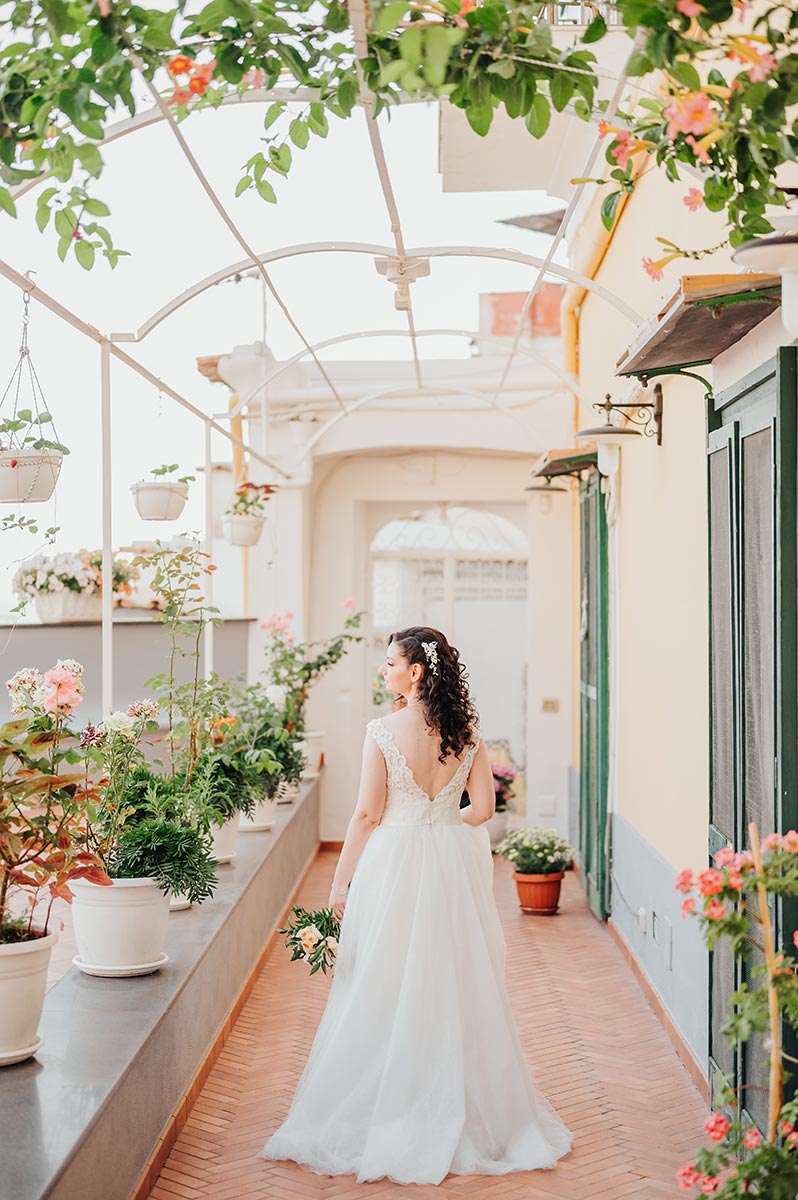
The celebrations of a Jewish wedding in Italy
At the end of the Jewish wedding ceremony, the couple remains alone for the “Yichud” ritual, which consists of consuming a typical consommé together in a private room. Then, when the bride and groom are ready, the reception will begin.
The banquet begins with the blessing of the Challah, the traditional woven bread, symbolizing the union of families: at this point, the spouses will only have to celebrate their most beautiful day with relatives and friends, with good food and traditional dancing. A crucial aspect of a Jewish destination wedding is the dances that take place throughout the reception: it is customary for guests to dance in front of the seated couple and entertain them.
The “Hora,” one of the most important Jewish wedding traditions, is a merry dance that usually takes place immediately after the bride and groom enter the dinner venue or after the first dance. As traditional Jewish music plays, guests dance in a circle, and the couple is seated on chairs and suspended in the air, where they can hold either side of a handkerchief or cloth napkin. As the best wedding photographer in Italy and wedding videographers, we love this part of the reception!
Location for the Jewish destination wedding in Italy
Italy is the perfect country for Jewish destination weddings as Florence, Venice, and Rome all have striking synagogues and rich historical pasts. As a Jewish wedding photographer in Italy, among the most popular for the area of Rome, we suggest Villa Miani, followed by the Salone delle Fontane, the Casale Dei Pini, the Odelscalchi Castle of Bracciano, and Villa Aurelia. For Northern Italy, we find Villa Erba on Lake Como, Villa Castelbarco in Vaprio d’Adda, the Regina Palace in Stresa on Lake Maggiore.
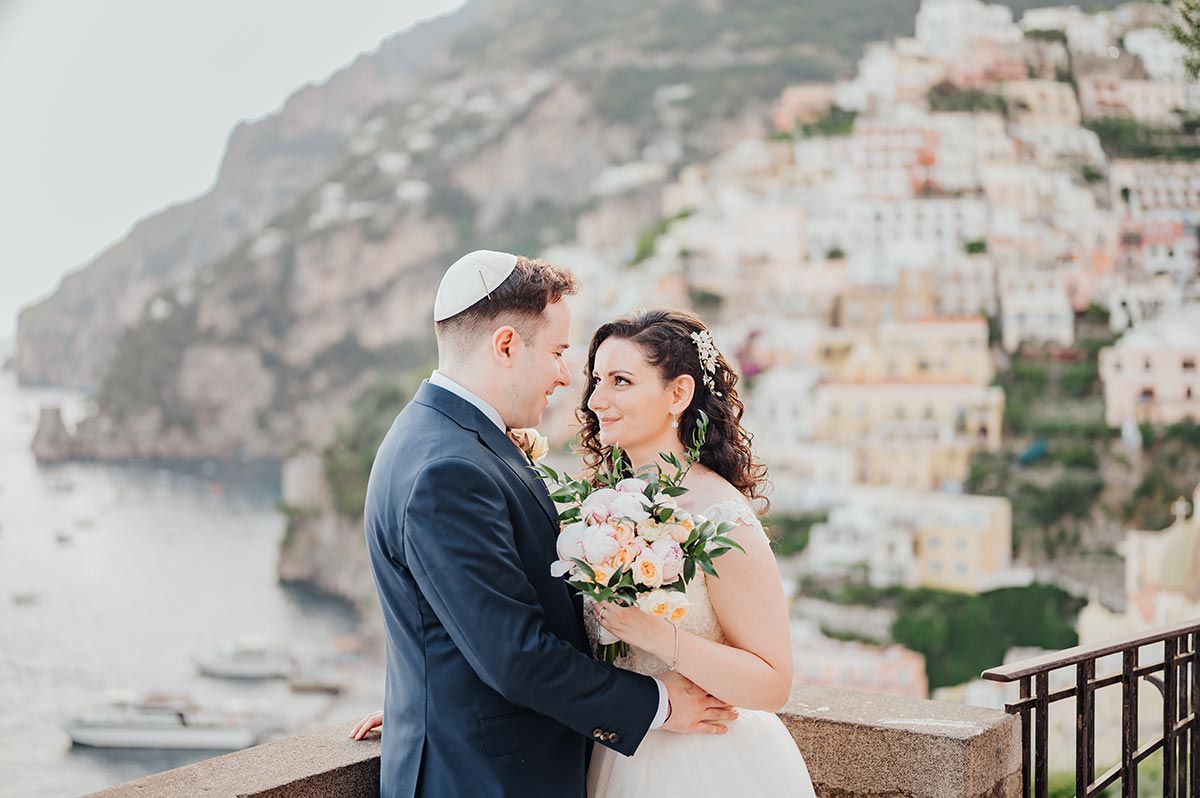
It is also possible to say the fateful yes under a chuppah in one of the beautiful private locations with breathtaking views such as Ravello, secret gardens, impressive halls, or Italian Castles, which can be found all over Italy.
Civil validity of Jewish marriage in Italy
An Italian Jewish wedding sees the civil effects of this majestic religious ceremony regularly recognized, as Judaism is one of the religions that has achieved agreements with the Italian state. The Rabbi of the synagogue of belonging, or the one chosen to celebrate the Jewish wedding in Italy, takes care of the bureaucratic part before the wedding.
From the bride’s exquisite dress to the groom’s perfectly tailored suit, from the gorgeous ceremony to the delicious food served at the reception—every detail of every Jewish wedding in Italy is carefully planned and executed with an eye for beauty and style.
One of the essential elements of any wedding is the venue. For Jewish weddings in Italy, that means choosing between historic synagogues or outdoor locations like castles, gardens, and vineyards. While some people prefer traditional settings for their weddings, others enjoy exploring new sites and creating something unique.
When choosing your venue, you’ll want to think about what sort of vibe you’re looking for: Are you looking for a space that feels intimate or grand? Is your wedding supposed to be small or large? Do you want guests to feel like they’re sitting inside or outside? Do you want them to feel like they’re in nature? Or do you want them to have fun?
Once you’ve decided on your venue choice, it’s time to focus on decorations! Traditional Jewish weddings feature beautiful flowers and candles—or even just one single candle (which can be placed on top of a candelabrum).
The Jewish wedding in Italy is a rich and beautiful tradition preserved for generations. It is an event you will always remember, so it is essential to know what to expect and how to prepare for it.
The first step in planning your wedding is choosing the date. Traditionally, this date should be set at least six months from when the ceremony will take place. This allows enough time for both families to prepare for the event but not too much time that you may forget important details.
The next step is to select who will perform the ceremony and plan out what will happen during each part of the celebration. Depending on your budget and personal preferences, there are many options available, including rabbis or other religious leaders who work in Italy or friends or family members who are willing to do it as a favor (which can be cheaper). Once you’ve made these decisions, it’s time to start thinking about decorations! You’ll want something simple but elegant that represents both families equally without being over-the-top or tacky.
When you think of Italy, you probably picture a romantic getaway with your significant other or a family vacation in one of the gorgeous countries in the world. But did you know Jewish weddings are also a big deal in Italy?
There’s a lot to love about Jewish weddings in Italy. First of all, if you’re planning on getting married, it’s much easier for you and your partner to go through conversion before moving there. That way, it’s as simple as possible regarding getting married. If you convert before moving to Italy and then decide to get married there later on down the road (assuming your conversion was done correctly), it’s even possible for your non-Jewish partner to convert as well!
It’s also worth noting that there are many types of Jewish weddings available for couples who would like them, everything from traditional ceremonies performed by rabbis to more modern ones with friends taking part in some way or another (like reading passages from scripture or other pieces). So while some people might not see this kind of thing as “romantic,” it’s still worth considering! You never know what kind of experience might be right.
The Jewish community in Italy has been around for centuries, and so have their weddings.
Italian Jews have a rich wedding ceremony tradition that includes many elements of Italian culture. The wedding ceremony is usually set in a synagogue and features an Italian rabbi officiating it. The bridegroom wears a Kittel (a white robe with fringes) over his clothing and carries a tallit (prayer shawl) over his shoulders while he walks to the wedding canopy, which is called a huppah. The Huppah symbolizes the home the bride and groom will create together as husband and wife.
The bride typically wears an elegant dress with a veil covering her face until she enters the Huppah, where she becomes unveiled (there are some customs where she remains veiled throughout most of the ceremony). In some cases, the bride and groom wear crowns made of olive branches or other greenery woven into their hair.
As for what happens at these weddings? Well, it depends on how old-fashioned you want to get! Usually, there’s dancing after dinner—and lots of it!
Jewish weddings in Italy
Jewish weddings in Italy are an exceptional kind of celebration. They are an occasion for families to gather and celebrate their union and an opportunity for the couple to choose the elements that make up their ceremony.
In addition to the traditional Jewish ceremony, which includes blessings and prayers, Italian cultural elements are incorporated into these celebrations.
The most common of these is the wedding ring exchange. In Italy, it is customary for the bride and groom to exchange rings at their wedding rather than during the ceremony itself.
This tradition has its roots in ancient times when it was believed that wearing a ring would protect against evil spirits.
Another common element of Jewish weddings in Italy is food! Many couples like to incorporate Italian foods into their reception menus as they believe this will bring good luck to them on their journey together as husband and wife. Some examples of common foods include pizza (of course!), pasta dishes like lasagna or ravioli, and gelato for dessert!
Finally, all Jewish couples can agree on how important family is! It’s no surprise that many couples choose to have their ceremonies at home rather than a synagogue or other public venue where friends can attend without having any connection whatsoever with either.

